1476 papers:
 CASE-2015-AmriBARF #multi #robust #using
CASE-2015-AmriBARF #multi #robust #using- Robust indoor location tracking of multiple inhabitants using only binary sensors (MHA, YB, DA, NR, MF), pp. 194–199.
 CASE-2015-DamesK #automation #detection #locality #multi #smarttech
CASE-2015-DamesK #automation #detection #locality #multi #smarttech- Automated detection, localization, and registration of smart devices with multiple robots (PD, VK), pp. 564–571.
 CASE-2015-LiaoHJ #multi
CASE-2015-LiaoHJ #multi- Numerical testbed of a multiple-chiller plant for centralized HVAC systems (YL, GH, QsJ), pp. 699–701.
 CASE-2015-ParisioWKEJ #energy #multi
CASE-2015-ParisioWKEJ #energy #multi- An MPC-based Energy Management System for multiple residential microgrids (AP, CW, TK, JE, KHJ), pp. 7–14.
 CASE-2015-TorresP #multi #using
CASE-2015-TorresP #multi #using- Cooperative control of multiple untethered magnetic microrobots using a single magnetic field source (NAT, DOP), pp. 1608–1613.
 CASE-2015-YuYS #multi
CASE-2015-YuYS #multi- Motion planning and manipulation of multiple nanowires simultaneouly under electric-fields in fluid suspension (KY, JY, JS), pp. 489–494.
 CASE-2015-ZonEHJVSB #detection #multi #realtime #using
CASE-2015-ZonEHJVSB #detection #multi #realtime #using- Real-time collision detection for multiple packaging robots using monotonicity of configuration subspaces (RvZ, DE, DH, IJ, RV, RIS, KB), pp. 1638–1643.
 DAC-2015-JungC #embedded #multi #named #performance #simulation
DAC-2015-JungC #embedded #multi #named #performance #simulation- ΣVP: host-GPU multiplexing for efficient simulation of multiple embedded GPUs on virtual platforms (YJ, LPC), p. 6.
 DAC-2015-PanLYXL #multi #question
DAC-2015-PanLYXL #multi #question- Pushing multiple patterning in sub-10nm: are we ready? (DZP, LL, BY, XX, YL), p. 6.
 DAC-2015-RoyLUP #multi #named #optimisation #paradigm #performance
DAC-2015-RoyLUP #multi #named #optimisation #paradigm #performance- OSFA: a new paradigm of gate-sizing for power/performance optimizations under multiple operating conditions (SR, DL, JU, DZP), p. 6.
 DATE-2015-BalboniFB #configuration management #distributed #latency #multi #network #scalability
DATE-2015-BalboniFB #configuration management #distributed #latency #multi #network #scalability- Synergistic use of multiple on-chip networks for ultra-low latency and scalable distributed routing reconfiguration (MB, JF, DB), pp. 806–811.
 DATE-2015-GorevUD #fault #parallel #simulation
DATE-2015-GorevUD #fault #parallel #simulation- Fault simulation with parallel exact critical path tracing in multiple core environment (MG, RU, SD), pp. 1180–1185.
 DATE-2015-KarageorgosSRRT #multi #variability
DATE-2015-KarageorgosSRRT #multi #variability- Impact of interconnect multiple-patterning variability on SRAMs (IK, MS, PR, JR, ZT, DV, RB, SS, WD), pp. 609–612.
 DATE-2015-LiXWNP #fine-grained #multi #power management #reduction #using
DATE-2015-LiXWNP #fine-grained #multi #power management #reduction #using- Leakage power reduction for deeply-scaled FinFET circuits operating in multiple voltage regimes using fine-grained gate-length biasing technique (JL, QX, YW, SN, MP), pp. 1579–1582.
 DATE-2015-RosenMH #architecture #implementation #multi #reliability
DATE-2015-RosenMH #architecture #implementation #multi #reliability- Semiautomatic implementation of a bioinspired reliable analog task distribution architecture for multiple analog cores (JvR, MM, LH), pp. 912–915.
 DATE-2015-SamieBHH #multi #online
DATE-2015-SamieBHH #multi #online- Online binding of applications to multiple clock domains in shared FPGA-based systems (FS, LB, CMH, JH), pp. 25–30.
 DATE-2015-YuSHEAB #library #multi #statistics #using
DATE-2015-YuSHEAB #library #multi #statistics #using- Statistical library characterization using belief propagation across multiple technology nodes (LY, SS, CH, IME, DAA, DSB), pp. 1383–1388.
 DocEng-2015-WalgerH #multi
DocEng-2015-WalgerH #multi- Hiding Information in Multiple Level-line Moirés (TW, RDH), pp. 21–24.
 DRR-2015-MiouletBCPB #architecture #multi #network #recognition
DRR-2015-MiouletBCPB #architecture #multi #network #recognition- Exploring multiple feature combination strategies with a recurrent neural network architecture for off-line handwriting recognition (LM, GB, CC, TP, SB).
 PODS-2015-GuchtWWZ #communication #complexity #distributed #matrix #multi
PODS-2015-GuchtWWZ #communication #complexity #distributed #matrix #multi- The Communication Complexity of Distributed Set-Joins with Applications to Matrix Multiplication (DVG, RW, DPW, QZ), pp. 199–212.
 PODS-2015-Ullman #linear #multi #query
PODS-2015-Ullman #linear #multi #query- Private Multiplicative Weights Beyond Linear Queries (JU), pp. 303–312.
 VLDB-2015-WandeltL #multi #named #string
VLDB-2015-WandeltL #multi #named #string- MRCSI: Compressing and Searching String Collections with Multiple References (SW, UL), pp. 461–472.
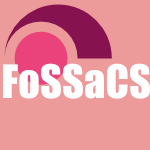 FoSSaCS-2015-KieferMW #automaton #multi
FoSSaCS-2015-KieferMW #automaton #multi- Minimisation of Multiplicity Tree Automata (SK, IM, JW), pp. 297–311.
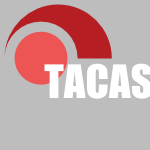 TACAS-2015-BassetKTW #game studies #multi #probability #synthesis
TACAS-2015-BassetKTW #game studies #multi #probability #synthesis- Strategy Synthesis for Stochastic Games with Multiple Long-Run Objectives (NB, MZK, UT, CW), pp. 256–271.
 TACAS-2015-BrazdilCFK #multi #named #synthesis
TACAS-2015-BrazdilCFK #multi #named #synthesis- MultiGain: A Controller Synthesis Tool for MDPs with Multiple Mean-Payoff Objectives (TB, KC, VF, AK), pp. 181–187.
 SCAM-2015-PintoKT #analysis #automation #multi #performance
SCAM-2015-PintoKT #analysis #automation #multi #performance- Automating the performance deviation analysis for multiple system releases: An evolutionary study (FP, UK, CT), pp. 201–210.
 PLDI-2015-Sidiroglou-Douskos #automation #fault #multi
PLDI-2015-Sidiroglou-Douskos #automation #fault #multi- Automatic error elimination by horizontal code transfer across multiple applications (SSD, EL, FL, MR), pp. 43–54.
 STOC-2015-AmbainisFG #matrix #multi #performance
STOC-2015-AmbainisFG #matrix #multi #performance- Fast Matrix Multiplication: Limitations of the Coppersmith-Winograd Method (AA, YF, FLG), pp. 585–593.
 STOC-2015-HenzingerKNS #multi #online #problem
STOC-2015-HenzingerKNS #multi #online #problem- Unifying and Strengthening Hardness for Dynamic Problems via the Online Matrix-Vector Multiplication Conjecture (MH, SK, DN, TS), pp. 21–30.
 STOC-2015-ZhuLO #matrix #multi
STOC-2015-ZhuLO #matrix #multi- Spectral Sparsification and Regret Minimization Beyond Matrix Multiplicative Updates (ZAZ, ZL, LO), pp. 237–245.
 ICALP-v1-2015-Yu #algorithm #combinator #matrix #multi
ICALP-v1-2015-Yu #algorithm #combinator #matrix #multi- An Improved Combinatorial Algorithm for Boolean Matrix Multiplication (HY), pp. 1094–1105.
 CHI-2015-Al-AmeenWS #multi #random #towards
CHI-2015-Al-AmeenWS #multi #random #towards- Towards Making Random Passwords Memorable: Leveraging Users’ Cognitive Ability Through Multiple Cues (MNAA, MKW, SS), pp. 2315–2324.
 CHI-2015-FleckCR #bound #multi #using
CHI-2015-FleckCR #bound #multi #using- Balancing Boundaries: Using Multiple Devices to Manage Work-Life Balance (RF, ALC, RAVR), pp. 3985–3988.
 CHI-2015-JokelaOO #multi #process
CHI-2015-JokelaOO #multi #process- A Diary Study on Combining Multiple Information Devices in Everyday Activities and Tasks (TJ, JO, TO), pp. 3903–3912.
 CHI-2015-PierceP #design #multi
CHI-2015-PierceP #design #multi- Making Multiple Uses of the Obscura 1C Digital Camera: Reflecting on the Design, Production, Packaging and Distribution of a Counterfunctional Device (JP, EP), pp. 2103–2112.
 CSCW-2015-FreitasD15a #detection #multi #using
CSCW-2015-FreitasD15a #detection #multi #using- Using Multiple Contexts to Detect and Form Opportunistic Groups (AAdF, AKD), pp. 1612–1621.
 CSCW-2015-LeeL #behaviour #comprehension #health #multi #social
CSCW-2015-LeeL #behaviour #comprehension #health #multi #social- Understanding the Roles and Influences of Mediators from Multiple Social Channels for Health Behavior Change (YL, YKL), pp. 1070–1079.
 HIMI-IKC-2015-MatsudaOHT #analysis #automation #generative #multi #problem #testing #using
HIMI-IKC-2015-MatsudaOHT #analysis #automation #generative #multi #problem #testing #using- Analysis of Multiple-Choice Tests Through Erroneous Choices Using a Technique of Automatic Problem Generation (NM, HO, TH, HT), pp. 362–369.
 SCSM-2015-PervinPDTT #hashtag #multi #twitter
SCSM-2015-PervinPDTT #hashtag #multi #twitter- Hashtag Popularity on Twitter: Analyzing Co-occurrence of Multiple Hashtags (NP, TQP, AD, HT, FT), pp. 169–182.
 SCSM-2015-PriceMMGBA #multi #named
SCSM-2015-PriceMMGBA #multi #named- Inter-Social-Networking: Accounting for Multiple Identities (DP, DM, RM, CG, MAB, SA), pp. 242–252.
 ECIR-2015-TsaiKH #approximate #distance #multi #probability
ECIR-2015-TsaiKH #approximate #distance #multi #probability- Approximating Weighted Hamming Distance by Probabilistic Selection for Multiple Hash Tables (CYT, YHK, WHH), pp. 123–134.
 ICML-2015-AmidU #learning #multi
ICML-2015-AmidU #learning #multi- Multiview Triplet Embedding: Learning Attributes in Multiple Maps (EA, AU), pp. 1472–1480.
 ICML-2015-CilibertoMPR #learning #multi
ICML-2015-CilibertoMPR #learning #multi- Convex Learning of Multiple Tasks and their Structure (CC, YM, TAP, LR), pp. 1548–1557.
 ICML-2015-KomiyamaHN #analysis #multi #probability #problem
ICML-2015-KomiyamaHN #analysis #multi #probability #problem- Optimal Regret Analysis of Thompson Sampling in Stochastic Multi-armed Bandit Problem with Multiple Plays (JK, JH, HN), pp. 1152–1161.
 ICML-2015-MaeharaYK #game studies #multi #perspective #problem
ICML-2015-MaeharaYK #game studies #multi #perspective #problem- Budget Allocation Problem with Multiple Advertisers: A Game Theoretic View (TM, AY, KiK), pp. 428–437.
 ICML-2015-RajanHSFJ #locality #multi
ICML-2015-RajanHSFJ #locality #multi- Bayesian Multiple Target Localization (PR, WH, RS, PIF, BJ), pp. 1945–1953.
 ICML-2015-WangY #learning #matrix #multi
ICML-2015-WangY #learning #matrix #multi- Safe Screening for Multi-Task Feature Learning with Multiple Data Matrices (JW, JY), pp. 1747–1756.
 KDD-2015-KuoWWCYD #graph #multi #segmentation
KDD-2015-KuoWWCYD #graph #multi #segmentation- Unified and Contrasting Cuts in Multiple Graphs: Application to Medical Imaging Segmentation (CTK, XW, PBW, OTC, JY, ID), pp. 617–626.
 KDD-2015-NoriKYII #modelling #multi #predict
KDD-2015-NoriKYII #modelling #multi #predict- Simultaneous Modeling of Multiple Diseases for Mortality Prediction in Acute Hospital Care (NN, HK, KY, HI, YI), pp. 855–864.
 KDD-2015-RaptiSTT #multi #network
KDD-2015-RaptiSTT #multi #network- Virus Propagation in Multiple Profile Networks (AR, SS, KT, GT), pp. 975–984.
 KDD-2015-YangH #learning #multi
KDD-2015-YangH #learning #multi- Model Multiple Heterogeneity via Hierarchical Multi-Latent Space Learning (PY, JH), pp. 1375–1384.
 KDD-2015-YuW0PSIW #bound #markov #multi
KDD-2015-YuW0PSIW #bound #markov #multi- Tornado Forecasting with Multiple Markov Boundaries (KY, DW, WD, JP, DLS, SI, XW), pp. 2237–2246.
 SEKE-2015-XuB #multi #reliability #using
SEKE-2015-XuB #multi #reliability #using- A Reliable and Secure Cloud Storage Schema Using Multiple Service Providers (HX, DB), pp. 116–121.
 SIGIR-2015-Pal #multi
SIGIR-2015-Pal #multi- Discovering Experts across Multiple Domains (AP), pp. 923–926.
 SIGIR-2015-SongNZAC #learning #multi #network #predict #social #volunteer
SIGIR-2015-SongNZAC #learning #multi #network #predict #social #volunteer- Multiple Social Network Learning and Its Application in Volunteerism Tendency Prediction (XS, LN, LZ, MA, TSC), pp. 213–222.
 SAC-2015-BechetCCC #constraints #mining #multi #sequence
SAC-2015-BechetCCC #constraints #mining #multi #sequence- Sequence mining under multiple constraints (NB, PC, TC, BC), pp. 908–914.
 SAC-2015-GuedesBOX #clustering #graph #multi
SAC-2015-GuedesBOX #clustering #graph #multi- Exploring multiple clusterings in attributed graphs (GPG, EB, ESO, GX), pp. 915–918.
 SAC-2015-MainiS #communication #distributed #multi #using
SAC-2015-MainiS #communication #distributed #multi #using- Distributed task servicing using multiple robots with human-in-the-loop under limited communication range (PM, PBS), pp. 301–306.
 ICSE-v1-2015-YuBC #approach #fault #multi #testing
ICSE-v1-2015-YuBC #approach #fault #multi #testing- Does the Failing Test Execute a Single or Multiple Faults? An Approach to Classifying Failing Tests (ZY, CB, KYC), pp. 924–935.
 SPLC-2015-ChavarriagaRNCJ #case study #configuration management #experience #feature model #modelling #multi #using
SPLC-2015-ChavarriagaRNCJ #case study #configuration management #experience #feature model #modelling #multi #using- Using multiple feature models to specify configuration options for electrical transformers: an experience report (JC, CR, CN, RC, VJ), pp. 216–224.
 SPLC-2015-HotzWRGL #automation #evaluation #multi
SPLC-2015-HotzWRGL #automation #evaluation #multi- Evaluation across multiple views for variable automation systems (LH, YW, MR, OG, JL), pp. 311–315.
 CGO-2015-TangZLLHLG #multi #optimisation
CGO-2015-TangZLLHLG #multi #optimisation- Optimizing and auto-tuning scale-free sparse matrix-vector multiplication on Intel Xeon Phi (WTT, RZ, ML, YL, HPH, XL, RSMG), pp. 136–145.
 ISMM-2015-CameronSV #multi
ISMM-2015-CameronSV #multi- The judgment of forseti: economic utility for dynamic heap sizing of multiple runtimes (CC, JS, DV), pp. 143–156.
 PPoPP-2015-BensonB #framework #matrix #parallel #performance
PPoPP-2015-BensonB #framework #matrix #parallel #performance- A framework for practical parallel fast matrix multiplication (ARB, GB), pp. 42–53.
 LICS-2015-ChatterjeeKK #markov #multi #process
LICS-2015-ChatterjeeKK #markov #multi #process- Unifying Two Views on Multiple Mean-Payoff Objectives in Markov Decision Processes (KC, ZK, JK), pp. 244–256.
 CBSE-2014-DelavalGRP #composition #coordination #multi
CBSE-2014-DelavalGRP #composition #coordination #multi- Modular coordination of multiple autonomic managers (GD, SMKG, ÉR, NDP), pp. 3–12.
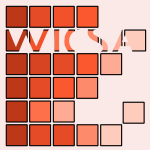 WICSA-2014-SapienzaCP #architecture #clustering #multi
WICSA-2014-SapienzaCP #architecture #clustering #multi- Architectural Decisions for HW/SW Partitioning Based on Multiple Extra-Functional Properties (GS, IC, PP), pp. 175–184.
 CASE-2014-ChangL #mobile #multi
CASE-2014-ChangL #mobile #multi- Inverse observation model and multiple hypothesis tracking for indoor mobile robots (FMC, FLL), pp. 1200–1205.
 CASE-2014-HuangL #multi #probability
CASE-2014-HuangL #multi #probability- Stochastic chiller sequencing control for multiple-chiller plants (GH, ZL), pp. 1085–1090.
 CASE-2014-WangCG #algorithm #constraints #estimation #hybrid #multi #problem #scheduling
CASE-2014-WangCG #algorithm #constraints #estimation #hybrid #multi #problem #scheduling- Hybrid estimation of distribution algorithm with multiple subpopulations for semiconductor manufacturing scheduling problem with limited waiting-time constraint (HKW, CFC, MG), pp. 101–106.
 CASE-2014-ZhangXG #multi #scheduling
CASE-2014-ZhangXG #multi #scheduling- Simulation-based surgery appointment sequencing and scheduling of multiple operating rooms (ZZ, XX, NG), pp. 399–404.
 DAC-2014-AgostaBPS #approach #embedded #encryption #execution #multi
DAC-2014-AgostaBPS #approach #embedded #encryption #execution #multi- A Multiple Equivalent Execution Trace Approach to Secure Cryptographic Embedded Software (GA, AB, GP, MS), p. 6.
 DAC-2014-RaoEST #multi #using
DAC-2014-RaoEST #multi #using- Protecting SRAM-based FPGAs Against Multiple Bit Upsets Using Erasure Codes (PMBR, ME, RS, MBT), p. 6.
 DAC-2014-RoyMIT #multi #performance
DAC-2014-RoyMIT #multi #performance- Tile Before Multiplication: An Efficient Strategy to Optimize DSP Multiplier for Accelerating Prime Field ECC for NIST Curves (DBR, DM, MI, JT), p. 6.
 DAC-2014-SchneiderPP #agile #analysis #multi
DAC-2014-SchneiderPP #agile #analysis #multi- MASH{fifo}: A Hardware-Based Multiple Cache Simulator for Rapid FIFO Cache Analysis (JS, JP, SP), p. 6.
 DAC-2014-ShanSFZTXYL #algorithm #analysis #configuration management #encryption #multi
DAC-2014-ShanSFZTXYL #algorithm #analysis #configuration management #encryption #multi- A Side-channel Analysis Resistant Reconfigurable Cryptographic Coprocessor Supporting Multiple Block Cipher Algorithms (WS, LS, XF, XZ, CT, ZX, JY, JL), p. 6.
 DATE-2014-AksoyFM #complexity #constant #design #multi #optimisation
DATE-2014-AksoyFM #complexity #constant #design #multi #optimisation- Optimization of design complexity in time-multiplexed constant multiplications (LA, PFF, JCM), pp. 1–4.
 DATE-2014-DoanJP #flexibility #implementation #multi #scalability #using
DATE-2014-DoanJP #flexibility #implementation #multi #scalability #using- Flexible and scalable implementation of H.264/AVC encoder for multiple resolutions using ASIPs (HCD, HJ, SP), pp. 1–6.
 DATE-2014-PapadimitriouHBML #clustering #fault #injection #modelling #multi #towards
DATE-2014-PapadimitriouHBML #clustering #fault #injection #modelling #multi #towards- A multiple fault injection methodology based on cone partitioning towards RTL modeling of laser attacks (AP, DH, VB, PM, RL), pp. 1–4.
 DATE-2014-ParkKK #design #multi #synthesis
DATE-2014-ParkKK #design #multi #synthesis- Mixed allocation of adjustable delay buffers combined with buffer sizing in clock tree synthesis of multiple power mode designs (KP, GK, TK), pp. 1–4.
 DATE-2014-SongDY #analysis #bound #multi #order #parametricity #performance #reduction
DATE-2014-SongDY #analysis #bound #multi #order #parametricity #performance #reduction- Zonotope-based nonlinear model order reduction for fast performance bound analysis of analog circuits with multiple-interval-valued parameter variations (YS, SMPD, HY), pp. 1–6.
 DATE-2014-ZhangLHCW #multi #performance #predict
DATE-2014-ZhangLHCW #multi #performance #predict- Joint Virtual Probe: Joint exploration of multiple test items’ spatial patterns for efficient silicon characterization and test prediction (SZ, FL, CKH, KTC, HW), pp. 1–6.
 DRR-2014-LundRW #fault #how #multi #question
DRR-2014-LundRW #fault #how #multi #question- How well does multiple OCR error correction generalize? (WBL, EKR, DDW), p. ?–13.
 ICSME-2014-XuanM #fault #learning #locality #metric #multi #ranking
ICSME-2014-XuanM #fault #learning #locality #metric #multi #ranking- Learning to Combine Multiple Ranking Metrics for Fault Localization (JX, MM), pp. 191–200.
 MSR-2014-GuptaSP #fault #mining #multi #perspective #process #repository
MSR-2014-GuptaSP #fault #mining #multi #perspective #process #repository- Process mining multiple repositories for software defect resolution from control and organizational perspective (MG, AS, SP), pp. 122–131.
 STOC-2014-FournierLMS #bound #matrix #multi
STOC-2014-FournierLMS #bound #matrix #multi- Lower bounds for depth 4 formulas computing iterated matrix multiplication (HF, NL, GM, SS), pp. 128–135.
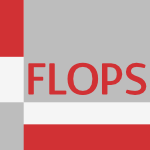 FLOPS-2014-Magalhaes #multi #parametricity #programming
FLOPS-2014-Magalhaes #multi #parametricity #programming- Generic Programming with Multiple Parameters (JPM), pp. 136–151.
 CSCW-2014-SemaanRDM #multi #social #social media #towards
CSCW-2014-SemaanRDM #multi #social #social media #towards- Social media supporting political deliberation across multiple public spheres: towards depolarization (BS, SPR, SKD, MM), pp. 1409–1421.
 HCI-AS-2014-PortouliP #adaptation #multi
HCI-AS-2014-PortouliP #adaptation #multi- Adaptive Warning Strategies from Multiple Systems: A Simulator Study with Drivers with Different Reaction Times (EP, VP), pp. 485–493.
 LCT-NLE-2014-TaraghiSES #classification #learning #markov #multi
LCT-NLE-2014-TaraghiSES #classification #learning #markov #multi- Markov Chain and Classification of Difficulty Levels Enhances the Learning Path in One Digit Multiplication (BT, AS, ME, MS), pp. 322–333.
 ICEIS-v2-2014-PintoDOC #aspect-oriented #development #framework #modelling #multi #product line #programming #towards
ICEIS-v2-2014-PintoDOC #aspect-oriented #development #framework #modelling #multi #product line #programming #towards- Evaluating the Effort for Modularizing Multiple-Domain Frameworks Towards Framework Product Lines with Aspect-oriented Programming and Model-driven Development (VHSCP, RSD, ALO, VVdC), pp. 60–70.
 CIKM-2014-DrumondDSN #modelling #multi #optimisation
CIKM-2014-DrumondDSN #modelling #multi #optimisation- Optimizing Multi-Relational Factorization Models for Multiple Target Relations (LRD, EDA, LST, WN), pp. 191–200.
 CIKM-2014-LimsopathamMO #modelling #multi #ranking #towards
CIKM-2014-LimsopathamMO #modelling #multi #ranking #towards- Modelling Relevance towards Multiple Inclusion Criteria when Ranking Patients (NL, CM, IO), pp. 1639–1648.
 CIKM-2014-SchneiderBV #linear #multi
CIKM-2014-SchneiderBV #linear #multi- Solving Linear SVMs with Multiple 1D Projections (JS, JB, MV), pp. 221–230.
 CIKM-2014-ShenJ #information management #multi #network #online #social
CIKM-2014-ShenJ #information management #multi #network #online #social- Controllable Information Sharing for User Accounts Linkage across Multiple Online Social Networks (YS, HJ), pp. 381–390.
 CIKM-2014-VatsalanC #database #multi #privacy #scalability
CIKM-2014-VatsalanC #database #multi #privacy #scalability- Scalable Privacy-Preserving Record Linkage for Multiple Databases (DV, PC), pp. 1795–1798.
 CIKM-2014-YuR #multi
CIKM-2014-YuR #multi- Search Result Diversification via Filling Up Multiple Knapsacks (HY, FR), pp. 609–618.
 ECIR-2014-BouchouchaLN #multi #query
ECIR-2014-BouchouchaLN #multi #query- Integrating Multiple Resources for Diversified Query Expansion (AB, XL, JYN), pp. 437–442.
 ICML-c2-2014-ChakrabartiFCM #multi #network #scalability
ICML-c2-2014-ChakrabartiFCM #multi #network #scalability- Joint Inference of Multiple Label Types in Large Networks (DC, SF, JC, SAM), pp. 874–882.
 ICML-c2-2014-JawanpuriaVN #feature model #kernel #learning #multi #on the
ICML-c2-2014-JawanpuriaVN #feature model #kernel #learning #multi #on the- On p-norm Path Following in Multiple Kernel Learning for Non-linear Feature Selection (PJ, MV, JSN), pp. 118–126.
 ICML-c2-2014-LiuZBP #dependence #modelling #multi #testing #visual notation
ICML-c2-2014-LiuZBP #dependence #modelling #multi #testing #visual notation- Multiple Testing under Dependence via Semiparametric Graphical Models (JL, CZ, ESB, DP), pp. 955–963.
 ICML-c2-2014-RodriguesPR #classification #learning #multi #process
ICML-c2-2014-RodriguesPR #classification #learning #multi #process- Gaussian Process Classification and Active Learning with Multiple Annotators (FR, FCP, BR), pp. 433–441.
 ICML-c2-2014-ZhouCL #crowdsourcing #identification #multi
ICML-c2-2014-ZhouCL #crowdsourcing #identification #multi- Optimal PAC Multiple Arm Identification with Applications to Crowdsourcing (YZ, XC, JL), pp. 217–225.
 ICPR-2014-AggarwalM #algorithm #metric #multi #random
ICPR-2014-AggarwalM #algorithm #metric #multi #random- Extension of Sparse Randomized Kaczmarz Algorithm for Multiple Measurement Vectors (HKA, AM), pp. 1014–1019.
 ICPR-2014-BashbaghiGSB #multi #using
ICPR-2014-BashbaghiGSB #multi #using- Watch-List Screening Using Ensembles Based on Multiple Face Representations (SB, EG, RS, GAB), pp. 4489–4494.
 ICPR-2014-CheplyginaSTPLB #classification #learning #multi
ICPR-2014-CheplyginaSTPLB #classification #learning #multi- Classification of COPD with Multiple Instance Learning (VC, LS, DMJT, JJHP, ML, MdB), pp. 1508–1513.
 ICPR-2014-DengWGZZ #modelling #multi
ICPR-2014-DengWGZZ #modelling #multi- Multiple View Based Building Modeling with Multi-box Grammar (RD, QW, RG, GZ, HZ), pp. 4027–4032.
 ICPR-2014-DonoserHS #multi
ICPR-2014-DonoserHS #multi- Multiple Model Fitting by Evolutionary Dynamics (MD, MH, DS), pp. 3816–3821.
 ICPR-2014-ElmikatyS #detection #image #multi #using
ICPR-2014-ElmikatyS #detection #image #multi #using- Car Detection in High-Resolution Urban Scenes Using Multiple Image Descriptors (ME, TS), pp. 4299–4304.
 ICPR-2014-GaurHC #design #distance #image #kernel #multi
ICPR-2014-GaurHC #design #distance #image #kernel #multi- Design of Multi-kernel Distance Based Hashing with Multiple Objectives for Image Indexing (VG, EH, SC), pp. 2637–2642.
 ICPR-2014-GuoZLCZ #clustering #kernel #learning #multi
ICPR-2014-GuoZLCZ #clustering #kernel #learning #multi- Multiple Kernel Learning Based Multi-view Spectral Clustering (DG, JZ, XL, YC, CZ), pp. 3774–3779.
 ICPR-2014-HadjadjiCG #classification #multi
ICPR-2014-HadjadjiCG #classification #multi- Multiple One-Class Classifier Combination for Multi-class Classification (BH, YC, YG), pp. 2832–2837.
 ICPR-2014-JangLSK #automation #classification #multi #using #video
ICPR-2014-JangLSK #automation #classification #multi #using #video- Automatic Video Genre Classification Using Multiple SVM Votes (WDJ, CL, JYS, CSK), pp. 2655–2660.
 ICPR-2014-KhanVP #multi #visual notation
ICPR-2014-KhanVP #multi #visual notation- A Generalized Search Method for Multiple Competing Hypotheses in Visual Tracking (MHK, MFV, TPP), pp. 2245–2250.
 ICPR-2014-KimBKC #multi #online #people
ICPR-2014-KimBKC #multi #online #people- MAP-Based Online Data Association for Multiple People Tracking in Crowded Scenes (SWK, MB, KK, JYC), pp. 1212–1217.
 ICPR-2014-LiYLMDWX #higher-order #multi
ICPR-2014-LiYLMDWX #higher-order #multi- Multiple-Output Regression with High-Order Structure Information (CL, LY, QL, FM, WD, YW, JX), pp. 3868–3873.
 ICPR-2014-MadrigalHL #multi
ICPR-2014-MadrigalHL #multi- Intention-Aware Multiple Pedestrian Tracking (FM, JBH, FL), pp. 4122–4127.
 ICPR-2014-NguyenP #linear #multi #using
ICPR-2014-NguyenP #linear #multi #using- Tracking Using Multiple Linear Searches and Motion Direction Sampling (TN, TPP), pp. 2191–2196.
 ICPR-2014-OHarneyMRCSCBF #kernel #learning #multi #pseudo
ICPR-2014-OHarneyMRCSCBF #kernel #learning #multi #pseudo- Pseudo-Marginal Bayesian Multiple-Class Multiple-Kernel Learning for Neuroimaging Data (ADO, AM, KR, KC, ABS, AC, CB, MF), pp. 3185–3190.
 ICPR-2014-PhamKO #integration #multi #named
ICPR-2014-PhamKO #integration #multi #named- DIET: Dynamic Integration of Extended Tracklets for Tracking Multiple Persons (VQP, TK, RO), pp. 1206–1211.
 ICPR-2014-SatoKSK #classification #learning #multi
ICPR-2014-SatoKSK #classification #learning #multi- Learning Multiple Complex Features Based on Classification Results (YS, KK, YS, MK), pp. 3369–3373.
 ICPR-2014-SengerSMK #behaviour #multi #segmentation
ICPR-2014-SengerSMK #behaviour #multi #segmentation- Velocity-Based Multiple Change-Point Inference for Unsupervised Segmentation of Human Movement Behavior (LS, MS, JHM, EAK), pp. 4564–4569.
 ICPR-2014-SharifzadehZK #estimation #forensics #modelling #multi #parametricity #visualisation
ICPR-2014-SharifzadehZK #estimation #forensics #modelling #multi #parametricity #visualisation- Vein Pattern Visualization through Multiple Mapping Models and Local Parameter Estimation for Forensic Investigation (HRS, HZ, AWKK), pp. 160–165.
 ICPR-2014-Shirakawa #multi #performance #similarity #using
ICPR-2014-Shirakawa #multi #performance #similarity #using- Fast Similarity Search Using Multiple Binary Codes (SS), pp. 3714–3719.
 ICPR-2014-SmedtBTG #combinator #detection #multi
ICPR-2014-SmedtBTG #combinator #detection #multi- The Combinator: Optimal Combination of Multiple Pedestrian Detectors (FDS, KVB, TT, TG), pp. 3522–3527.
 ICPR-2014-StraehleKKH #learning #multi #random
ICPR-2014-StraehleKKH #learning #multi #random- Multiple Instance Learning with Response-Optimized Random Forests (CNS, MK, UK, FAH), pp. 3768–3773.
 ICPR-2014-TabuchiTDIMKK #estimation #memory management #multi #people
ICPR-2014-TabuchiTDIMKK #estimation #memory management #multi #people- Spatial People Density Estimation from Multiple Viewpoints by Memory Based Regression (YT, TT, DD, II, HM, TK, KK), pp. 2209–2214.
 ICPR-2014-UmakanthanDFS #learning #multi #process #representation #taxonomy
ICPR-2014-UmakanthanDFS #learning #multi #process #representation #taxonomy- Multiple Instance Dictionary Learning for Activity Representation (SU, SD, CF, SS), pp. 1377–1382.
 ICPR-2014-ZhangHWZ #multi #parsing
ICPR-2014-ZhangHWZ #multi #parsing- Enhanced Human Parsing with Multiple Feature Fusion and Augmented Pose Model (ZZ, JH, YW, YZ), pp. 369–374.
 ICPR-2014-ZhangM14a #detection #learning #multi
ICPR-2014-ZhangM14a #detection #learning #multi- Simultaneous Detection of Multiple Facial Action Units via Hierarchical Task Structure Learning (XZ, MHM), pp. 1863–1868.
 ICPR-2014-ZhuWYJ #learning #modelling #multi #recognition #semantics
ICPR-2014-ZhuWYJ #learning #modelling #multi #recognition #semantics- Multiple-Facial Action Unit Recognition by Shared Feature Learning and Semantic Relation Modeling (YZ, SW, LY, QJ), pp. 1663–1668.
 KDD-2014-SahooHL #kernel #multi #online
KDD-2014-SahooHL #kernel #multi #online- Online multiple kernel regression (DS, SCHH, BL), pp. 293–302.
 KDD-2014-SpasojevicYRB #multi #named #network #scalability #social #topic
KDD-2014-SpasojevicYRB #multi #named #network #scalability #social #topic- LASTA: large scale topic assignment on multiple social networks (NS, JY, AR, PB), pp. 1809–1818.
 KR-2014-DunneDLW #multi
KR-2014-DunneDLW #multi- Characteristics of Multiple Viewpoints in Abstract Argumentation (PED, WD, TL, SW).
 MLDM-2014-HassaniSS #adaptation #clustering #multi
MLDM-2014-HassaniSS #adaptation #clustering #multi- Adaptive Multiple-Resolution Stream Clustering (MH, PS, TS), pp. 134–148.
 MLDM-2014-SenkoD #multi
MLDM-2014-SenkoD #multi- Multiple Regression Method Based on Unexpandable and Irreducible Convex Combinations (OVS, AD), pp. 43–57.
 SIGIR-2014-ChengYWL #behaviour #multi #recommendation
SIGIR-2014-ChengYWL #behaviour #multi #recommendation- Group latent factor model for recommendation with multiple user behaviors (JC, TY, JW, HL), pp. 995–998.
 SIGIR-2014-Song #enterprise #multi #network #online #social #volunteer
SIGIR-2014-Song #enterprise #multi #network #online #social #volunteer- Enrichment of user profiles across multiple online social networks for volunteerism matching for social enterprise (XS), p. 1282.
 MoDELS-2014-RabiserVGDSL #case study #experience #lessons learnt #modelling #multi
MoDELS-2014-RabiserVGDSL #case study #experience #lessons learnt #modelling #multi- Supporting Multiplicity and Hierarchy in Model-Based Configuration: Experiences and Lessons Learned (RR, MV, PG, DD, HS, ML), pp. 320–336.
 MoDELS-2014-RabiserVGDSL #case study #experience #lessons learnt #modelling #multi
MoDELS-2014-RabiserVGDSL #case study #experience #lessons learnt #modelling #multi- Supporting Multiplicity and Hierarchy in Model-Based Configuration: Experiences and Lessons Learned (RR, MV, PG, DD, HS, ML), pp. 320–336.
 ECOOP-2014-LeeKZ #concurrent #execution #multi
ECOOP-2014-LeeKZ #concurrent #execution #multi- Infrastructure-Free Logging and Replay of Concurrent Execution on Multiple Cores (KHL, DK, XZ), pp. 232–256.
 GPCE-2014-KaminGAXYC #multi #optimisation #runtime
GPCE-2014-KaminGAXYC #multi #optimisation #runtime- Optimization by runtime specialization for sparse matrix-vector multiplication (SK, MJG, BA, DX, BY, ZC), pp. 93–102.
 RE-2014-GhanavatiRDA #multi
RE-2014-GhanavatiRDA #multi- Goal-oriented compliance with multiple regulations (SG, AR, ED, DA), pp. 73–82.
 SAC-2014-CalvoOFR #distributed #multi #parametricity
SAC-2014-CalvoOFR #distributed #multi #parametricity- Parametric investigation of a distributed strategy for multiple agents systems applied to cooperative tasks (RC, JdO, MF, RAR), pp. 207–212.
 SAC-2014-HuangLD #analysis #modelling #multi #network #performance
SAC-2014-HuangLD #analysis #modelling #multi #network #performance- Modeling and analysis on network performance for cloud service delivery with multiple paths (JH, JL, QD), pp. 667–673.
 SAC-2014-LiW #clustering #matrix #multi
SAC-2014-LiW #clustering #matrix #multi- Single multiplicatively updated matrix factorization for co-clustering (ZL, XW), pp. 97–104.
 SAC-2014-PengYYHKH #3d #detection #multi #using
SAC-2014-PengYYHKH #3d #detection #multi #using- 3D cloud detection and tracking for solar forecast using multiple sky imagers (ZP, SY, DY, DH, PK, JH), pp. 512–517.
 ICSE-2014-LinXXLPSZ #detection #difference #multi
ICSE-2014-LinXXLPSZ #detection #difference #multi- Detecting differences across multiple instances of code clones (YL, ZX, YX, YL, XP, JS, WZ), pp. 164–174.
 SPLC-2014-SteinNC #feature model #multi
SPLC-2014-SteinNC #feature model #multi- Preference-based feature model configuration with multiple stakeholders (JS, IN, EC), pp. 132–141.
 CGO-2014-PanditG #execution #kernel #multi #source code
CGO-2014-PanditG #execution #kernel #multi #source code- Fluidic Kernels: Cooperative Execution of OpenCL Programs on Multiple Heterogeneous Devices (PP, RG), p. 273.
 HPDC-2014-BeaumontM #analysis #matrix #multi #scheduling
HPDC-2014-BeaumontM #analysis #matrix #multi #scheduling- Analysis of dynamic scheduling strategies for matrix multiplication on heterogeneous platforms (OB, LM), pp. 141–152.
 ISMM-2014-BaconCS #configuration management #garbage collection #hardware #parallel #realtime
ISMM-2014-BaconCS #configuration management #garbage collection #hardware #parallel #realtime- Parallel real-time garbage collection of multiple heaps in reconfigurable hardware (DFB, PC, SS), pp. 117–127.
 PPoPP-2014-LeeKZ #concurrent #execution #multi
PPoPP-2014-LeeKZ #concurrent #execution #multi- Infrastructure-free logging and replay of concurrent execution on multiple cores (KHL, DK, XZ), pp. 371–372.
 PPoPP-2014-SandesMMMA #comparison #parallel #sequence
PPoPP-2014-SandesMMMA #comparison #parallel #sequence- Fine-grain parallel megabase sequence comparison with multiple heterogeneous GPUs (EFdOS, GM, ACMAdM, XM, EA), pp. 383–384.
 CASE-2013-DanancherLLF #multi
CASE-2013-DanancherLLF #multi- A Discrete event model for multiple inhabitants location tracking (MD, JJL, LL, GF), pp. 910–915.
 CASE-2013-FerreiraL #generative #multi #tool support #using
CASE-2013-FerreiraL #generative #multi #tool support #using- A method for generating tool paths for milling pockets in prismatic parts using multiple tools (JCEF, RAL), pp. 528–533.
 CASE-2013-Fries #agile #automation #fault #fuzzy #multi #using
CASE-2013-Fries #agile #automation #fault #fuzzy #multi #using- Automation of rapid fault diagnosis in manufacturing systems using multiple fuzzy agents (TPF), pp. 65–70.
 CASE-2013-WangC #multi #policy #robust
CASE-2013-WangC #multi #policy #robust- A robust production control policy for a multiple-stage production system with inventory inaccuracy and time-delay (ZW, FTSC), pp. 77–82.
 DAC-2013-EbrahimiAT #analysis #approach #multi
DAC-2013-EbrahimiAT #analysis #approach #multi- A layout-based approach for multiple event transient analysis (ME, HA, MBT), p. 6.
 DAC-2013-FangLC #multi
DAC-2013-FangLC #multi- Stitch-aware routing for multiple e-beam lithography (SYF, IJL, YWC), p. 6.
 DAC-2013-HoC #multi
DAC-2013-HoC #multi- Multiple chip planning for chip-interposer codesign (YKH, YWC), p. 6.
 DAC-2013-MishraMD #approach #design #multi
DAC-2013-MishraMD #approach #design #multi- A heterogeneous multiple network-on-chip design: an application-aware approach (AKM, OM, CRD), p. 10.
 DAC-2013-SalodkarRBB #automation #design #multi
DAC-2013-SalodkarRBB #automation #design #multi- Automatic design rule correction in presence of multiple grids and track patterns (NS, SR, SB, SHB), p. 6.
 DAC-2013-SongLPL #3d #multi #optimisation
DAC-2013-SongLPL #3d #multi #optimisation- Full-chip multiple TSV-to-TSV coupling extraction and optimization in 3D ICs (TS, CL, YP, SKL), p. 7.
 DAC-2013-WuH #constraints #framework #multi #random #robust #set #theorem proving #verification
DAC-2013-WuH #constraints #framework #multi #random #robust #set #theorem proving #verification- A robust constraint solving framework for multiple constraint sets in constrained random verification (BHW, CY(H), p. 7.
 DAC-2013-ZhouLJ #3d #complexity #finite #linear #multi #scalability
DAC-2013-ZhouLJ #3d #complexity #finite #linear #multi #scalability- A direct finite element solver of linear complexity for large-scale 3-D circuit extraction in multiple dielectrics (BZ, HL, DJ), p. 6.
 DATE-2013-BoettcherGAK #energy #multi #named
DATE-2013-BoettcherGAK #energy #multi #named- MALEC: a multiple access low energy cache (MB, GG, BMAH, DK), pp. 368–373.
 DATE-2013-DeutschC #multi #using
DATE-2013-DeutschC #multi #using- Non-invasive pre-bond TSV test using ring oscillators and multiple voltage levels (SD, KC), pp. 1065–1070.
 DATE-2013-GhaidaG #design #development #multi #process
DATE-2013-GhaidaG #design #development #multi #process- Role of design in multiple patterning: technology development, design enablement and process control (RSG, PG), pp. 314–319.
 DATE-2013-LiuN #multi
DATE-2013-LiuN #multi- Radar signature in multiple target tracking system for driver assistant application (HL, SN), pp. 887–892.
 DATE-2013-LoiaconoPPPQRVB #estimation #multi #performance #problem
DATE-2013-LoiaconoPPPQRVB #estimation #multi #performance #problem- Fast cone-of-influence computation and estimation in problems with multiple properties (CL, MP, PP, DP, SQ, SR, DV, JB), pp. 803–806.
 DATE-2013-YoonKBS #design #multi #optimisation #parametricity #scheduling
DATE-2013-YoonKBS #design #multi #optimisation #parametricity #scheduling- Holistic design parameter optimization of multiple periodic resources in hierarchical scheduling (MKY, JEK, RMB, LS), pp. 1313–1318.
 DRR-2013-LundKR #multi
DRR-2013-LundKR #multi- Combining multiple thresholding binarization values to improve OCR output (WBL, DJK, EKR).
 ICDAR-2013-NeumannM #multi #on the #recognition
ICDAR-2013-NeumannM #multi #on the #recognition- On Combining Multiple Segmentations in Scene Text Recognition (LN, JM), pp. 523–527.
 ICDAR-2013-WalhaDLGA #clustering #image #multi
ICDAR-2013-WalhaDLGA #clustering #image #multi- Multiple Learned Dictionaries Based Clustered Sparse Coding for the Super-Resolution of Single Text Image (RW, FD, FL, CG, AMA), pp. 484–488.
 ICDAR-2013-WemhoenerYM #multi #using
ICDAR-2013-WemhoenerYM #multi #using- Creating an Improved Version Using Noisy OCR from Multiple Editions (DW, IZY, RM), pp. 160–164.
 ICDAR-2013-ZhangS #estimation #geometry #image #multi
ICDAR-2013-ZhangS #estimation #geometry #image #multi- Multiple Geometry Transform Estimation from Single Camera-Captured Text Image (XZ, FS), pp. 538–542.
 VLDB-2013-RekatsinasDM #clustering #multi
VLDB-2013-RekatsinasDM #clustering #multi- A SPARSI: Partitioning Sensitive Data amongst Multiple Adversaries (TR, AD, AM), pp. 1594–1605.
 ITiCSE-WGR-2013-SandersACEGJLMP #multi #repository
ITiCSE-WGR-2013-SandersACEGJLMP #multi #repository- The Canterbury QuestionBank: building a repository of multiple-choice CS1 and CS2 questions (KS, MA, TC, SHE, MG, CJ, RL, RM, EAP, JS), pp. 33–52.
 TACAS-2013-BalasubramanianPKL #analysis #multi #named #statechart
TACAS-2013-BalasubramanianPKL #analysis #multi #named #statechart- Polyglot: Systematic Analysis for Multiple Statechart Formalisms (DB, CSP, GK, MRL), pp. 523–529.
 ICSM-2013-Harder #developer #evolution #how #multi
ICSM-2013-Harder #developer #evolution #how #multi- How Multiple Developers Affect the Evolution of Code Clones (JH), pp. 30–39.
 ICSM-2013-WangWYLLZ #categorisation #mining #multi #repository
ICSM-2013-WangWYLLZ #categorisation #mining #multi #repository- Mining Software Profile across Multiple Repositories for Hierarchical Categorization (TW, HW, GY, CXL, XL, PZ), pp. 240–249.
 PLDI-2013-LiTCS #adaptation #multi #named
PLDI-2013-LiTCS #adaptation #multi #named- SMAT: an input adaptive auto-tuner for sparse matrix-vector multiplication (JL, GT, MC, NS), pp. 117–126.
 STOC-2013-EisenstatK #algorithm #graph #linear #multi
STOC-2013-EisenstatK #algorithm #graph #linear #multi- Linear-time algorithms for max flow and multiple-source shortest paths in unit-weight planar graphs (DE, PNK), pp. 735–744.
 LATA-2013-SippuS #multi #online
LATA-2013-SippuS #multi #online- Online Matching of Multiple Regular Patterns with Gaps and Character Classes (SS, ESS), pp. 523–534.
 CHI-2013-FuchsFMBI #design #evaluation #multi
CHI-2013-FuchsFMBI #design #evaluation #multi- Evaluation of alternative glyph designs for time series data in a small multiple setting (JF, FF, FM, EB, PI), pp. 3237–3246.
 CHI-2013-IonCHHS #multi #named #scalability
CHI-2013-IonCHHS #multi #named #scalability- Canyon: providing location awareness of multiple moving objects in a detail view on large displays (AI, YLBC, MH, MSH, SDS), pp. 3149–3158.
 CHI-2013-LafreniereGF #community #multi
CHI-2013-LafreniereGF #community #multi- Community enhanced tutorials: improving tutorials with multiple demonstrations (BJL, TG, GWF), pp. 1779–1788.
 CHI-2013-PerinVF #graph #interactive #multi #visualisation
CHI-2013-PerinVF #graph #interactive #multi #visualisation- Interactive horizon graphs: improving the compact visualization of multiple time series (CP, FV, JDF), pp. 3217–3226.
 CHI-2013-WangESM #chat #comparative #evaluation #interface #multi
CHI-2013-WangESM #chat #comparative #evaluation #interface #multi- A comparative evaluation of multiple chat stream interfaces for information-intensive environments (YW, AE, MS, GM), pp. 2717–2720.
 CHI-2013-WarnockMB #multi
CHI-2013-WarnockMB #multi- Multiple notification modalities and older users (DW, MRML, SAB), pp. 1091–1094.
 CHI-2013-XuYZLS #parallel #perspective #web
CHI-2013-XuYZLS #parallel #perspective #web- Facilitating parallel web browsing through multiple-page view (WX, CY, SZ, JL, YS), pp. 2167–2170.
 DHM-SET-2013-MurataKH #effectiveness #multi
DHM-SET-2013-MurataKH #effectiveness #multi- Effectiveness of Automotive Warning System Presented with Multiple Sensory Modalities (AM, MK, TH), pp. 88–97.
 HCI-AMTE-2013-RandallCTL #design #multi
HCI-AMTE-2013-RandallCTL #design #multi- Applying Contextual Design to Multiple Teams in Emergency Management (TR, JC, GT, JL), pp. 109–118.
 HCI-IMT-2013-FuchsFSG #adaptation #multi
HCI-IMT-2013-FuchsFSG #adaptation #multi- Adaptive Consoles for Supervisory Control of Multiple Unmanned Aerial Vehicles (CF, SF, JBS, GMG), pp. 678–687.
 HCI-UC-2013-HermannSTKS #concept #distributed #multi #network #social #user interface
HCI-UC-2013-HermannSTKS #concept #distributed #multi #network #social #user interface- The di.me User Interface: Concepts for Sharing Personal Information via Multiple Identities in a Decentralized Social Network (FH, AS, ST, CK, SS), pp. 29–38.
 HIMI-D-2013-JinnaiONKAS #evaluation #multi
HIMI-D-2013-JinnaiONKAS #evaluation #multi- Evaluation of Somatosensory Evoked Responses When Multiple Tactile Information Was Given to the Palm: A MEG Study (AJ, AO, SN, KK, TA, SS), pp. 594–603.
 HIMI-D-2013-Maeshiro #multi #network
HIMI-D-2013-Maeshiro #multi #network- A Model of Living Organisms to Integrate Multiple Relationship Network Descriptions (TM), pp. 475–483.
 OCSC-2013-LanghorneTK #health #multi #online #web
OCSC-2013-LanghorneTK #health #multi #online #web- Untangling the Web of e-Health: Multiple Sclerosis Patients’ Perceptions of Online Health Information, Information Literacy, and the Impact on Treatment Decision Making (ALL, PT, LK), pp. 304–312.
 EDOC-2013-GoknilKM #approach #metamodelling #modelling #multi #reasoning #requirements
EDOC-2013-GoknilKM #approach #metamodelling #modelling #multi #reasoning #requirements- A metamodeling approach for reasoning on multiple requirements models (AG, IK, JVM), pp. 159–166.
 ICEIS-v1-2013-LaporteDM #documentation #multi #web
ICEIS-v1-2013-LaporteDM #documentation #multi #web- Multiple Clicks Model for Web Search of Multi-clickable Documents (LL, SD, JM), pp. 298–303.
 ICEIS-v1-2013-LeiteMP #fault #multi
ICEIS-v1-2013-LeiteMP #fault #multi- Multiple External Representations in Remediation of Math Errors (MDL, DM, ARP), pp. 519–523.
 ICEIS-v2-2013-OgataK #multi #optimisation #parametricity
ICEIS-v2-2013-OgataK #multi #optimisation #parametricity- The Parameter Optimization in Multiple Layered Deduplication System (MO, NK), pp. 143–150.
 ICEIS-v3-2013-BittencourtBDPB #adaptation #multi #user interface
ICEIS-v3-2013-BittencourtBDPB #adaptation #multi #user interface- Exploring Twofold Adaptability to the User Interface — Different Users and Multiple Devices (IIB, MCCB, DD, RP, JB), pp. 38–45.
 CIKM-2013-KhanDS #multi #scalability
CIKM-2013-KhanDS #multi #scalability- Scalable diversification of multiple search results (HAK, MD, MAS), pp. 775–780.
 CIKM-2013-KongZY #multi #network #social
CIKM-2013-KongZY #multi #network #social- Inferring anchor links across multiple heterogeneous social networks (XK, JZ, PSY), pp. 179–188.
 ECIR-2013-NishinoYHSN #multi #summary
ECIR-2013-NishinoYHSN #multi #summary- Text Summarization while Maximizing Multiple Objectives with Lagrangian Relaxation (MN, NY, TH, JS, MN), pp. 772–775.
 ICML-c1-2013-AfkanpourGSB #algorithm #kernel #learning #multi #random #scalability
ICML-c1-2013-AfkanpourGSB #algorithm #kernel #learning #multi #random #scalability- A Randomized Mirror Descent Algorithm for Large Scale Multiple Kernel Learning (AA, AG, CS, MB), pp. 374–382.
 ICML-c1-2013-BubeckWV #identification #multi
ICML-c1-2013-BubeckWV #identification #multi- Multiple Identifications in Multi-Armed Bandits (SB, TW, NV), pp. 258–265.
 ICML-c2-2013-KrummenacherOB #learning #multi
ICML-c2-2013-KrummenacherOB #learning #multi- Ellipsoidal Multiple Instance Learning (GK, CSO, JMB), pp. 73–81.
 ICML-c2-2013-TranPV #learning #multi
ICML-c2-2013-TranPV #learning #multi- Thurstonian Boltzmann Machines: Learning from Multiple Inequalities (TT, DQP, SV), pp. 46–54.
 ICML-c3-2013-AlmingolML #behaviour #learning #multi
ICML-c3-2013-AlmingolML #behaviour #learning #multi- Learning Multiple Behaviors from Unlabeled Demonstrations in a Latent Controller Space (JA, LM, ML), pp. 136–144.
 ICML-c3-2013-CortesMR #classification #kernel #multi
ICML-c3-2013-CortesMR #classification #kernel #multi- Multi-Class Classification with Maximum Margin Multiple Kernel (CC, MM, AR), pp. 46–54.
 ICML-c3-2013-GerasS #multi
ICML-c3-2013-GerasS #multi- Multiple-source cross-validation (KG, CAS), pp. 1292–1300.
 ICML-c3-2013-WangWBLT #learning #multi #taxonomy
ICML-c3-2013-WangWBLT #learning #multi #taxonomy- Max-Margin Multiple-Instance Dictionary Learning (XW, BW, XB, WL, ZT), pp. 846–854.
 ICML-c3-2013-ZhangHSL #learning #multi #named
ICML-c3-2013-ZhangHSL #learning #multi #named- MILEAGE: Multiple Instance LEArning with Global Embedding (DZ, JH, LS, RDL), pp. 82–90.
 KDD-2013-ChenHL #multi #recommendation
KDD-2013-ChenHL #multi #recommendation- Making recommendations from multiple domains (WC, WH, MLL), pp. 892–900.
 KDD-2013-TangZM #modelling #multi #topic
KDD-2013-TangZM #modelling #multi #topic- One theme in all views: modeling consensus topics in multiple contexts (JT, MZ, QM), pp. 5–13.
 KDD-2013-UganderKBK #clustering #graph #multi #network
KDD-2013-UganderKBK #clustering #graph #multi #network- Graph cluster randomization: network exposure to multiple universes (JU, BK, LB, JMK), pp. 329–337.
 KDD-2013-Vatsavai #approach #learning #multi #using
KDD-2013-Vatsavai #approach #learning #multi #using- Gaussian multiple instance learning approach for mapping the slums of the world using very high resolution imagery (RRV), pp. 1419–1426.
 KDD-2013-ZhangHL #learning #multi #named
KDD-2013-ZhangHL #learning #multi #named- MI2LS: multi-instance learning from multiple informationsources (DZ, JH, RDL), pp. 149–157.
 KDD-2013-ZhengDMZ #collaboration #interactive #matrix #multi #predict
KDD-2013-ZhengDMZ #collaboration #interactive #matrix #multi #predict- Collaborative matrix factorization with multiple similarities for predicting drug-target interactions (XZ, HD, HM, SZ), pp. 1025–1033.
 KDIR-KMIS-2013-NhungNCLT #approach #image #learning #multi
KDIR-KMIS-2013-NhungNCLT #approach #image #learning #multi- A Multiple Instance Learning Approach to Image Annotation with Saliency Map (TPN, CTN, JC, HVL, TT), pp. 152–159.
 KEOD-2013-Cruz-FilipeNG #logic programming #multi #ontology #source code
KEOD-2013-Cruz-FilipeNG #logic programming #multi #ontology #source code- Patterns for Interfacing between Logic Programs and Multiple Ontologies (LCF, IN, GG), pp. 58–69.
 KEOD-2013-NadarajanYC #framework #multi #ontology #performance #scalability #workflow
KEOD-2013-NadarajanYC #framework #multi #ontology #performance #scalability #workflow- Multiple Ontologies Enhanced with Performance Capabilities to Define Interacting Domains within a Workflow Framework for Analysing Large Undersea Videos (GN, CLY, YHCB), pp. 419–426.
 KEOD-2013-NogueiraG #multi #nondeterminism #programming #set
KEOD-2013-NogueiraG #multi #nondeterminism #programming #set- Supply Chain Tracing of Multiple Products under Uncertainty and Incomplete Information — An Application of Answer Set Programming (MLN, NPG), pp. 399–406.
 MLDM-2013-LiuLM #approach #combinator #lightweight #multi
MLDM-2013-LiuLM #approach #combinator #lightweight #multi- A Lightweight Combinatorial Approach for Inferring the Ground Truth from Multiple Annotators (XL, LL, NDM), pp. 616–628.
 RecSys-2013-AzariaKR #multi #problem
RecSys-2013-AzariaKR #multi #problem- A system for advice provision in multiple prospectselection problems (AA, SK, AR), pp. 311–314.
 RecSys-2013-ShiKBLH #multi #named #optimisation #rank
RecSys-2013-ShiKBLH #multi #named #optimisation #rank- xCLiMF: optimizing expected reciprocal rank for data with multiple levels of relevance (YS, AK, LB, ML, AH), pp. 431–434.
 RecSys-2013-WestonWY #multi
RecSys-2013-WestonWY #multi- Nonlinear latent factorization by embedding multiple user interests (JW, RJW, HY), pp. 65–68.
 SEKE-2013-DelfimG #coordination #mining #multi #slicing #using
SEKE-2013-DelfimG #coordination #mining #multi #slicing #using- Multiple Coordinated Views to Support Aspect Mining Using Program Slicing (S) (FMD, REG), pp. 531–536.
 SEKE-2013-DengWH #algorithm #combinator #identification #multi #using
SEKE-2013-DengWH #algorithm #combinator #identification #multi #using- Combining multiple stress identification algorithms using combinatorial fusion (YD, ZW, DFH), pp. 421–428.
 SEKE-2013-StringfellowRVM #comparison #multi #set
SEKE-2013-StringfellowRVM #comparison #multi #set- Comparison of SRGMs and NNEs on Multiple Data Sets (CS, SR, RVT, SM), pp. 618–623.
 SIGIR-2013-BoytsovBW #information retrieval #multi
SIGIR-2013-BoytsovBW #information retrieval #multi- Deciding on an adjustment for multiplicity in IR experiments (LB, AB, PW), pp. 403–412.
 MoDELS-2013-BalabanM #composition #constraints #correctness #diagrams #multi #uml
MoDELS-2013-BalabanM #composition #constraints #correctness #diagrams #multi #uml- Simplification and Correctness of UML Class Diagrams — Focusing on Multiplicity and Aggregation/Composition Constraints (MB, AM), pp. 454–470.
 MoDELS-2013-TaentzerMAL #metamodelling #migration #multi
MoDELS-2013-TaentzerMAL #metamodelling #migration #multi- Customizable Model Migration Schemes for Meta-model Evolutions with Multiplicity Changes (GT, FM, TA, YL), pp. 254–270.
 MoDELS-2013-BalabanM #composition #constraints #correctness #diagrams #multi #uml
MoDELS-2013-BalabanM #composition #constraints #correctness #diagrams #multi #uml- Simplification and Correctness of UML Class Diagrams — Focusing on Multiplicity and Aggregation/Composition Constraints (MB, AM), pp. 454–470.
 MoDELS-2013-TaentzerMAL #metamodelling #migration #multi
MoDELS-2013-TaentzerMAL #metamodelling #migration #multi- Customizable Model Migration Schemes for Meta-model Evolutions with Multiplicity Changes (GT, FM, TA, YL), pp. 254–270.
 Onward-2013-Steimann #multi #object-oriented #programming
Onward-2013-Steimann #multi #object-oriented #programming- Content over container: object-oriented programming with multiplicities (FS), pp. 173–186.
 OOPSLA-2013-DEliaD #multi #profiling
OOPSLA-2013-DEliaD #multi #profiling- Ball-Larus path profiling across multiple loop iterations (DCD, CD), pp. 373–390.
 SAC-2013-CavalinKMO #framework #multi #recognition
SAC-2013-CavalinKMO #framework #multi #recognition- A multiple feature vector framework for forest species recognition (PRC, MNK, JM, LESdO), pp. 16–20.
 SAC-2013-PengWR #multi
SAC-2013-PengWR #multi- Leader-follower formation control of multiple nonholonomic robots based on backstepping (ZP, GW, AR), pp. 211–216.
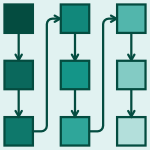 PLEASE-2013-UrliMBC #how #multi #product line #question
PLEASE-2013-UrliMBC #how #multi #product line #question- How to exploit domain knowledge in Multiple Software Product Lines? (SU, SM, MBF, PC), pp. 13–16.
 HPCA-2013-WangCWMZLN #architecture #execution #parallel
HPCA-2013-WangCWMZLN #architecture #execution #parallel- A multiple SIMD, multiple data (MSMD) architecture: Parallel execution of dynamic and static SIMD fragments (YW, SC, JW, JM, KZ, WL, XN), pp. 603–614.
 SOSP-2013-WuBPKM #effectiveness #multi #named
SOSP-2013-WuBPKM #effectiveness #multi #named- SPANStore: cost-effective geo-replicated storage spanning multiple cloud services (ZW, MB, DP, EKB, HVM), pp. 292–308.
 ICLP-J-2013-ErdemPSSU #approach #multi
ICLP-J-2013-ErdemPSSU #approach #multi- Finding optimal plans for multiple teams of robots through a mediator: A logic-based approach (EE, VP, ZGS, PS, TU), pp. 831–846.
 ICST-2013-KapfhammerMW #constraints #database #multi #relational #search-based #testing
ICST-2013-KapfhammerMW #constraints #database #multi #relational #search-based #testing- Search-Based Testing of Relational Schema Integrity Constraints Across Multiple Database Management Systems (GMK, PM, CJW), pp. 31–40.
 ICST-2013-SakamotoSTWF #framework #metric #multi #named #programming language #test coverage #tool support
ICST-2013-SakamotoSTWF #framework #metric #multi #named #programming language #test coverage #tool support- OCCF: A Framework for Developing Test Coverage Measurement Tools Supporting Multiple Programming Languages (KS, KS, RT, HW, YF), pp. 422–430.
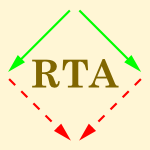 RTA-2013-Okada #multi #term rewriting
RTA-2013-Okada #multi #term rewriting- Husserl and Hilbert on Completeness and Husserl’s Term Rewrite-based Theory of Multiplicity (Invited Talk) (MO), pp. 4–19.
 QoSA-2012-DajsurenBSH #architecture #case study #consistency #multi
QoSA-2012-DajsurenBSH #architecture #case study #consistency #multi- Automotive ADLS: a study on enforcing consistency through multiple architectural levels (YD, MvdB, AS, RH), pp. 71–80.
 QoSA-2012-EklundB #architecture #ecosystem #framework #multi #using
QoSA-2012-EklundB #architecture #ecosystem #framework #multi #using- Using architecture for multiple levels of access to an ecosystem platform (UE, JB), pp. 143–148.
 CASE-2012-TohNT #3d #automation #flexibility #multi
CASE-2012-TohNT #3d #automation #flexibility #multi- Three dimensional adjustable cavity for flexible singulation of multiple medications in an automated medication dispenser (CKT, SLJN, YOT), pp. 347–352.
 CASE-2012-YaqubGK #fault #multi
CASE-2012-YaqubGK #fault #multi- Impact characterization of multiple-points-defect on machine fault diagnosis (MFY, IG, JK), pp. 479–484.
 DAC-2012-SatpathyDDMSB #multi #quality #self
DAC-2012-SatpathyDDMSB #multi #quality #self- High radix self-arbitrating switch fabric with multiple arbitration schemes and quality of service (SS, RD, RGD, TNM, DS, DB), pp. 406–411.
 DATE-2012-SuriBE #approach #multi #problem #scalability
DATE-2012-SuriBE #approach #multi #problem #scalability- A scalable GPU-based approach to accelerate the multiple-choice knapsack problem (BS, UDB, PE), pp. 1126–1129.
 DATE-2012-WangXPKCP #energy #hybrid #migration #multi
DATE-2012-WangXPKCP #energy #hybrid #migration #multi- Multiple-source and multiple-destination charge migration in hybrid electrical energy storage systems (YW, QX, MP, YK, NC, MP), pp. 169–174.
 DocEng-2012-MancillaBP #multi
DocEng-2012-MancillaBP #multi- Typesetting multiple interacting streams (BM, JPB, JP), pp. 149–152.
 SIGMOD-2012-SimitsisWCD #data flow #execution #multi #optimisation
SIGMOD-2012-SimitsisWCD #data flow #execution #multi #optimisation- Optimizing analytic data flows for multiple execution engines (AS, KW, MC, UD), pp. 829–840.
 VLDB-2012-ErdosILTB #multi #problem
VLDB-2012-ErdosILTB #multi #problem- The Filter-Placement Problem and its Application to Minimizing Information Multiplicity (DE, VI, AL, ET, AB), pp. 418–429.
 VLDB-2012-LiWC #multi #network #profiling #social
VLDB-2012-LiWC #multi #network #profiling #social- Multiple Location Profiling for Users and Relationships from Social Network and Content (RL, SW, KCCC), pp. 1603–1614.
 ESOP-2012-DownenA #approach #multi
ESOP-2012-DownenA #approach #multi- A Systematic Approach to Delimited Control with Multiple Prompts (PD, ZMA), pp. 234–253.
 PEPM-2012-MatsudaIN #cumulative #multi #polynomial #traversal
PEPM-2012-MatsudaIN #cumulative #multi #polynomial #traversal- Polynomial-time inverse computation for accumulative functions with multiple data traversals (KM, KI, KN), pp. 5–14.
 DLT-2012-CaralpRT #automaton #bound #multi
DLT-2012-CaralpRT #automaton #bound #multi- Visibly Pushdown Automata with Multiplicities: Finiteness and K-Boundedness (MC, PAR, JMT), pp. 226–238.
 ICALP-v1-2012-JefferyKM #complexity #graph #matrix #multi #quantum #query #using
ICALP-v1-2012-JefferyKM #complexity #graph #matrix #multi #quantum #query #using- Improving Quantum Query Complexity of Boolean Matrix Multiplication Using Graph Collision (SJ, RK, FM), pp. 522–532.
 ICALP-v2-2012-BaldeschiHLS #keyword #multi #on the
ICALP-v2-2012-BaldeschiHLS #keyword #multi #on the- On Multiple Keyword Sponsored Search Auctions with Budgets (RCB, MH, SL, MS), pp. 1–12.
 IFM-2012-DongolH #multi #reasoning #source code
IFM-2012-DongolH #multi #reasoning #source code- Rely/Guarantee Reasoning for Teleo-reactive Programs over Multiple Time Bands (BD, IJH), pp. 39–53.
 GT-VMT-2012-Taentzer #generative #graph #multi
GT-VMT-2012-Taentzer #generative #graph #multi- Instance Generation from Type Graphs with Arbitrary Multiplicities (GT).
 CHI-2012-Hutchings #multi
CHI-2012-Hutchings #multi- An investigation of Fitts’ law in a multiple-display environment (DH), pp. 3181–3184.
 CIKM-2012-ChoiLKLM #named #parallel #query #xml
CIKM-2012-ChoiLKLM #named #parallel #query #xml- HadoopXML: a suite for parallel processing of massive XML data with multiple twig pattern queries (HC, KHL, SHK, YJL, BM), pp. 2737–2739.
 CIKM-2012-JiangCWYZY #multi #recommendation #relational #social
CIKM-2012-JiangCWYZY #multi #recommendation #relational #social- Social recommendation across multiple relational domains (MJ, PC, FW, QY, WZ, SY), pp. 1422–1431.
 CIKM-2012-MorenoSRS #learning #multi #named
CIKM-2012-MorenoSRS #learning #multi #named- TALMUD: transfer learning for multiple domains (OM, BS, LR, GS), pp. 425–434.
 CIKM-2012-NegahbanRG #learning #multi #performance #scalability #statistics #using
CIKM-2012-NegahbanRG #learning #multi #performance #scalability #statistics #using- Scaling multiple-source entity resolution using statistically efficient transfer learning (SN, BIPR, JG), pp. 2224–2228.
 CIKM-2012-ShenDZT #multi #network #online #social
CIKM-2012-ShenDZT #multi #network #online #social- Interest-matching information propagation in multiple online social networks (YS, TND, HZ, MTT), pp. 1824–1828.
 CIKM-2012-XieZSzP #data type #linear #multi #performance #representation
CIKM-2012-XieZSzP #data type #linear #multi #performance #representation- Efficient buffer management for piecewise linear representation of multiple data streams (QX, JZ, MAS, XZ, CP), pp. 2114–2118.
 ECIR-2012-HosseiniCMKV #documentation #multi #on the
ECIR-2012-HosseiniCMKV #documentation #multi #on the- On Aggregating Labels from Multiple Crowd Workers to Infer Relevance of Documents (MH, IJC, NMF, GK, VV), pp. 182–194.
 ECIR-2012-MantrachR #framework #multi #people #retrieval #social #social media
ECIR-2012-MantrachR #framework #multi #people #retrieval #social #social media- A General Framework for People Retrieval in Social Media with Multiple Roles (AM, JMR), pp. 512–516.
 ICML-2012-BalasubramanianL #multi #predict
ICML-2012-BalasubramanianL #multi #predict- The Landmark Selection Method for Multiple Output Prediction (KB, GL), p. 41.
 ICML-2012-Gomez-RodriguezS12a #multi #network
ICML-2012-Gomez-RodriguezS12a #multi #network- Submodular Inference of Diffusion Networks from Multiple Trees (MGR, BS), p. 206.
 ICML-2012-Gonen #kernel #learning #multi #performance
ICML-2012-Gonen #kernel #learning #multi #performance- Bayesian Efficient Multiple Kernel Learning (MG), p. 17.
 ICML-2012-GongZM #learning #multi #robust
ICML-2012-GongZM #learning #multi #robust- Robust Multiple Manifold Structure Learning (DG, XZ, GGM), p. 7.
 ICML-2012-KumarNKD #classification #framework #kernel #learning #multi
ICML-2012-KumarNKD #classification #framework #kernel #learning #multi- A Binary Classification Framework for Two-Stage Multiple Kernel Learning (AK, ANM, KK, HDI), p. 173.
 ICML-2012-LiuW #modelling #multi #probability
ICML-2012-LiuW #modelling #multi #probability- TrueLabel + Confusions: A Spectrum of Probabilistic Models in Analyzing Multiple Ratings (CL, YMW), p. 6.
 ICML-2012-WulsinJL #clustering #modelling #multi #process
ICML-2012-WulsinJL #clustering #modelling #multi #process- A Hierarchical Dirichlet Process Model with Multiple Levels of Clustering for Human EEG Seizure Modeling (DW, SJ, BL), p. 67.
 ICML-2012-YangMJZZ #kernel #learning #multi #probability #programming
ICML-2012-YangMJZZ #kernel #learning #multi #probability #programming- Multiple Kernel Learning from Noisy Labels by Stochastic Programming (TY, MM, RJ, LZ, YZ), p. 21.
 ICPR-2012-0007B #classification #feature model #image #kernel #multi
ICPR-2012-0007B #classification #feature model #image #kernel #multi- Multiple local kernel integrated feature selection for image classification (YS, BB), pp. 2230–2233.
 ICPR-2012-AiDHC #analysis #component #feature model #independence #multi
ICPR-2012-AiDHC #analysis #component #feature model #independence #multi- Multiple feature selection and fusion based on generalized N-dimensional independent component analysis (DA, GD, XHH, YWC), pp. 971–974.
 ICPR-2012-BanerjeeN #kernel #learning #multi #process #recognition #using
ICPR-2012-BanerjeeN #kernel #learning #multi #process #recognition #using- Pose based activity recognition using Multiple Kernel learning (PB, RN), pp. 445–448.
 ICPR-2012-ChenS #multi
ICPR-2012-ChenS #multi- Bone suppression in chest radiographs by means of anatomically specific multiple massive-training ANNs (SC, KS), pp. 17–20.
 ICPR-2012-CoronaTG #classification #multi #named #web #web service
ICPR-2012-CoronaTG #classification #multi #named #web #web service- SuStorID: A multiple classifier system for the protection of web services (IC, RT, GG), pp. 2375–2378.
 ICPR-2012-DomokosK #multi
ICPR-2012-DomokosK #multi- Simultaneous affine registration of multiple shapes∗ (CD, ZK), pp. 9–12.
 ICPR-2012-GiancardoSSPM #multi #segmentation
ICPR-2012-GiancardoSSPM #multi #segmentation- Segmentation and tracking of multiple interacting mice by temperature and shape information (LG, DS, DS, FP, VM), pp. 2520–2523.
 ICPR-2012-HajimirsadeghiM #multi
ICPR-2012-HajimirsadeghiM #multi- Multiple instance real boosting with aggregation functions (HH, GM), pp. 2706–2710.
 ICPR-2012-HinoO #kernel #learning #multi
ICPR-2012-HinoO #kernel #learning #multi- An improved entropy-based multiple kernel learning (HH, TO), pp. 1189–1192.
 ICPR-2012-HuangLC #clustering #feature model #kernel #multi #self
ICPR-2012-HuangLC #clustering #feature model #kernel #multi #self- Cluster-dependent feature selection by multiple kernel self-organizing map (KCH, YYL, JZC), pp. 589–592.
 ICPR-2012-HuangOSU #detection #framework #multi #recognition
ICPR-2012-HuangOSU #detection #framework #multi #recognition- Scene character detection and recognition based on multiple hypotheses framework (RH, SO, PS, SU), pp. 717–720.
 ICPR-2012-KatoHT #estimation #multi
ICPR-2012-KatoHT #estimation #multi- Estimation of multiple light sources from specular highlights (YK, TH, ST), pp. 2033–2086.
 ICPR-2012-KrawczykS #analysis #classification #effectiveness #multi
ICPR-2012-KrawczykS #analysis #classification #effectiveness #multi- Effective multiple classifier systems for breast thermogram analysis (BK, GS), pp. 3345–3348.
 ICPR-2012-LiangM #multi #segmentation
ICPR-2012-LiangM #multi #segmentation- Object segmentation in multiple views without camera calibration (QL, ZM), pp. 890–893.
 ICPR-2012-LiB #multi
ICPR-2012-LiB #multi- Camera pan/tilt control with multiple trackers (YL, BB), pp. 2698–2701.
 ICPR-2012-LiCHWM #3d #kernel #learning #multi #recognition
ICPR-2012-LiCHWM #3d #kernel #learning #multi #recognition- 3D facial expression recognition via multiple kernel learning of Multi-Scale Local Normal Patterns (HL, LC, DH, YW, JMM), pp. 2577–2580.
 ICPR-2012-LiuF #analysis #kernel #multi
ICPR-2012-LiuF #analysis #kernel #multi- Multiple kernel discriminant analysis (XZL, GCF), pp. 1691–1694.
 ICPR-2012-LiuZWW #multi #recognition
ICPR-2012-LiuZWW #multi #recognition- Multiple HOG templates for gait recognition (YL, JZ, CW, LW), pp. 2930–2933.
 ICPR-2012-MatsudaY #multi #ranking #recognition
ICPR-2012-MatsudaY #multi #ranking #recognition- Multiple-food recognition considering co-occurrence employing manifold ranking (YM, KY), pp. 2017–2020.
 ICPR-2012-MolnarKJ #multi
ICPR-2012-MolnarKJ #multi- A multi-layer phase field model for extracting multiple near-circular objects (CM, ZK, IJ), pp. 1427–1430.
 ICPR-2012-MorimuraK #generative #multi #statistics
ICPR-2012-MorimuraK #generative #multi #statistics- Statistical Origin-destination generation with multiple sources (TM, SK), pp. 3443–3446.
 ICPR-2012-MujumdarVK #framework #multi #novel #segmentation #using
ICPR-2012-MujumdarVK #framework #multi #novel #segmentation #using- A novel framework for segmentation of stroke lesions in Diffusion Weighted MRI using multiple b-value data (SM, RV, LTK), pp. 3762–3765.
 ICPR-2012-NakazawaMMNHYY #multi #re-engineering #using
ICPR-2012-NakazawaMMNHYY #multi #re-engineering #using- Dynamic scene reconstruction using asynchronous multiple Kinects (MN, IM, YM, HN, HH, HY, YY), pp. 469–472.
 ICPR-2012-NurunnabiBW #3d #multi #robust #segmentation
ICPR-2012-NurunnabiBW #3d #multi #robust #segmentation- Robust segmentation for multiple planar surface extraction in laser scanning 3D point cloud data (AN, DB, GAWW), pp. 1367–1370.
 ICPR-2012-PinquierKLGMBGD #multi #process #recognition #smarttech
ICPR-2012-PinquierKLGMBGD #multi #process #recognition #smarttech- Strategies for multiple feature fusion with Hierarchical HMM: Application to activity recognition from wearable audiovisual sensors (JP, SK, LL, PG, RM, JBP, YG, JFD), pp. 3192–3195.
 ICPR-2012-RenZMZ #classification #image #multi #optimisation
ICPR-2012-RenZMZ #classification #image #multi #optimisation- Hyperspectral image classification based on Multiple Improved particle swarm cooperative optimization and SVM (YR, YZ, QM, LZ), pp. 2274–2277.
 ICPR-2012-San-BiagioUCCCM #approach #classification #kernel #learning #multi
ICPR-2012-San-BiagioUCCCM #approach #classification #kernel #learning #multi- A multiple kernel learning approach to multi-modal pedestrian classification (MSB, AU, MC, MC, UC, VM), pp. 2412–2415.
 ICPR-2012-SatakeM #multi
ICPR-2012-SatakeM #multi- Stereo-based tracking of multiple overlapping persons (JS, JM), pp. 2581–2585.
 ICPR-2012-TiribuziPVR #detection #framework #kernel #learning #multi
ICPR-2012-TiribuziPVR #detection #framework #kernel #learning #multi- A Multiple Kernel Learning framework for detecting altered fingerprints (MT, MP, PV, ER), pp. 3402–3405.
 ICPR-2012-XueVLW #adaptation #framework #multi #segmentation
ICPR-2012-XueVLW #adaptation #framework #multi #segmentation- A modified KLT multiple objects tracking framework based on global segmentation and adaptive template (KX, PAV, YL, YW), pp. 3561–3564.
 ICPR-2012-ZhangLC #analysis #detection #multi #novel
ICPR-2012-ZhangLC #analysis #detection #multi #novel- A novel spatial-temporal multi-scale method for detection and analysis of infrared multiple moving objects (TZ, HL, JC), pp. 1884–1887.
 ICPR-2012-ZhouVZV #estimation #multi #robust
ICPR-2012-ZhouVZV #estimation #multi #robust- Robust multiple model estimation with Jensen-Shannon Divergence (KZ, KMV, MZ, MV), pp. 2136–2139.
 KDD-2012-JainVV #kernel #learning #multi #named
KDD-2012-JainVV #kernel #learning #multi #named- SPF-GMKL: generalized multiple kernel learning with a million kernels (AJ, SVNV, MV), pp. 750–758.
 KDD-2012-ZhangH #induction #learning #multi
KDD-2012-ZhangH #induction #learning #multi- Inductive multi-task learning with multiple view data (JZ, JH), pp. 543–551.
 KR-2012-ConitzerX #approach #approximate #multi
KR-2012-ConitzerX #approach #approximate #multi- Paradoxes of Multiple Elections: An Approximation Approach (VC, LX).
 KR-2012-FelliGL #ltl #multi #protocol #specification
KR-2012-FelliGL #ltl #multi #protocol #specification- Synthesizing Agent Protocols From LTL Specifications Against Multiple Partially-Observable Environments (PF, GDG, AL).
 MLDM-2012-XuCG #concept #learning #multi #using
MLDM-2012-XuCG #concept #learning #multi #using- Constructing Target Concept in Multiple Instance Learning Using Maximum Partial Entropy (TX, DKYC, IG), pp. 169–182.
 RecSys-2012-RodriguezPZ #multi #optimisation #recommendation
RecSys-2012-RodriguezPZ #multi #optimisation #recommendation- Multiple objective optimization in recommender systems (MR, CP, EZ), pp. 11–18.
 SEKE-2012-HumairaSOWF #framework #metric #multi #programming language #source code #towards
SEKE-2012-HumairaSOWF #framework #metric #multi #programming language #source code #towards- Towards a Unified Source Code Measurement Framework Supporting Multiple Programming Languages (RH, KS, AO, HW, YF), pp. 480–485.
 SIGIR-2012-BlancoB #multi #query
SIGIR-2012-BlancoB #multi #query- Extending BM25 with multiple query operators (RB, PB), pp. 921–930.
 SIGIR-2012-CartrightCDDGKWYAMS #framework #multi #retrieval
SIGIR-2012-CartrightCDDGKWYAMS #framework #multi #retrieval- A framework for manipulating and searching multiple retrieval types (MAC, EFC, WD, JD, LG, KK, XW, IZY, JA, RM, DAS), p. 1001.
 SIGIR-2012-HongS #algorithm #multi #retrieval
SIGIR-2012-HongS #algorithm #multi #retrieval- Mixture model with multiple centralized retrieval algorithms for result merging in federated search (DH, LS), pp. 821–830.
 ECOOP-2012-OstlundW #multi
ECOOP-2012-OstlundW #multi- Multiple Aggregate Entry Points for Ownership Types (JÖ, TW), pp. 156–180.
 POPL-2012-AustinF #data flow #information management #multi
POPL-2012-AustinF #data flow #information management #multi- Multiple facets for dynamic information flow (THA, CF), pp. 165–178.
 SAC-2012-AhnC #algorithm #locality #multi
SAC-2012-AhnC #algorithm #locality #multi- A sensor network-based multiple acoustic source localization algorithm (JA, HC), pp. 544–549.
 SAC-2012-ChhelLGS #biology #multi #using
SAC-2012-ChhelLGS #biology #multi #using- Minimum multiple characterization of biological data using partially defined boolean formulas (FC, FL, AG, FS), pp. 1399–1405.
 SAC-2012-DavoliG #api #multi #named #stack
SAC-2012-DavoliG #api #multi #named #stack- msocket: multiple stack support for the berkeley socket API (RD, MG), pp. 588–593.
 SPLC-2012-SavolainenMK #multi #product line
SPLC-2012-SavolainenMK #multi #product line- Developing platforms for multiple software product lines (JS, MM, JK), pp. 220–228.
 CAV-2012-BrazdilCKN #game studies #multi #performance #synthesis
CAV-2012-BrazdilCKN #game studies #multi #performance #synthesis- Efficient Controller Synthesis for Consumption Games with Multiple Resource Types (TB, KC, AK, PN), pp. 23–38.
 LICS-2012-SchalkS #linear #logic #modelling #multi
LICS-2012-SchalkS #linear #logic #modelling #multi- Constructing Fully Complete Models for Multiplicative Linear Logic (AS, HPS), pp. 571–580.
 CBSE-2011-DistefanoFGM #analysis #composition #multi #reliability #workflow
CBSE-2011-DistefanoFGM #analysis #composition #multi #reliability #workflow- A compositional method for reliability analysis of workflows affected by multiple failure modes (SD, AF, CG, RM), pp. 149–158.
 CASE-2011-FrohlichS #multi #scheduling
CASE-2011-FrohlichS #multi #scheduling- Transient multiple hoist scheduling of consecutive cyclic schedules (RF, SCS), pp. 357–362.
 CASE-2011-KoyamaOHTMA #automation #multi
CASE-2011-KoyamaOHTMA #automation #multi- Multiple cell suction and supply system for automated cell manipulation on microfluidic channel (NK, KO, AH, TT, YM, TA), pp. 678–683.
 CASE-2011-LeeL #clustering #concurrent #multi
CASE-2011-LeeL #clustering #concurrent #multi- Concurrent processing of multiple wafer types in a single-armed cluster tool (JHL, TEL), pp. 102–107.
 CASE-2011-YanCLWC #multi #scheduling
CASE-2011-YanCLWC #multi #scheduling- Optimization-based litho machine scheduling with multiple reticles and setups (BY, HYC, PBL, SW, JC), pp. 114–119.
 CASE-2011-YangXZCT #game studies #multi
CASE-2011-YangXZCT #game studies #multi- A vision system with multiple cameras designed for humanoid robots to play table tennis (PY, DX, ZZ, GC, MT), pp. 737–742.
 DATE-2011-CabodiN #model checking #multi
DATE-2011-CabodiN #model checking #multi- Optimized model checking of multiple properties (GC, SN), pp. 543–546.
 DATE-2011-EnemanCMMCMMBHP #estimation #multi
DATE-2011-EnemanCMMCMMBHP #estimation #multi- An analytical compact model for estimation of stress in multiple Through-Silicon Via configurations (GE, JC, VM, DM, MC, KDM, AM, EB, TH, GVdP), pp. 505–506.
 DATE-2011-FazeliAMAT #estimation #fault #multi
DATE-2011-FazeliAMAT #estimation #fault #multi- Soft error rate estimation of digital circuits in the presence of Multiple Event Transients (METs) (MF, SNA, SGM, HA, MBT), pp. 70–75.
 DATE-2011-GaoHL #debugging #multi
DATE-2011-GaoHL #debugging #multi- Eliminating data invalidation in debugging multiple-clock chips (JG, YH, XL), pp. 691–696.
 DATE-2011-YanC #multi
DATE-2011-YanC #multi- Obstacle-aware multiple-source rectilinear Steiner tree with electromigration and IR-drop avoidance (JTY, ZWC), pp. 449–454.
 DATE-2011-YeHL #fault #multi #on the #using
DATE-2011-YeHL #fault #multi #on the #using- On diagnosis of multiple faults using compacted responses (JY, YH, XL), pp. 679–684.
 DRR-2011-XiuB #adaptation #multi #recognition
DRR-2011-XiuB #adaptation #multi #recognition- Multiple-agent adaptation in whole-book recognition (PX, HSB), pp. 1–10.
 ICDAR-2011-ChoSLK #multi
ICDAR-2011-ChoSLK #multi- Scene Text Extraction by Superpixel CRFs Combining Multiple Character Features (MSC, JHS, SL, JHK), pp. 1034–1038.
 ICDAR-2011-IwamuraKK #image #multi #recognition #using
ICDAR-2011-IwamuraKK #image #multi #recognition #using- Recognition of Multiple Characters in a Scene Image Using Arrangement of Local Features (MI, TK, KK), pp. 1409–1413.
 ICDAR-2011-KumarPD #classification #documentation #image #learning #multi #using
ICDAR-2011-KumarPD #classification #documentation #image #learning #multi #using- Document Image Classification and Labeling Using Multiple Instance Learning (JK, JP, DSD), pp. 1059–1063.
 ICDAR-2011-LundR #fault #multi
ICDAR-2011-LundR #fault #multi- Error Correction with In-domain Training across Multiple OCR System Outputs (WBL, EKR), pp. 658–662.
 ICDAR-2011-LundWR #fault #multi
ICDAR-2011-LundWR #fault #multi- Progressive Alignment and Discriminative Error Correction for Multiple OCR Engines (WBL, DDW, EKR), pp. 764–768.
 ICDAR-2011-MarianoLSFMT #documentation #image #multi
ICDAR-2011-MarianoLSFMT #documentation #image #multi- Correcting Specular Noise in Multiple Images of Photographed Documents (EM, RDL, GdFPeS, JF, PM, MT), pp. 915–919.
 ICDAR-2011-ShaoWXZZ11a #learning #multi
ICDAR-2011-ShaoWXZZ11a #learning #multi- Multiple Instance Learning Based Method for Similar Handwritten Chinese Characters Discrimination (YS, CW, BX, RZ, YZ), pp. 1002–1006.
 VLDB-2011-YangPS #graph #mining #multi #performance
VLDB-2011-YangPS #graph #mining #multi #performance- Fast Sparse Matrix-Vector Multiplication on GPUs: Implications for Graph Mining (XY, SP, PS), pp. 231–242.
 ITiCSE-2011-PollockH #learning #multi
ITiCSE-2011-PollockH #learning #multi- Combining multiple pedagogies to boost learning and enthusiasm (LLP, TH), pp. 258–262.
 ICSM-2011-ShternT #clustering #multi #using
ICSM-2011-ShternT #clustering #multi #using- Evaluating software clustering using multiple simulated authoritative decompositions (MS, VT), pp. 353–361.
 ICSM-2011-TarvoZC #algorithm #branch #integration #mining #multi #version control
ICSM-2011-TarvoZC #algorithm #branch #integration #mining #multi #version control- An integration resolution algorithm for mining multiple branches in version control systems (AT, TZ, JC), pp. 402–411.
 WCRE-2011-DuszynskiKB #multi #reuse #source code
WCRE-2011-DuszynskiKB #multi #reuse #source code- Analyzing the Source Code of Multiple Software Variants for Reuse Potential (SD, JK, MB), pp. 303–307.
 PEPM-2011-VardoulakisS #continuation #multi #stack
PEPM-2011-VardoulakisS #continuation #multi #stack- Ordering multiple continuations on the stack (DV, OS), pp. 13–22.
 PLDI-2011-SatoI #automation #matrix #parallel
PLDI-2011-SatoI #automation #matrix #parallel- Automatic parallelization via matrix multiplication (SS, HI), pp. 470–479.
 PLDI-2011-SrivastavaBMS #api #detection #implementation #multi #policy #security #using
PLDI-2011-SrivastavaBMS #api #detection #implementation #multi #policy #security #using- A security policy oracle: detecting security holes using multiple API implementations (VS, MDB, KSM, VS), pp. 343–354.
 CIAA-2011-Buchnik #algorithm #multi #named #string
CIAA-2011-Buchnik #algorithm #multi #named #string- Bouma2 — A High-Performance Input-Aware Multiple String-Match Algorithm (EB), pp. 53–64.
 ICALP-v1-2011-ChanLLLT #energy #multi
ICALP-v1-2011-ChanLLLT #energy #multi- Sleep Management on Multiple Machines for Energy and Flow Time (SHC, TWL, LKL, CML, HFT), pp. 219–231.
 ICALP-v1-2011-CliffordJ #bound #integer #multi #online
ICALP-v1-2011-CliffordJ #bound #integer #multi #online- Lower Bounds for Online Integer Multiplication and Convolution in the Cell-Probe Model (RC, MJ), pp. 593–604.
 IFM-J-2009-DovlandJOS11 #behaviour #incremental #inheritance #lazy evaluation #multi #reasoning #type system
IFM-J-2009-DovlandJOS11 #behaviour #incremental #inheritance #lazy evaluation #multi #reasoning #type system- Incremental reasoning with lazy behavioral subtyping for multiple inheritance (JD, EBJ, OO, MS), pp. 915–941.
 CHI-2011-DowFSASK #design #multi #prototype
CHI-2011-DowFSASK #design #multi #prototype- Prototyping dynamics: sharing multiple designs improves exploration, group rapport, and results (SD, JF, DS, BA, DLS, SRK), pp. 2807–2816.
 CHI-2011-HutamaSFG #correlation #interactive #multi #using
CHI-2011-HutamaSFG #correlation #interactive #multi #using- Distinguishing multiple smart-phone interactions on a multi-touch wall display using tilt correlation (WH, PS, CWF, WBG), pp. 3315–3318.
 CHI-2011-MendelsFO #design #multi #named #process
CHI-2011-MendelsFO #design #multi #named #process- Freed: a system for creating multiple views of a digital collection during the design process (PM, JWF, KO), pp. 1481–1490.
 CHI-2011-QuinnCRD #cost analysis #multi #on the
CHI-2011-QuinnCRD #cost analysis #multi #on the- On the costs of multiple trajectory pointing methods (PQ, AC, KJR, JD), pp. 859–862.
 CSCW-2011-GuibourdencheVGFH #distributed #multi #process #product line #using
CSCW-2011-GuibourdencheVGFH #distributed #multi #process #product line #using- Using multiple scores for transcribing the distributed activities of a family (JG, JVR, MG, MF, YH), pp. 637–640.
 HCI-ITE-2011-KimRH #detection #multi #recognition
HCI-ITE-2011-KimRH #detection #multi #recognition- A Method of Multiple Odors Detection and Recognition (DKK, YWR, KSH), pp. 464–473.
 HCI-ITE-2011-KuramotoYMT #interactive #multi #recommendation
HCI-ITE-2011-KuramotoYMT #interactive #multi #recommendation- Recommendation System Based on Interaction with Multiple Agents for Users with Vague Intention (IK, AY, MM, YT), pp. 351–357.
 HIMI-v1-2011-MoghaddamB #interactive #multi #named #visualisation
HIMI-v1-2011-MoghaddamB #interactive #multi #named #visualisation- VICPAM: A Visualization Tool for Examining Interaction Data in Multiple Display Environments (RZM, BPB), pp. 278–287.
 HIMI-v2-2011-SakamotoNI #collaboration #multi #off the shelf
HIMI-v2-2011-SakamotoNI #collaboration #multi #off the shelf- Dodging Window Interference to Freely Share Any Off-the-Shelf Application among Multiple Users in Co-located Collaboration (SS, MN, TI), pp. 305–314.
 ICEIS-v2-2011-BaiW #detection #fuzzy #identification #multi
ICEIS-v2-2011-BaiW #detection #fuzzy #identification #multi- Applying Fuzzy Multiple Criteria Decision Making to Evaluate and Identify Optimal Explosive Detection Equipments (YB, DW), pp. 118–124.
 ICEIS-v3-2011-BhuiyanRH #case study #modelling #multi #using
ICEIS-v3-2011-BhuiyanRH #case study #modelling #multi #using- Supporting Business Modeling using Multiple Notations — A Case Study (MB, SR, KH), pp. 301–306.
 ICEIS-v4-2011-SivasankariMKVP #energy #mobile #multi #network #performance
ICEIS-v4-2011-SivasankariMKVP #energy #mobile #multi #network #performance- Multiple Mobile Synchronised Sinks (MMSS) for Energy Efficiency and Lifetime Maximization in Wireless Sensor Networks (HS, VM, KS, KRV, LMP), pp. 76–85.
 ICEIS-v4-2011-WangX #empirical #multi #performance
ICEIS-v4-2011-WangX #empirical #multi #performance- Is Internal Capital Market of China Listed Companies Efficient? — Empirical Evidences from Listed Companies Which Have Multiple Divisions in H-stock (FW, ZX), pp. 600–605.
 CIKM-2011-BaigLLW #independence #multi #privacy
CIKM-2011-BaigLLW #independence #multi #privacy- Cloning for privacy protection in multiple independent data publications (MMB, JL, JL, HW), pp. 885–894.
 CIKM-2011-GuirguisSCL #multi #query
CIKM-2011-GuirguisSCL #multi #query- Optimized processing of multiple aggregate continuous queries (SG, MAS, PKC, AL), pp. 1515–1524.
 CIKM-2011-GuoZTG #data type #mining #multi
CIKM-2011-GuoZTG #data type #mining #multi- Mining frequent patterns across multiple data streams (JG, PZ, JT, LG), pp. 2325–2328.
 CIKM-2011-HummelSML #keyword #multi #query #xml
CIKM-2011-HummelSML #keyword #multi #query #xml- Multiple keyword-based queries over XML streams (FdCH, ASdS, MMM, AHFL), pp. 1577–1582.
 CIKM-2011-JacobDG #classification #corpus #multi #social #using
CIKM-2011-JacobDG #classification #corpus #multi #social #using- Classification and annotation in social corpora using multiple relations (YJ, LD, PG), pp. 1215–1220.
 CIKM-2011-WangHJT #categorisation #image #learning #metric #multi #performance
CIKM-2011-WangHJT #categorisation #image #learning #metric #multi #performance- Efficient lp-norm multiple feature metric learning for image categorization (SW, QH, SJ, QT), pp. 2077–2080.
 ECIR-2011-ShiLH #collaboration #multi #ranking #self
ECIR-2011-ShiLH #collaboration #multi #ranking #self- Reranking Collaborative Filtering with Multiple Self-contained Modalities (YS, ML, AH), pp. 699–703.
 ICML-2011-BabenkoVDB #learning #multi
ICML-2011-BabenkoVDB #learning #multi- Multiple Instance Learning with Manifold Bags (BB, NV, PD, SB), pp. 81–88.
 ICML-2011-BabesMLS #learning #multi
ICML-2011-BabesMLS #learning #multi- Apprenticeship Learning About Multiple Intentions (MB, VNM, KS, MLL), pp. 897–904.
 ICML-2011-Bylander #learning #linear #multi #polynomial
ICML-2011-Bylander #learning #linear #multi #polynomial- Learning Linear Functions with Quadratic and Linear Multiplicative Updates (TB), pp. 505–512.
 ICML-2011-HarelM #learning #multi
ICML-2011-HarelM #learning #multi- Learning from Multiple Outlooks (MH, SM), pp. 401–408.
 KDD-2011-AgarwalCEW #multi
KDD-2011-AgarwalCEW #multi- Click shaping to optimize multiple objectives (DA, BCC, PE, XW), pp. 132–140.
 KDD-2011-HongDGT #multi #topic
KDD-2011-HongDGT #multi #topic- A time-dependent topic model for multiple text streams (LH, BD, SG, KT), pp. 832–840.
 KDD-2011-LowAS #multi #personalisation
KDD-2011-LowAS #multi #personalisation- Multiple domain user personalization (YL, DA, AJS), pp. 123–131.
 KDD-2011-WangBB #analysis #component #matrix #multi
KDD-2011-WangBB #analysis #component #matrix #multi- Common component analysis for multiple covariance matrices (HW, AB, DB), pp. 956–964.
 KEOD-2011-TutcherRE #development #maintenance #monitoring #multi #semantics
KEOD-2011-TutcherRE #development #maintenance #monitoring #multi #semantics- Integrating Railway Maintenance Data — Development of a Semantic Data Model to Support Condition Monitoring Data from Multiple Sources (JT, CR, JME), pp. 442–444.
 MLDM-2011-XuGC #adaptation #kernel #learning #multi
MLDM-2011-XuGC #adaptation #kernel #learning #multi- Adaptive Kernel Diverse Density Estimate for Multiple Instance Learning (TX, IG, DKYC), pp. 185–198.
 SEKE-2011-BoorjessonF #case study #multi #re-engineering
SEKE-2011-BoorjessonF #case study #multi #re-engineering- Structuring Software Engineering Case Studies to Cover Multiple Perspectives (EB, RF), pp. 276–281.
 SEKE-2011-CellierDFR #data mining #fault #locality #mining #multi
SEKE-2011-CellierDFR #data mining #fault #locality #mining #multi- Multiple Fault Localization with Data Mining (PC, MD, SF, OR), pp. 238–243.
 SEKE-2011-Satoh #multi
SEKE-2011-Satoh #multi- Context-aware Services for Multiple-Users (IS), pp. 315–318.
 SIGIR-2011-BelemMPAG #multi #recommendation
SIGIR-2011-BelemMPAG #multi #recommendation- Associative tag recommendation exploiting multiple textual features (FB, EFM, TP, JMA, MAG), pp. 1033–1042.
 SIGIR-2011-GeraniKC #multi #retrieval
SIGIR-2011-GeraniKC #multi #retrieval- Aggregating multiple opinion evidence in proximity-based opinion retrieval (SG, MK, FC), pp. 1199–1200.
 SIGIR-2011-ZhangWS #multi
SIGIR-2011-ZhangWS #multi- Composite hashing with multiple information sources (DZ, FW, LS), pp. 225–234.
 MoDELS-2011-FeinererSS #diagrams #multi
MoDELS-2011-FeinererSS #diagrams #multi- Reducing Multiplicities in Class Diagrams (IF, GS, TS), pp. 379–393.
 MoDELS-2011-FeinererSS #diagrams #multi
MoDELS-2011-FeinererSS #diagrams #multi- Reducing Multiplicities in Class Diagrams (IF, GS, TS), pp. 379–393.
 OOPSLA-2011-AllenHKLRCS #composition #inheritance #morphism #multi #parametricity #polymorphism #type checking
OOPSLA-2011-AllenHKLRCS #composition #inheritance #morphism #multi #parametricity #polymorphism #type checking- Type checking modular multiple dispatch with parametric polymorphism and multiple inheritance (EEA, JH, SK, VL, SR, DC, GLSJ), pp. 973–992.
 OOPSLA-2011-JoshiGS #injection #multi #named #programmable
OOPSLA-2011-JoshiGS #injection #multi #named #programmable- PREFAIL: a programmable tool for multiple-failure injection (PJ, HSG, KS), pp. 171–188.
 POPL-2011-RamananandroRL #c++ #inheritance #layout #multi #verification
POPL-2011-RamananandroRL #c++ #inheritance #layout #multi #verification- Formal verification of object layout for c++ multiple inheritance (TR, GDR, XL), pp. 67–80.
 SAC-2011-BagheriE #multi #specification
SAC-2011-BagheriE #multi #specification- Consolidating multiple requirement specifications through argumentation (EB, FE), pp. 659–666.
 SAC-2011-YuLGZZ #fault #modelling #multi #using
SAC-2011-YuLGZZ #fault #modelling #multi #using- Locating faults using multiple spectra-specific models (KY, ML, QG, HZ, XZ), pp. 1404–1410.
 SPLC-2011-YoshimuraSOOAKWF #experience #multi #process #product line
SPLC-2011-YoshimuraSOOAKWF #experience #multi #process #product line- Key Activities for Introducing Software Product Lines into Multiple Divisions: Experience at Hitachi (KY, JS, TO, CO, YA, SK, SW, KF), pp. 261–266.
 PPoPP-2011-KimKLL #image #multi
PPoPP-2011-KimKLL #image #multi- Achieving a single compute device image in OpenCL for multiple GPUs (JK, HK, JHL, JL), pp. 277–288.
 PPoPP-2011-KoganP #multi
PPoPP-2011-KoganP #multi- Wait-free queues with multiple enqueuers and dequeuers (AK, EP), pp. 223–234.
 ISSTA-2011-BalasubramanianPWKL #analysis #modelling #multi #named #statechart
ISSTA-2011-BalasubramanianPWKL #analysis #modelling #multi #named #statechart- Polyglot: modeling and analysis for multiple Statechart formalisms (DB, CSP, MWW, GK, MRL), pp. 45–55.
 ISSTA-2011-DiGiuseppeJ #fault #locality #multi #on the
ISSTA-2011-DiGiuseppeJ #fault #locality #multi #on the- On the influence of multiple faults on coverage-based fault localization (ND, JAJ), pp. 210–220.
 LICS-2011-BrazdilBCFK #markov #multi #process
LICS-2011-BrazdilBCFK #markov #multi #process- Two Views on Multiple Mean-Payoff Objectives in Markov Decision Processes (TB, VB, KC, VF, AK), pp. 33–42.
 RTA-2011-MoserS #complexity #dependence #framework #multi #proving #recursion #termination
RTA-2011-MoserS #complexity #dependence #framework #multi #proving #recursion #termination- Termination Proofs in the Dependency Pair Framework May Induce Multiple Recursive Derivational Complexity (GM, AS), pp. 235–250.
 SAT-2011-Gelder #multi #ranking
SAT-2011-Gelder #multi #ranking- Careful Ranking of Multiple Solvers with Timeouts and Ties (AVG), pp. 317–328.
 CBSE-2010-FilieriGGM #analysis #component #multi #reliability
CBSE-2010-FilieriGGM #analysis #component #multi #reliability- Reliability Analysis of Component-Based Systems with Multiple Failure Modes (AF, CG, VG, RM), pp. 1–20.
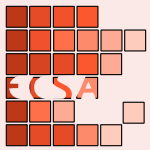 ECSA-2010-Bashroush #automation #modelling #multi #variability
ECSA-2010-Bashroush #automation #modelling #multi #variability- A NUI Based Multiple Perspective Variability Modeling CASE Tool (RB), pp. 523–526.
 ASE-2010-Staats #effectiveness #multi #testing
ASE-2010-Staats #effectiveness #multi #testing- The influence of multiple artifacts on the effectiveness of software testing (MS), pp. 517–522.
 ASE-2010-TanejaLMXT #multi #named #testing #validation #web
ASE-2010-TanejaLMXT #multi #named #testing #validation #web- MiTV: multiple-implementation testing of user-input validators for web applications (KT, NL, MRM, TX, NT), pp. 131–134.
 CASE-2010-MashaeiLSA #design #flexibility #multi
CASE-2010-MashaeiLSA #design #flexibility #multi- Optimal design of a decoupled multiple-loop pallet system for cyclic flexible manufacturing plants (MM, BL, FS, GA), pp. 433–438.
 DAC-2010-ThongN #algorithm #constant #multi #novel
DAC-2010-ThongN #algorithm #constant #multi #novel- A novel optimal single constant multiplication algorithm (JT, NN), pp. 613–616.
 DAC-2010-YoonCPC #analysis #comparative #multi #network #physics
DAC-2010-YoonCPC #analysis #comparative #multi #network #physics- Virtual channels vs. multiple physical networks: a comparative analysis (YJY, NC, MP, LPC), pp. 162–165.
 DATE-2010-AkinSH #configuration management #estimation #hardware #multi
DATE-2010-AkinSH #configuration management #estimation #hardware #multi- A reconfigurable hardware for one bit transform based multiple reference frame Motion Estimation (AA, GS, IH), pp. 393–398.
 DATE-2010-ChenS #implementation #manycore #named #parallel #scalability
DATE-2010-ChenS #implementation #manycore #named #parallel #scalability- pSHS: A scalable parallel software implementation of Montgomery multiplication for multicore systems (ZC, PS), pp. 843–848.
 DATE-2010-IzumiISO #multi
DATE-2010-IzumiISO #multi- Improved countermeasure against Address-bit DPA for ECC scalar multiplication (MI, JI, KS, KO), pp. 981–984.
 DATE-2010-JunYC #library #multi #network #synthesis
DATE-2010-JunYC #library #multi #network #synthesis- Exploiting multiple switch libraries in topology synthesis of on-chip interconnection network (MJ, SY, EYC), pp. 1390–1395.
 DATE-2010-MartinelloMRR #approach #logic #multi #named #synthesis
DATE-2010-MartinelloMRR #approach #logic #multi #named #synthesis- KL-Cuts: A new approach for logic synthesis targeting multiple output blocks (OM, FSM, RPR, AIR), pp. 777–782.
 DATE-2010-SterponeB #algorithm #multi
DATE-2010-SterponeB #algorithm #multi- A new placement algorithm for the mitigation of multiple cell upsets in SRAM-based FPGAs (LS, NB), pp. 1231–1236.
 DATE-2010-WuLCT #abstraction #automation #generative #multi #performance
DATE-2010-WuLCT #abstraction #automation #generative #multi #performance- Automatic generation of software TLM in multiple abstraction layers for efficient HW/SW co-simulation (MHW, WCL, CYC, RST), pp. 1177–1182.
 DATE-2010-YeHL #fault #multi
DATE-2010-YeHL #fault #multi- Diagnosis of multiple arbitrary faults with mask and reinforcement effect (JY, YH, XL), pp. 885–890.
 DocEng-2010-BalinskyS #difference #documentation #multi #workflow
DocEng-2010-BalinskyS #difference #documentation #multi #workflow- Differential access for publicly-posted composite documents with multiple workflow participants (HB, SJS), pp. 115–124.
 SIGMOD-2010-CuiTZZ #multi #social #social media
SIGMOD-2010-CuiTZZ #multi #social #social media- Multiple feature fusion for social media applications (BC, AKHT, CZ, ZZ), pp. 435–446.
 SIGMOD-2010-SiferLWB #corpus #keyword #multi #summary
SIGMOD-2010-SiferLWB #corpus #keyword #multi #summary- Integrating keyword search with multiple dimension tree views over a summary corpus data cube (MS, JL, YW, SB), pp. 1167–1170.
 SIGMOD-2010-SmithBWYMMB #multi #similarity
SIGMOD-2010-SmithBWYMMB #multi #similarity- Exploring schema similarity at multiple resolutions (KPS, CB, CW, BY, MM, PM, DB), pp. 1179–1182.
 SIGMOD-2010-WuOT #multi #online #query
SIGMOD-2010-WuOT #multi #online #query- Continuous sampling for online aggregation over multiple queries (SW, BCO, KLT), pp. 651–662.
 VLDB-2010-AraiDGHK #approach #cost analysis #multi #retrieval
VLDB-2010-AraiDGHK #approach #cost analysis #multi #retrieval- An Access Cost-Aware Approach for Object Retrieval over Multiple Sources (BA, GD, DG, VH, NK), pp. 1125–1136.
 VLDB-2010-NykielPMKK #multi #named #pipes and filters #query
VLDB-2010-NykielPMKK #multi #named #pipes and filters #query- MRShare: Sharing Across Multiple Queries in MapReduce (TN, MP, CM, GK, NK), pp. 494–505.
 FASE-2010-GhezziMS #automation #case study #multi #specification #validation
FASE-2010-GhezziMS #automation #case study #multi #specification #validation- Automatic Cross Validation of Multiple Specifications: A Case Study (CG, AM, GS), pp. 233–247.
 ICALP-v1-2010-FountoulakisP #multi #power of #random
ICALP-v1-2010-FountoulakisP #multi #power of #random- Orientability of Random Hypergraphs and the Power of Multiple Choices (NF, KP), pp. 348–359.
 ICALP-v2-2010-MertziosSSZ #multi #network #set
ICALP-v2-2010-MertziosSSZ #multi #network #set- Placing Regenerators in Optical Networks to Satisfy Multiple Sets of Requests (GBM, IS, MS, SZ), pp. 333–344.
 LATA-2010-KanazawaS #context-free grammar #multi #power of
LATA-2010-KanazawaS #context-free grammar #multi #power of- The Copying Power of Well-Nested Multiple Context-Free Grammars (MK, SS), pp. 344–355.
 LATA-2010-YoshinakaKS #context-free grammar #multi
LATA-2010-YoshinakaKS #context-free grammar #multi- Chomsky-Schützenberger-Type Characterization of Multiple Context-Free Languages (RY, YK, HS), pp. 596–607.
 CHI-2010-AmershiFKT #concept #interactive #learning #modelling #multi
CHI-2010-AmershiFKT #concept #interactive #learning #modelling #multi- Examining multiple potential models in end-user interactive concept learning (SA, JF, AK, DST), pp. 1357–1360.
 CHI-2010-DantecE #bound #information management #multi
CHI-2010-DantecE #bound #information management #multi- Across boundaries of influence and accountability: the multiple scales of public sector information systems (CALD, WKE), pp. 113–122.
 CHI-2010-FreirePSG #analysis #interface #multi #named #network #visualisation
CHI-2010-FreirePSG #analysis #interface #multi #named #network #visualisation- ManyNets: an interface for multiple network analysis and visualization (MF, CP, BS, JG), pp. 213–222.
 CSCW-2010-AmershiMMBT #multi
CSCW-2010-AmershiMMBT #multi- Multiple mouse text entry for single-display groupware (SA, MRM, NM, RB, KT), pp. 169–178.
 ICEIS-SAIC-2010-Foster10a #adaptation #guidelines #industrial #multi
ICEIS-SAIC-2010-Foster10a #adaptation #guidelines #industrial #multi- Adapting Multiple-Choice Item-writing Guidelines to an Industrial Context (RMF), pp. 71–74.
 CIKM-2010-AzizR #data flow #multi #predict #robust #semistructured data
CIKM-2010-AzizR #data flow #multi #predict #robust #semistructured data- Robust prediction from multiple heterogeneous data sources with partial information (MSA, CKR), pp. 1857–1860.
 CIKM-2010-ComarTJ #learning #multi #network
CIKM-2010-ComarTJ #learning #multi #network- Multi task learning on multiple related networks (PMC, PNT, AKJ), pp. 1737–1740.
 CIKM-2010-ZhuangLSHXSX #classification #collaboration #mining #multi
CIKM-2010-ZhuangLSHXSX #classification #collaboration #mining #multi- Collaborative Dual-PLSA: mining distinction and commonality across multiple domains for text classification (FZ, PL, ZS, QH, YX, ZS, HX), pp. 359–368.
 ECIR-2010-KimZH #multi #order
ECIR-2010-KimZH #multi #order- Aggregation of Multiple Judgments for Evaluating Ordered Lists (HDK, CZ, JH), pp. 166–178.
 ICML-2010-CaoLY #learning #multi #predict
ICML-2010-CaoLY #learning #multi #predict- Transfer Learning for Collective Link Prediction in Multiple Heterogenous Domains (BC, NNL, QY), pp. 159–166.
 ICML-2010-DeselaersF #learning #multi #random
ICML-2010-DeselaersF #learning #multi #random- A Conditional Random Field for Multiple-Instance Learning (TD, VF), pp. 287–294.
 ICML-2010-KalyanakrishnanS #multi #performance #theory and practice
ICML-2010-KalyanakrishnanS #multi #performance #theory and practice- Efficient Selection of Multiple Bandit Arms: Theory and Practice (SK, PS), pp. 511–518.
 ICML-2010-KimT10a #learning #multi #process
ICML-2010-KimT10a #learning #multi #process- Gaussian Processes Multiple Instance Learning (MK, FDlT), pp. 535–542.
 ICML-2010-LiangS #interactive #learning #multi #on the
ICML-2010-LiangS #interactive #learning #multi #on the- On the Interaction between Norm and Dimensionality: Multiple Regimes in Learning (PL, NS), pp. 647–654.
 ICML-2010-LizotteBM #analysis #learning #multi #performance #random
ICML-2010-LizotteBM #analysis #learning #multi #performance #random- Efficient Reinforcement Learning with Multiple Reward Functions for Randomized Controlled Trial Analysis (DJL, MHB, SAM), pp. 695–702.
 ICML-2010-NiuDJ #clustering #multi
ICML-2010-NiuDJ #clustering #multi- Multiple Non-Redundant Spectral Clustering Views (DN, JGD, MIJ), pp. 831–838.
 ICML-2010-XuJYKL #kernel #learning #multi #performance
ICML-2010-XuJYKL #kernel #learning #multi #performance- Simple and Efficient Multiple Kernel Learning by Group Lasso (ZX, RJ, HY, IK, MRL), pp. 1175–1182.
 ICPR-2010-AlySTT #multi #recognition #robust #self #similarity #using
ICPR-2010-AlySTT #multi #recognition #robust #self #similarity #using- Robust Face Recognition Using Multiple Self-Organized Gabor Features and Local Similarity Matching (SKHA, AS, NT, RiT), pp. 2909–2912.
 ICPR-2010-Amores #case study #comparative #multi
ICPR-2010-Amores #case study #comparative #multi- Vocabulary-Based Approaches for Multiple-Instance Data: A Comparative Study (JA), pp. 4246–4250.
 ICPR-2010-BazzaniCPFM #identification #multi
ICPR-2010-BazzaniCPFM #identification #multi- Multiple-Shot Person Re-identification by HPE Signature (LB, MC, AP, MF, VM), pp. 1413–1416.
 ICPR-2010-BoltonG #framework #learning #multi #optimisation #random #set
ICPR-2010-BoltonG #framework #learning #multi #optimisation #random #set- Cross Entropy Optimization of the Random Set Framework for Multiple Instance Learning (JB, PDG), pp. 3907–3910.
 ICPR-2010-CaiHTP #multi
ICPR-2010-CaiHTP #multi- Recovering the Topology of Multiple Cameras by Finding Continuous Paths in a Trellis (YC, KH, TT, MP), pp. 3541–3544.
 ICPR-2010-CaoZGXG #image #multi
ICPR-2010-CaoZGXG #image #multi- Matching Image with Multiple Local Features (YC, HZ, YG, XX, JG), pp. 519–522.
 ICPR-2010-ChenNW #estimation #multi #using
ICPR-2010-ChenNW #estimation #multi #using- Actual Midline Estimation from Brain CT Scan Using Multiple Regions Shape Matching (WC, KN, KW), pp. 2552–2555.
 ICPR-2010-ChoiMLSBPF #3d #multi #re-engineering #using
ICPR-2010-ChoiMLSBPF #3d #multi #re-engineering #using- 3D Face Reconstruction Using a Single or Multiple Views (JC, GGM, YL, LS, ORPB, MP, TCF), pp. 3959–3962.
 ICPR-2010-DuinOL #classification #multi
ICPR-2010-DuinOL #classification #multi- Classification of Volcano Events Observed by Multiple Seismic Stations (RPWD, MOA, JMLB), pp. 1052–1055.
 ICPR-2010-DundarBRJSG #approach #classification #learning #multi #towards
ICPR-2010-DundarBRJSG #approach #classification #learning #multi #towards- A Multiple Instance Learning Approach toward Optimal Classification of Pathology Slides (MD, SB, VCR, RKJ, OS, MNG), pp. 2732–2735.
 ICPR-2010-FouheySB #detection #image #multi #using
ICPR-2010-FouheySB #detection #image #multi #using- Multiple Plane Detection in Image Pairs Using J-Linkage (DFF, DS, AJB), pp. 336–339.
 ICPR-2010-FujiyamaSS #geometry #multi
ICPR-2010-FujiyamaSS #geometry #multi- Multiple View Geometries for Mirrors and Cameras (SF, FS, JS), pp. 45–48.
 ICPR-2010-GonenA #kernel #locality #multi
ICPR-2010-GonenA #kernel #locality #multi- Localized Multiple Kernel Regression (MG, EA), pp. 1425–1428.
 ICPR-2010-GuoJWG #multi
ICPR-2010-GuoJWG #multi- Finding Multiple Object Instances with Occlusion (GG, TJ, YW, WG), pp. 3878–3881.
 ICPR-2010-HanL #biology #classification #multi
ICPR-2010-HanL #biology #classification #multi- A Hierarchical GIST Model Embedding Multiple Biological Feasibilities for Scene Classification (YH, GL), pp. 3109–3112.
 ICPR-2010-HayashiUPS #artificial reality #detection #multi
ICPR-2010-HayashiUPS #artificial reality #detection #multi- An Augmented Reality Setup with an Omnidirectional Camera Based on Multiple Object Detection (TH, HU, JP, HS), pp. 3171–3174.
 ICPR-2010-HoriKY #generative #image #multi #sequence #using
ICPR-2010-HoriKY #generative #image #multi #sequence #using- Arbitrary Stereoscopic View Generation Using Multiple Omnidirectional Image Sequences (MH, MK, NY), pp. 286–289.
 ICPR-2010-IiyamaKM #image #multi
ICPR-2010-IiyamaKM #image #multi- Super-Resolution Texture Mapping from Multiple View Images (MI, KK, MM), pp. 1820–1823.
 ICPR-2010-JhuoL #kernel #learning #multi #recognition
ICPR-2010-JhuoL #kernel #learning #multi #recognition- Boosted Multiple Kernel Learning for Scene Category Recognition (IHJ, DTL), pp. 3504–3507.
 ICPR-2010-KatoSS #constraints #geometry #multi
ICPR-2010-KatoSS #constraints #geometry #multi- Extended Multiple View Geometry for Lights and Cameras from Photometric and Geometric Constraints (KK, FS, JS), pp. 2110–2113.
 ICPR-2010-KosmopoulosVV #behaviour #modelling #multi #robust
ICPR-2010-KosmopoulosVV #behaviour #modelling #multi #robust- Robust Human Behavior Modeling from Multiple Cameras (DIK, AV, TAV), pp. 3575–3578.
 ICPR-2010-KotsiaP #multi
ICPR-2010-KotsiaP #multi- Multiplicative Update Rules for Multilinear Support Tensor Machines (IK, IP), pp. 33–36.
 ICPR-2010-KrajewskiBK #case study #classification #detection #multi #self #speech
ICPR-2010-KrajewskiBK #case study #classification #detection #multi #self #speech- Comparing Multiple Classifiers for Speech-Based Detection of Self-Confidence — A Pilot Study (JK, AB, SK), pp. 3716–3719.
 ICPR-2010-LiS #kernel #multi
ICPR-2010-LiS #kernel #multi- Nonlinear Combination of Multiple Kernels for Support Vector Machines (JL, SS), pp. 2889–2892.
 ICPR-2010-LiuYZH #multi #recognition
ICPR-2010-LiuYZH #multi #recognition- Action Recognition by Multiple Features and Hyper-Sphere Multi-class SVM (JL, JY, YZ, XH), pp. 3744–3747.
 ICPR-2010-LuoBTV #estimation #multi #re-engineering
ICPR-2010-LuoBTV #estimation #multi #re-engineering- Human Pose Estimation for Multiple Persons Based on Volume Reconstruction (XL, BB, RTT, RCV), pp. 3591–3594.
 ICPR-2010-NiSRM #learning #multi #online
ICPR-2010-NiSRM #learning #multi #online- Particle Filter Tracking with Online Multiple Instance Learning (ZN, SS, AR, BSM), pp. 2616–2619.
 ICPR-2010-PapalazarouRW #detection #estimation #image #multi #using
ICPR-2010-PapalazarouRW #detection #estimation #image #multi #using- Multiple Model Estimation for the Detection of Curvilinear Segments in Medical X-ray Images Using Sparse-plus-dense-RANSAC (CP, PMJR, PHNdW), pp. 2484–2487.
 ICPR-2010-SchelsS #approach #classification #image #multi #sequence
ICPR-2010-SchelsS #approach #classification #image #multi #sequence- A Multiple Classifier System Approach for Facial Expressions in Image Sequences Utilizing GMM Supervectors (MS, FS), pp. 4251–4254.
 ICPR-2010-SfikasHN #analysis #clustering #multi #using
ICPR-2010-SfikasHN #analysis #clustering #multi #using- Multiple Atlas Inference and Population Analysis Using Spectral Clustering (GS, CH, CN), pp. 2500–2503.
 ICPR-2010-SternigRB #classification #learning #multi
ICPR-2010-SternigRB #classification #learning #multi- Inverse Multiple Instance Learning for Classifier Grids (SS, PMR, HB), pp. 770–773.
 ICPR-2010-TorkiEL #learning #multi #representation #set
ICPR-2010-TorkiEL #learning #multi #representation #set- Learning a Joint Manifold Representation from Multiple Data Sets (MT, AME, CSL), pp. 1068–1071.
 ICPR-2010-UchiyamaDTIM #image #multi #sequence
ICPR-2010-UchiyamaDTIM #image #multi #sequence- Removal of Moving Objects from a Street-View Image by Fusing Multiple Image Sequences (HU, DD, TT, II, HM), pp. 3456–3459.
 ICPR-2010-VillamizarMAS #category theory #detection #multi #performance #random
ICPR-2010-VillamizarMAS #category theory #detection #multi #performance #random- Shared Random Ferns for Efficient Detection of Multiple Categories (MV, FMN, JAC, AS), pp. 388–391.
 ICPR-2010-WangH #multi #random #recognition #using
ICPR-2010-WangH #multi #random #recognition #using- Cancelable Face Recognition Using Random Multiplicative Transform (YW, DH), pp. 1261–1264.
 ICPR-2010-WangH10a #case study #classification #design #multi #prototype #using
ICPR-2010-WangH10a #case study #classification #design #multi #prototype #using- A Study of Designing Compact Recognizers of Handwritten Chinese Characters Using Multiple-Prototype Based Classifiers (YW, QH), pp. 1872–1875.
 ICPR-2010-WangJHT #higher-order #kernel #learning #multi
ICPR-2010-WangJHT #higher-order #kernel #learning #multi- Multiple Kernel Learning with High Order Kernels (SW, SJ, QH, QT), pp. 2138–2141.
 ICPR-2010-WanS #geometry #multi
ICPR-2010-WanS #geometry #multi- Multiple View Geometry for Non-rigid Motions Viewed from Curvilinear Motion Projective Cameras (CW, JS), pp. 181–184.
 ICPR-2010-XiaoZZS #classification #multi
ICPR-2010-XiaoZZS #classification #multi- Data Classification on Multiple Manifolds (RX, QZ, DZ, PS), pp. 3898–3901.
 ICPR-2010-XingAL #detection #learning #multi
ICPR-2010-XingAL #detection #learning #multi- Multiple Human Tracking Based on Multi-view Upper-Body Detection and Discriminative Learning (JX, HA, SL), pp. 1698–1701.
 ICPR-2010-YaegashiY #kernel #learning #multi #recognition #using
ICPR-2010-YaegashiY #kernel #learning #multi #recognition #using- Geotagged Photo Recognition Using Corresponding Aerial Photos with Multiple Kernel Learning (KY, KY), pp. 3272–3275.
 ICPR-2010-ZareG #multi #pattern matching #pattern recognition #recognition #using
ICPR-2010-ZareG #multi #pattern matching #pattern recognition #recognition #using- Pattern Recognition Using Functions of Multiple Instances (AZ, PDG), pp. 1092–1095.
 ICPR-2010-ZenLMR #multi #people
ICPR-2010-ZenLMR #multi #people- Tracking Multiple People with Illumination Maps (GZ, OL, SM, ER), pp. 3484–3487.
 ICPR-2010-ZhangJ #geometry #multi
ICPR-2010-ZhangJ #geometry #multi- Visibility of Multiple Cameras in a Scene with Unknown Geometry (LZ, YJ), pp. 3619–3622.
 ICPR-2010-ZhangLD #approach #kernel #learning #multi #named #novel
ICPR-2010-ZhangLD #approach #kernel #learning #multi #named #novel- AdaMKL: A Novel Biconvex Multiple Kernel Learning Approach (ZZ, ZNL, MSD), pp. 2126–2129.
 ICPR-2010-ZwengK #behaviour #image #multi #recognition #sequence #using
ICPR-2010-ZwengK #behaviour #image #multi #recognition #sequence #using- Unexpected Human Behavior Recognition in Image Sequences Using Multiple Features (AZ, MK), pp. 368–371.
 KDD-2010-AgarwalAKK #modelling #multi #scalability
KDD-2010-AgarwalAKK #modelling #multi #scalability- Estimating rates of rare events with multiple hierarchies through scalable log-linear models (DA, RA, RK, NK), pp. 213–222.
 KDD-2010-ChenLY #learning #multi #rank
KDD-2010-ChenLY #learning #multi #rank- Learning incoherent sparse and low-rank patterns from multiple tasks (JC, JL, JY), pp. 1179–1188.
 KDD-2010-DasMSO #algorithm #case study #detection #kernel #learning #multi #safety
KDD-2010-DasMSO #algorithm #case study #detection #kernel #learning #multi #safety- Multiple kernel learning for heterogeneous anomaly detection: algorithm and aviation safety case study (SD, BLM, ANS, NCO), pp. 47–56.
 KDD-2010-ZhangSZL #corpus #correlation #multi #process
KDD-2010-ZhangSZL #corpus #correlation #multi #process- Evolutionary hierarchical dirichlet processes for multiple correlated time-varying corpora (JZ, YS, CZ, SL), pp. 1079–1088.
 KDIR-2010-HelouA #metric #multi #semantics #using
KDIR-2010-HelouA #metric #multi #semantics #using- Semantic Measures based on Wordnet using Multiple Information Sources (MAH, AA), pp. 500–503.
 KEOD-2010-ArdilaAL #kernel #learning #multi #ontology
KEOD-2010-ArdilaAL #kernel #learning #multi #ontology- Multiple Kernel Learning for Ontology Instance Matching (DA, JA, FL), pp. 311–318.
 KMIS-2010-DotoliF #multi #optimisation
KMIS-2010-DotoliF #multi #optimisation- A Hierarchical Vendor Selection Optimization Technique for Multiple Sourcing (MD, MF), pp. 195–200.
 RecSys-2010-JamborW #collaboration #multi #optimisation
RecSys-2010-JamborW #collaboration #multi #optimisation- Optimizing multiple objectives in collaborative filtering (TJ, JW), pp. 55–62.
 RecSys-2010-WuGC #identification #multi
RecSys-2010-WuGC #identification #multi- Merging multiple criteria to identify suspicious reviews (GW, DG, PC), pp. 241–244.
 SEKE-2010-BadashianAKDSM #categorisation #multi #named
SEKE-2010-BadashianAKDSM #categorisation #multi #named- CFM: A File Manager with Multiple Categorization Support (ASB, HA, IK, MAD, MSS, MM), pp. 748–751.
 SIGIR-2010-KimC #documentation #multi #ranking #using
SIGIR-2010-KimC #documentation #multi #ranking #using- Ranking using multiple document types in desktop search (JK, WBC), pp. 50–57.
 SIGIR-2010-SeoC #documentation #geometry #multi
SIGIR-2010-SeoC #documentation #geometry #multi- Geometric representations for multiple documents (JS, WBC), pp. 251–258.
 MoDELS-v1-2010-NoyritGTS #consistency #modelling #multi #uml #using
MoDELS-v1-2010-NoyritGTS #consistency #modelling #multi #uml #using- Consistent Modeling Using Multiple UML Profiles (FN, SG, FT, BS), pp. 392–406.
 OOPSLA-2010-DumitrasNT #multi #online
OOPSLA-2010-DumitrasNT #multi #online- To upgrade or not to upgrade: impact of online upgrades across multiple administrative domains (TD, PN, ET), pp. 865–876.
 OOPSLA-2010-StadenC #abstraction #multi #reasoning
OOPSLA-2010-StadenC #abstraction #multi #reasoning- Reasoning about multiple related abstractions with MultiStar (SvS, CC), pp. 504–519.
 REFSQ-2010-SikoraDP #abstraction #consistency #multi #specification
REFSQ-2010-SikoraDP #abstraction #consistency #multi #specification- Supporting the Consistent Specification of Scenarios across Multiple Abstraction Levels (ES, MD, KP), pp. 45–59.
 SAC-OOPS-J-2008-HallettLRS10 #multi #type system
SAC-OOPS-J-2008-HallettLRS10 #multi #type system- Integrating coercion with subtyping and multiple dispatch (JJH, VL, SR, GLSJ), pp. 787–795.
 SAC-2010-FlouriMJ #automaton #multi
SAC-2010-FlouriMJ #automaton #multi- Aho-Corasick like multiple subtree matching by pushdown automata (TF, BM, JJ), pp. 2157–2158.
 SAC-2010-HongSE #multi
SAC-2010-HongSE #multi- WMS-extracting multiple sections data records from search engine results pages (JLH, EGS, SE), pp. 1696–1701.
 SAC-2010-JungCKCGK #interface #multi #network #protocol #stack
SAC-2010-JungCKCGK #interface #multi #network #protocol #stack- Virtual protocol stack interface for multiple wireless sensor network simulators (JJ, YC, YK, YC, BG, JK), pp. 240–241.
 SAC-2010-KimKMY #multi #network #predict #probability #using
SAC-2010-KimKMY #multi #network #predict #probability #using- Probabilistic context prediction using time-inferred multiple pattern networks (YHK, WK, KM, YY), pp. 1015–1019.
 SAC-2010-KimY #multi #personalisation #recommendation
SAC-2010-KimY #multi #personalisation #recommendation- New theoretical findings in multiple personalized recommendations (YHK, YY), pp. 94–98.
 SAC-2010-SiebertCC #coordination #distributed #modelling #multi
SAC-2010-SiebertCC #coordination #distributed #modelling #multi- Agents & artefacts for multiple models coordination: objective and decentralized coordination of simulators (JS, LC, VC), pp. 2024–2028.
 HPCA-2010-KimHMH #algorithm #memory management #multi #named #scalability #scheduling
HPCA-2010-KimHMH #algorithm #memory management #multi #named #scalability #scheduling- ATLAS: A scalable and high-performance scheduling algorithm for multiple memory controllers (YK, DH, OM, MHB), pp. 1–12.
 HPDC-2010-GehaniK #multi #named #trust #verification
HPDC-2010-GehaniK #multi #named #trust #verification- Mendel: efficiently verifying the lineage of data modified in multiple trust domains (AG, MK), pp. 227–239.
 HPDC-2010-PanBM #multi #pipes and filters #query
HPDC-2010-PanBM #multi #pipes and filters #query- Parallelizing multiple group-by query in share-nothing environment: a MapReduce study case (JP, YLB, FM), pp. 856–863.
 ISMM-2010-TianFG #parallel #predict #using
ISMM-2010-TianFG #parallel #predict #using- Speculative parallelization using state separation and multiple value prediction (CT, MF, RG), pp. 63–72.
 CSL-2010-CarraroES #exponential #infinity #multi
CSL-2010-CarraroES #exponential #infinity #multi- Exponentials with Infinite Multiplicities (AC, TE, AS), pp. 170–184.
 ISSTA-2010-SantelicesH #dependence #execution #multi #scalability #symbolic computation
ISSTA-2010-SantelicesH #dependence #execution #multi #scalability #symbolic computation- Exploiting program dependencies for scalable multiple-path symbolic execution (RAS, MJH), pp. 195–206.
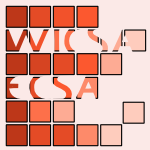 WICSA-ECSA-2009-RazavizadehVCD #architecture #multi
WICSA-ECSA-2009-RazavizadehVCD #architecture #multi- Multiple viewpoints architecture extraction (AR, HV, SC, SD), pp. 329–332.
 ASE-2009-AbreuZG #fault #locality #multi
ASE-2009-AbreuZG #fault #locality #multi- Spectrum-Based Multiple Fault Localization (RA, PZ, AJCvG), pp. 88–99.
 ASE-2009-DeanPMW #approach #automation #fault #linear #locality #multi #programming
ASE-2009-DeanPMW #approach #automation #fault #linear #locality #multi #programming- A Linear Programming Approach for Automated Localization of Multiple Faults (BCD, WBP, BAM, AAW), pp. 640–644.
 CASE-2009-BahugunaRK #locality #multi
CASE-2009-BahugunaRK #locality #multi- MDP based active localization for multiple robots (JB, BR, KMK), pp. 635–640.
 CASE-2009-ChiddarwarB #coordination #multi
CASE-2009-ChiddarwarB #coordination #multi- Dynamic priority allocation for conflict free coordinated manipulation of multiple agents (SSC, NRB), pp. 549–554.
 CASE-2009-SinghKP #fault #markov #multi
CASE-2009-SinghKP #fault #markov #multi- A factorial hidden markov model (FHMM)-based reasoner for diagnosing multiple intermittent faults (SS, AK, KRP), pp. 146–151.
 DAC-2009-ArfaeeILFK #linear #multi #named #performance
DAC-2009-ArfaeeILFK #linear #multi #named #performance- Xquasher: a tool for efficient computation of multiple linear expressions (AA, AI, NL, FF, RK), pp. 254–257.
 DAC-2009-GargMMO #design #multi #perspective
DAC-2009-GargMMO #design #multi #perspective- Technology-driven limits on DVFS controllability of multiple voltage-frequency island designs: a system-level perspective (SG, DM, RM, ÜYO), pp. 818–821.
 DAC-2009-ShojaeiGBGSH #composition #heuristic #multi #runtime
DAC-2009-ShojaeiGBGSH #composition #heuristic #multi #runtime- A parameterized compositional multi-dimensional multiple-choice knapsack heuristic for CMP run-time management (HS, AHG, TB, MG, SS, RH), pp. 917–922.
 DATE-2009-KhursheedAH #design #fault #multi #reduction
DATE-2009-KhursheedAH #design #fault #multi #reduction- Test cost reduction for multiple-voltage designs with bridge defects through Gate-Sizing (SSK, BMAH, PH), pp. 1349–1354.
 DATE-2009-TangGCR #generative #multi
DATE-2009-TangGCR #generative #multi- Improving compressed test pattern generation for multiple scan chain failure diagnosis (XT, RG, WTC, SMR), pp. 1000–1005.
 HT-2009-MitchellM #authoring #design #hypermedia #multi #tool support
HT-2009-MitchellM #authoring #design #hypermedia #multi #tool support- Designing hypertext tools to facilitate authoring multiple points-of-view stories (AM, KM), pp. 309–316.
 ICDAR-2009-HamdaniAKA #multi #online #recognition #using
ICDAR-2009-HamdaniAKA #multi #online #recognition #using- Combining Multiple HMMs Using On-line and Off-line Features for Off-line Arabic Handwriting Recognition (MH, HEA, MK, AMA), pp. 201–205.
 ICDAR-2009-YinHTSN #classification #multi #recognition
ICDAR-2009-YinHTSN #classification #multi #recognition- Rejection Strategies with Multiple Classifiers for Handwritten Character Recognition (XCY, HWH, YFT, JS, SN), pp. 1126–1130.
 ICDAR-2009-YiPX #integration #multi #recognition #using #video
ICDAR-2009-YiPX #integration #multi #recognition #using #video- Using Multiple Frame Integration for the Text Recognition of Video (JY, YP, JX), pp. 71–75.
 SIGMOD-2009-ChenKM #analysis #multi
SIGMOD-2009-ChenKM #analysis #multi- Exploiting context analysis for combining multiple entity resolution systems (ZC, DVK, SM), pp. 207–218.
 VLDB-2009-CohenKS #coordination #multi
VLDB-2009-CohenKS #coordination #multi- Coordinated Weighted Sampling for Estimating Aggregates Over Multiple Weight Assignments (EC, HK, SS), pp. 646–657.
 VLDB-2009-DasAAA #architecture #concurrent #data type #manycore #thread
VLDB-2009-DasAAA #architecture #concurrent #data type #manycore #thread- Thread Cooperation in Multicore Architectures for Frequency Counting over Multiple Data Streams (SD, SA, DA, AEA), pp. 217–228.
 VLDB-2009-UMM #algorithm #multi #query
VLDB-2009-UMM #algorithm #multi #query- A Fair Assignment Algorithm for Multiple Preference Queries (LHU, NM, KM), pp. 1054–1065.
 VLDB-2009-XiaoTC #multi #privacy #random
VLDB-2009-XiaoTC #multi #privacy #random- Optimal Random Perturbation at Multiple Privacy Levels (XX, YT, MC), pp. 814–825.
 VLDB-2009-YangRW #execution #mining #multi #streaming
VLDB-2009-YangRW #execution #mining #multi #streaming- A Shared Execution Strategy for Multiple Pattern Mining Requests over Streaming Data (DY, EAR, MOW), pp. 874–885.
 ICSM-2009-JeffreyGG #effectiveness #fault #locality #multi #performance #using
ICSM-2009-JeffreyGG #effectiveness #fault #locality #multi #performance #using- Effective and efficient localization of multiple faults using value replacement (DJ, NG, RG), pp. 221–230.
 ICSM-2009-LiGMMMGC #analysis #component #fault #multi #pervasive #scalability
ICSM-2009-LiGMMMGC #analysis #component #fault #multi #pervasive #scalability- Analysis of pervasive multiple-component defects in a large software system (ZL, MG, SSM, NHM, AVM, DG, EC), pp. 265–273.
 WCRE-1999-YangPZ99a #concept analysis #data access #feature model #multi #semantics #using
WCRE-1999-YangPZ99a #concept analysis #data access #feature model #multi #semantics #using- Domain Feature Model Recovery from Multiple Applications Using Data Access Semantics and Formal Concept Analysis (YY, XP, WZ), pp. 215–224.
 STOC-2009-AzarGY #multi #ranking
STOC-2009-AzarGY #multi #ranking- Multiple intents re-ranking (YA, IG, XY), pp. 669–678.
 STOC-2009-KleinbergPT #game studies #learning #multi
STOC-2009-KleinbergPT #game studies #learning #multi- Multiplicative updates outperform generic no-regret learning in congestion games: extended abstract (RK, GP, ÉT), pp. 533–542.
 DLT-2009-Kanazawa #context-free grammar #multi
DLT-2009-Kanazawa #context-free grammar #multi- The Pumping Lemma for Well-Nested Multiple Context-Free Languages (MK), pp. 312–325.
 ICALP-v1-2009-ElsasserS #bound #multi #random
ICALP-v1-2009-ElsasserS #bound #multi #random- Tight Bounds for the Cover Time of Multiple Random Walks (RE, TS), pp. 415–426.
 ICALP-v2-2009-CooperFR #multi #random
ICALP-v2-2009-CooperFR #multi #random- Multiple Random Walks and Interacting Particle Systems (CC, AMF, TR), pp. 399–410.
 LATA-2009-Bollig #bound #complexity #integer #multi
LATA-2009-Bollig #bound #complexity #integer #multi- Larger Lower Bounds on the OBDD Complexity of Integer Multiplication (BB), pp. 212–223.
 IFM-2009-DovlandJOS #incremental #inheritance #multi #reasoning
IFM-2009-DovlandJOS #incremental #inheritance #multi #reasoning- Incremental Reasoning for Multiple Inheritance (JD, EBJ, OO, MS), pp. 215–230.
 SEFM-2009-BersaniFPR #modelling #multi #paradigm #realtime #verification
SEFM-2009-BersaniFPR #modelling #multi #paradigm #realtime #verification- Integrated Modeling and Verification of Real-Time Systems through Multiple Paradigms (MMB, CAF, MP, MR), pp. 13–22.
 CHI-2009-EverittBFK #multi #visual notation
CHI-2009-EverittBFK #multi #visual notation- A comprehensive study of frequency, interference, and training of multiple graphical passwords (KE, TB, JF, TK), pp. 889–898.
 CHI-2009-ParkKCS #aspect-oriented #bias #multi #named
CHI-2009-ParkKCS #aspect-oriented #bias #multi #named- NewsCube: delivering multiple aspects of news to mitigate media bias (SP, SK, SC, JS), pp. 443–452.
 CHI-2009-RothT #mobile #multi
CHI-2009-RothT #mobile #multi- Bezel swipe: conflict-free scrolling and multiple selection on mobile touch screen devices (VR, TT), pp. 1523–1526.
 CHI-2009-TalbotLKT #classification #interactive #machine learning #multi #named #visualisation
CHI-2009-TalbotLKT #classification #interactive #machine learning #multi #named #visualisation- EnsembleMatrix: interactive visualization to support machine learning with multiple classifiers (JT, BL, AK, DST), pp. 1283–1292.
 HCI-NT-2009-MatsudaUOM #analysis #eye tracking #multi
HCI-NT-2009-MatsudaUOM #analysis #eye tracking #multi- An Analysis of Eye Movements during Browsing Multiple Search Results Pages (YM, HU, MO, KiM), pp. 121–130.
 HCI-VAD-2009-DoL #3d #artificial reality #game studies #multi
HCI-VAD-2009-DoL #3d #artificial reality #game studies #multi- A Multiple-Level 3D-LEGO Game in Augmented Reality for Improving Spatial Ability (TVD, JWL), pp. 296–303.
 HIMI-II-2009-ChouC09a #fuzzy #multi #perspective
HIMI-II-2009-ChouC09a #fuzzy #multi #perspective- A Fuzzy Multiple Criteria Decision Making Model for Selecting the Distribution Center Location in China: A Taiwanese Manufacturer’s Perspective (CCC, PCC), pp. 140–148.
 HIMI-II-2009-GaoMT #multi #network #social #visualisation
HIMI-II-2009-GaoMT #multi #network #social #visualisation- A Multiple-Aspects Visualization Tool for Exploring Social Networks (JG, KM, JT), pp. 277–286.
 ICEIS-AIDSS-2009-ZhengZLL #case study #classification #image #multi
ICEIS-AIDSS-2009-ZhengZLL #case study #classification #image #multi- Study on Image Classification based on SVM and the Fusion of Multiple Features (DZ, TZ, SL, YL), pp. 80–84.
 ICEIS-DISI-2009-ElarissKG #multi #optimisation #paradigm #query
ICEIS-DISI-2009-ElarissKG #multi #optimisation #paradigm #query- Query Melting — A New Paradigm for GIS Multiple Query Optimization (HEE, SK, DG), pp. 82–90.
 ICEIS-SAIC-2009-ZeeshanCS #case study #multi
ICEIS-SAIC-2009-ZeeshanCS #case study #multi- Influencing Factors for the Adoption of m-Commerce Applications — A Multiple Case Study (SAZ, YC, HS), pp. 53–60.
 CIKM-2009-ParkSNL #multi #named #query
CIKM-2009-ParkSNL #multi #named #query- M-COPE: a multiple continuous query processing engine (HKP, SJS, SHN, WSL), pp. 2065–2066.
 CIKM-2009-WimalasuriyaD #information management #multi #ontology #using
CIKM-2009-WimalasuriyaD #information management #multi #ontology #using- Using multiple ontologies in information extraction (DCW, DD), pp. 235–244.
 ECIR-2009-Efron #aspect-oriented #multi #query #using
ECIR-2009-Efron #aspect-oriented #multi #query #using- Using Multiple Query Aspects to Build Test Collections without Human Relevance Judgments (ME), pp. 276–287.
 ICML-2009-ChenTLY #learning #multi
ICML-2009-ChenTLY #learning #multi- A convex formulation for learning shared structures from multiple tasks (JC, LT, JL, JY), pp. 137–144.
 ICML-2009-DuanTXC #adaptation #classification #multi
ICML-2009-DuanTXC #adaptation #classification #multi- Domain adaptation from multiple sources via auxiliary classifiers (LD, IWT, DX, TSC), pp. 289–296.
 ICML-2009-FooDN #algorithm #learning #multi
ICML-2009-FooDN #algorithm #learning #multi- A majorization-minimization algorithm for (multiple) hyperparameter learning (CSF, CBD, AYN), pp. 321–328.
 ICML-2009-KowalskiSR #kernel #learning #multi
ICML-2009-KowalskiSR #kernel #learning #multi- Multiple indefinite kernel learning with mixed norm regularization (MK, MS, LR), pp. 545–552.
 ICML-2009-McFeeL #kernel #multi #partial order
ICML-2009-McFeeL #kernel #multi #partial order- Partial order embedding with multiple kernels (BM, GRGL), pp. 721–728.
 ICML-2009-RaykarYZJFVBM #learning #multi #trust
ICML-2009-RaykarYZJFVBM #learning #multi #trust- Supervised learning from multiple experts: whom to trust when everyone lies a bit (VCR, SY, LHZ, AKJ, CF, GHV, LB, LM), pp. 889–896.
 ICML-2009-VarmaB #kernel #learning #multi #performance
ICML-2009-VarmaB #kernel #learning #multi #performance- More generality in efficient multiple kernel learning (MV, BRB), pp. 1065–1072.
 KDIR-2009-Abbadeni #multi #representation #retrieval
KDIR-2009-Abbadeni #multi #representation #retrieval- Texture Representation and Retrieval based on Multiple Strategies (NA), pp. 53–61.
 KDIR-2009-FilhoRM #multi #named
KDIR-2009-FilhoRM #multi #named- XHITS — Multiple Roles in a Hyperlinked Structure (FBF, RPR, RLM), pp. 189–195.
 KDIR-2009-PaquetV #2d #3d #multi #product line #realtime
KDIR-2009-PaquetV #2d #3d #multi #product line #realtime- Finding Protein Family Similarities in Real Time through Multiple 3D and 2D Representations, Indexing and Exhaustive Searching (EP, HLV), pp. 127–133.
 KMIS-2009-StockerT #case study #enterprise #multi #wiki
KMIS-2009-StockerT #case study #enterprise #multi #wiki- Exploring the Value of Enterprise Wikis — A Multiple-Case Study (AS, KT), pp. 5–12.
 MLDM-2009-LoglisciM #mining #multi
MLDM-2009-LoglisciM #mining #multi- Mining Multiple Level Non-redundant Association Rules through Two-Fold Pruning of Redundancies (CL, DM), pp. 251–265.
 SEKE-2009-AbranC #estimation #modelling #multi #question
SEKE-2009-AbranC #estimation #modelling #multi #question- Software Estimation: Universal Models or Multiple Models? (AA, JJCG), pp. 625–630.
 SIGIR-2009-CloughSANP #multi #query
SIGIR-2009-CloughSANP #multi #query- Multiple approaches to analysing query diversity (PDC, MS, MA, SN, MLP), pp. 734–735.
 SIGIR-2009-LiuMH #multi #named #ranking #visual notation
SIGIR-2009-LiuMH #multi #named #ranking #visual notation- CrowdReranking: exploring multiple search engines for visual search reranking (YL, TM, XSH), pp. 500–507.
 SIGIR-2009-PunithaJG #automation #feature model #multi #query #retrieval #topic #using #video
SIGIR-2009-PunithaJG #automation #feature model #multi #query #retrieval #topic #using #video- Topic prerogative feature selection using multiple query examples for automatic video retrieval (PP, JMJ, AG), pp. 804–805.
 OOPSLA-2009-DucournauMP #assessment #empirical #implementation #inheritance #multi #object-oriented #static typing #type system
OOPSLA-2009-DucournauMP #assessment #empirical #implementation #inheritance #multi #object-oriented #static typing #type system- Empirical assessment of object-oriented implementations with multiple inheritance and static typing (RD, FM, JP), pp. 41–60.
 OOPSLA-2009-MalayeriA #inheritance #multi #named
OOPSLA-2009-MalayeriA #inheritance #multi #named- CZ: multiple inheritance without diamonds (DM, JA), pp. 21–40.
 PADL-2009-DukeBWR #design #domain-specific language #embedded #multi #source code #visualisation
PADL-2009-DukeBWR #design #domain-specific language #embedded #multi #source code #visualisation- Huge Data But Small Programs: Visualization Design via Multiple Embedded DSLs (DJD, RB, MW, CR), pp. 31–45.
 SAC-2009-Abbadeni #database #information retrieval #multi #query #using #visual notation
SAC-2009-Abbadeni #database #information retrieval #multi #query #using #visual notation- Information retrieval from visual databases using multiple representations and multiple queries (NA), pp. 1523–1527.
 SAC-2009-ChiangWLC #clustering #multi #policy #web
SAC-2009-ChiangWLC #clustering #multi #policy #web- New content-aware request distribution policies in web clusters providing multiple services (MLC, CHW, YJL, YFC), pp. 79–83.
 SAC-2009-JamesC #ml #multi #static analysis
SAC-2009-JamesC #ml #multi #static analysis- Extended static checking in JML4: benefits of multiple-prover support (PRJ, PC), pp. 609–614.
 SAC-2009-JangYC #algorithm #clustering #multi #set
SAC-2009-JangYC #algorithm #clustering #multi #set- A smart clustering algorithm for photo set obtained from multiple digital cameras (CJJ, TY, HGC), pp. 1784–1791.
 SAC-2009-ZhaoZL #abstraction #multi #object-oriented #source code
SAC-2009-ZhaoZL #abstraction #multi #object-oriented #source code- Abstraction of multiple executions of object-oriented programs (CZ, KZ, YL), pp. 549–550.
 ESEC-FSE-2009-NguyenNPAN #graph #mining #multi
ESEC-FSE-2009-NguyenNPAN #graph #mining #multi- Graph-based mining of multiple object usage patterns (TTN, HAN, NHP, JMAK, TNN), pp. 383–392.
 ICSE-2009-SantelicesJYH #lightweight #multi #using
ICSE-2009-SantelicesJYH #lightweight #multi #using- Lightweight fault-localization using multiple coverage types (RAS, JAJ, YY, MJH), pp. 56–66.
 PPoPP-2009-Quintana-OrtiIQG #hardware #linear #multi
PPoPP-2009-Quintana-OrtiIQG #hardware #linear #multi- Solving dense linear systems on platforms with multiple hardware accelerators (GQO, FDI, ESQO, RAvdG), pp. 121–130.
 ICLP-2009-GuzmanCH #implementation #multi
ICLP-2009-GuzmanCH #implementation #multi- A Tabling Implementation Based on Variables with Multiple Bindings (PCdG, MC, MVH), pp. 190–204.
 ICST-2009-SteimannB #fault #multi
ICST-2009-SteimannB #fault #multi- A Simple Coverage-Based Locator for Multiple Faults (FS, MB), pp. 366–375.
 TLCA-2009-Strassburger #higher-order #linear #logic #multi #proving
TLCA-2009-Strassburger #higher-order #linear #logic #multi #proving- Some Observations on the Proof Theory of Second Order Propositional Multiplicative Linear Logic (LS), pp. 309–324.
 CASE-2008-GuetaCAUO #configuration management #design #multi
CASE-2008-GuetaCAUO #configuration management #design #multi- Design of the end-effector tool attachment for robot arm with multiple reconfigurable goals (LBG, RC, TA, TU, JO), pp. 876–881.
 CASE-2008-OkadaQHUK #multi #self
CASE-2008-OkadaQHUK #multi #self- Multiple self-organizing maps for control of a redundant manipulator in an environment with obstacles (NO, JQ, MH, RU, EK), pp. 212–217.
 DAC-2008-FeldmannASSBG #analysis #modelling #multi
DAC-2008-FeldmannASSBG #analysis #modelling #multi- Driver waveform computation for timing analysis with multiple voltage threshold driver models (PF, SA, DS, GS, RB, HG), pp. 425–428.
 DAC-2008-KwonYHMCE #approach #memory management #parallel
DAC-2008-KwonYHMCE #approach #memory management #parallel- A practical approach of memory access parallelization to exploit multiple off-chip DDR memories (WCK, SY, SMH, BM, KMC, SKE), pp. 447–452.
 DAC-2008-OgrasMM #adaptation #feedback #multi
DAC-2008-OgrasMM #adaptation #feedback #multi- Variation-adaptive feedback control for networks-on-chip with multiple clock domains (ÜYO, RM, DM), pp. 614–619.
 DAC-2008-YeZP #analysis #equation #linear #multi
DAC-2008-YeZP #analysis #equation #linear #multi- Generalized Krylov recycling methods for solution of multiple related linear equation systems in electromagnetic analysis (ZY, ZZ, JRP), pp. 682–687.
 DAC-2008-YuB #fault #multi #using
DAC-2008-YuB #fault #multi #using- Multiple defect diagnosis using no assumptions on failing pattern characteristics (XY, RD(B), pp. 361–366.
 DATE-2008-AmelifardHFP #logic #multi #stack
DATE-2008-AmelifardHFP #logic #multi #stack- A Current Source Model for CMOS Logic Cells Considering Multiple Input Switching and Stack Effect (BA, SH, HF, MP), pp. 568–573.
 DATE-2008-PenazziCDSSM #multi #safety
DATE-2008-PenazziCDSSM #multi #safety- Cooperative Safety: a Combination of Multiple Technologies (RP, PC, MD, AS, MS, EM), pp. 959–961.
 DATE-2008-StefanoBBM #design #multi #pipes and filters #process
DATE-2008-StefanoBBM #design #multi #pipes and filters #process- Process Variation Tolerant Pipeline Design Through a Placement-Aware Multiple Voltage Island Design Style (BS, DB, LB, EM), pp. 967–972.
 DATE-2008-WuCSC #architecture #multi #set
DATE-2008-WuCSC #architecture #multi #set- Instruction Set Extension Exploration in Multiple-Issue Architecture (IWW, ZYC, JJJS, CPC), pp. 764–769.
 HT-2008-SzomszorCA #correlation #folksonomy #multi
HT-2008-SzomszorCA #correlation #folksonomy #multi- Correlating user profiles from multiple folksonomies (MS, IC, HA), pp. 33–42.
 SIGMOD-2008-CaoDCT #multi #optimisation #query
SIGMOD-2008-CaoDCT #multi #optimisation #query- Optimizing complex queries with multiple relation instances (YC, GCD, CYC, KLT), pp. 525–538.
 SIGMOD-2008-NambiarGBM #multi
SIGMOD-2008-NambiarGBM #multi- Helping satisfy multiple objectives during a service desk conversation (UN, HG, RB, MKM), pp. 1147–1158.
 SAS-2008-LalR #data flow #multi #query #using
SAS-2008-LalR #data flow #multi #query #using- Solving Multiple Dataflow Queries Using WPDSs (AL, TWR), pp. 93–109.
 STOC-2008-DeKSS #composition #integer #multi #performance #using
STOC-2008-DeKSS #composition #integer #multi #performance #using- Fast integer multiplication using modular arithmetic (AD, PPK, CS, RS), pp. 499–506.
 ICALP-A-2008-BorosEM #multi #on the
ICALP-A-2008-BorosEM #multi #on the- On Berge Multiplication for Monotone Boolean Dualization (EB, KME, KM), pp. 48–59.
 ICALP-B-2008-BoigelotBB #automaton #finite #multi #on the #set
ICALP-B-2008-BoigelotBB #automaton #finite #multi #on the #set- On the Sets of Real Numbers Recognized by Finite Automata in Multiple Bases (BB, JB, VB), pp. 112–123.
 ICALP-C-2008-JareckiL #authentication #multi #performance
ICALP-C-2008-JareckiL #authentication #multi #performance- Affiliation-Hiding Envelope and Authentication Schemes with Efficient Support for Multiple Credentials (SJ, XL), pp. 715–726.
 CHI-2008-BiehlBBTIC #collaboration #development #evaluation #framework #interactive #multi #named
CHI-2008-BiehlBBTIC #collaboration #development #evaluation #framework #interactive #multi #named- Impromptu: a new interaction framework for supporting collaboration in multiple display environments and its field evaluation for co-located software development (JTB, WTB, BPB, DST, KMI, MC), pp. 939–948.
 CHI-2008-DearmanP #exclamation #multi
CHI-2008-DearmanP #exclamation #multi- It’s on my other computer!: computing with multiple devices (DD, JSP), pp. 767–776.
 CHI-2008-GrimesB #multi #scheduling #social
CHI-2008-GrimesB #multi #scheduling #social- Life scheduling to support multiple social roles (AG, AJBB), pp. 821–824.
 CHI-2008-KobayashiI #multi #scalability #using
CHI-2008-KobayashiI #multi #scalability #using- Ninja cursors: using multiple cursors to assist target acquisition on large screens (MK, TI), pp. 949–958.
 CHI-2008-Muller-TomfeldeS #collaboration #difference #multi
CHI-2008-Muller-TomfeldeS #collaboration #difference #multi- Touchers and mousers: commonalities and differences in co-located collaboration with multiple input devices (CMT, CS), pp. 1149–1152.
 AdaEurope-2008-NarayananK #approach #automation #multi #semantics
AdaEurope-2008-NarayananK #approach #automation #multi #semantics- A Systematic Approach to Automatically Generate Multiple Semantically Equivalent Program Versions (SHKN, MTK), pp. 185–198.
 CIKM-2008-DonmezC #learning #multi
CIKM-2008-DonmezC #learning #multi- Proactive learning: cost-sensitive active learning with multiple imperfect oracles (PD, JGC), pp. 619–628.
 CIKM-2008-KimC #multi #sql
CIKM-2008-KimC #multi #sql- SQL extension for exploring multiple tables (SJK, JJC), pp. 1331–1332.
 CIKM-2008-LuoZHXH #learning #multi
CIKM-2008-LuoZHXH #learning #multi- Transfer learning from multiple source domains via consensus regularization (PL, FZ, HX, YX, QH), pp. 103–112.
 ECIR-2008-JarvelinPDN #evaluation #information retrieval #multi
ECIR-2008-JarvelinPDN #evaluation #information retrieval #multi- Discounted Cumulated Gain Based Evaluation of Multiple-Query IR Sessions (KJ, SLP, LMLD, MLN), pp. 4–15.
 ECIR-2008-SongHRB #composition #mining #modelling #multi #query #using
ECIR-2008-SongHRB #composition #mining #modelling #multi #query #using- Facilitating Query Decomposition in Query Language Modeling by Association Rule Mining Using Multiple Sliding Windows (DS, QH, SMR, PB), pp. 334–345.
 ICML-2008-BarrettN #learning #multi #policy
ICML-2008-BarrettN #learning #multi #policy- Learning all optimal policies with multiple criteria (LB, SN), pp. 41–47.
 ICML-2008-BergeronZBB #multi #ranking
ICML-2008-BergeronZBB #multi #ranking- Multiple instance ranking (CB, JZ, CMB, KPB), pp. 48–55.
 ICML-2008-CoatesAN #learning #multi
ICML-2008-CoatesAN #learning #multi- Learning for control from multiple demonstrations (AC, PA, AYN), pp. 144–151.
 ICML-2008-GonenA #kernel #learning #locality #multi
ICML-2008-GonenA #kernel #learning #locality #multi- Localized multiple kernel learning (MG, EA), pp. 352–359.
 ICML-2008-RaykarKBDR #automation #feature model #induction #learning #multi
ICML-2008-RaykarKBDR #automation #feature model #induction #learning #multi- Bayesian multiple instance learning: automatic feature selection and inductive transfer (VCR, BK, JB, MD, RBR), pp. 808–815.
 ICML-2008-WangYZ #adaptation #kernel #learning #multi
ICML-2008-WangYZ #adaptation #kernel #learning #multi- Adaptive p-posterior mixture-model kernels for multiple instance learning (HYW, QY, HZ), pp. 1136–1143.
 ICPR-2008-AdluruLSL #multi
ICPR-2008-AdluruLSL #multi- Merging maps of multiple robots (NA, LJL, MS, RL), pp. 1–4.
 ICPR-2008-Bileschi #detection #multi
ICPR-2008-Bileschi #detection #multi- Object detection at multiple scales improves accuracy (SMB), pp. 1–5.
 ICPR-2008-ChangFLI #clustering #detection #kernel #multi
ICPR-2008-ChangFLI #clustering #detection #kernel #multi- Clustered Microcalcification detection based on a Multiple Kernel Support Vector Machine with Grouped Features (GF-SVM) (TTC, JF, HWL, HHSI), pp. 1–4.
 ICPR-2008-FuR #learning #multi #performance
ICPR-2008-FuR #learning #multi #performance- Fast multiple instance learning via L1, 2 logistic regression (ZF, ARK), pp. 1–4.
 ICPR-2008-FuSHLT #image #kernel #learning #multi #set
ICPR-2008-FuSHLT #image #kernel #learning #multi #set- Multiple kernel learning from sets of partially matching image features (SYF, GS, ZGH, ZzL, MT), pp. 1–4.
 ICPR-2008-GatosPP #adaptation #documentation #image #multi #using
ICPR-2008-GatosPP #adaptation #documentation #image #multi #using- Improved document image binarization by using a combination of multiple binarization techniques and adapted edge information (BG, IP, SJP), pp. 1–4.
 ICPR-2008-GrumB #3d #consistency #image #modelling #multi
ICPR-2008-GrumB #3d #consistency #image #modelling #multi- Enforcing image consistency in multiple 3-D object modelling (MG, AGB), pp. 1–4.
 ICPR-2008-KarnickMP #approach #classification #concept #incremental #learning #multi #using
ICPR-2008-KarnickMP #approach #classification #concept #incremental #learning #multi #using- Incremental learning in non-stationary environments with concept drift using a multiple classifier based approach (MTK, MM, RP), pp. 1–4.
 ICPR-2008-KokiopoulouPF #classification #graph #multi
ICPR-2008-KokiopoulouPF #classification #graph #multi- Graph-based classification for multiple observations of transformed patterns (EK, SP, PF), pp. 1–4.
 ICPR-2008-LiuJ #classification #multi
ICPR-2008-LiuJ #classification #multi- Violence classification based on shape variations from multiple views (FL, YJ), pp. 1–4.
 ICPR-2008-OsawaSAK #3d #multi
ICPR-2008-OsawaSAK #3d #multi- Monocular 3D tracking of multiple interacting targets (TO, KS, HA, HK), pp. 1–4.
 ICPR-2008-RognvaldssonPBS #approach #detection #fault #multi #self
ICPR-2008-RognvaldssonPBS #approach #detection #fault #multi #self- A self-organized approach for unsupervised fault detection in multiple systems (TSR, GP, SB, MS), pp. 1–4.
 ICPR-2008-SekiH #3d #multi #realtime #using
ICPR-2008-SekiH #3d #multi #realtime #using- Real-time 3D tracking using multiple sample points (AS, HH), pp. 1–4.
 ICPR-2008-ToyouraIFKM #3d #multi #re-engineering
ICPR-2008-ToyouraIFKM #3d #multi #re-engineering- 3D shape reconstruction from incomplete silhouettes in multiple frames (MT, MI, TF, KK, MM), pp. 1–4.
 ICPR-2008-UlkerGK #multi
ICPR-2008-UlkerGK #multi- A multiple model structure for tracking by variable rate particle filters (YÜ, BG, SK), pp. 1–4.
 ICPR-2008-WangI #classification #image #markov #modelling #multi #semantics
ICPR-2008-WangI #classification #image #markov #modelling #multi #semantics- Combining multiple spatial hidden Markov models in image semantic classification and annotation (LW, HHSI), pp. 1–4.
 ICPR-2008-WanS #geometry #multi
ICPR-2008-WanS #geometry #multi- Computing multiple view geometry in space-time from mutual projections of multiple cameras (CW, JS), pp. 1–4.
 ICPR-2008-WattuyaRPJ #approach #multi #random
ICPR-2008-WattuyaRPJ #approach #multi #random- A random walker based approach to combining multiple segmentations (PW, KR, JSP, XJ), pp. 1–4.
 ICPR-2008-WuF #3d #classification #learning #multi #using
ICPR-2008-WuF #3d #classification #learning #multi #using- Multiple view based 3D object classification using ensemble learning of local subspaces (JW, KF), pp. 1–4.
 ICPR-2008-ZuriarrainLAD #multi
ICPR-2008-ZuriarrainLAD #multi- An MCMC-based particle filter for multiple person tracking (IZ, FL, NAA, MD), pp. 1–4.
 KDD-2008-GaoFJH #information management #multi
KDD-2008-GaoFJH #information management #multi- Knowledge transfer via multiple model local structure mapping (JG, WF, JJ, JH), pp. 283–291.
 KDD-2008-HoT #automation #multi #using
KDD-2008-HoT #automation #multi #using- Automated cyclone discovery and tracking using knowledge sharing in multiple heterogeneous satellite data (SSH, AT), pp. 928–936.
 KDD-2008-ShengPI #data mining #mining #multi #quality #using
KDD-2008-ShengPI #data mining #mining #multi #quality #using- Get another label? improving data quality and data mining using multiple, noisy labelers (VSS, FJP, PGI), pp. 614–622.
 KDD-2008-ZhaoWLYC #data flow #identification #multi #semistructured data
KDD-2008-ZhaoWLYC #data flow #identification #multi #semistructured data- Identifying biologically relevant genes via multiple heterogeneous data sources (ZZ, JW, HL, JY, YC), pp. 839–847.
 RecSys-2008-LakiotakiTM #analysis #multi #named #recommendation
RecSys-2008-LakiotakiTM #analysis #multi #named #recommendation- UTA-Rec: a recommender system based on multiple criteria analysis (KL, ST, NFM), pp. 219–226.
 SIGIR-2008-Thomas #multi
SIGIR-2008-Thomas #multi- Generalising multiple capture-recapture to non-uniform sample sizes (PT), pp. 839–840.
 SIGIR-2008-WhiteRBH #multi #web
SIGIR-2008-WhiteRBH #multi #web- Enhancing web search by promoting multiple search engine use (RWW, MR, MB, APH), pp. 43–50.
 SIGIR-2008-WongLW #framework #multi #normalisation #web
SIGIR-2008-WongLW #framework #multi #normalisation #web- An unsupervised framework for extracting and normalizing product attributes from multiple web sites (TLW, WL, TSW), pp. 35–42.
 SIGIR-2008-ZhangL #learning #multi
SIGIR-2008-ZhangL #learning #multi- Learning with support vector machines for query-by-multiple-examples (DZ, WSL), pp. 835–836.
 OOPSLA-2008-MuscheviciPTN #multi
OOPSLA-2008-MuscheviciPTN #multi- Multiple dispatch in practice (RM, AP, EDT, JN), pp. 563–582.
 OOPSLA-2008-NaeemL #analysis #multi
OOPSLA-2008-NaeemL #analysis #multi- Typestate-like analysis of multiple interacting objects (NAN, OL), pp. 347–366.
 SAC-2008-HallettLRS #multi #type system
SAC-2008-HallettLRS #multi #type system- Integrating coercion with subtyping and multiple dispatch (JJH, VL, SR, GLSJ), pp. 166–170.
 SAC-2008-ReverbelN #multi #transaction
SAC-2008-ReverbelN #multi #transaction- Dynamic support to transactional remote invocations over multiple transports (FR, ISN), pp. 499–506.
 SAC-2008-WangHVZ #concept #multi #ontology #semantics #web #web service
SAC-2008-WangHVZ #concept #multi #ontology #semantics #web #web service- Semantic web services selection improved by application ontology with multiple concept relations (XW, MH, TV, MZ), pp. 2237–2242.
 SAC-2008-YuB #detection #effectiveness #multi #performance
SAC-2008-YuB #detection #effectiveness #multi #performance- A fast and effective method to detect multiple least significant bits steganography (XY, NB), pp. 1443–1447.
 SPLC-2008-HartmannT #diagrams #feature model #multi #product line #using #variability
SPLC-2008-HartmannT #diagrams #feature model #multi #product line #using #variability- Using Feature Diagrams with Context Variability to Model Multiple Product Lines for Software Supply Chains (HH, TT), pp. 12–21.
 CC-2008-NitaG #automation #c #multi
CC-2008-NitaG #automation #c #multi- Automatic Transformation of Bit-Level C Code to Support Multiple Equivalent Data Layouts (MN, DG), pp. 85–99.
 CSL-2008-HamanoT #linear #logic #multi
CSL-2008-HamanoT #linear #logic #multi- An Indexed System for Multiplicative Additive Polarized Linear Logic (MH, RT), pp. 262–277.
 CSL-2008-Tranquilli #correctness #linear #logic #multi #semantics
CSL-2008-Tranquilli #correctness #linear #logic #multi #semantics- A Characterization of Hypercoherent Semantic Correctness in Multiplicative Additive Linear Logic (PT), pp. 246–261.
 ICLP-2008-BeniniBM #constraints #multi #policy #programming #resource management #using
ICLP-2008-BeniniBM #constraints #multi #policy #programming #resource management #using- Resource Management Policy Handling Multiple Use-Cases in MPSoC Platforms Using Constraint Programming (LB, DB, MM), pp. 470–484.
 LICS-2008-NauroisM #correctness #multi #proving
LICS-2008-NauroisM #correctness #multi #proving- Correctness of Multiplicative Additive Proof Structures is NL-Complete (PJdN, VM), pp. 476–485.
 CASE-2007-ChakrabortyAW #multi #set
CASE-2007-ChakrabortyAW #multi #set- Coverage of a Planar Point Set with Multiple Constrained Robots (NC, SA, JTW), pp. 899–904.
 CASE-2007-ChenT #classification #gesture #multi #recognition
CASE-2007-ChenT #classification #gesture #multi #recognition- Multiple-angle Hand Gesture Recognition by Fusing SVM Classifiers (YTC, KTT), pp. 527–530.
 CASE-2007-KwokNH #mobile #multi
CASE-2007-KwokNH #mobile #multi- PSO-Based Cooperative Control of Multiple Mobile Robots in Parameter-Tuned Formations (NMK, VTN, QPH), pp. 332–337.
 CASE-2007-LiZL #multi
CASE-2007-LiZL #multi- Semiconductor system with multiple closed-loops constrains (NL, LZ, QLL), pp. 484–488.
 CASE-2007-NishiHIG #composition #generative #multi #scheduling
CASE-2007-NishiHIG #composition #generative #multi #scheduling- A Decomposition Method with Cut Generation for Simultaneous Production Scheduling and Routing for multiple AGVs (TN, YH, MI, IEG), pp. 658–663.
 DAC-2007-LiP #correlation #multi #parametricity #performance
DAC-2007-LiP #correlation #multi #parametricity #performance- Efficient Parametric Yield Extraction for Multiple Correlated Non-Normal Performance Distributions of Analog/RF Circuits (XL, LTP), pp. 928–933.
 DAC-2007-LiuLC #algorithm #approximate #multi #optimisation #using
DAC-2007-LiuLC #algorithm #approximate #multi #optimisation #using- A Provably Good Approximation Algorithm for Power Optimization Using Multiple Supply Voltages (HYL, WPL, YWC), pp. 887–890.
 DATE-2007-GaneshpureK #automation #fault #generative #interactive #multi
DATE-2007-GaneshpureK #automation #fault #generative #interactive #multi- Interactive presentation: Automatic test pattern generation for maximal circuit noise in multiple aggressor crosstalk faults (KPG, SK), pp. 540–545.
 DATE-2007-GargM #analysis #design #interactive #multi #process #throughput
DATE-2007-GargM #analysis #design #interactive #multi #process #throughput- Interactive presentation: System-level process variation driven throughput analysis for single and multiple voltage-frequency island designs (SG, DM), pp. 403–408.
 DATE-2007-HanssonCG #configuration management #multi #network
DATE-2007-HanssonCG #configuration management #multi #network- Undisrupted quality-of-service during reconfiguration of multiple applications in networks on chip (AH, MC, KG), pp. 954–959.
 DATE-2007-KimHG #multi #named #simulation #transaction
DATE-2007-KimHG #multi #named #simulation #transaction- CATS: cycle accurate transaction-driven simulation with multiple processor simulators (DK, SH, RG), pp. 749–754.
 DATE-2007-SirowyWLV07a #multi
DATE-2007-SirowyWLV07a #multi- Clock-frequency assignment for multiple clock domain systems-on-a-chip (SS, YW, SL, FV), pp. 397–402.
 ICDAR-2007-ChouGC #classification #multi #recognition #using
ICDAR-2007-ChouGC #classification #multi #recognition #using- Recognition of Fragmented Characters Using Multiple Feature-Subset Classifiers (CHC, CYG, FC), pp. 198–202.
 ICDAR-2007-MengZSZ #documentation #image #multi #retrieval
ICDAR-2007-MengZSZ #documentation #image #multi #retrieval- Document Images Retrieval Based on Multiple Features Combination (GM, NZ, YS, YZ), pp. 143–147.
 VLDB-2007-LangBMW #multi
VLDB-2007-LangBMW #multi- Increasing Buffer-Locality for Multiple Index Based Scans through Intelligent Placement and Index Scan Speed Control (CAL, BB, TM, KW), pp. 1298–1309.
 VLDB-2007-LiL #mining #multi #optimisation
VLDB-2007-LiL #mining #multi #optimisation- Optimization of Frequent Itemset Mining on Multiple-Core Processor (EL, LL), pp. 1275–1285.
 CSEET-2007-Burge #education #maintenance #multi #reliability
CSEET-2007-Burge #education #maintenance #multi #reliability- Exploiting Multiplicity to Teach Reliability and Maintainability in a Capstone Project (JEB), pp. 29–36.
 ITiCSE-2007-Albin-Clark #implementation #multi #named #pseudo
ITiCSE-2007-Albin-Clark #implementation #multi #named #pseudo- MaBL: a tool for mapping pseudocode to multiple implementation languages (AAC), p. 315.
 WCRE-J-2005-AndreopoulosATW07 #clustering #multi #scalability
WCRE-J-2005-AndreopoulosATW07 #clustering #multi #scalability- Clustering large software systems at multiple layers (BA, AA, VT, XW), pp. 244–254.
 STOC-2007-Furer #integer #multi #performance
STOC-2007-Furer #integer #multi #performance- Faster integer multiplication (MF), pp. 57–66.
 STOC-2007-Shpilka #multi
STOC-2007-Shpilka #multi- Interpolation of depth-3 arithmetic circuits with two multiplication gates (AS), pp. 284–293.
 CHI-2007-HutchingsS #consistency #monitoring #multi
CHI-2007-HutchingsS #consistency #monitoring #multi- Consistency, multiple monitors, and multiple windows (DRH, JTS), pp. 211–214.
 CHI-2007-MoncurL #multi #usability #visual notation
CHI-2007-MoncurL #multi #usability #visual notation- Pictures at the ATM: exploring the usability of multiple graphical passwords (WM, GL), pp. 887–894.
 CHI-2007-OulasvirtaS #mobile #multi
CHI-2007-OulasvirtaS #mobile #multi- Mobile kits and laptop trays: managing multiple devices in mobile information work (AO, LS), pp. 1127–1136.
 CHI-2007-PawarPGT #multi
CHI-2007-PawarPGT #multi- Multiple mice for retention tasks in disadvantaged schools (USP, JP, RG, KT), pp. 1581–1590.
 CHI-2007-WongOORYF #multi
CHI-2007-WongOORYF #multi- Sharing a single expert among multiple partners (JW, LMO, JO, CPR, JY, SRF), pp. 261–270.
 HCI-AS-2007-CarricoSDC #multi
HCI-AS-2007-CarricoSDC #multi- Managing Group Therapy Through Multiple Devices (LC, MdS, LD, JC), pp. 427–436.
 HCI-AS-2007-ConvertinoZGCR #approach #distributed #multi
HCI-AS-2007-ConvertinoZGCR #approach #distributed #multi- A Role-Based Multiple View Approach to Distributed Geo-Collaboration (GC, DZ, CHG, JMC, MBR), pp. 561–570.
 HCI-AS-2007-SekiWYYH #case study #multi
HCI-AS-2007-SekiWYYH #case study #multi- Multiple Viewed Search Engine for an e-Journal — A Case Study on Zoological Science (TS, TW, YY, NY, SH), pp. 989–998.
 HCI-MIE-2007-HongSL #gesture #interactive #multi #people #recognition
HCI-MIE-2007-HongSL #gesture #interactive #multi #people #recognition- Multiple People Gesture Recognition for Human-Robot Interaction (SJH, NAS, CWL), pp. 625–633.
 HCI-MIE-2007-SetiawanHL #interactive #multi #people #using
HCI-MIE-2007-SetiawanHL #interactive #multi #people #using- Multiple People Labeling and Tracking Using Stereo for Human Computer Interaction (NAS, SJH, CWL), pp. 738–746.
 OCSC-2007-ChenKH #development #modelling #multi #requirements
OCSC-2007-ChenKH #development #modelling #multi #requirements- Modelling and Matching: A Methodology for ePlanning System Development to Address the Requirements of Multiple User Groups (YC, MK, AH), pp. 41–49.
 VISSOFT-2007-Sawant #architecture #multi #named #visualisation
VISSOFT-2007-Sawant #architecture #multi #named #visualisation- DiffArchViz: A Tool to Visualize Correspondence Between Multiple Representations of a Software Architecture (APS), pp. 121–128.
 EDOC-2007-BrottierBTTN #multi #specification
EDOC-2007-BrottierBTTN #multi #specification- Producing a Global Requirement Model from Multiple Requirement Specifications (EB, BB, YLT, DT, BN), pp. 390–404.
 ECIR-2007-AslamP #estimation #multi #query #using
ECIR-2007-AslamP #estimation #multi #query #using- Query Hardness Estimation Using Jensen-Shannon Divergence Among Multiple Scoring Functions (JAA, VP), pp. 198–209.
 ECIR-2007-CasanovaQB #comparison #multi #retrieval #standard
ECIR-2007-CasanovaQB #comparison #multi #retrieval #standard- Overall Comparison at the Standard Levels of Recall of Multiple Retrieval Methods with the Friedman Test (JMC, MAPQ, AB), pp. 682–685.
 ECIR-2007-KongL #documentation #modelling #multi #network #xml
ECIR-2007-KongL #documentation #modelling #multi #network #xml- Combining Multiple Sources of Evidence in XML Multimedia Documents: An Inference Network Incorporating Element Language Models (ZK, ML), pp. 716–719.
 ECIR-2007-PaltoglouSS #algorithm #modelling #multi #using
ECIR-2007-PaltoglouSS #algorithm #modelling #multi #using- Results Merging Algorithm Using Multiple Regression Models (GP, MS, MS), pp. 173–184.
 ECIR-2007-ZhuTZM #clustering #documentation #multi #probability
ECIR-2007-ZhuTZM #clustering #documentation #multi #probability- A Probabilistic Model for Clustering Text Documents with Multiple Fields (SZ, IT, SZ, HM), pp. 331–342.
 ICML-2007-BunescuM #learning #multi
ICML-2007-BunescuM #learning #multi- Multiple instance learning for sparse positive bags (RCB, RJM), pp. 105–112.
 ICML-2007-LeeCVK #learning #multi
ICML-2007-LeeCVK #learning #multi- Learning a meta-level prior for feature relevance from multiple related tasks (SIL, VC, DV, DK), pp. 489–496.
 ICML-2007-LeskovecF #graph #modelling #multi #scalability #using
ICML-2007-LeskovecF #graph #modelling #multi #scalability #using- Scalable modeling of real graphs using Kronecker multiplication (JL, CF), pp. 497–504.
 ICML-2007-RakotomamonjyBCG #kernel #learning #multi #performance
ICML-2007-RakotomamonjyBCG #kernel #learning #multi #performance- More efficiency in multiple kernel learning (AR, FRB, SC, YG), pp. 775–782.
 ICML-2007-ZhouB #clustering #learning #multi
ICML-2007-ZhouB #clustering #learning #multi- Spectral clustering and transductive learning with multiple views (DZ, CJCB), pp. 1159–1166.
 ICML-2007-ZienO #kernel #learning #multi
ICML-2007-ZienO #kernel #learning #multi- Multiclass multiple kernel learning (AZ, CSO), pp. 1191–1198.
 KDD-2007-AgarwalBCDJS #multi
KDD-2007-AgarwalBCDJS #multi- Estimating rates of rare events at multiple resolutions (DA, AZB, DC, DD, VJ, MS), pp. 16–25.
 KDD-2007-BellKV #modelling #multi #recommendation #scalability
KDD-2007-BellKV #modelling #multi #recommendation #scalability- Modeling relationships at multiple scales to improve accuracy of large recommender systems (RMB, YK, CV), pp. 95–104.
 KDD-2007-PonCBC #multi #topic
KDD-2007-PonCBC #multi #topic- Tracking multiple topics for finding interesting articles (RKP, AFC, DB, TC), pp. 560–569.
 KDD-2007-SatoN #documentation #information management #multi #parametricity #topic #using
KDD-2007-SatoN #documentation #information management #multi #parametricity #topic #using- Knowledge discovery of multiple-topic document using parametric mixture model with dirichlet prior (IS, HN), pp. 590–598.
 KDD-2007-YinHY #multi #web
KDD-2007-YinHY #multi #web- Truth discovery with multiple conflicting information providers on the web (XY, JH, PSY), pp. 1048–1052.
 MLDM-2007-CzarnowskiJ #approach #multi
MLDM-2007-CzarnowskiJ #approach #multi- An Agent-Based Approach to the Multiple-Objective Selection of Reference Vectors (IC, PJ), pp. 117–130.
 MLDM-2007-EkinciAG #kernel #multi #recognition
MLDM-2007-EkinciAG #kernel #multi #recognition- Gait Recognition by Applying Multiple Projections and Kernel PCA (ME, MA, EG), pp. 727–741.
 MLDM-2007-TronciGR #design #multi
MLDM-2007-TronciGR #design #multi- Selection of Experts for the Design of Multiple Biometric Systems (RT, GG, FR), pp. 795–809.
 SEKE-2007-GuD #component #embedded #execution #integration #multi
SEKE-2007-GuD #component #embedded #execution #integration #multi- QoS-Optimized Integration of Embedded Software Components with Multiple Modes of Execution (ZG, QD), pp. 320–325.
 SEKE-2007-VasileB #cost analysis #multi
SEKE-2007-VasileB #cost analysis #multi- Cost-based Analysis of Multiple Counter-Examples (FV, SB), pp. 33–38.
 SIGIR-2007-HuffmanLSWYR #detection #evaluation #multi
SIGIR-2007-HuffmanLSWYR #detection #evaluation #multi- Multiple-signal duplicate detection for search evaluation (SBH, ARL, APS, HWT, FY, HR), pp. 223–230.
 SIGIR-2007-QinZWLLL #multi #ranking
SIGIR-2007-QinZWLLL #multi #ranking- Ranking with multiple hyperplanes (TQ, XDZ, DSW, TYL, WL, HL), pp. 279–286.
 SIGIR-2007-SunMGYZ #detection #documentation #multi #segmentation #topic
SIGIR-2007-SunMGYZ #detection #documentation #multi #segmentation #topic- Topic segmentation with shared topic detection and alignment of multiple documents (BS, PM, CLG, JY, HZ), pp. 199–206.
 SIGIR-2007-WanY #clustering #collaboration #documentation #multi #named
SIGIR-2007-WanY #clustering #collaboration #documentation #multi #named- CollabSum: exploiting multiple document clustering for collaborative single document summarizations (XW, JY), pp. 143–150.
 SIGIR-2007-YuanB #framework #multi
SIGIR-2007-YuanB #framework #multi- Supporting multiple information-seeking strategies in a single system framework (XJY, NJB), pp. 247–254.
 MoDELS-2007-HessellundCW #development #domain-specific language #multi
MoDELS-2007-HessellundCW #development #domain-specific language #multi- Guided Development with Multiple Domain-Specific Languages (AH, KC, AW), pp. 46–60.
 MoDELS-2007-HessellundCW #development #domain-specific language #multi
MoDELS-2007-HessellundCW #development #domain-specific language #multi- Guided Development with Multiple Domain-Specific Languages (AH, KC, AW), pp. 46–60.
 OOPSLA-2007-CameronDNS #multi
OOPSLA-2007-CameronDNS #multi- Multiple ownership (NRC, SD, JN, MJS), pp. 441–460.
 OOPSLA-2007-KojarskiL #aspect-oriented #multi #named
OOPSLA-2007-KojarskiL #aspect-oriented #multi #named- Awesome: an aspect co-weaving system for composing multiple aspect-oriented extensions (SK, DHL), pp. 515–534.
 POPL-2007-Chen #compilation #inheritance #multi
POPL-2007-Chen #compilation #inheritance #multi- A typed intermediate language for compiling multiple inheritance (JC), pp. 25–30.
 SAC-2007-AllenHLRS #composition #inheritance #multi
SAC-2007-AllenHLRS #composition #inheritance #multi- Modular multiple dispatch with multiple inheritance (EEA, JJH, VL, SR, GLSJ), pp. 1117–1121.
 SAC-2007-FangWLYD #assessment #detection #multi #sequence #using
SAC-2007-FangWLYD #assessment #detection #multi #sequence #using- The detection and assessment of possible RNA secondary structure using multiple sequence alignment (XF, ZW, ZL, BY, FD), pp. 133–137.
 SAC-2007-TopkaraAT #multi #word
SAC-2007-TopkaraAT #multi #word- Passwords decay, words endure: secure and re-usable multiple password mnemonics (UT, MJA, MT), pp. 292–299.
 SAC-2007-XiongCL #classification #database #mining #multi #using
SAC-2007-XiongCL #classification #database #mining #multi #using- Mining multiple private databases using a kNN classifier (LX, SC, LL), pp. 435–440.
 SAC-2007-YiYC #mobile #multi #using
SAC-2007-YiYC #mobile #multi #using- Tracking multiple mobile objects using IEEE 802.15.4-based ultrasonic sensor devices (SY, JY, HC), pp. 1638–1639.
 CSL-2007-NauroisM #correctness #exponential #multi #proving
CSL-2007-NauroisM #correctness #exponential #multi #proving- Correctness of Multiplicative (and Exponential) Proof Structures is NL -Complete (PJdN, VM), pp. 435–450.
 TLCA-2007-Fiore #difference #linear #logic #modelling #multi
TLCA-2007-Fiore #difference #linear #logic #modelling #multi- Differential Structure in Models of Multiplicative Biadditive Intuitionistic Linear Logic (MPF), pp. 163–177.
 CASE-2006-LiHZ #algorithm #multi
CASE-2006-LiHZ #algorithm #multi- A New Data Association Algorithm for Multiple Passive Sensors (CL, CH, HZ), pp. 594–599.
 CASE-2006-ShaoHM #algorithm #analysis #component #linear #multi #using
CASE-2006-ShaoHM #algorithm #analysis #component #linear #multi #using- Quantitative Analysis Using NIR by Building Principal Component- Multiple Linear Regression-BP Algorithm (YS, YH, JM), pp. 161–164.
 CASE-2006-SweatNZZZ #assembly #capacity #multi
CASE-2006-SweatNZZZ #assembly #capacity #multi- Multi-factory capacity planning in semiconductor assembly and test manufacturing with multiple-chip products (SS, SN, MTZ, ZZ, LZ), pp. 247–252.
 CASE-2006-WangQW #multi #optimisation #scheduling
CASE-2006-WangQW #multi #optimisation #scheduling- Scheduling Semiconductor Wafer Fabrication with Optimization of Multiple objectives (ZW, FQ, QW), pp. 253–258.
 DAC-2006-AminKMKC #library #multi
DAC-2006-AminKMKC #library #multi- A multi-port current source model for multiple-input switching effects in CMOS library cells (CSA, CVK, NM, KK, EC), pp. 247–252.
 DAC-2006-NelsonBDB #detection #multi #physics
DAC-2006-NelsonBDB #detection #multi #physics- Multiple-detect ATPG based on physical neighborhoods (JEN, JGB, RD, RD(B), pp. 1099–1102.
 DATE-2006-HeniaE #multi #using
DATE-2006-HeniaE #multi #using- Improved offset-analysis using multiple timing-references (RH, RE), pp. 450–455.
 DATE-2006-LinC #multi
DATE-2006-LinC #multi- Multiple-fault diagnosis based on single-fault activation and single-output observation (YCL, KTC), pp. 424–429.
 DATE-2006-MuraliCRGM #multi #network
DATE-2006-MuraliCRGM #multi #network- A methodology for mapping multiple use-cases onto networks on chips (SM, MC, AR, KG, GDM), pp. 118–123.
 DATE-2006-Ruiz-SautuaMMH #multi #optimisation #performance
DATE-2006-Ruiz-SautuaMMH #multi #optimisation #performance- Pre-synthesis optimization of multiplications to improve circuit performance (RRS, MCM, JMM, RH), pp. 1306–1311.
 DATE-2006-ShekharKE #equivalence #multi #verification
DATE-2006-ShekharKE #equivalence #multi #verification- Equivalence verification of arithmetic datapaths with multiple word-length operands (NS, PK, FE), pp. 824–829.
 DATE-2006-SridharanC #modelling #multi #using
DATE-2006-SridharanC #modelling #multi #using- Modeling multiple input switching of CMOS gates in DSM technology using HDMR (JS, TC), pp. 626–631.
 DATE-2006-SutharD #detection #fault #multi #online #performance #testing
DATE-2006-SutharD #detection #fault #multi #online #performance #testing- Efficient on-line interconnect testing in FPGAs with provable detectability for multiple faults (VS, SD), pp. 1165–1170.
 SIGMOD-2006-ShenSN #database #multi #music #named
SIGMOD-2006-ShenSN #database #multi #music #named- InMAF: indexing music databases via multiple acoustic features (JS, JS, AHHN), pp. 778–780.
 ICSM-2006-LiuGSLZS #approach #generative #multi #testing
ICSM-2006-LiuGSLZS #approach #generative #multi #testing- An Approach to Test Data Generation for Killing Multiple Mutants (MHL, YFG, JS, JHL, LZ, JS), pp. 113–122.
 STOC-2006-ChoG #distributed #multi #resource management
STOC-2006-ChoG #distributed #multi #resource management- Pricing for fairness: distributed resource allocation for multiple objectives (SwC, AG), pp. 197–204.
 ICALP-v1-2006-Sankowski #matrix #multi
ICALP-v1-2006-Sankowski #matrix #multi- Weighted Bipartite Matching in Matrix Multiplication Time (PS), pp. 274–285.
 ICALP-v2-2006-GuerriniM #commutative #linear #logic #multi #quantifier
ICALP-v2-2006-GuerriniM #commutative #linear #logic #multi #quantifier- Commutative Locative Quantifiers for Multiplicative Linear Logic (SG, PM), pp. 396–407.
 CHI-2006-HinckleyGBSAC #multi
CHI-2006-HinckleyGBSAC #multi- The springboard: multiple modes in one spring-loaded control (KH, FG, PB, RS, MA, EC), pp. 181–190.
 ICEIS-DISI-2006-MalyZSZ #multi
ICEIS-DISI-2006-MalyZSZ #multi- Synchronization and Multiple Group Server Support for Kepler (KM, MZ, HS, SZ), pp. 111–117.
 CIKM-2006-ChenZJDM #community #multi #ranking #web
CIKM-2006-ChenZJDM #community #multi #ranking #web- Ranking web objects from multiple communities (LC, LZ, FJ, KD, WYM), pp. 377–386.
 CIKM-2006-HristidisVVY #keyword #multi
CIKM-2006-HristidisVVY #keyword #multi- Continuous keyword search on multiple text streams (VH, OV, MV, PSY), pp. 802–803.
 CIKM-2006-HungC #multi #performance #similarity
CIKM-2006-HungC #multi #performance #similarity- Efficient range-constrained similarity search on wavelet synopses over multiple streams (HPH, MSC), pp. 327–336.
 CIKM-2006-TaylorZCRB #multi #optimisation #parametricity #ranking
CIKM-2006-TaylorZCRB #multi #optimisation #parametricity #ranking- Optimisation methods for ranking functions with multiple parameters (MJT, HZ, NC, SR, CB), pp. 585–593.
 CIKM-2006-XiongCL #classification #database #multi #nearest neighbour
CIKM-2006-XiongCL #classification #database #multi #nearest neighbour- k nearest neighbor classification across multiple private databases (LX, SC, LL), pp. 840–841.
 ECIR-2006-AwadallahR #multi
ECIR-2006-AwadallahR #multi- Web-Based Multiple Choice Question Answering for English and Arabic Questions (RA, AR), pp. 515–518.
 ECIR-2006-AzzopardiL #multi #performance
ECIR-2006-AzzopardiL #multi #performance- An Efficient Computation of the Multiple-Bernoulli Language Model (LA, DEL), pp. 480–483.
 ICML-2006-CheungK #framework #learning #multi
ICML-2006-CheungK #framework #learning #multi- A regularization framework for multiple-instance learning (PMC, JTK), pp. 193–200.
 ICML-2006-RahmaniG #learning #multi #named
ICML-2006-RahmaniG #learning #multi #named- MISSL: multiple-instance semi-supervised learning (RR, SAG), pp. 705–712.
 ICML-2006-RendersGGPC #categorisation #multi
ICML-2006-RendersGGPC #categorisation #multi- Categorization in multiple category systems (JMR, ÉG, CG, FP, GC), pp. 745–752.
 ICML-2006-ZhengJLNA #debugging #identification #multi #statistics
ICML-2006-ZhengJLNA #debugging #identification #multi #statistics- Statistical debugging: simultaneous identification of multiple bugs (AXZ, MIJ, BL, MN, AA), pp. 1105–1112.
 ICPR-v1-2006-ChenC #multi #performance #quality
ICPR-v1-2006-ChenC #multi #performance #quality- New Efficient Octree Construction from Multiple Object Silhouettes with Construction Quality Control (ZC, HLC), pp. 127–130.
 ICPR-v1-2006-ChiaHL #graph #multi #representation
ICPR-v1-2006-ChiaHL #graph #multi #representation- Multiple Objects Tracking with Multiple Hypotheses Graph Representation (AYSC, WH, LL), pp. 638–641.
 ICPR-v1-2006-DawoodBLJS #multi
ICPR-v1-2006-DawoodBLJS #multi- Transforming Static CT in Gated PET/CT Studies to Multiple Respiratory Phases (MD, FB, NL, XJ, KPS), pp. 1026–1029.
 ICPR-v1-2006-LaggerF #multi #using
ICPR-v1-2006-LaggerF #multi #using- Using Specularities to Recover Multiple Light Sources in the Presence of Texture (PL, PF), pp. 587–590.
 ICPR-v1-2006-LinCW #detection #multi #queue #realtime
ICPR-v1-2006-LinCW #detection #multi #queue #realtime- A Real-Time Multiple-Vehicle Detection and Tracking System with Prior Occlusion Detection and Resolution, and Prior Queue Detection and Resolution (SPL, YHC, BFW), pp. 828–831.
 ICPR-v1-2006-LoY #detection #multi
ICPR-v1-2006-LoY #detection #multi- Shadow Detection by Integrating Multiple Features (KHL, MTY), pp. 743–746.
 ICPR-v1-2006-MaiH #approach #multi #re-engineering
ICPR-v1-2006-MaiH #approach #multi #re-engineering- Augmented Lagrangian Approach for Projective Reconstruction from Multiple Views (FM, YSH), pp. 634–637.
 ICPR-v1-2006-TakahashiMIMM #multi #parametricity #recognition
ICPR-v1-2006-TakahashiMIMM #multi #parametricity #recognition- Planning of Multiple Camera Arrangement for Object Recognition in Parametric Eigenspace (TT, OM, II, YM, HM), pp. 603–606.
 ICPR-v1-2006-ZehnderKG #detection #multi #performance
ICPR-v1-2006-ZehnderKG #detection #multi #performance- Efficient, Simultaneous Detection of Multiple Object Classes (PZ, EKM, LJVG), pp. 797–802.
 ICPR-v1-2006-ZhaoKTH #framework #multi
ICPR-v1-2006-ZhaoKTH #framework #multi- Part Based Human Tracking In A Multiple Cues Fusion Framework (QZ, JK, HT, WH), pp. 450–455.
 ICPR-v2-2006-BertolamiB #classification #integration #multi #recognition
ICPR-v2-2006-BertolamiB #classification #integration #multi #recognition- Early feature stream integration versus decision level combination in a multiple classifier system for text line recognition (RB, HB), pp. 845–848.
 ICPR-v2-2006-GorceP #algorithm #multi #performance
ICPR-v2-2006-GorceP #algorithm #multi #performance- Fast Dichotomic Multiple Search Algorithm for Shortest Cirular Path (MdLG, NP), pp. 403–406.
 ICPR-v2-2006-HuD #classification #multi #theorem
ICPR-v2-2006-HuD #classification #multi #theorem- A “No Panacea Theorem” for Multiple Classifier Combination (RH, RID), pp. 1250–1253.
 ICPR-v2-2006-Mainar-RuizP #approximate #multi #nearest neighbour #using
ICPR-v2-2006-Mainar-RuizP #approximate #multi #nearest neighbour #using- Approximate Nearest Neighbor Search using a Single Space-filling Curve and Multiple Representations of the Data Points (GMR, JCPC), pp. 502–505.
 ICPR-v2-2006-QiaoY06a #bidirectional #image #multi #using
ICPR-v2-2006-QiaoY06a #bidirectional #image #multi #using- Recover Writing Trajectory from Multiple Stroked Image Using Bidirectional Dynamic Search (YQ, MY), pp. 970–973.
 ICPR-v2-2006-SunV #detection #linear #multi #performance #using
ICPR-v2-2006-SunV #detection #linear #multi #performance #using- Fast Linear Feature Detection Using Multiple Directional Non-Maximum Suppression (CS, PV), pp. 288–291.
 ICPR-v2-2006-YuCMW #detection #markov #monte carlo #multi
ICPR-v2-2006-YuCMW #detection #markov #monte carlo #multi- Boosted Markov Chain Monte Carlo Data Association for Multiple Target Detection and Tracking (QY, IC, GGM, BW), pp. 675–678.
 ICPR-v3-2006-BeleznaiFB #multi #using
ICPR-v3-2006-BeleznaiFB #multi #using- Multiple Object Tracking Using Local PCA (CB, BF, HB), pp. 79–82.
 ICPR-v3-2006-LienH #multi
ICPR-v3-2006-LienH #multi- Multi-view-based Cooperative Tracking of Multiple Human Objects in Cluttered Scenes (KCL, CLH), pp. 1123–1126.
 ICPR-v3-2006-LiuW06a #multi #recognition
ICPR-v3-2006-LiuW06a #multi #recognition- Facial Expression Recognition Based on Fusion of Multiple Gabor Features (WL, ZW), pp. 536–539.
 ICPR-v3-2006-ParkJKKH #multi #named #using #visual notation
ICPR-v3-2006-ParkJKKH #multi #named #using #visual notation- ViSE: Visual Search Engine Using Multiple Networked Cameras (UP, AKJ, IK, KK, NH), pp. 1204–1207.
 ICPR-v3-2006-TangelderS #image #learning #multi #online #recognition #representation
ICPR-v3-2006-TangelderS #image #learning #multi #online #recognition #representation- Learning a Sparse Representation from Multiple Still Images for On-Line Face Recognition in an Unconstrained Environment (JWHT, BAMS), pp. 1087–1090.
 ICPR-v3-2006-TsaiSH #multi
ICPR-v3-2006-TsaiSH #multi- Multiple Human Objects Tracking in Crowded Scenes (YTT, HCS, CLH), pp. 51–54.
 ICPR-v3-2006-WatanabeS #image #multi
ICPR-v3-2006-WatanabeS #image #multi- Planar Structure Based Registration of Multiple Range Images (DW, HS), pp. 689–692.
 ICPR-v3-2006-YamazoeUA #constraints #geometry #multi #optimisation #using
ICPR-v3-2006-YamazoeUA #constraints #geometry #multi #optimisation #using- Multiple Camera Calibration with Bundled Optimization using Silhouette Geometry Constraints (HY, AU, SA), pp. 960–963.
 ICPR-v3-2006-ZhangY #image #multi #using
ICPR-v3-2006-ZhangY #image #multi #using- Multiple Regions of Interest Image Coding using Compensation Scheme and Alternating Shift (LbZ, XY), pp. 758–761.
 ICPR-v4-2006-CuiZZS #multi #people #robust #using
ICPR-v4-2006-CuiZZS #multi #people #robust #using- Robust Tracking of Multiple People in Crowds Using Laser Range Scanners (JC, HZ, HZ, RS), pp. 857–860.
 ICPR-v4-2006-TokaiH #layout #multi #navigation
ICPR-v4-2006-TokaiH #layout #multi #navigation- Attention Navigation by Keeping Screen Layout for Switching Multiple Views (ST, HH), pp. 766–769.
 ICPR-v4-2006-WangS06c #multi #performance #probability #visual notation
ICPR-v4-2006-WangS06c #multi #performance #probability #visual notation- Efficient Visual Tracking by Probabilistic Fusion of Multiple Cues (HW, DS), pp. 892–895.
 ICPR-v4-2006-YamauchiS #3d #image #metric #multi
ICPR-v4-2006-YamauchiS #3d #image #metric #multi- 3D Human Body Measurement by Multiple Range Images (KY, YS), pp. 833–836.
 ICPR-v4-2006-ZhouL06a #image #integration #multi
ICPR-v4-2006-ZhouL06a #image #integration #multi- Flag Guided Integration of Multiple Registered Range Images (HZ, YL), pp. 17–20.
 KDD-2006-GuoV #mining #multi #relational #validation
KDD-2006-GuoV #mining #multi #relational #validation- Mining relational data through correlation-based multiple view validation (HG, HLV), pp. 567–573.
 KDD-2006-MessaoudBR #analysis #data transformation #multi #performance
KDD-2006-MessaoudBR #analysis #data transformation #multi #performance- Efficient multidimensional data representations based on multiple correspondence analysis (RBM, OB, SLR), pp. 662–667.
 SEKE-2006-KhoshgoftaarH #case study #metric #multi
SEKE-2006-KhoshgoftaarH #case study #metric #multi- Multiple Imputation of Software Measurement Data: A Case Study (TMK, JVH), pp. 220–226.
 SIGIR-2006-MatveevaBBLW #multi #retrieval
SIGIR-2006-MatveevaBBLW #multi #retrieval- High accuracy retrieval with multiple nested ranker (IM, CB, TB, AL, LW), pp. 437–444.
 SIGIR-2006-WangSCZ #analysis #multi #semantics
SIGIR-2006-WangSCZ #analysis #multi #semantics- Latent semantic analysis for multiple-type interrelated data objects (XW, JTS, ZC, CZ), pp. 236–243.
 SIGIR-2006-YanH #analysis #multi #probability #query #retrieval
SIGIR-2006-YanH #analysis #multi #probability #query #retrieval- Probabilistic latent query analysis for combining multiple retrieval sources (RY, AGH), pp. 324–331.
 OOPSLA-2006-WasserrabNST #c++ #inheritance #multi #semantics #type safety
OOPSLA-2006-WasserrabNST #c++ #inheritance #multi #semantics #type safety- An operational semantics and type safety prooffor multiple inheritance in C++ (DW, TN, GS, FT), pp. 345–362.
 GPCE-2006-Prehofer #composition #multi #reasoning #semantics
GPCE-2006-Prehofer #composition #multi #reasoning #semantics- Semantic reasoning about feature composition via multiple aspect-weavings (CP), pp. 237–242.
 SAC-2006-ChenJH #detection #fault #generative #multi #sequence #testing
SAC-2006-ChenJH #detection #fault #generative #multi #sequence #testing- A new method of generating synchronizable test sequences that detect output-shifting faults based on multiple UIO sequences (KC, FJ, CdH), pp. 1791–1797.
 SAC-2006-Oltean #multi #named #problem
SAC-2006-Oltean #multi #named #problem- A-Brain: the multiple problems solver (MO), pp. 955–959.
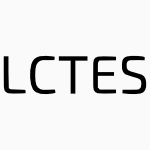 LCTES-2006-ZhangQWZZ #architecture #compilation #multi #optimisation
LCTES-2006-ZhangQWZZ #architecture #compilation #multi #optimisation- Optimizing compiler for shared-memory multiple SIMD architecture (WZ, XQ, YW, BZ, CZ), pp. 199–208.
 PPoPP-2006-ChanGGT #architecture #communication #multi
PPoPP-2006-ChanGGT #architecture #communication #multi- Collective communication on architectures that support simultaneous communication over multiple links (EC, RAvdG, WG, RT), pp. 2–11.
 CSL-2006-GiamberardinoF #parallel #proving
CSL-2006-GiamberardinoF #parallel #proving- Jump from Parallel to Sequential Proofs: Multiplicatives (PDG, CF), pp. 319–333.
 CSL-2006-Pagani #exponential #linear #logic #multi
CSL-2006-Pagani #exponential #linear #logic #multi- Acyclicity and Coherence in Multiplicative Exponential Linear Logic (MP), pp. 531–545.
 CASE-2005-ChewL #multi #robust
CASE-2005-ChewL #multi #robust- Robust supervisory control for production systems with multiple resource failures (SFC, MAL), pp. 375–380.
 CASE-2005-ZhangFZ #assembly #capacity #modelling #multi #workflow
CASE-2005-ZhangFZ #assembly #capacity #modelling #multi #workflow- Dynamic capacity modeling with multiple re-entrant workflows in semiconductor assembly manufacturing (MTZ, JF, EZ), pp. 160–165.
 DAC-2005-GaoH #multi #reduction
DAC-2005-GaoH #multi #reduction- Total power reduction in CMOS circuits via gate sizing and multiple threshold voltages (FG, JPH), pp. 31–36.
 DAC-2005-WongKP #flexibility #multi
DAC-2005-WongKP #flexibility #multi- Flexible ASIC: shared masking for multiple media processors (JLW, FK, MP), pp. 909–914.
 DATE-2005-AmoryLMM #architecture #multi #reduction #reuse
DATE-2005-AmoryLMM #architecture #multi #reduction #reuse- Test Time Reduction Reusing Multiple Processors in a Network-on-Chip Based Architecture (AMA, ML, FGM, EIM), pp. 62–63.
 DATE-2005-KumarLTW #multi #probability #process #statistics
DATE-2005-KumarLTW #multi #probability #process #statistics- A Probabilistic Collocation Method Based Statistical Gate Delay Model Considering Process Variations and Multiple Input Switching (YSK, JL, CT, JMW), pp. 770–775.
 DATE-2005-MayerSM #debugging #multi
DATE-2005-MayerSM #debugging #multi- Debug Support, Calibration and Emulation for Multiple Processor and Powertrain Control SoCs (AM, HS, KDMM), pp. 148–152.
 DATE-2005-SandireddyA #detection #fault #multi
DATE-2005-SandireddyA #detection #fault #multi- Diagnostic and Detection Fault Collapsing for Multiple Output Circuits (RKKRS, VDA), pp. 1014–1019.
 DATE-2005-YangHSP #logic #multi #quantum #synthesis #using
DATE-2005-YangHSP #logic #multi #quantum #synthesis #using- Exact Synthesis of 3-Qubit Quantum Circuits from Non-Binary Quantum Gates Using Multiple-Valued Logic and Group Theory (GY, WNNH, XS, MAP), pp. 434–435.
 ICDAR-2005-BertolamiB #integration #multi #recognition
ICDAR-2005-BertolamiB #integration #multi #recognition- Multiple Handwritten Text Line Recognition Systems Derived from Specific Integration of a Language Model (RB, HB), pp. 521–527.
 ICDAR-2005-KangD #classification #multi
ICDAR-2005-KangD #classification #multi- Selection of Classifiers for the Construction of Multiple Classifier Systems (HJK, DSD), pp. 1194–1198.
 ICDAR-2005-LefevreV #detection #locality #multi #sequence #video
ICDAR-2005-LefevreV #detection #locality #multi #sequence #video- Caption Localisation in Video Sequences by Fusion of Multiple Detectors (SL, NV), pp. 106–110.
 ICDAR-2005-LiuD #classification #multi #polynomial #recognition #using
ICDAR-2005-LiuD #classification #multi #polynomial #recognition #using- Handwritten Character Recognition Using Gradient Feature and Quadratic Classifier with Multiple Discrimination Schemes (HL, XD), pp. 19–25.
 SIGMOD-2005-ChenN #multi #performance #query
SIGMOD-2005-ChenN #multi #performance #query- Efficient Computation of Multiple Group By Queries (ZC, VRN), pp. 263–274.
 SIGMOD-2005-SrivastavaKZO #data type #multi
SIGMOD-2005-SrivastavaKZO #data type #multi- Multiple Aggregations Over Data Streams (RZ, NK, BCO, DS), pp. 299–310.
 VLDB-2005-BartaCM #data access #multi #query #summary #xml
VLDB-2005-BartaCM #data access #multi #query #summary #xml- Benefits of Path Summaries in an XML Query Optimizer Supporting Multiple Access Methods (AB, MPC, AOM), pp. 133–144.
 VLDB-2005-PapadimitriouSF #multi #streaming
VLDB-2005-PapadimitriouSF #multi #streaming- Streaming Pattern Discovery in Multiple Time-Series (SP, JS, CF), pp. 697–708.
 ITiCSE-2005-MullerH #algorithm #guidelines #multi #object-oriented #problem
ITiCSE-2005-MullerH #algorithm #guidelines #multi #object-oriented #problem- Guidelines for a multiple-goal CS introductory course: algorithmic problem-solving woven into OOP (OM, BH), p. 356.
 ICSM-2005-GarridoJ #c #multi
ICSM-2005-GarridoJ #c #multi- Analyzing Multiple Configurations of a C Program (AG, REJ), pp. 379–388.
 WCRE-2005-AndreopoulosATW #clustering #multi #scalability
WCRE-2005-AndreopoulosATW #clustering #multi #scalability- Multiple Layer Clustering of Large Software Systems (BA, AA, VT, XW), pp. 79–88.
 ICALP-2005-KaligosiMMS #multi #towards
ICALP-2005-KaligosiMMS #multi #towards- Towards Optimal Multiple Selection (KK, KM, JIM, PS), pp. 103–114.
 CHI-2005-TollingerLMTVHP #constraints #development #modelling #multi #performance
CHI-2005-TollingerLMTVHP #constraints #development #modelling #multi #performance- Supporting efficient development of cognitive models at multiple skill levels: exploring recent advances in constraint-based modeling (IT, RLL, MM, PT, AHV, AH, LP), pp. 411–420.
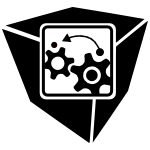 SOFTVIS-2005-PinzgerGFL #evolution #metric #multi #visualisation
SOFTVIS-2005-PinzgerGFL #evolution #metric #multi #visualisation- Visualizing multiple evolution metrics (MP, HCG, MF, ML), pp. 67–75.
 ICEIS-v2-2005-LokugeA #hybrid #learning #multi
ICEIS-v2-2005-LokugeA #hybrid #learning #multi- Handling Multiple Events in Hybrid BDI Agents with Reinforcement Learning: A Container Application (PL, DA), pp. 83–90.
 ICEIS-v3-2005-XuWLKL #framework #multi #ontology #perspective
ICEIS-v3-2005-XuWLKL #framework #multi #ontology #perspective- A Framework for Managing Multiple Ontologies: The Function-Oriented Perspective (BX, PW, JL, DK, YL), pp. 300–305.
 CIKM-2005-CulottaM #multi #relational
CIKM-2005-CulottaM #multi #relational- Joint deduplication of multiple record types in relational data (AC, AM), pp. 257–258.
 CIKM-2005-ZhangCFFGCC #classification #multi
CIKM-2005-ZhangCFFGCC #classification #multi- Intelligent GP fusion from multiple sources for text classification (BZ, YC, WF, EAF, MAG, MC, PC), pp. 477–484.
 ICML-2005-RayC #comparison #empirical #learning #multi
ICML-2005-RayC #comparison #empirical #learning #multi- Supervised versus multiple instance learning: an empirical comparison (SR, MC), pp. 697–704.
 ICML-2005-YuTS #learning #multi #process
ICML-2005-YuTS #learning #multi #process- Learning Gaussian processes from multiple tasks (KY, VT, AS), pp. 1012–1019.
 KDD-2005-KubicaMCJ #algorithm #multi #performance
KDD-2005-KubicaMCJ #algorithm #multi #performance- A multiple tree algorithm for the efficient association of asteroid observations (JK, AWM, AJC, RJ), pp. 138–146.
 ECOOP-2005-SalzmanA #multi #prototype
ECOOP-2005-SalzmanA #multi #prototype- Prototypes with Multiple Dispatch: An Expressive and Dynamic Object Model (LS, JA), pp. 312–336.
 SAC-2005-ManceboA #component #multi
SAC-2005-ManceboA #component #multi- A strategy for selecting multiple components (EM, AAA), pp. 1505–1510.
 ICSE-2005-HulkkoA #case study #multi #programming #quality
ICSE-2005-HulkkoA #case study #multi #programming #quality- A multiple case study on the impact of pair programming on product quality (HH, PA), pp. 495–504.
 CC-2005-RyuR #debugging #multi #programming
CC-2005-RyuR #debugging #multi #programming- Source-Level Debugging for Multiple Languages with Modest Programming Effort (SR, NR), pp. 10–26.
 CGO-2005-ChenCH #empirical #memory management #modelling #multi
CGO-2005-ChenCH #empirical #memory management #modelling #multi- Combining Models and Guided Empirical Search to Optimize for Multiple Levels of the Memory Hierarchy (CC, JC, MWH), pp. 111–122.
 HPCA-2005-MartyBHHMW #multi #using
HPCA-2005-MartyBHHMW #multi #using- Improving Multiple-CMP Systems Using Token Coherence (MRM, JDB, MDH, AJH, MMKM, DAW), pp. 328–339.
 HPCA-2005-WuJMC #adaptation #multi
HPCA-2005-WuJMC #adaptation #multi- Voltage and Frequency Control With Adaptive Reaction Time in Multiple-Clock-Domain Processors (QW, PJ, MM, DWC), pp. 178–189.
 PPoPP-2005-FreehL #clustering #energy #multi #source code #using
PPoPP-2005-FreehL #clustering #energy #multi #source code #using- Using multiple energy gears in MPI programs on a power-scalable cluster (VWF, DKL), pp. 164–173.
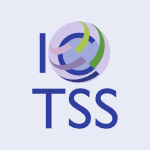 TestCom-2005-UyarWBWF #fault #modelling #multi
TestCom-2005-UyarWBWF #fault #modelling #multi- Timing Fault Models for Systems with Multiple Timers (MÜU, YW, SSB, AW, MAF), pp. 192–208.
 WICSA-2004-ChengHGSS #architecture #coordination #multi #self
WICSA-2004-ChengHGSS #architecture #coordination #multi #self- An Architecture for Coordinating Multiple Self-Management Systems (SWC, ACH, DG, BRS, PS), pp. 243–254.
 DAC-2004-AgarwalDB #multi #statistics
DAC-2004-AgarwalDB #multi #statistics- Statistical gate delay model considering multiple input switching (AA, FD, DB), pp. 658–663.
 DAC-2004-SasaoM #logic #multi
DAC-2004-SasaoM #logic #multi- A method to decompose multiple-output logic functions (TS, MM), pp. 428–433.
 DAC-2004-TummeltshammerHP #constant #multi
DAC-2004-TummeltshammerHP #constant #multi- Multiple constant multiplication by time-multiplexed mapping of addition chains (PT, JCH, MP), pp. 826–829.
 DAC-2004-YanSS #3d #multi
DAC-2004-YanSS #3d #multi- Sparse transformations and preconditioners for hierarchical 3-D capacitance extraction with multiple dielectrics (SY, VS, WS), pp. 788–793.
 DATE-v1-2004-WangH #clustering #memory management #multi #power management #scheduling
DATE-v1-2004-WangH #clustering #memory management #multi #power management #scheduling- Power Aware Variable Partitioning and Instruction Scheduling for Multiple Memory Banks (ZW, XSH), pp. 312–317.
 DATE-v1-2004-XuN #design #multi #testing
DATE-v1-2004-XuN #design #multi #testing- Wrapper Design for Testing IP Cores with Multiple Clock Domains (QX, NN), pp. 416–421.
 DATE-v2-2004-JabirP #diagrams #multi #named #representation
DATE-v2-2004-JabirP #diagrams #multi #named #representation- MODD: A New Decision Diagram and Representation for Multiple Output Binary Functions (AMJ, DKP), pp. 1388–1389.
 CSEET-2004-McKimE #design #education #multi #object-oriented #programming #using
CSEET-2004-McKimE #design #education #multi #object-oriented #programming #using- Using a Multiple Term Project to Teach Object Oriented Programming and Design (JCM, HJCE), pp. 59–64.
 SEFM-2004-GeguangXSZHY #approach #clustering #hardware #multi
SEFM-2004-GeguangXSZHY #approach #clustering #hardware #multi- An Approach to Hardware/Software Partitioning for Multiple Hardware Devices Model (GP, XZ, SW, ZQ, JH, WY), pp. 376–385.
 ICFP-2004-TolmachAN #functional #implementation #logic #multi #thread #using
ICFP-2004-TolmachAN #functional #implementation #logic #multi #thread #using- Implementing functional logic languages using multiple threads and stores (APT, SA, MN), pp. 90–102.
 CHI-2004-FussellKSS #multi
CHI-2004-FussellKSS #multi- Effects of instant messaging on the management of multiple project trajectories (SRF, SBK, LDS, PS), pp. 191–198.
 CHI-2004-GonzalezM #constant #multi #quote
CHI-2004-GonzalezM #constant #multi #quote- “Constant, constant, multi-tasking craziness”: managing multiple working spheres (VMG, GM), pp. 113–120.
 CHI-2004-OlsenW #multi #named
CHI-2004-OlsenW #multi #named- Fan-out: measuring human control of multiple robots (DRO, SBW), pp. 231–238.
 CSCW-2004-McDonaldWG #authoring #multi
CSCW-2004-McDonaldWG #authoring #multi- The multiple views of inter-organizational authoring (DWM, CW, JHG), pp. 564–573.
 CAiSE-2004-GuabtniC #multi #workflow
CAiSE-2004-GuabtniC #multi #workflow- Multiple Instantiation in a Dynamic Workflow Environment (AG, FC), pp. 175–188.
 ICEIS-v1-2004-ChenY #database #fuzzy #multi #transaction
ICEIS-v1-2004-ChenY #database #fuzzy #multi #transaction- Fuzzy Multiple-Level Sequential Patterns Discovery from Customer Transaction Databases (AC, HY), pp. 434–440.
 ICEIS-v1-2004-Gilb #metric #multi #performance #project management #quality
ICEIS-v1-2004-Gilb #metric #multi #performance #project management #quality- Evolutionary Project Management: Multiple Performance, Quality and Cost Metrics for Early and Continuous Stakeholder Value Delivery (TG), p. VII.
 ICEIS-v1-2004-Riaz-ud-DinK #adaptation #database #multi #named #using
ICEIS-v1-2004-Riaz-ud-DinK #adaptation #database #multi #named #using- ACME-DB: An Adaptive Caching Mechanism Using Multiple Experts For Database Buffers (FRuD, MK), pp. 192–201.
 ICEIS-v2-2004-SilvaCSGN #multi #network #using
ICEIS-v2-2004-SilvaCSGN #multi #network #using- Multiple Organ Failure Diagnosis Using Adverse Events and Neural Networks (ÁMS, PC, MFS, LG, JN), pp. 401–408.
 ICEIS-v5-2004-RousseauBMFM #multi #personalisation #profiling #repository #resource management #using
ICEIS-v5-2004-RousseauBMFM #multi #personalisation #profiling #repository #resource management #using- Personalised Resource Discovery Searching over Multiple Repository Types: Using User and Information Provider Profiling (BR, PB, PM, PF, VM), pp. 35–43.
 CIKM-2004-LiOM #clustering #multi #on the
CIKM-2004-LiOM #clustering #multi #on the- On combining multiple clusterings (TL, MO, SM), pp. 294–303.
 CIKM-2004-RobertsonZT #multi
CIKM-2004-RobertsonZT #multi- Simple BM25 extension to multiple weighted fields (SER, HZ, MJT), pp. 42–49.
 ICML-2004-AhnCO #algorithm #multi
ICML-2004-AhnCO #algorithm #multi- A multiplicative up-propagation algorithm (JHA, SC, JHO).
 ICML-2004-BachLJ #algorithm #kernel #learning #multi
ICML-2004-BachLJ #algorithm #kernel #learning #multi- Multiple kernel learning, conic duality, and the SMO algorithm (FRB, GRGL, MIJ).
 ICML-2004-MarlinZ #collaboration #multi
ICML-2004-MarlinZ #collaboration #multi- The multiple multiplicative factor model for collaborative filtering (BMM, RSZ).
 ICML-2004-NatteeSNO #first-order #learning #mining #multi
ICML-2004-NatteeSNO #first-order #learning #mining #multi- Learning first-order rules from data with multiple parts: applications on mining chemical compound data (CN, SS, MN, TO).
 ICML-2004-TaoSVO #approximate #learning #multi
ICML-2004-TaoSVO #approximate #learning #multi- SVM-based generalized multiple-instance learning via approximate box counting (QT, SDS, NVV, TTO).
 ICPR-v1-2004-FungM #parallel #using
ICPR-v1-2004-FungM #parallel #using- Using Multiple Graphics Cards as a General Purpose Parallel Computer : Applications to Computer Vision (JF, SM), pp. 805–808.
 ICPR-v1-2004-GarainCG #classification #multi #recognition
ICPR-v1-2004-GarainCG #classification #multi #recognition- A Multiple-Classifier System for Recognition of Printed Mathematical Symbols (UG, BBC, RPG), pp. 380–383.
 ICPR-v1-2004-MicheletGBC #estimation #multi #network #recursion
ICPR-v1-2004-MicheletGBC #estimation #multi #network #recursion- Local Multiple Orientation Estimation: Isotropic and Recursive Oriented Network (FM, CG, PB, JPDC), pp. 712–715.
 ICPR-v1-2004-YangFTH #detection #multi #using
ICPR-v1-2004-YangFTH #detection #multi #using- Skin Color Detection Using Multiple Cues (JY, ZF, TT, WH), pp. 632–635.
 ICPR-v2-2004-BaiH04a #detection #documentation #image #multi #using
ICPR-v2-2004-BaiH04a #detection #documentation #image #multi #using- Underline Detection and Removal in a Document Image Using Multiple Strategies (ZLB, QH), pp. 578–581.
 ICPR-v2-2004-PanN #detection #multi #novel
ICPR-v2-2004-PanN #detection #multi #novel- Novel Seed Selection for Multiple Objects Detection and Tracking (ZP, CWN), pp. 744–747.
 ICPR-v2-2004-SerbyKG #multi #probability #using
ICPR-v2-2004-SerbyKG #multi #probability #using- Probabilistic Object Tracking Using Multiple Features (DS, EKM, LJVG), pp. 184–187.
 ICPR-v3-2004-ChangC #estimation #multi
ICPR-v3-2004-ChangC #estimation #multi- Pose Estimation for Multiple Camera Systems (WYC, CSC), pp. 262–265.
 ICPR-v3-2004-ChenYC #distance #multi #recognition
ICPR-v3-2004-ChenYC #distance #multi #recognition- Inter-Subspace Distance: A New Method for Face Recognition with Multiple Samples (JHC, SLY, CSC), pp. 140–143.
 ICPR-v3-2004-KapoorPI #detection #multi #probability
ICPR-v3-2004-KapoorPI #detection #multi #probability- Probabilistic Combination of Multiple Modalities to Detect Interest (AK, RWP, YI), pp. 969–972.
 ICPR-v3-2004-LuoKGHSRH #learning #multi
ICPR-v3-2004-LuoKGHSRH #learning #multi- Active Learning to Recognize Multiple Types of Plankton (TL, KK, DBG, LOH, SS, AR, TH), pp. 478–481.
 ICPR-v3-2004-ReiterR #classification #multi #programming #segmentation #using
ICPR-v3-2004-ReiterR #classification #multi #programming #segmentation #using- Segmentation and Classification of Meeting Events using Multiple Classifier Fusion and Dynamic Programming (SR, GR), pp. 434–437.
 ICPR-v3-2004-SatakeS #multi #using
ICPR-v3-2004-SatakeS #multi #using- Multiple Target Tracking by Appearance-Based Condensation Tracker using Structure Information (JS, TS), pp. 294–297.
 ICPR-v3-2004-TerrillonPNY #detection #multi #realtime #recognition #robust #sequence #video
ICPR-v3-2004-TerrillonPNY #detection #multi #realtime #recognition #robust #sequence #video- DRUIDE : A Real-Time System for Robust Multiple Face Detection, Tracking and Hand Posture Recognition in Color Video Sequences (JCT, AP, YN, KY), pp. 302–305.
 ICPR-v3-2004-ZhangL #multi #pattern matching
ICPR-v3-2004-ZhangL #multi #pattern matching- Point Pattern Matching for Articulated or Multiple Objects (XZ, YL), pp. 630–633.
 ICPR-v3-2004-ZhouK #estimation #multi
ICPR-v3-2004-ZhouK #estimation #multi- Estimation of the Size and Location of Multiple Area Light Sources (WZ, CK), pp. 214–217.
 ICPR-v4-2004-Cardenas #classification #learning #multi #prototype #string
ICPR-v4-2004-Cardenas #classification #learning #multi #prototype #string- A Learning Model for Multiple-Prototype Classification of Strings (RAM), pp. 420–423.
 ICPR-v4-2004-IwaseS #detection #image #parallel
ICPR-v4-2004-IwaseS #detection #image #parallel- Parallel Tracking of All Soccer Players by Integrating Detected Positions in Multiple View Images (SI, HS), pp. 751–754.
 ICPR-v4-2004-KangCM04a #2d #approach #estimation #multi
ICPR-v4-2004-KangCM04a #2d #approach #estimation #multi- Non-Iterative Approach to Multiple 2D Motion Estimation (EYEK, IC, GGM), pp. 791–794.
 ICPR-v4-2004-KobayashiO #higher-order #identification #multi #polynomial #using
ICPR-v4-2004-KobayashiO #higher-order #identification #multi #polynomial #using- Action and Simultaneous Multiple-Person Identification Using Cubic Higher-Order Local Auto-Correlation (TK, NO), pp. 741–744.
 ICPR-v4-2004-MinK #multi #process #recognition
ICPR-v4-2004-MinK #multi #process #recognition- Activity Recognition Based on Multiple Motion Trajectories (JM, RK), pp. 199–202.
 ICPR-v4-2004-PeiZ #image #multi
ICPR-v4-2004-PeiZ #image #multi- Hiding Multiple Data in Color Images by Histogram Modification (SCP, YCZ), pp. 799–802.
 ICPR-v4-2004-WillisC #3d #dataset #multi #symmetry
ICPR-v4-2004-WillisC #3d #dataset #multi #symmetry- Alignment of Multiple Non-Overlapping Axially Symmetric 3D Datasets (ARW, DBC), pp. 96–99.
 ICPR-v4-2004-YangL #detection #multi
ICPR-v4-2004-YangL #detection #multi- Multiple Pedestrian Detection and Tracking based on Weighted Temporal Texture Features (HDY, SWL), pp. 248–251.
 ICPR-v4-2004-YangSW #multi #people
ICPR-v4-2004-YangSW #multi #people- People Tracking by Integrating Multiple Features (MTY, YCS, SCW), pp. 929–932.
 ICPR-v4-2004-ZaveriMD #image #information retrieval #modelling #multi #sequence #using
ICPR-v4-2004-ZaveriMD #image #information retrieval #modelling #multi #sequence #using- Tracking of Point Targets in IR Image Sequence using Multiple Model Based Particle Filtering and MRF Based Data Association (MAZ, SNM, UBD), pp. 729–732.
 ICPR-v4-2004-ZhouC #analysis #multi #recognition
ICPR-v4-2004-ZhouC #analysis #multi #recognition- Multiple-Exemplar Discriminant Analysis for Face Recognition (SKZ, RC), pp. 191–194.
 KDD-2004-TanJ #multi
KDD-2004-TanJ #multi- Ordering patterns by combining opinions from multiple sources (PNT, RJ), pp. 695–700.
 SIGIR-2004-MetzlerLC #modelling #multi
SIGIR-2004-MetzlerLC #modelling #multi- Formal multiple-bernoulli models for language modeling (DM, VL, WBC), pp. 540–541.
 SIGIR-2004-SigurbjornssonKR #multi #retrieval #xml
SIGIR-2004-SigurbjornssonKR #multi #retrieval #xml- Multiple sources of evidence for XML retrieval (BS, JK, MdR), pp. 554–555.
 SIGIR-2004-Yuan #framework #multi
SIGIR-2004-Yuan #framework #multi- Supporting multiple information-seeking strategies in a single system framework (abstract only) (XY), p. 604.
 PPDP-2004-GrecoGSS #datalog #logic programming #multi #programming language #reasoning
PPDP-2004-GrecoGSS #datalog #logic programming #multi #programming language #reasoning- Event choice datalog: a logic programming language for reasoning in multiple dimensions (GG, AG, DS, FS), pp. 238–249.
 PADL-2004-ChenSX #approach #inheritance #multi #object-oriented #programming
PADL-2004-ChenSX #approach #inheritance #multi #object-oriented #programming- A Typeful Approach to Object-Oriented Programming with Multiple Inheritance (CC, RS, HX), pp. 23–38.
 SAC-2004-El-Gayar #fuzzy #logic #multi
SAC-2004-El-Gayar #fuzzy #logic #multi- Application of fuzzy logic to multiple criteria decision making in aquacultural planning (OFEG), pp. 1028–1029.
 SAC-2004-FagorziZA #calculus #modelling #multi
SAC-2004-FagorziZA #calculus #modelling #multi- Modeling multiple class loaders by a calculus for dynamic linking (SF, EZ, DA), pp. 1281–1288.
 SAC-PL-J-2004-FagorziZ #case study #encoding #multi
SAC-PL-J-2004-FagorziZ #case study #encoding #multi- A Case-Study in Encoding Configuration Languages: Multiple Class Loaders (SF, EZ), pp. 31–54.
 FSE-2004-SouzaRCMP #api #collaboration #development #how #multi
FSE-2004-SouzaRCMP #api #collaboration #development #how #multi- How a good software practice thwarts collaboration: the multiple roles of APIs in software development (CRBdS, DFR, LTC, DRM, JFP), pp. 221–230.
 ASPLOS-2004-WuJMC #multi #online
ASPLOS-2004-WuJMC #multi #online- Formal online methods for voltage/frequency control in multiple clock domain microprocessors (QW, PJ, MM, DWC), pp. 248–259.
 CC-2004-JohnsonM #memory management #multi #using
CC-2004-JohnsonM #memory management #multi #using- Using Multiple Memory Access Instructions for Reducing Code Size (NJ, AM), pp. 265–280.
 CSL-2004-Gianantonio #linear #logic #multi
CSL-2004-Gianantonio #linear #logic #multi- Structures for Multiplicative Cyclic Linear Logic: Deepness vs Cyclicity (PDG), pp. 130–144.
 CSL-2004-StrassburgerL #linear #logic #multi #on the #proving
CSL-2004-StrassburgerL #linear #logic #multi #on the #proving- On Proof Nets for Multiplicative Linear Logic with Units (LS, FL), pp. 145–159.
 ICLP-2004-NieuwenborghHV #multi #on the #order #source code
ICLP-2004-NieuwenborghHV #multi #on the #order #source code- On Programs with Linearly Ordered Multiple Preferences (DVN, SH, DV), pp. 180–194.
 DAC-2003-LinT #design #generative #multi #testing
DAC-2003-LinT #design #generative #multi #testing- Test generation for designs with multiple clocks (XL, RT), pp. 662–667.
 DATE-2003-BraunWSLMN #abstraction #memory management #multi
DATE-2003-BraunWSLMN #abstraction #memory management #multi- Processor/Memory Co-Exploration on Multiple Abstraction Levels (GB, AW, OS, RL, HM, AN), pp. 10966–10973.
 ICDAR-2003-HamamuraMI #classification #multi
ICDAR-2003-HamamuraMI #classification #multi- A Multiclass Classification Method Based on Multiple Pairwise Classifiers (TH, HM, BI), pp. 809–813.
 ICDAR-2003-KangD #classification #dependence #higher-order #multi
ICDAR-2003-KangD #classification #dependence #higher-order #multi- Combining Multiple Classifiers based on Third-Order Dependency (HJK, DSD), pp. 21–25.
 ICDAR-2003-KangD03a #classification #evaluation #multi
ICDAR-2003-KangD03a #classification #evaluation #multi- Evaluation of the Information-Theoretic Construction of Multiple Classifier Systems (HJK, DSD), pp. 789–793.
 SIGMOD-2003-DeligiannakisR #metric #multi
SIGMOD-2003-DeligiannakisR #metric #multi- Extended Wavelets for Multiple Measures (AD, NR), pp. 229–240.
 VLDB-2003-LiuLBHTS #database #multi #transaction
VLDB-2003-LiuLBHTS #database #multi #transaction- Capturing Global Transactions from Multiple Recovery Log Files in a Partitioned Database System (CL, BGL, SB, EH, TCT, JS), pp. 987–996.
 ITiCSE-2003-Becker #approach #education #multi
ITiCSE-2003-Becker #approach #education #multi- A multiple intelligences approach to teaching number systems (KB), p. 250.
 ITiCSE-2003-DemetriadisTP #learning #multi #student #towards
ITiCSE-2003-DemetriadisTP #learning #multi #student #towards- A phenomenographic study of students’ attitudes toward the use of multiple media for learning (SND, ET, ASP), pp. 183–187.
 ITiCSE-2003-Sojka03a #agile #evaluation #multi #testing #tex #using
ITiCSE-2003-Sojka03a #agile #evaluation #multi #testing #tex #using- Rapid evaluation using multiple choice tests and TeX (PS), p. 265.
 TACAS-2003-GlusmanKMFV #abstraction #evaluation #industrial #multi #refinement
TACAS-2003-GlusmanKMFV #abstraction #evaluation #industrial #multi #refinement- Multiple-Counterexample Guided Iterative Abstraction Refinement: An Industrial Evaluation (MG, GK, SMH, RF, MYV), pp. 176–191.
 ICSM-2003-MahdaviHH #approach #clustering #multi
ICSM-2003-MahdaviHH #approach #clustering #multi- A Multiple Hill Climbing Approach to Software Module Clustering (KM, MH, RMH), pp. 315–324.
 SAS-2003-ChenLG #multi
SAS-2003-ChenLG #multi- Code Compaction of Matching Single-Entry Multiple-Exit Regions (WKC, BL, RG), pp. 401–417.
 STOC-2003-SauerhoffW #bound #graph #integer #multi #trade-off
STOC-2003-SauerhoffW #bound #graph #integer #multi #trade-off- Time-space tradeoff lower bounds for integer multiplication and graphs of arithmetic functions (MS, PW), pp. 186–195.
 ICALP-2003-BansalAM #multi #performance
ICALP-2003-BansalAM #multi #performance- Stable Marriages with Multiple Partners: Efficient Search for an Optimal Solution (VB, AA, VSM), pp. 527–542.
 CHI-2003-AokiRSTWW #mobile #multi #social
CHI-2003-AokiRSTWW #mobile #multi #social- The mad hatter’s cocktail party: a social mobile audio space supporting multiple simultaneous conversations (PMA, MR, MHS, JDT, DW, AW), pp. 425–432.
 CHI-2003-HwangKLC #multi
CHI-2003-HwangKLC #multi- Multiple haptic targets for motion-impaired computer users (FH, SK, PL, PJC), pp. 41–48.
 ICEIS-v2-2003-HattoriKY #multi #pattern matching #pattern recognition #recognition
ICEIS-v2-2003-HattoriKY #multi #pattern matching #pattern recognition #recognition- Face Pattern Recognition and Extraction From Multiple Persons Scene (TH, HK, TY), pp. 92–99.
 ICEIS-v2-2003-MadeiraMM #multi #named
ICEIS-v2-2003-MadeiraMM #multi #named- Star — A Multiple Domain Dialog Manager (PM, MM, NJM), pp. 490–494.
 ICEIS-v4-2003-CostaOS #multi
ICEIS-v4-2003-CostaOS #multi- A New User-Oriented Model to Manage Multiple Digital Credentials (CMAC, JLO, AS), pp. 190–196.
 CIKM-2003-TangZ #mining #multi
CIKM-2003-TangZ #mining #multi- Mining multiple phenotype structures underlying gene expression profiles (CT, AZ), pp. 418–425.
 ICML-2003-McGovernJ #identification #learning #multi #predict #relational #using
ICML-2003-McGovernJ #identification #learning #multi #predict #relational #using- Identifying Predictive Structures in Relational Data Using Multiple Instance Learning (AM, DJ), pp. 528–535.
 ICML-2003-RichardsonD #learning #multi
ICML-2003-RichardsonD #learning #multi- Learning with Knowledge from Multiple Experts (MR, PMD), pp. 624–631.
 KDD-2003-ArgamonSS #mining #multi
KDD-2003-ArgamonSS #mining #multi- Style mining of electronic messages for multiple authorship discrimination: first results (SA, MS, SSS), pp. 475–480.
 KDD-2003-VlachosHGK #distance #metric #multi
KDD-2003-VlachosHGK #distance #metric #multi- Indexing multi-dimensional time-series with support for multiple distance measures (MV, MH, DG, EJK), pp. 216–225.
 SIGIR-2003-Sakai #evaluation #multi #performance #retrieval
SIGIR-2003-Sakai #evaluation #multi #performance #retrieval- Average gain ratio: a simple retrieval performance measure for evaluation with multiple relevance levels (TS), pp. 417–418.
 RE-2003-AoyamaWNM #framework #multi #product line #requirements
RE-2003-AoyamaWNM #framework #multi #product line #requirements- Embracing Requirements Variety for e-Governments Based on Multiple Product-Lines Frameworks (MA, KW, YN, YM), p. 285.
 RE-2003-Becker #lifecycle #multi #requirements #traceability
RE-2003-Becker #lifecycle #multi #requirements #traceability- Measuring Requirements Traceability from Multiple Angels at Multiple Lifecycle Entry Points (DB), p. 291.
 RE-2003-RichardsFA #approach #case study #multi #visualisation
RE-2003-RichardsFA #approach #case study #multi #visualisation- An Approach to Visualise and Reconcile Use Case Descriptions from Multiple Viewpoints (DR, ABF, OA), pp. 373–374.
 SAC-2003-CatalyurekGKSSF #component #implementation #multi #sequence
SAC-2003-CatalyurekGKSSF #component #implementation #multi #sequence- A Component-based Implementation of Multiple Sequence Alignment (ÜVÇ, MG, TMK, JHS, ES, RF), pp. 122–126.
 SAC-2003-MaIS #multi
SAC-2003-MaIS #multi- Nonlinear Instability in Multiple Time Stepping Molecular Dynamics (QM, JAI, RDS), pp. 167–171.
 SAC-2003-NaganumaTM #3d #estimation #image #multi #using
SAC-2003-NaganumaTM #3d #estimation #image #multi #using- Estimation of 3D Shape and Reflectance using Multiple Moire Images and Shading Model (SN, NT, AM), pp. 943–950.
 SAC-2003-SatoA #multi
SAC-2003-SatoA #multi- Accessee Controlled Type Selection for a Multiple-Type Object (HS, MA), pp. 515–521.
 CC-2003-MoreauRV #compilation #multi #pattern matching
CC-2003-MoreauRV #compilation #multi #pattern matching- A Pattern Matching Compiler for Multiple Target Languages (PEM, CR, MV), pp. 61–76.
 LICS-2003-HughesG #linear #logic #multi #proving
LICS-2003-HughesG #linear #logic #multi #proving- Proof Nets for Unit-free Multiplicative-Additive Linear Logic (Extended abstract) (DJDH, RJvG), pp. 1–10.
 DAC-2002-LiouWCDMKW #fault #multi #performance #testing #using
DAC-2002-LiouWCDMKW #fault #multi #performance #testing #using- Enhancing test efficiency for delay fault testing using multiple-clocked schemes (JJL, LCW, KTC, JD, MRM, RK, TWW), pp. 371–374.
 DAC-2002-MolinaMH #multi #synthesis
DAC-2002-MolinaMH #multi #synthesis- High-level synthesis of multiple-precision circuitsindependent of data-objects length (MCM, JMM, RH), pp. 612–615.
 DAC-2002-ZhongD #algorithm #constraints #multi #optimisation
DAC-2002-ZhongD #algorithm #constraints #multi #optimisation- Algorithms for simultaneous satisfaction of multiple constraints and objective optimization in a placement flow with application to congestion control (KZ, SD), pp. 854–859.
 DATE-2002-IraniGS #analysis #multi #power management
DATE-2002-IraniGS #analysis #multi #power management- Competitive Analysis of Dynamic Power Management Strategies for Systems with Multiple Power Savings States (SI, RKG, SKS), pp. 117–123.
 DATE-2002-LeeCDGM #algorithm #detection #fault #multi #testing
DATE-2002-LeeCDGM #algorithm #detection #fault #multi #testing- A New ATPG Algorithm to Limit Test Set Size and Achieve Multiple Detections of All Faults (SL, BC, JD, MRG, MRM), pp. 94–99.
 DATE-2002-LeeWH #design #implementation #multi #runtime
DATE-2002-LeeWH #design #implementation #multi #runtime- Dynamic Runtime Re-Scheduling Allowing Multiple Implementations of a Task for Platform-Based Designs (TML, WW, JH), pp. 296–301.
 DATE-2002-MolinaMH #independence #multi
DATE-2002-MolinaMH #independence #multi- Multiple-Precision Circuits Allocation Independent of Data-Objects Length (MCM, JMM, RH), pp. 909–913.
 DATE-2002-PadmanabanT #fault #multi
DATE-2002-PadmanabanT #fault #multi- Exact Grading of Multiple Path Delay Faults (SP, ST), pp. 84–88.
 DATE-2002-PomeranzR #fault #multi #set #using
DATE-2002-PomeranzR #fault #multi #set #using- Test Enrichment for Path Delay Faults Using Multiple Sets of Target Faults (IP, SMR), pp. 722–729.
 DATE-2002-VenerisLAA #fault #incremental #multi
DATE-2002-VenerisLAA #fault #incremental #multi- Incremental Diagnosis and Correction of Multiple Faults and Errors (AGV, JBL, MA, MSA), pp. 716–721.
 PODS-2002-SchmidtS #how #multi #query
PODS-2002-SchmidtS #how #multi #query- How to Evaluate Multiple Range-Sum Queries Progressively (RRS, CS), pp. 133–141.
 VLDB-2002-ChakrabartiRS #classification #linear #multi #performance
VLDB-2002-ChakrabartiRS #classification #linear #multi #performance- Fast and Accurate Text Classification via Multiple Linear Discriminant Projections (SC, SR, MVS), pp. 658–669.
 ITiCSE-2002-Fone #feedback #multi #testing
ITiCSE-2002-Fone #feedback #multi #testing- Improving feedback from multiple choice tests (WF), p. 196.
 PLDI-2002-BakerH #java #multi #named #syntax
PLDI-2002-BakerH #java #multi #named #syntax- Maya: Multiple-Dispatch Syntax Extension in Java (JB, WCH), pp. 270–281.
 DLT-2002-Archangelsky #algorithm #equivalence #finite #multi #performance
DLT-2002-Archangelsky #algorithm #equivalence #finite #multi #performance- Efficient Algorithm for Checking Multiplicity Equivalence for the Finite Z-Σ*-Automata (KA), pp. 283–289.
 CHI-2002-McGrenereBB #design #evaluation #interface #multi
CHI-2002-McGrenereBB #design #evaluation #interface #multi- An evaluation of a multiple interface design solution for bloated software (JM, RB, KSB), pp. 164–170.
 CHI-2002-RobertsonCCR #multi #visualisation
CHI-2002-RobertsonCCR #multi #visualisation- Polyarchy visualization: visualizing multiple intersecting hierarchies (GGR, KC, MC, DCR), pp. 423–430.
 VISSOFT-2002-Sajaniemi #comprehension #editing #independence #multi
VISSOFT-2002-Sajaniemi #comprehension #editing #independence #multi- View Definitions for Language-Independent Multiple-View Program Comprehension and Editing (JS), pp. 3–12.
 CAiSE-2002-CombiM #multi #query
CAiSE-2002-CombiM #multi #query- Querying Data with Multiple Temporal Dimensions (CC, AM), pp. 711–714.
 ICEIS-2002-LeeK #database #framework #legacy #multi #persistent
ICEIS-2002-LeeK #database #framework #legacy #multi #persistent- Persistence Framework for Multiple Legacy Databases (SPL, CHK), pp. 269–274.
 CIKM-2002-LeeCHT #evaluation #multi #performance #query #streaming #xml
CIKM-2002-LeeCHT #evaluation #multi #performance #query #streaming #xml- Efficient evaluation of multiple queries on streaming XML data (MLL, BCC, WH, KLT), pp. 118–125.
 CIKM-2002-WuY #adaptation #monitoring #multi #performance #query #using
CIKM-2002-WuY #adaptation #monitoring #multi #performance #query #using- Efficient query monitoring using adaptive multiple key hashing (KLW, PSY), pp. 477–484.
 ICML-2002-ZhangGYF #image #learning #multi #retrieval #using
ICML-2002-ZhangGYF #image #learning #multi #retrieval #using- Content-Based Image Retrieval Using Multiple-Instance Learning (QZ, SAG, WY, JEF), pp. 682–689.
 ICPR-v1-2002-JunTD #estimation #multi #segmentation
ICPR-v1-2002-JunTD #estimation #multi #segmentation- Multiple Objects Segmentation Based on Maximum-Likelihood Estimation and Optimum Entropy-Distribution (MLE-OED) (JX, HTT, DX), p. 707–?.
 ICPR-v1-2002-KangKB #multi #people #realtime #using
ICPR-v1-2002-KangKB #multi #people #realtime #using- Real-Time Multiple People Tracking Using Competitive Condensation (HK, DK, SYB), pp. 413–416.
 ICPR-v1-2002-KuthirummalJN #multi #recognition
ICPR-v1-2002-KuthirummalJN #multi #recognition- Planar Shape Recognition across Multiple Views (SK, CVJ, PJN), pp. 456–459.
 ICPR-v1-2002-NguyenVWB #behaviour #monitoring #multi #people #using
ICPR-v1-2002-NguyenVWB #behaviour #monitoring #multi #people #using- Hierarchical Monitoring of People’s Behaviors in Complex Environments Using Multiple Cameras (NTN, SV, GAWW, HHB), pp. 13–16.
 ICPR-v1-2002-TominagaHKNY #estimation #gesture #multi #recognition
ICPR-v1-2002-TominagaHKNY #estimation #gesture #multi #recognition- Estimation of Human Motion from Multiple Cameras for Gesture Recognition (MT, HH, HK, YN, KY), pp. 401–404.
 ICPR-v2-2002-AltyncayD #classification #multi #normalisation #problem #question #why
ICPR-v2-2002-AltyncayD #classification #multi #normalisation #problem #question #why- Why Does Output Normalization Create Problems in Multiple Classifier Systems? (HA, MD), pp. 775–778.
 ICPR-v2-2002-DavisLC #estimation #markov #multi #parametricity #sequence
ICPR-v2-2002-DavisLC #estimation #markov #multi #parametricity #sequence- Improved Estimation of Hidden Markov Model Parameters from Multiple Observation Sequences (RIAD, BCL, TC), pp. 168–171.
 ICPR-v2-2002-FarmerHJ #multi #robust
ICPR-v2-2002-FarmerHJ #multi #robust- Interacting Multiple Model (IMM) Kalman Filters for Robust High Speed Human Motion Tracking (MEF, RLH, AKJ), pp. 20–23.
 ICPR-v2-2002-GiacintoR #classification #detection #multi #network
ICPR-v2-2002-GiacintoR #classification #detection #multi #network- Intrusion Detection in Computer Networks by Multiple Classifier Systems (GG, FR), pp. 390–393.
 ICPR-v2-2002-InamotoS #generative #multi
ICPR-v2-2002-InamotoS #generative #multi- Intermediate View Generation of Soccer Scene from Multiple Videos (NI, HS), pp. 713–716.
 ICPR-v2-2002-KawanishiMT #3d #detection #locality #multi
ICPR-v2-2002-KawanishiMT #3d #detection #locality #multi- Quick 3D Object Detection and Localization by Dynamic Active Search with Multiple Active Cameras (TK, HM, ST), pp. 605–608.
 ICPR-v2-2002-KawashimaM #multi #recognition
ICPR-v2-2002-KawashimaM #multi #recognition- Integrated Event Recognition from Multiple Sources (HK, TM), p. 785–?.
 ICPR-v2-2002-KimLLKK #approach #detection #multi #video
ICPR-v2-2002-KimLLKK #approach #detection #multi #video- Integrated Approach of Multiple Face Detection for Video Surveillance (TKK, SUL, JHL, SCK, SRK), pp. 394–397.
 ICPR-v2-2002-MurpheyL #classification #feature model #multi #network
ICPR-v2-2002-MurpheyL #classification #feature model #multi #network- Feature Extraction for a Multiple Pattern Classification Neural Network System (YLM, YL), pp. 220–223.
 ICPR-v2-2002-PolatYS #multi #using
ICPR-v2-2002-PolatYS #multi #using- Multiple Complex Object Tracking Using A Combined Technique (EP, MY, RS), pp. 717–720.
 ICPR-v2-2002-RotherCT #multi
ICPR-v2-2002-RotherCT #multi- Projective Factorization of Planes and Cameras in Multiple Views (CR, SC, DT), pp. 737–740.
 ICPR-v2-2002-SatoK #gesture #markov #modelling #multi #recognition
ICPR-v2-2002-SatoK #gesture #markov #modelling #multi #recognition- Extension of Hidden Markov Models to Deal with Multiple Candidates of Observations and its Application to Mobile-Robot-Oriented Gesture Recognition (YS, TK), p. 515–?.
 ICPR-v2-2002-SerratosaSA #3d #graph #modelling #multi #using
ICPR-v2-2002-SerratosaSA #3d #graph #modelling #multi #using- Modelling and Recognising 3D-Objects Described by Multiple Views Using Function-Described Graphs (FS, AS, RA), pp. 140–143.
 ICPR-v2-2002-SirlantzisFG #algorithm #classification #multi
ICPR-v2-2002-SirlantzisFG #algorithm #classification #multi- An Evolutionary Algorithm for Classifier and Combination Rule Selection in Multiple Classifier Systems (KS, MCF, RMG), pp. 771–774.
 ICPR-v2-2002-StefanoCM #adaptation #classification #multi
ICPR-v2-2002-StefanoCM #adaptation #classification #multi- An Adaptive Weighted Majority Vote Rule for Combining Multiple Classifiers (CDS, ADC, AM), pp. 192–195.
 ICPR-v2-2002-TweedC #multi
ICPR-v2-2002-TweedC #multi- Tracking Multiple Animals in Wildlife Footage (DT, AC), p. 24–?.
 ICPR-v2-2002-XingfeiJ #automation #multi
ICPR-v2-2002-XingfeiJ #automation #multi- An Automatic Active Contour Model for Multiple Objects (GX, TJ), pp. 881–884.
 ICPR-v2-2002-ZengM #multi #performance
ICPR-v2-2002-ZengM #multi #performance- An Efficient Vision System for Multiple Car Tracking (ZZ, SM), pp. 609–612.
 ICPR-v2-2002-ZhaoH #multi #realtime
ICPR-v2-2002-ZhaoH #multi #realtime- Real-Time Multiple-Person Tracking System (HXZ, YSH), pp. 897–900.
 ICPR-v3-2002-GarciaP #feature model #integration #multi #pattern matching #pattern recognition #recognition
ICPR-v3-2002-GarciaP #feature model #integration #multi #pattern matching #pattern recognition #recognition- Improving Texture Pattern Recognition by Integration of Multiple Texture Feature Extraction Methods (MAG, DP), pp. 7–10.
 ICPR-v3-2002-KangL #evaluation #multi
ICPR-v3-2002-KangL #evaluation #multi- Evaluation on Selection Criteria of Multiple Numeral Recognizers with the Fixed Number of Recognizers (HJK, SWL), pp. 403–406.
 ICPR-v3-2002-MordohaiM #multi #using
ICPR-v3-2002-MordohaiM #multi #using- Perceptual Grouping for Multiple View Stereo Using Tensor Voting (PM, GGM), pp. 639–644.
 ICPR-v3-2002-QianCZ #approach #estimation #independence #multi
ICPR-v3-2002-QianCZ #approach #estimation #independence #multi- A Bayesian Approach to Simultaneous Motion Estimation of Multiple Independently Moving Objects (GQ, RC, QZ), p. 309–?.
 ICPR-v3-2002-TomiteYY #image #interactive #multi
ICPR-v3-2002-TomiteYY #image #interactive #multi- Arbitrary Viewpoint Rendering from Multiple Omnidirectional Images for Interactive Walkthroughs (KT, KY, NY), pp. 987–990.
 ICPR-v3-2002-VinsonC #3d #multi #re-engineering #segmentation
ICPR-v3-2002-VinsonC #3d #multi #re-engineering #segmentation- Multiple Rectangle Model for Vuildings Segmentation and 3D Scene Reconstruction (SV, LDC), pp. 623–626.
 ICPR-v3-2002-ZhangB #detection #multi
ICPR-v3-2002-ZhangB #detection #multi- A Wavelet-Based Edge Detection Method by Scale Multiplication (LZ, PB), pp. 501–500.
 ICPR-v4-2002-FujiyoshiK #detection #multi
ICPR-v4-2002-FujiyoshiK #detection #multi- Layered Detection for Multiple Overlapping Objects (HF, TK), pp. 156–161.
 KDD-2002-TuzhilinL #multi #query #set
KDD-2002-TuzhilinL #multi #query #set- Querying multiple sets of discovered rules (AT, BL), pp. 52–60.
 KDD-2002-UedaS #category theory #detection #modelling #multi #parametricity #using
KDD-2002-UedaS #category theory #detection #modelling #multi #parametricity #using- Single-shot detection of multiple categories of text using parametric mixture models (NU, KS), pp. 626–631.
 UML-2002-FrohlichHS #industrial #modelling #multi #uml #using
UML-2002-FrohlichHS #industrial #modelling #multi #uml #using- Using UML for Information Modeling in Industrial Systems with Multiple Hierarchies (PF, ZH, MS), pp. 63–72.
 OOPSLA-2002-MarellyHK #execution #multi #sequence chart
OOPSLA-2002-MarellyHK #execution #multi #sequence chart- Multiple instances and symbolic variables in executable sequence charts (RM, DH, HK), pp. 83–100.
 SAC-2002-ChanLMLHL #concept #documentation #mobile #multi #navigation #summary #using
SAC-2002-ChanLMLHL #concept #documentation #mobile #multi #navigation #summary #using- Multiple related document summary and navigation using concept hierarchies for mobile clients (DLC, RWPL, WKM, HVL, EKSH, QL), pp. 627–632.
 HPCA-2002-SemeraroMBADS #design #energy #multi #scalability #using
HPCA-2002-SemeraroMBADS #design #energy #multi #scalability #using- Energy-Efficient Processor Design Using Multiple Clock Domains with Dynamic Voltage and Frequency Scaling (GS, GM, RB, DHA, SD, MLS), pp. 29–42.
 HPDC-2002-SubramaniKSS #distributed #multi #scheduling #using
HPDC-2002-SubramaniKSS #distributed #multi #scheduling #using- Distributed Job Scheduling on Computational Grids Using Multiple Simultaneous Requests (VS, RK, SS, PS), p. 359–?.
 TestCom-2002-SeolKC #communication #generative #multi #principle #protocol #testing
TestCom-2002-SeolKC #communication #generative #multi #principle #protocol #testing- Interoperability Test Generation for Communication Protocols based on Multiple Stimuli Principle (SS, MK, STC), pp. 151–168.
 DAC-2001-KudlugiST #functional #multi #scheduling #verification
DAC-2001-KudlugiST #functional #multi #scheduling #verification- Static Scheduling of Multiple Asynchronous Domains For Functional Verification (MK, CS, RT), pp. 647–652.
 DATE-2001-BadarogluHGDMGEB #generative #multi #scalability #simulation
DATE-2001-BadarogluHGDMGEB #generative #multi #scalability #simulation- High-level simulation of substrate noise generation from large digital circuits with multiple supplies (MB, MvH, VG, SD, HDM, GGEG, ME, IB), pp. 326–330.
 DATE-2001-ConstantinidesCL #heuristic #multi
DATE-2001-ConstantinidesCL #heuristic #multi- Heuristic datapath allocation for multiple wordlength systems (GAC, PYKC, WL), pp. 791–797.
 DATE-2001-NovikovG #learning #multi #performance
DATE-2001-NovikovG #learning #multi #performance- An efficient learning procedure for multiple implication checks (YN, EIG), pp. 127–135.
 HT-2001-WiilHN #approach #hypermedia #multi
HT-2001-WiilHN #approach #hypermedia #multi- Multiple open services: a new approach to service provision in open hypermedia systems (UKW, DLH, PJN), pp. 83–92.
 ICDAR-2001-KangL #classification #multi
ICDAR-2001-KangL #classification #multi- Experimental Results on the Construction of Multiple Classifiers Recognizing Handwritten Numerals (HJK, SWL), pp. 1026–1030.
 ICDAR-2001-SirlantzisF #classification #configuration management #multi #novel #recognition #self
ICDAR-2001-SirlantzisF #classification #configuration management #multi #novel #recognition #self- Investigation of a Novel Self-configurable Multiple Classifier System for Character Recognition (KS, MCF), pp. 1002–1006.
 STOC-2001-BolligW #bound #branch #integer #multi #using
STOC-2001-BolligW #bound #branch #integer #multi #using- A read-once branching program lower bound of Ω(2n/4) for integer multiplication using universal (BB, PW), pp. 419–424.
 CIAA-2001-ChamparnaudD #multi
CIAA-2001-ChamparnaudD #multi- Brzozowski’s Derivatives Extended to Multiplicities (JMC, GD), pp. 52–64.
 CHI-2001-Grudin #clustering #monitoring #multi
CHI-2001-Grudin #clustering #monitoring #multi- Partitioning digital worlds: focal and peripheral awareness in multiple monitor use (JG), pp. 458–465.
 CAiSE-2001-CombiM #modelling #multi
CAiSE-2001-CombiM #modelling #multi- Data Models with Multiple Temporal Dimensions: Completing the Picture (CC, AM), pp. 187–202.
 ICEIS-v1-2001-Rao #algorithm #clustering #multi
ICEIS-v1-2001-Rao #algorithm #clustering #multi- An Algorithm for Determining Subspaces Containing Clusters with Multiple Minimum Density Thresholds for Numerical Data (PRR), pp. 530–532.
 CIKM-2001-Al-KofahiTVTJ #categorisation #classification #multi
CIKM-2001-Al-KofahiTVTJ #categorisation #classification #multi- Combining Multiple Classifiers for Text Categorization (KAK, AT, AV, TT, PJ), pp. 97–104.
 CIKM-2001-HsuLC #algorithm #generative #multi #source code
CIKM-2001-HsuLC #algorithm #generative #multi #source code- A Near Optimal Algorithm for Generating Broadcast Programs on Multiple Channels (CHH, GL, ALPC), pp. 303–309.
 ICML-2001-AmarDGZ #learning #multi
ICML-2001-AmarDGZ #learning #multi- Multiple-Instance Learning of Real-Valued Data (RAA, DRD, SAG, QZ), pp. 3–10.
 ICML-2001-RayP #multi
ICML-2001-RayP #multi- Multiple Instance Regression (SR, DP), pp. 425–432.
 SEKE-2001-Marcos #inheritance #multi #taxonomy
SEKE-2001-Marcos #inheritance #multi #taxonomy- Defining taxonomic hierarchies: their implications for multiple inheritance (EM), pp. 336–340.
 SIGIR-2001-ChowdhuryFGM #analysis #multi #retrieval
SIGIR-2001-ChowdhuryFGM #analysis #multi #retrieval- Analyses of Multiple-Evidence Combinations for Retrieval Strategies (AC, OF, DAG, MCM), pp. 394–395.
 UML-2001-GenovaLM #multi #semantics #uml
UML-2001-GenovaLM #multi #semantics #uml- Semantics of the Minimum Multiplicity in Ternary Associations in UML (GG, JL, PM), pp. 329–341.
 TOOLS-USA-2001-HeSH #multi #refinement #requirements #standard
TOOLS-USA-2001-HeSH #multi #refinement #requirements #standard- Extensions of Standard Z Refinement Relation for Multiple Viewpoints Oriented Requirements Method (YH, QS, QH), pp. 253–262.
 SAC-2001-SerearunoH #comparison #multi #network
SAC-2001-SerearunoH #comparison #multi #network- A comparison in training time of the single and multiple-output MLP neural networks (MS, TH), pp. 32–35.
 SAC-2001-TranHJ #design #multi #physics
SAC-2001-TranHJ #design #multi #physics- A generalized air-cache design for efficiently boradcasting on multiple physical channels (DAT, KAH, NJ), pp. 387–392.
 ICLP-2001-Colmerauer #approximate #constraints #multi
ICLP-2001-Colmerauer #approximate #constraints #multi- Solving the Multiplication Constraint in Several Approximation Spaces (AC), p. 1.
 DAC-2000-ShinKC #analysis #embedded #multi #performance #realtime
DAC-2000-ShinKC #analysis #embedded #multi #performance #realtime- Schedulability-driven performance analysis of multiple mode embedded real-time systems (YS, DK, KC), pp. 495–500.
 DAC-2000-SouriBMS #analysis #design #motivation #multi #performance
DAC-2000-SouriBMS #analysis #design #motivation #multi #performance- Multiple Si layer ICs: motivation, performance analysis, and design implications (SJS, KB, AM, KS), pp. 213–220.
 DAC-2000-WangN #analysis #linear #multi #order
DAC-2000-WangN #analysis #linear #multi #order- Extended Krylov subspace method for reduced order analysis of linear circuits with multiple sources (JMW, TVN), pp. 247–252.
 DATE-2000-HoffmannK #fault #multi
DATE-2000-HoffmannK #fault #multi- Exploiting Hierarchy for Multiple Error Correction in Combinational Circuits (DWH, TK), p. 758.
 DATE-2000-NicoliciA #clustering #multi #power management
DATE-2000-NicoliciA #clustering #multi #power management- Scan Latch Partitioning into Multiple Scan Chains for Power Minimization in Full Scan Sequential Circuits (NN, BMAH), pp. 715–722.
 FASE-2000-NelsonCA #multi #object-oriented
FASE-2000-NelsonCA #multi #object-oriented- A Model for Describing Object-Oriented Systems from Multiple Perspectives (TN, DDC, PSCA), pp. 237–248.
 TACAS-2000-GoedickeEMT #development #distributed #graph transformation #multi #tool support
TACAS-2000-GoedickeEMT #development #distributed #graph transformation #multi #tool support- ViewPoint-Oriented Software Development: Tool Support for Integrating Multiple Perspectives by Distributed Graph Transformation (MG, BE, TM, GT), pp. 43–47.
 IWPC-2000-Sajaniemi #comprehension #multi
IWPC-2000-Sajaniemi #comprehension #multi- Program Comprehension through Multiple Simultaneous Views: A Session with VinEd (JS), pp. 99–108.
 PLDI-2000-RamseyJ #exception #implementation #multi
PLDI-2000-RamseyJ #exception #implementation #multi- A single intermediate language that supports multiple implementations of exceptions (NR, SLPJ), pp. 285–298.
 STOC-2000-GoelMP #multi #online #throughput
STOC-2000-GoelMP #multi #online #throughput- Combining fairness with throughput: online routing with multiple objectives (AG, AM, SAP), pp. 670–679.
 STOC-2000-LiMW #multi #polynomial
STOC-2000-LiMW #multi #polynomial- Near optimal multiple alignment within a band in polynomial time (ML, BM, LW), pp. 425–434.
 CIAA-2000-CaronF #multi
CIAA-2000-CaronF #multi- Glushkov Construction for Multiplicities (PC, MF), pp. 67–79.
 ICALP-2000-BorosGKM #generative #multi
ICALP-2000-BorosGKM #generative #multi- Generating Partial and Multiple Transversals of a Hypergraph (EB, VG, LK, KM), pp. 588–599.
 ICEIS-2000-HeathC #communication #mobile #multi
ICEIS-2000-HeathC #communication #mobile #multi- Application of a Virtual Connection Tree over Multiple Access Techniques for 3G Mobile Communication Systems (AH, RAC), pp. 531–532.
 ICEIS-2000-SaGBS #multi #process
ICEIS-2000-SaGBS #multi #process- Addressing Multiple Software Processes in Business (JS, SG, IB, AS), pp. 339–343.
 ICML-2000-BanerjeeDS #multi
ICML-2000-BanerjeeDS #multi- Combining Multiple Perspectives (BB, SD, SS), pp. 33–40.
 ICML-2000-CravenPSBG #coordination #learning #multi #using
ICML-2000-CravenPSBG #coordination #learning #multi #using- Using Multiple Levels of Learning and Diverse Evidence to Uncover Coordinately Controlled Genes (MC, DP, JWS, JB, JDG), pp. 199–206.
 ICML-2000-GoldbergM #learning #modelling #multi
ICML-2000-GoldbergM #learning #modelling #multi- Learning Multiple Models for Reward Maximization (DG, MJM), pp. 319–326.
 ICML-2000-KaynakA #classification #multi
ICML-2000-KaynakA #classification #multi- MultiStage Cascading of Multiple Classifiers: One Man’s Noise is Another Man’s Data (CK, EA), pp. 455–462.
 ICML-2000-WesterdijkW #classification #modelling #multi #using
ICML-2000-WesterdijkW #classification #modelling #multi #using- Classification with Multiple Latent Variable Models using Maximum Entropy Discrimination (MW, WW), pp. 1143–1150.
 ICML-2000-WnagZ #approach #lazy evaluation #learning #multi #problem
ICML-2000-WnagZ #approach #lazy evaluation #learning #multi #problem- Solving the Multiple-Instance Problem: A Lazy Learning Approach (JW, JDZ), pp. 1119–1126.
 ICML-2000-YangAP #effectiveness #learning #multi #validation
ICML-2000-YangAP #effectiveness #learning #multi #validation- Combining Multiple Learning Strategies for Effective Cross Validation (YY, TA, TP), pp. 1167–1174.
 ICPR-v1-2000-AbeM #modelling #multi
ICPR-v1-2000-AbeM #modelling #multi- Multiple Active Contour Models with Application to Region Extraction (TA, YM), pp. 1626–1630.
 ICPR-v1-2000-Abrantes #algorithm #analysis #clustering #multi
ICPR-v1-2000-Abrantes #algorithm #analysis #clustering #multi- A Constrained Clustering Algorithm for Shape Analysis with Multiple Features (AJA), pp. 1912–1919.
 ICPR-v1-2000-Astrom #multi
ICPR-v1-2000-Astrom #multi- Multiple View Vision (KÅ), pp. 1059–1066.
 ICPR-v1-2000-GimelfarbZ #image #multi #re-engineering
ICPR-v1-2000-GimelfarbZ #image #multi #re-engineering- Relative Image Orientation for Multiple-View Terrain Reconstruction (GLG, JQZ), pp. 1904–1907.
 ICPR-v1-2000-LeonardisB #multi
ICPR-v1-2000-LeonardisB #multi- Multiple Eigenspaces by MDL (AL, HB), pp. 1233–1237.
 ICPR-v1-2000-MarcenaroRV #automation #generative #multi #statistics
ICPR-v1-2000-MarcenaroRV #automation #generative #multi #statistics- Automatic Generation of the Statistical Model of a Non-Rigid Object in a Multiple-Camera Environment (LM, CSR, GV), pp. 1530–1533.
 ICPR-v1-2000-OkataniD #fault #image #metric #multi
ICPR-v1-2000-OkataniD #fault #image #metric #multi- A Method for Fine Registration of Multiple View Range Images Considering the Measurement Error Properties (ISO, KD), pp. 1280–1283.
 ICPR-v1-2000-OrtizO #image #multi
ICPR-v1-2000-OrtizO #image #multi- Shape from Shading for Multiple Albedo Images (AO, GO), pp. 1786–1789.
 ICPR-v1-2000-ParkA #image #interactive #multi #recognition #using
ICPR-v1-2000-ParkA #image #interactive #multi #recognition #using- Recognition of Human Interaction Using Multiple Features in Grayscale Images (SP, JKA), pp. 1051–1054.
 ICPR-v1-2000-SchuppEFHB #clustering #fuzzy #image #modelling #multi #segmentation
ICPR-v1-2000-SchuppEFHB #clustering #fuzzy #image #modelling #multi #segmentation- Image Segmentation via Multiple Active Contour Models and Fuzzy Clustering with Biomedical Applications (SS, AE, MJF, PH, DB), pp. 1622–1625.
 ICPR-v1-2000-SherrahG #multi #named #people #process #recognition
ICPR-v1-2000-SherrahG #multi #named #people #process #recognition- VIGOUR: A System for Tracking and Recognition of Multiple People and their Activities (JS, SG), pp. 1179–1182.
 ICPR-v1-2000-WilliamsB #algorithm #evaluation #multi #novel #set
ICPR-v1-2000-WilliamsB #algorithm #evaluation #multi #novel #set- Evaluation of a Novel Multiple Point Set Registration Algorithm (JAW, MB), pp. 5007–5010.
 ICPR-v2-2000-ChouS #algorithm #classification #learning #multi
ICPR-v2-2000-ChouS #algorithm #classification #learning #multi- A Hierarchical Multiple Classifier Learning Algorithm (YYC, LGS), pp. 2152–2155.
 ICPR-v2-2000-GiacintoRF #classification #clustering #design #effectiveness #multi
ICPR-v2-2000-GiacintoRF #classification #clustering #design #effectiveness #multi- Design of Effective Multiple Classifier Systems by Clustering of Classifiers (GG, FR, GF), pp. 2160–2163.
 ICPR-v2-2000-KangL #classification #multi
ICPR-v2-2000-KangL #classification #multi- An Information-Theoretic Strategy for Constructing Multiple Classifier Systems (HJK, SWL), pp. 2483–2486.
 ICPR-v2-2000-MugurelVW #incremental #learning #multi #on the #recognition
ICPR-v2-2000-MugurelVW #incremental #learning #multi #on the #recognition- On the Incremental Learning and Recognition of the Pattern of Movement of Multiple Labeled Objects in Dynamic Scenes (ML, SV, GAWW), pp. 2652–2655.
 ICPR-v2-2000-NaphadeCHF #learning #modelling #multi
ICPR-v2-2000-NaphadeCHF #learning #modelling #multi- Learning Sparse Multiple Cause Models (MRN, LSC, TSH, BJF), pp. 2642–2647.
 ICPR-v3-2000-BoydM #implementation #multi #performance
ICPR-v3-2000-BoydM #implementation #multi #performance- Fast Implementation of Multiple Oriented Filters (JEB, JM), pp. 3458–3462.
 ICPR-v3-2000-ObertiR #adaptation #multi
ICPR-v3-2000-ObertiR #adaptation #multi- Adaptive Tracking of Multiple Non Rigid Objects in Cluttered Scenes (FO, CSR), pp. 7108–7111.
 ICPR-v3-2000-TissainayagamS #automation #multi #visual notation
ICPR-v3-2000-TissainayagamS #automation #multi #visual notation- Visual Tracking of Multiple Objects with Automatic Motion Model Switching (PT, DS), pp. 7146–7158.
 ICPR-v4-2000-DeguchiNH #3d #image #multi #re-engineering
ICPR-v4-2000-DeguchiNH #3d #image #multi #re-engineering- 3D Fundus Pattern Reconstruction and Display from Multiple Fundus Images (KD, JN, HH), pp. 4094–4097.
 ICPR-v4-2000-FolkersSS #multi #query #using
ICPR-v4-2000-FolkersSS #multi #query #using- Processing Pictorial Queries with Multiple Instances Using Isomorphic Subgraphs (AF, HS, AS), pp. 4051–4054.
 ICPR-v4-2000-GunaratneSS #3d #image #modelling #multi
ICPR-v4-2000-GunaratneSS #3d #image #modelling #multi- 3-D Face Modeling with Multiple Range Images (PG, HS, YS), pp. 4559–4562.
 ICPR-v4-2000-HaritaogluHD00a #multi #people
ICPR-v4-2000-HaritaogluHD00a #multi #people- An Appearance-Based Body Model for Multiple People Tracking (IH, DH, LSD), pp. 4184–4187.
 ICPR-v4-2000-RahmanF #comparison #multi #performance
ICPR-v4-2000-RahmanF #comparison #multi #performance- Comparison of Some Multiple Expert Strategies: An Investigation of Resource Prerequisites and Achievable Performance (AFRR, MCF), pp. 4841–4844.
 ICPR-v4-2000-RohKL #modelling #multi #people #using
ICPR-v4-2000-RohKL #modelling #multi #people #using- Multiple People Tracking Using an Appearance Model Based on Temporal Color (HKR, SK, SWL), pp. 4643–4646.
 ICPR-v4-2000-UtsumiYO #adaptation #multi #using
ICPR-v4-2000-UtsumiYO #adaptation #multi #using- Adaptive Human Motion Tracking Using Non-Synchronous Multiple Viewpoint Observations (AU, HY, JO), pp. 4607–4610.
 SIGIR-2000-AslandoganY #image #multi #people #retrieval #web
SIGIR-2000-AslandoganY #image #multi #people #retrieval #web- Multiple evidence combination in image retrieval: diogenes searches for people on the Web (YAA, CTY), pp. 88–95.
 OOPSLA-2000-CliftonLCM #composition #java #multi #named #symmetry
OOPSLA-2000-CliftonLCM #composition #java #multi #named #symmetry- MultiJava: modular open classes and symmetric multiple dispatch for Java (CC, GTL, CC, TDM), pp. 130–145.
 ICSE-2000-CoppitS #component #multi
ICSE-2000-CoppitS #component #multi- Multiple mass-market applications as components (DC, KJS), pp. 273–282.
 HPCA-2000-NeefsVB #latency #multi
HPCA-2000-NeefsVB #latency #multi- A Technique for High Bandwidth and Deterministic Low Latency Load/Store Accesses to Multiple Cache Banks (HN, HV, KDB), pp. 313–324.
 LCTES-2000-JeongKL #concurrent #multi #realtime #using
LCTES-2000-JeongKL #concurrent #multi #realtime #using- Optimistic Secure Real-Time Concurrency Control Using Multiple Data Version (BSJ, DK, SL), pp. 33–47.
 CL-2000-HarlandLW #logic #multi #proving
CL-2000-HarlandLW #logic #multi #proving- Goal-Directed Proof Search in Multiple-Conclusions Intuitionistic Logic (JH, TL, MW), pp. 254–268.
 CL-2000-MelisM #multi #proving #theorem proving
CL-2000-MelisM #multi #proving #theorem proving- Proof Planning with Multiple Strategies (EM, AM), pp. 644–659.
 ASE-1999-LingamarlaSLWEG #automation #embedded #multi #validation
ASE-1999-LingamarlaSLWEG #automation #embedded #multi #validation- System for Automated Validation of Embedded Software in Multiple Operating Configurations (SL, GBS, JL, MW, GE, SG), pp. 323–326.
 DAC-1999-BoppanaMJFB #fault #multi
DAC-1999-BoppanaMJFB #fault #multi- Multiple Error Diagnosis Based on Xlists (VB, RM, JJ, MF, PB), pp. 660–665.
 DAC-1999-EcklMZL #approach #multi
DAC-1999-EcklMZL #approach #multi- A Practical Approach to Multiple-Class Retiming (KE, JCM, PZ, CL), pp. 237–242.
 DAC-1999-ErcegovacKP #behaviour #multi #optimisation #power management #precise #synthesis #using
DAC-1999-ErcegovacKP #behaviour #multi #optimisation #power management #precise #synthesis #using- Low-Power Behavioral Synthesis Optimization Using Multiple Precision Arithmetic (MDE, DK, MP), pp. 568–573.
 DAC-1999-LachMP #multi #robust
DAC-1999-LachMP #multi #robust- Robust FPGA Intellectual Property Protection Through Multiple Small Watermarks (JL, WHMS, MP), pp. 831–836.
 DATE-1999-EcklL #multi
DATE-1999-EcklL #multi- Retiming Sequential Circuits with Multiple Register Classes (KE, CL), p. 650–?.
 DATE-1999-ShinKK #bound #multi #testing
DATE-1999-ShinKK #bound #multi #testing- At-Speed Boundary-Scan Interconnect Testing in a Board with Multiple System Clocks (JS, HK, SK), p. 473–?.
 ICDAR-1999-JobbinsE #documentation #multi #using
ICDAR-1999-JobbinsE #documentation #multi #using- Segmenting Documents using Multiple Lexical Features (ACJ, LJE), pp. 721–724.
 ICDAR-1999-KameshiroHOY #documentation #fault #image #multi #recognition #retrieval #segmentation #using
ICDAR-1999-KameshiroHOY #documentation #fault #image #multi #recognition #retrieval #segmentation #using- A Document Image Retrieval Method Tolerating Recognition and Segmentation Errors of OCR using Shape-Feature and Multiple Candidates (TK, TH, YO, FY), pp. 681–684.
 ICDAR-1999-NishimuraKMN #algorithm #feature model #multi #recognition #using
ICDAR-1999-NishimuraKMN #algorithm #feature model #multi #recognition #using- Off-line Character Recognition using HMM by Multiple Directional Feature Extraction and Voting with Bagging Algorithm (HN, MK, MM, YN), pp. 49–52.
 SIGMOD-1999-MamoulisP #algorithm #integration #multi
SIGMOD-1999-MamoulisP #algorithm #integration #multi- Integration of Spatial Join Algorithms for Processing Multiple Inputs (NM, DP), pp. 1–12.
 VLDB-1999-BouganimCDDGS #data flow #data type #multi #semistructured data #web
VLDB-1999-BouganimCDDGS #data flow #data type #multi #semistructured data #web- Miro Web: Integrating Multiple Data Sources through Semistructured Data Types (LB, TCSY, TTDN, JLD, GG, FS), pp. 750–753.
 VLDB-1999-DyresonBJ #aspect-oriented #multi #query #semistructured data
VLDB-1999-DyresonBJ #aspect-oriented #multi #query #semistructured data- Capturing and Querying Multiple Aspects of Semistructured Data (CED, MHB, CSJ), pp. 290–301.
 WCRE-1999-WatersA #architecture #multi #synthesis
WCRE-1999-WatersA #architecture #multi #synthesis- Architectural Synthesis: Integrating Multiple Architectural Perspectives (RW, GDA), pp. 2–12.
 PEPM-1999-ChinGK #effectiveness #lazy evaluation #multi #optimisation #traversal
PEPM-1999-ChinGK #effectiveness #lazy evaluation #multi #optimisation #traversal- Effective Optimization of Multiple Traversals in Lazy Languages (WNC, AHG, SCK), pp. 119–130.
 STOC-1999-Bar-NoyGNS #approximate #multi #realtime #scheduling #throughput
STOC-1999-Bar-NoyGNS #approximate #multi #realtime #scheduling #throughput- Approximating the Throughput of Multiple Machines Under Real-Time Scheduling (ABN, SG, JN, BS), pp. 622–631.
 ICALP-1999-Sanders #multi #sequence #set
ICALP-1999-Sanders #multi #sequence #set- Accessing Multiple Sequences Through Set Associative Caches (PS), pp. 655–664.
 ICALP-1999-Tiskin #matrix #named #parallel
ICALP-1999-Tiskin #matrix #named #parallel- Erratum: Bulk-synchronous Parallel Multiplication of Boolean Matrices (AT), pp. 717–718.
 IFL-1999-Groningen #functional #lazy evaluation #multi #optimisation #recursion #tuple
IFL-1999-Groningen #functional #lazy evaluation #multi #optimisation #recursion #tuple- Optimising Recursive Functions Yielding Multiple Results in Tuples in a Lazy Functional Language (JHGvG), pp. 59–76.
 AGTIVE-1999-GoedickeEMT #development #distributed #graph transformation #integration #multi #tool support #towards
AGTIVE-1999-GoedickeEMT #development #distributed #graph transformation #integration #multi #tool support #towards- Tool Support for ViewPoint-Oriented Software Development: Towards Integration of Multiple Perspectives by Distributed Graph Transformation (MG, BE, TM, GT), pp. 369–377.
 HCI-CCAD-1999-EngelKM99a #development #multi
HCI-CCAD-1999-EngelKM99a #development #multi- Multiple actors development of videoconferencing environments (AE, SK, AM), pp. 538–542.
 HCI-CCAD-1999-MambreyP #communication #design #multi
HCI-CCAD-1999-MambreyP #communication #design #multi- Enhancing participatory design by multiple communication channels (PM, VP), pp. 387–391.
 HCI-CCAD-1999-Morishima #communication #multi #using
HCI-CCAD-1999-Morishima #communication #multi #using- Multiple points face-to-face communication in cyberspace using multi-modal agent (SM), pp. 177–181.
 ICEIS-1999-VidalL #database #multi
ICEIS-1999-VidalL #database #multi- Updating Multiple Databases Through Mediators (VMPV, BFL), pp. 163–170.
 CIKM-1999-BommelB #encoding #incremental #inheritance #multi
CIKM-1999-BommelB #encoding #incremental #inheritance #multi- Incremental Encoding of Multiple Inheritance Hierarchies (MFvB, TJB), pp. 507–513.
 CIKM-1999-EpterK #clustering #multi
CIKM-1999-EpterK #clustering #multi- A Multiple-Resolution Method for Edge-Centric Data Clustering (SE, MSK), pp. 491–498.
 CIKM-1999-SamtaniKM #maintenance #multi
CIKM-1999-SamtaniKM #maintenance #multi- Self Maintenance of Multiple Views in Data Warehousing (SS, VK, MKM), pp. 292–299.
 CIKM-1999-WangOL #multi #performance
CIKM-1999-WangOL #multi #performance- Efficient Refreshment of Materialized Views with Multiple Sources (HW, MEO, WL), pp. 375–382.
 KDD-1999-LiuHM99a #mining #multi
KDD-1999-LiuHM99a #mining #multi- Mining Association Rules with Multiple Minimum Supports (BL, WH, YM), pp. 337–341.
 MLDM-1999-GiacintoR #automation #classification #design #learning #multi
MLDM-1999-GiacintoR #automation #classification #design #learning #multi- Automatic Design of Multiple Classifier Systems by Unsupervised Learning (GG, FR), pp. 131–143.
 SIGIR-1999-MandalaTT #multi #query
SIGIR-1999-MandalaTT #multi #query- Combining Multiple Evidence from Different Types of Thesaurus for Query Expansion (RM, TT, HT), pp. 191–197.
 ECOOP-1999-PangHLS #multi #using
ECOOP-1999-PangHLS #multi #using- Multi-method Dispatch Using Multiple Row Displacement (CP, WH, YL, DS), pp. 304–328.
 OOPSLA-1999-ChambersC #multi #performance
OOPSLA-1999-ChambersC #multi #performance- Efficient Multiple and Predicated Dispatching (CC, WC), pp. 238–255.
 OOPSLA-1999-SweeneyG #inheritance #layout #memory management #multi
OOPSLA-1999-SweeneyG #inheritance #layout #memory management #multi- Space and Time-Efficient Memory Layout for Multiple Inheritance (PFS, JYG), pp. 256–275.
 TOOLS-PACIFIC-1999-BaekdalK #multi
TOOLS-PACIFIC-1999-BaekdalK #multi- Aggregation from Multiple Perspectives by Roles (LKB, BBK), pp. 139–150.
 TOOLS-PACIFIC-1999-MahemoffJ #multi #mvc
TOOLS-PACIFIC-1999-MahemoffJ #multi #mvc- Handling Multiple Domain Objects with Model-View-Controller (MM, LJ), pp. 28–39.
 PADL-1999-FerreiraD #multi
PADL-1999-FerreiraD #multi- Multiple Specialization of WAM Code (MF, LD), pp. 243–258.
 RE-1999-MenziesENW #empirical #multi #reasoning #requirements
RE-1999-MenziesENW #empirical #multi #reasoning #requirements- An Empirical Investigation of Multiple Viewpoint Reasoning in Requirements Engineering (TM, SME, BN, SW), p. 100–?.
 SAC-1999-CallahanT #finite #implementation #parallel
SAC-1999-CallahanT #finite #implementation #parallel- Parallel Implementation of a Frontal Finite Element Solver on Multiple Platforms (JDC, JMT), pp. 491–495.
 SAC-1999-GollaL #architecture #functional #logic #parallel #scheduling #thread
SAC-1999-GollaL #architecture #functional #logic #parallel #scheduling #thread- A Dynamic Scheduling Logic for Exploiting Multiple Functional Units in Single Ship Multithreaded Architectures (PNG, ECL), pp. 466–473.
 SAC-1999-Raidl #algorithm #multi #problem #search-based
SAC-1999-Raidl #algorithm #multi #problem #search-based- A Weight-Coded Genetic Algorithm for the Multiple Container Packing Problem (GRR), pp. 291–296.
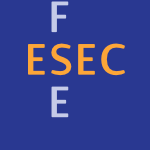 ESEC-FSE-1999-FradetMP #architecture #consistency #multi
ESEC-FSE-1999-FradetMP #architecture #consistency #multi- Consistency Checking for Multiple View Software Architectures (PF, DLM, MP), pp. 410–428.
 ICSE-1999-RoodynE #architecture #multi #realtime
ICSE-1999-RoodynE #architecture #multi #realtime- An Architectural Style for Multiple Real-Time Data Feeds (NR, WE), pp. 564–572.
 HPCA-1999-WallaceTC #multi
HPCA-1999-WallaceTC #multi- Instruction Recycling on a Multiple-Path Processor (SW, DMT, BC), pp. 44–53.
 ICLP-1999-CuiW #logic programming #multi
ICLP-1999-CuiW #logic programming #multi- Multiple Terms in a Tabled Logic Programming System (BC, DSW), pp. 305–319.
 LICS-1999-DevarajanHPP #linear #logic #multi
LICS-1999-DevarajanHPP #linear #logic #multi- Full Completeness of the Multiplicative Linear Logic of Chu Spaces (HD, DJDH, GDP, VRP), pp. 234–243.
 LICS-1999-Guerrini #correctness #linear #multi #proving
LICS-1999-Guerrini #correctness #linear #multi #proving- Correctness of Multiplicative Proof Nets Is Linear (SG), pp. 454–463.
 DAC-1998-LeeKPM #architecture #multi #programmable
DAC-1998-LeeKPM #architecture #multi #programmable- Media Architecture: General Purpose vs. Multiple Application-Specific Programmable Processor (CL, JK, MP, WHMS), pp. 321–326.
 DAC-1998-TaylorQBDHHR #functional #multi #verification
DAC-1998-TaylorQBDHHR #functional #multi #verification- Functional Verification of a Multiple-issue, Out-of-Order, Superscalar Alpha Processor — The DEC Alpha 21264 Microprocessor (SAT, MQ, DB, ND, SH, JH, CR), pp. 638–643.
 DATE-1998-Cheng #multi #on the
DATE-1998-Cheng #multi #on the- On Removing Multiple Redundancies in Combinational Circuits (DIC), pp. 738–742.
 DATE-1998-YiCPHK #behaviour #multi #synthesis
DATE-1998-YiCPHK #behaviour #multi #synthesis- Multiple Behavior Module Synthesis Based on Selective Groupings (JHY, HC, ICP, SHH, CMK), pp. 384–388.
 HT-1998-RobertL #multi
HT-1998-RobertL #multi- Browsing hyperdocuments with multiple focus+context views (LR, EL), pp. 293–294.
 SIGMOD-1998-ZhaoDNS #evaluation #multi #optimisation #query
SIGMOD-1998-ZhaoDNS #evaluation #multi #optimisation #query- Simultaneous Optimization and Evaluation of Multiple Dimensional Queries (YZ, PD, JFN, AS), pp. 271–282.
 VLDB-1998-IshikawaSF #database #multi #named #query
VLDB-1998-IshikawaSF #database #multi #named #query- MindReader: Querying Databases Through Multiple Examples (YI, RS, CF), pp. 218–227.
 ITiCSE-1998-FarthingJM #multi #performance
ITiCSE-1998-FarthingJM #multi #performance- Permutational multiple-choice questions: an objective and efficient alternative to essay-type examination questions (DWF, DMJ, DM), pp. 81–85.
 PASTE-1998-ChaseCHY #analysis #architecture #multi #source code
PASTE-1998-ChaseCHY #analysis #architecture #multi #source code- Recovering Software Architecture from Multiple Source Code Analyses (MPC, SMC, DRH, ASY), pp. 43–50.
 ICALP-1998-ChuangGHKL #canonical #encoding #graph #multi #order
ICALP-1998-ChuangGHKL #canonical #encoding #graph #multi #order- Compact Encodings of Planar Graphs via Canonical Orderings and Multiple Parentheses (RCNC, AG, XH, MYK, HIL), pp. 118–129.
 ICALP-1998-Tiskin #matrix #parallel
ICALP-1998-Tiskin #matrix #parallel- Bulk-Synchronous Parallel Multiplication of Boolean Matrices (AT), pp. 494–506.
 WIA-1998-DuchampFL #automaton #multi
WIA-1998-DuchampFL #automaton #multi- Operations over Automata with Multiplicities (GD, MF, ÉL), pp. 183–191.
 CHI-1998-Rekimoto #approach #interactive #multi
CHI-1998-Rekimoto #approach #interactive #multi- A Multiple Device Approach for Supporting Whiteboard-Based Interactions (JR), pp. 344–351.
 CHI-1998-ZhaiM #coordination #multi
CHI-1998-ZhaiM #coordination #multi- Quantifying Coordination in Multiple DOF Movement and Its Application to Evaluating 6 DOF Input Devices (SZ, PM), pp. 320–327.
 CSCW-1998-MyersSG #collaboration #multi #using
CSCW-1998-MyersSG #collaboration #multi #using- Collaboration Using Multiple PDAs Connected to a PC (BAM, HS, RG), pp. 285–294.
 AdaEurope-1998-Ben-Ari #multi
AdaEurope-1998-Ben-Ari #multi- Synchronizing Multiple Clients and Servers (MBA), pp. 41–52.
 EDOC-1998-Ben-ShaulGR #architecture #component #distributed #framework #implementation #multi
EDOC-1998-Ben-ShaulGR #architecture #component #distributed #framework #implementation #multi- Implementing a component architecture on multiple distributed object frameworks (IBS, JWG, WNR), pp. 319–329.
 EDOC-1998-FisherRE #multi
EDOC-1998-FisherRE #multi- Interoperability in a multiple-provider telecommunications environment (MF, SR, CE), pp. 296–303.
 CIKM-1998-ChenR #data flow #independence #multi
CIKM-1998-ChenR #data flow #independence #multi- Integrating Information from Multiple Independently Developed Data Sources (IMAC, DR), pp. 242–250.
 CIKM-1998-LiYC #abstraction #database #framework #mining #multi #named #sequence
CIKM-1998-LiYC #abstraction #database #framework #mining #multi #named #sequence- MALM: A Framework for Mining Sequence Database at Multiple Abstraction Levels (CSL, PSY, VC), pp. 267–272.
 CIKM-1998-QuWW #multi #performance
CIKM-1998-QuWW #multi #performance- Supporting Fast Search in Time Series for Movement Patterns in Multiple Scales (YQ, CW, XSW), pp. 251–258.
 ICML-1998-Bay #classification #multi #nearest neighbour #set
ICML-1998-Bay #classification #multi #nearest neighbour #set- Combining Nearest Neighbor Classifiers Through Multiple Feature Subsets (SDB), pp. 37–45.
 ICML-1998-MaronR #classification #learning #multi
ICML-1998-MaronR #classification #learning #multi- Multiple-Instance Learning for Natural Scene Classification (OM, ALR), pp. 341–349.
 ICPR-1998-AeberhardV #image #multi #recognition #using
ICPR-1998-AeberhardV #image #multi #recognition #using- Face recognition using multiple image view line segments (SA, OYdV), pp. 1198–1200.
 ICPR-1998-ArakiMTY #image #multi #realtime #robust #sequence #statistics #using
ICPR-1998-ArakiMTY #image #multi #realtime #robust #sequence #statistics #using- Real-time tracking of multiple moving objects in moving camera image sequences using robust statistics (SA, TM, HT, NY), pp. 1433–1435.
 ICPR-1998-ArikiS #classification #multi #using
ICPR-1998-ArikiS #classification #multi #using- Classification of TV sports news by DCT features using multiple subspace method (YA, YS), pp. 1488–1491.
 ICPR-1998-HaraZH #3d #image #modelling #multi
ICPR-1998-HaraZH #3d #image #modelling #multi- Regularization-based 3D object modeling from multiple range images (KH, HZ, TH), pp. 964–968.
 ICPR-1998-LimC #database #generative #multi #network
ICPR-1998-LimC #database #generative #multi #network- Neural network based feature space generation for multiple databases of handwritten numerals (KTL, SIC), pp. 375–377.
 ICPR-1998-LiuW #3d #algorithm #multi #novel
ICPR-1998-LiuW #3d #algorithm #multi #novel- A novel algorithm for recovering the 3D motions of multiple moving rigid objects (MLL, KHW), pp. 655–657.
 ICPR-1998-Masuda #approach #image #integration #multi
ICPR-1998-Masuda #approach #image #integration #multi- A unified approach to volumetric registration and integration of multiple range images (TM), pp. 977–981.
 ICPR-1998-PrevostM #automation #classification #multi #recognition
ICPR-1998-PrevostM #automation #classification #multi #recognition- Automatic allograph selection and multiple expert classification for totally unconstrained handwritten character recognition (LP, MM), pp. 381–383.
 ICPR-1998-SinhaM #multi #optimisation #recognition #word
ICPR-1998-SinhaM #multi #optimisation #recognition #word- Combining multiple OCRs for optimizing word recognition (PS, JM), pp. 436–438.
 ICPR-1998-Sluzek #multi #segmentation #using
ICPR-1998-Sluzek #multi #segmentation #using- Multi-level contour segmentation using multiple segmentation primitives (AS), pp. 741–743.
 ICPR-1998-UtsumiMOY #multi
ICPR-1998-UtsumiMOY #multi- Multiple-view-based tracking of multiple humans (AU, HM, JO, MY), pp. 597–601.
 ICPR-1998-YonemotoTT #3d #multi #sequence #using
ICPR-1998-YonemotoTT #3d #multi #sequence #using- Tracking of 3D multi-part objects using multiple viewpoint time-varying sequences (SY, NT, RiT), pp. 490–494.
 ICPR-1998-ZhouG #3d #multi #re-engineering #visual notation
ICPR-1998-ZhouG #3d #multi #re-engineering #visual notation- 3D model reconstruction by fusing multiple visual cues (LXZ, WKG), pp. 640–642.
 KDD-1998-RaoRC #adaptation #multi
KDD-1998-RaoRC #adaptation #multi- Time Series Forecasting from High-Dimensional Data with Multiple Adaptive Layers (RBR, SR, FC), pp. 319–323.
 UML-1998-KhrissEK #automation #collaboration #diagrams #multi #statechart #synthesis #uml
UML-1998-KhrissEK #automation #collaboration #diagrams #multi #statechart #synthesis #uml- Automating the Synthesis of UML StateChart Diagrams from Multiple Collaboration Diagrams (IK, ME, RKK), pp. 132–147.
 OOPSLA-1998-LeavensM #multi #tuple
OOPSLA-1998-LeavensM #multi #tuple- Multiple Dispatch as Dispatch on Tuples (GTL, TDM), pp. 374–387.
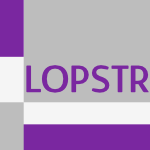 LOPSTR-1998-SmausHK #fault #logic programming #multi #source code #using
LOPSTR-1998-SmausHK #fault #logic programming #multi #source code #using- Preventing Instantiation Errors and Loops for Logic Programs with Multiple Modes Using block Declarations (JGS, PMH, AK), pp. 289–307.
 SAC-1998-SimpsonS #approach #multi
SAC-1998-SimpsonS #approach #multi- A multiple processor approach to data compression (JLS, CLS), pp. 641–649.
 ASPLOS-1998-CitronFR #implementation #multi
ASPLOS-1998-CitronFR #implementation #multi- Accelerating Multi-Media Processing by Implementing Memoing in Multiplication and Division Units (DC, DGF, LR), pp. 252–261.
 CAV-1998-ComonJ #analysis #automaton #multi #safety
CAV-1998-ComonJ #analysis #automaton #multi #safety- Multiple Counters Automata, Safety Analysis and Presburger Arithmetic (HC, YJ), pp. 268–279.
 DAC-1997-PomeranzR #approach #fault #multi #simulation #using
DAC-1997-PomeranzR #approach #fault #multi #simulation #using- Fault Simulation under the Multiple Observation Time Approach using Backward Implications (IP, SMR), pp. 608–613.
 EDTC-1997-AbdullaRK #embedded #multi
EDTC-1997-AbdullaRK #embedded #multi- A scheme for multiple on-chip signature checking for embedded SRAMs (MFA, CPR, AK), p. 625.
 EDTC-1997-DargelasGB #multi #named
EDTC-1997-DargelasGB #multi #named- MOSAIC: a multiple-strategy oriented sequential ATPG for integrated circuits (AD, CG, YB), pp. 29–36.
 ICDAR-1997-AlimogluA #classification #multi
ICDAR-1997-AlimogluA #classification #multi- Combining Multiple Representations and Classifiers for Pen-based Handwritten Digit Recognitio (FA, EA), pp. 637–640.
 ICDAR-1997-KangK #classification #framework #multi #probability
ICDAR-1997-KangK #classification #framework #multi #probability- Probabilistic Framework for Combining Multiple Classifiers at Abstract Level (HJK, JHK), pp. 870–874.
 ICDAR-1997-KimSC #approach #classification #multi #recognition
ICDAR-1997-KimSC #approach #classification #multi #recognition- A systematic approach to classifier selection on combining multiple classifiers for handwritten digit recognition (JK, KS, KC), pp. 459–462.
 ICDAR-1997-LeeWH #integration #multi
ICDAR-1997-LeeWH #integration #multi- Integration of Multiple Levels of Contour Information for Chinese-Character Stroke Extraction (CL, BW, WCH), pp. 584–587.
 ICDAR-1997-RahmanF #case study #multi #recognition #using
ICDAR-1997-RahmanF #case study #multi #recognition #using- Introducing New Multiple Expert Decision Combination Topologies: A Case Study using Recognition of Handwritten Characters (AFRR, MCF), p. 886–?.
 SIGMOD-1997-AtzeniT #database #multi #named #semistructured data
SIGMOD-1997-AtzeniT #database #multi #named #semistructured data- MDM: a Multiple-Data-Model Tool for the Management of Heterogeneous Database Schemes (PA, RT), pp. 528–531.
 SIGMOD-1997-ColbyKLMR #maintenance #multi #policy
SIGMOD-1997-ColbyKLMR #maintenance #multi #policy- Supporting Multiple View Maintenance Policies (LSC, AK, DFL, ISM, KAR), pp. 405–416.
 SIGMOD-1997-JajodiaSSB #data access #framework #multi #policy
SIGMOD-1997-JajodiaSSB #data access #framework #multi #policy- A Unified Framework for Enforcing Multiple Access Control Policies (SJ, PS, VSS, EB), pp. 474–485.
 VLDB-1997-Huyn #multi #self
VLDB-1997-Huyn #multi #self- Multiple-View Self-Maintenance in Data Warehousing Environments (NH), pp. 26–35.
 DLT-1997-Seemann #multi
DLT-1997-Seemann #multi- Multiple-limited ET0L Systems (MS), pp. 377–385.
 ICFP-1997-HuITT #multi #traversal
ICFP-1997-HuITT #multi #traversal- Tupling Calculation Eliminates Multiple Data Traversals (ZH, HI, MT, AT), pp. 164–175.
 HCI-CC-1997-HolmL #abstraction #communication #modelling #multi
HCI-CC-1997-HolmL #abstraction #communication #modelling #multi- Combining Multiple Abstraction Mechanisms in Communication Modeling (PH, JL), pp. 93–96.
 HCI-CC-1997-IkedaOM #adaptation #evolution #multi #ontology
HCI-CC-1997-IkedaOM #adaptation #evolution #multi #ontology- Adaptable Information Clipping Service Supported by Evolving User Profile and Multiple Ontologies (TI, AO, KM), pp. 23–26.
 HCI-CC-1997-SainfortZK #industrial #multi #quality
HCI-CC-1997-SainfortZK #industrial #multi #quality- Assessing, Computing and Providing Quality of Care Information to Multiple Users: The Nursing Home Industry in the U.S. (FS, DZ, SK), pp. 765–768.
 HCI-SEC-1997-Neal #distance #learning #multi #using
HCI-SEC-1997-Neal #distance #learning #multi #using- Using Multiple Technologies for Distance Learning (LN), pp. 111–114.
 HCI-SEC-1997-NishikawaT #database #multi
HCI-SEC-1997-NishikawaT #database #multi- Allowing Multiple Experts to Revise a Thesaurus Database (NN, HT), pp. 371–374.
 EDOC-1997-Kindel #black box #encapsulation #interface #multi #named #what
EDOC-1997-Kindel #black box #encapsulation #interface #multi #named #what- COM: what makes it work, black-box encapsulation through multiple, immutable interfaces (CK), pp. 68–77.
 CIKM-1997-MehrotraHK #multi
CIKM-1997-MehrotraHK #multi- Dealing with Partial Failures in Multiple Processor Primary-Backup Systems (SM, KH, SMK), pp. 371–378.
 ICML-1997-Domingos #information management #modelling #multi
ICML-1997-Domingos #information management #modelling #multi- Knowledge Acquisition form Examples Vis Multiple Models (PMD), pp. 98–106.
 ICML-1997-VilaltaR #classification #induction #multi
ICML-1997-VilaltaR #classification #induction #multi- Integrating Feature Construction with Multiple Classifiers in Decision Tree Induction (RV, LAR), pp. 394–402.
 KDD-1997-JensenS #multi
KDD-1997-JensenS #multi- Adjusting for Multiple Comparisons in Decision Tree Pruning (DJ, MDS), pp. 195–198.
 KDD-1997-StoughB #image #multi #reduction
KDD-1997-StoughB #image #multi #reduction- Image Feature Reduction through Spoiling: Its Application to Multiple Matched Filters for Focus of Attention (TMS, CEB), pp. 255–258.
 KDD-1997-ZighedRF #learning #multi
KDD-1997-ZighedRF #learning #multi- Optimal Multiple Intervals Discretization of Continuous Attributes for Supervised Learning (DAZ, RR, FF), pp. 295–298.
 SIGIR-1997-Lee #analysis #multi
SIGIR-1997-Lee #analysis #multi- Analyses of Multiple Evidence Combination (JHL), pp. 267–276.
 TOOLS-ASIA-1997-Dai #approach #data mining #database #integration #mining #multi #object-oriented
TOOLS-ASIA-1997-Dai #approach #data mining #database #integration #mining #multi #object-oriented- An Object-Oriented Approach to Schema Integration and Data Mining in Multiple Databases (HD), pp. 294–303.
 TOOLS-PACIFIC-1997-WongC #multi #type safety
TOOLS-PACIFIC-1997-WongC #multi #type safety- Method Dispatching and Type Safety for Objects with Multiple Roles (RKW, HLC), pp. 286–296.
 SAC-1997-WeiqiY #multi
SAC-1997-WeiqiY #multi- Spatial index based on multiple interval segments (XW, YF), pp. 152–154.
 HPCA-1997-AmzaCDZ #adaptation #multi #protocol
HPCA-1997-AmzaCDZ #adaptation #multi #protocol- Software DSM Protocols that Adapt between Single Writer and Multiple Writer (CA, ALC, SD, WZ), pp. 261–271.
 HPCA-1997-WallaceB #branch #multi #predict
HPCA-1997-WallaceB #branch #multi #predict- Multiple Branch and Block Prediction (SW, NB), pp. 94–103.
 PPoPP-1997-FrensW #multi #performance #source code
PPoPP-1997-FrensW #multi #performance #source code- Auto-blocking Matrix-Multiplication or Tracking BLAS3 Performance with Source Code (JDF, DSW), pp. 206–216.
 DAC-1996-KudvaGJN #multi #network #synthesis
DAC-1996-KudvaGJN #multi #network #synthesis- Synthesis for Hazard-free Customized CMOS Complex-Gate Networks Under Multiple-Input Changes (PK, GG, HMJ, SMN), pp. 77–82.
 DAC-1996-MehendaleVS #code generation #linear #multi
DAC-1996-MehendaleVS #code generation #linear #multi- Optimized Code Generation of Multiplication-free Linear Transforms (MM, GV, SDS), pp. 41–46.
 DAC-1996-PapachristouSN #design #effectiveness #multi #power management
DAC-1996-PapachristouSN #design #effectiveness #multi #power management- An Effective Power Management Scheme for RTL Design Based on Multiple Clocks (CAP, MS, MN), pp. 337–342.
 DAC-1996-TauschW #multi
DAC-1996-TauschW #multi- Multipole Accelerated Capacitance Calculation for Structures with Multiple Dielectrics with high Permittivity Ratios (JT, JKW), pp. 367–370.
 PODS-1996-BettiniWJ #data mining #mining #multi #testing
PODS-1996-BettiniWJ #data mining #mining #multi #testing- Testing Complex Temporal Relationships Involving Multiple Granularities and Its Application to Data Mining (CB, XSW, SJ), pp. 68–78.
 PODS-1996-Fagin #fuzzy #multi
PODS-1996-Fagin #fuzzy #multi- Combining Fuzzy Information from Multiple Systems (RF), pp. 216–226.
 SIGMOD-1996-HanFWCZK #database #interactive #mining #multi #named #relational
SIGMOD-1996-HanFWCZK #database #interactive #mining #multi #named #relational- DBMiner: Interactive Mining of Multiple-Level Knowledge in Relational Databases (JH, YF, WW, JC, ORZ, KK), p. 550.
 VLDB-1996-ChatziantoniouR #database #multi #query #relational
VLDB-1996-ChatziantoniouR #database #multi #query #relational- Querying Multiple Features of Groups in Relational Databases (DC, KAR), pp. 295–306.
 ESOP-1996-BarbutiM #logic #multi #prolog #semantics
ESOP-1996-BarbutiM #logic #multi #prolog #semantics- A Multiple-Valued Logical Semantics for Prolog (RB, PM), pp. 62–76.
 ICALP-1996-Miltersen #bound #multi
ICALP-1996-Miltersen #bound #multi- Lower Bounds for Static Dictionaries on RAMs with Bit Operations But No Multiplication (PBM), pp. 442–453.
 CHI-1996-ZhaiMB #multi #performance
CHI-1996-ZhaiMB #multi #performance- The Influence of Muscle Groups on Performance of Multiple Degree-of-Freedom Input (SZ, PM, WB), pp. 308–315.
 CSCW-1996-KawaiBT #multi #named #using #video
CSCW-1996-KawaiBT #multi #named #using #video- ARGUS: An Active Awareness System Using Computer-Controlled Multiple Cameras (Video Program) (TK, YB, HT), p. 7.
 CSCW-1996-McDanielOM #identification #multi #thread
CSCW-1996-McDanielOM #identification #multi #thread- Identifying and Analyzing Multiple Threads in Computer-Mediated and Face-to-Face Conversations (SEM, GMO, JCM), pp. 39–47.
 ICML-1996-HelmboldSSW #multi #online #using
ICML-1996-HelmboldSSW #multi #online #using- On-Line Portfolio Selection Using Multiplicative Updates (DPH, RES, YS, MKW), pp. 243–251.
 ICML-1996-OatesC #multi
ICML-1996-OatesC #multi- Searching for Structure in Multiple Streams of Data (TO, PRC), pp. 346–354.
 ICML-1996-SahamiHS #categorisation #model-to-text #multi
ICML-1996-SahamiHS #categorisation #model-to-text #multi- Applying the Multiple Cause Mixture Model to Text Categorization (MS, MAH, ES), pp. 435–443.
 ICML-1996-ThrunO #algorithm #learning #multi
ICML-1996-ThrunO #algorithm #learning #multi- Discovering Structure in Multiple Learning Tasks: The TC Algorithm (ST, JO), pp. 489–497.
 ICPR-1996-BasriGJ #image #multi #performance
ICPR-1996-BasriGJ #image #multi #performance- Efficient determination of shape from multiple images containing partial information (RB, AJG, DWJ), pp. 268–274.
 ICPR-1996-CaiA #multi #using
ICPR-1996-CaiA #multi #using- Tracking human motion using multiple cameras (QC, JKA), pp. 68–72.
 ICPR-1996-DoraiWJM #3d #automation #image #modelling #multi
ICPR-1996-DoraiWJM #3d #automation #image #modelling #multi- From images to models: automatic 3D object model construction from multiple views (CD, GW, AKJ, CRM), pp. 770–774.
 ICPR-1996-EggertFF #multi #reverse engineering
ICPR-1996-EggertFF #multi #reverse engineering- Simultaneous registration of multiple range views for use in reverse engineering (DWE, AWF, RBF), pp. 243–247.
 ICPR-1996-Gimelfarb #interactive #multi
ICPR-1996-Gimelfarb #interactive #multi- Non-Markov Gibbs texture model with multiple pairwise pixel interactions (GLG), pp. 591–595.
 ICPR-1996-MasudaSY #3d #image #integration #multi
ICPR-1996-MasudaSY #3d #image #integration #multi- Registration and integration of multiple range images for 3-D model construction (TM, KS, NY), pp. 879–883.
 ICPR-1996-Matsui #detection #image #multi
ICPR-1996-Matsui #detection #image #multi- A new mathematical human vision model with an autonomous image observing mechanism and its application to multiple motion detection (TM), pp. 723–727.
 ICPR-1996-Mel #3d #approach #multi #named #recognition #using #visual notation
ICPR-1996-Mel #3d #approach #multi #named #recognition #using #visual notation- SEEMORE: a view-based approach to 3-D object recognition using multiple visual cues (BWM), pp. 570–574.
 ICPR-1996-MenardL #multi #robust
ICPR-1996-MenardL #multi #robust- Robust stereo on multiple resolutions (CM, AL), pp. 910–914.
 ICPR-1996-PaikCLL #multi #using
ICPR-1996-PaikCLL #multi #using- Multiple recognizers system using two-stage combination (JP, SBC, KL, YL), pp. 581–585.
 ICPR-1996-RoliSB #classification #image #multi #network
ICPR-1996-RoliSB #classification #image #multi #network- Classification of multisensor remote-sensing images by multiple structured neural networks (FR, SBS, LB), pp. 180–184.
 ICPR-1996-SaitoM #algorithm #image #modelling #multi #search-based #using
ICPR-1996-SaitoM #algorithm #image #modelling #multi #search-based #using- Object modeling from multiple images using genetic algorithms (HS, MM), pp. 669–673.
 ICPR-1996-ShaoK #fuzzy #multi
ICPR-1996-ShaoK #fuzzy #multi- Fuzzy non-iterative ARG labeling with multiple interpretations (ZS, JK), pp. 181–185.
 ICPR-1996-StoddartH #multi #set
ICPR-1996-StoddartH #multi #set- Registration of multiple point sets (AJS, AH), pp. 40–44.
 ICPR-1996-StoschekYH #2d #detection #invariant #multi #robust #using
ICPR-1996-StoschekYH #2d #detection #invariant #multi #robust #using- Rotation-invariant and robust multiple-2D-object detection using steerable pyramid denoising and optimized circular harmonic filters (AS, TPYY, RH), pp. 376–380.
 ICPR-1996-SugiyamaA #analysis #multi
ICPR-1996-SugiyamaA #analysis #multi- Edge feature analysis by a vectorized feature extractor and in multiple edges (TS, KA), pp. 280–284.
 ICPR-1996-UmekiM #multi #recognition
ICPR-1996-UmekiM #multi #recognition- Dynamic link matching for multiple object recognition (HU, HM), pp. 65–69.
 ICPR-1996-UtsumiMKN #gesture #multi #recognition #using
ICPR-1996-UtsumiMKN #gesture #multi #recognition #using- Hand gesture recognition system using multiple cameras (AU, TM, FK, RN), pp. 667–671.
 ICPR-1996-WangZJ #multi #network #recognition
ICPR-1996-WangZJ #multi #network #recognition- Multiple experts recognition system based on neural network (SW, XZ, YJ), pp. 452–456.
 ICPR-1996-XuT #geometry #multi #segmentation
ICPR-1996-XuT #geometry #multi #segmentation- Correspondence and segmentation of multiple rigid motions via epipolar geometry (GX, ST), pp. 213–217.
 KDD-1996-MannilaT96a #multi #set
KDD-1996-MannilaT96a #multi #set- Multiple Uses of Frequent Sets and Condensed Representations (Extended Abstract) (HM, HT), pp. 189–194.
 KDD-1996-WangSSZC #automation #multi
KDD-1996-WangSSZC #automation #multi- Automated Discovery of Active Motifs in Multiple RNA Secondary Structures (JTLW, BAS, DS, KZ, CYC), pp. 70–75.
 KR-1996-Leong #multi #reasoning
KR-1996-Leong #multi #reasoning- Multiple Perspective Reasoning (TYL), pp. 562–573.
 SIGIR-1996-JonesFJY #documentation #multi
SIGIR-1996-JonesFJY #documentation #multi- Retrieving Spoken Documents by Combining Multiple Index Sources (GJFJ, JTF, KSJ, SJY), pp. 30–38.
 ICRE-1996-NissenJJZH #analysis #case study #concept #experience #modelling #multi #requirements
ICRE-1996-NissenJJZH #analysis #case study #concept #experience #modelling #multi #requirements- Requirements Analysis from Multiple Perspectives: Experiences with Conceptual Modeling Technology (HWN, MAJ, MJ, GVZ, HH), p. 217.
 ASPLOS-1996-SeznecJSM #branch #multi #predict
ASPLOS-1996-SeznecJSM #branch #multi #predict- Multiple-Block Ahead Branch Predictors (AS, SJ, PS, PM), pp. 116–127.
 CC-1996-FritzonWHSS #array #bytecode #debugging #distributed #parallel #process
CC-1996-FritzonWHSS #array #bytecode #debugging #distributed #parallel #process- A Parallel Debugger with Support for Distributed Arrays, Multiple Executables and Dynamic Processes (PF, RW, OH, JS, PS), pp. 341–355.
 HPCA-1996-ElGindySSSS #configuration management #multi #named #network
HPCA-1996-ElGindySSSS #configuration management #multi #named #network- RMB — A Reconfigurable Multiple Bus Network (HAE, AKS, HS, HS, AS), pp. 108–117.
 CADE-1996-Salzer #axiom #multi #quantifier
CADE-1996-Salzer #axiom #multi #quantifier- Optimal Axiomatizations for Multiple-Valued Operators and Quantifiers Based on Semi-lattices (GS), pp. 688–702.
 DAC-1995-KriegerBK #fault #multi #simulation
DAC-1995-KriegerBK #fault #multi #simulation- Symbolic Fault Simulation for Sequential Circuits and the Multiple Observation Time Test Strategy (RK, BB, MK), pp. 339–344.
 DAC-1995-WurthEA #algorithm #composition #functional #multi
DAC-1995-WurthEA #algorithm #composition #functional #multi- Functional Multiple-Output Decomposition: Theory and an Implicit Algorithm (BW, KE, KA), pp. 54–59.
 ICDAR-v1-1995-ZhaoS #algorithm #image #multi #recognition #word
ICDAR-v1-1995-ZhaoS #algorithm #image #multi #recognition #word- A word recognition algorithm for machine-printed word images of multiple fonts and varying qualities (SXZ, SNS), pp. 351–354.
 VLDB-1995-HanF #database #multi #scalability
VLDB-1995-HanF #database #multi #scalability- Discovery of Multiple-Level Association Rules from Large Databases (JH, YF), pp. 420–431.
 PEPM-1995-PueblaH #implementation #logic programming #multi #source code
PEPM-1995-PueblaH #implementation #logic programming #multi #source code- Implementation of Multiple Specialization in Logic Programs (GP, MVH), pp. 77–87.
 STOC-1995-KargerP #combinator #constraints #multi #optimisation #problem
STOC-1995-KargerP #combinator #constraints #multi #optimisation #problem- Adding multiple cost constraints to combinatorial optimization problems, with applications to multicommodity flows (DRK, SAP), pp. 18–25.
 STOC-1995-Ponzio #bound #branch #integer #multi #source code
STOC-1995-Ponzio #bound #branch #integer #multi #source code- A lower bound for integer multiplication with read-once branching programs (SP), pp. 130–139.
 CHI-1995-MukherjeaFH #hypermedia #multi #network #visualisation
CHI-1995-MukherjeaFH #hypermedia #multi #network #visualisation- Visualizing Complex Hypermedia Networks through Multiple Hierarchical Views (SM, JDF, SEH), pp. 331–337.
 CAiSE-1995-GrundyV #development #multi
CAiSE-1995-GrundyV #development #multi- Providing Integrated Support for Multiple Development Notations (JCG, JRV), pp. 255–268.
 CIKM-1995-Han #concept #mining #multi
CIKM-1995-Han #concept #mining #multi- Mining Knowledge at Multiple Concept Levels (JH), pp. 19–24.
 CIKM-1995-LeongS #multi
CIKM-1995-LeongS #multi- Data Broadcasting Strategies over Multiple Unreliable Wireless Channels (HVL, AS), pp. 96–104.
 CIKM-1995-Wang #algebra #database #multi #query
CIKM-1995-Wang #algebra #database #multi #query- Algebraic Query Languages on Temporal Databases with Multiple Time Granularities (XSW), pp. 304–311.
 KDD-1995-RibeiroKK #database #information management #multi
KDD-1995-RibeiroKK #database #information management #multi- Knowledge Discovery from Multiple Databases (JSR, KAK, LK), pp. 240–245.
 KDD-1995-TsumotoT #automation #induction #multi #recursion #statistics #testing
KDD-1995-TsumotoT #automation #induction #multi #recursion #statistics #testing- Automated Selection of Rule Induction Methods Based on Recursive Iteration of Resampling Methods and Multiple Statistical Testing (ST, HT), pp. 312–317.
 SIGIR-1995-Lee #multi
SIGIR-1995-Lee #multi- Combining Multiple Evidence from Different Properties of Weighting Schemes (JHL), pp. 180–188.
 SIGIR-1995-McKeownR #generative #multi #summary
SIGIR-1995-McKeownR #generative #multi #summary- Generating Summaries of Multiple News Articles (KM, DRR), pp. 74–82.
 ECOOP-1995-BertinoG #multi
ECOOP-1995-BertinoG #multi- Objects with Multiple Most Specific Classes (EB, GG), pp. 102–126.
 SAC-1995-CrawfordVW #algorithm #detection #multi #search-based #using
SAC-1995-CrawfordVW #algorithm #detection #multi #search-based #using- Detecting multiple outliers in regression data using genetic algorithms (KDC, DJV, RLW), pp. 351–356.
 SAC-1995-Gibson #algorithm #data type #multi #optimisation #problem #search-based
SAC-1995-Gibson #algorithm #data type #multi #optimisation #problem #search-based- A genetic algorithm for optimizing problems with multiple disparate data types (GMG), pp. 300–304.
 SAC-1995-KrishnaKumarS #algorithm #fuzzy #modelling #multi #using
SAC-1995-KrishnaKumarS #algorithm #fuzzy #modelling #multi #using- Discovering multiple fuzzy models using the EFMCN algorithm (KK, AS), pp. 537–541.
 SAC-1995-LuoD #algorithm #matrix #parallel #scalability
SAC-1995-LuoD #algorithm #matrix #parallel #scalability- A scalable parallel Strassen’s matrix multiplication algorithm for distributed-memory computers (QL, JBD), pp. 221–226.
 HPCA-1995-FarkasJC #execution #how #multi #question
HPCA-1995-FarkasJC #execution #how #multi #question- How Useful Are Non-Blocking Loads, Stream Buffers and Speculative Execution in Multiple Issue Processors? (KIF, NPJ, PC), pp. 78–89.
 HPCA-1995-FiskeD #concurrent #parallel #scheduling #thread
HPCA-1995-FiskeD #concurrent #parallel #scheduling #thread- Thread Prioritization: A Thread Scheduling Mechanism for Multiple-Context Parallel Processors (SF, WJD), pp. 210–221.
 HPCA-1995-Weiss #implementation #multi #queue
HPCA-1995-Weiss #implementation #multi #queue- Implementing Register Interlocks in Parallel-Pipeline Multiple Instruction Queue, Superscalar Processors (SW), pp. 14–21.
 RTA-1995-KuriharaKO #multi #order #reduction
RTA-1995-KuriharaKO #multi #order #reduction- Completion for Multiple Reduction Orderings (MK, HK, AO), pp. 71–85.
 DAC-1994-PotkonjakSC #constant #multi #performance #using
DAC-1994-PotkonjakSC #constant #multi #performance #using- Efficient Substitution of Multiple Constant Multiplications by Shifts and Additions Using Iterative Pairwise Matching (MP, MBS, AC), pp. 189–194.
 DAC-1994-TomitaYSH #design #fault #logic #multi
DAC-1994-TomitaYSH #design #fault #logic #multi- Rectification of Multiple Logic Design Errors in Multiple Output Circuits (MT, TY, FS, KH), pp. 212–217.
 EDAC-1994-ChangCM #multi
EDAC-1994-ChangCM #multi- Minimizing ROBDD Size of Incompletely Specified Multiple Output Functions (SCC, DIC, MMS), pp. 620–624.
 HT-ECHT-1994-BieberW #backtracking #hypermedia #multi
HT-ECHT-1994-BieberW #backtracking #hypermedia #multi- Backtracking in a Multiple-Window Hypertext Environment (MB, JW), pp. 158–166.
 SIGMOD-1994-HsiaoCY #execution #on the #parallel #pipes and filters
SIGMOD-1994-HsiaoCY #execution #on the #parallel #pipes and filters- On Parallel Execution of Multiple Pipelined Hash Joins (HIH, MSC, PSY), pp. 185–196.
 VLDB-1994-KilgerM #multi #set
VLDB-1994-KilgerM #multi #set- Indexing Multiple Sets (CK, GM), pp. 180–191.
 ESOP-1994-AndersenM #algebra #multi
ESOP-1994-AndersenM #algebra #multi- An Asynchronous Algebra with Multiple Clocks (HRA, MM), pp. 58–73.
 PEPM-1994-FegarasSZ #induction #multi #source code
PEPM-1994-FegarasSZ #induction #multi #source code- Improving Programs Which Recurse over Multiple Inductive Structures (LF, TS, TZ), pp. 21–32.
 PLDI-1994-GranlundM #integer #invariant #multi #using
PLDI-1994-GranlundM #integer #invariant #multi #using- Division by Invariant Integers using Multiplication (TG, PLM), pp. 61–72.
 SAS-1994-CodishD #dependence #logic programming #multi #polymorphism #source code #using
SAS-1994-CodishD #dependence #logic programming #multi #polymorphism #source code #using- Deriving Polymorphic Type Dependencies for Logic Programs Using Multiple Incarnations of Prop (MC, BD), pp. 281–296.
 LFP-1994-AshleyD #implementation #multi #performance
LFP-1994-AshleyD #implementation #multi #performance- An Efficient Implementation of Multiple Return Values in Scheme (JMA, RKD), pp. 140–149.
 LFP-1994-Chuang #array #functional #implementation #multi #random
LFP-1994-Chuang #array #functional #implementation #multi #random- A Randomized Implementation of Multiple Functional Arrays (TRC), pp. 173–184.
 CHI-1994-VoraHS94a #hypermedia #interface #multi
CHI-1994-VoraHS94a #hypermedia #interface #multi- Evaluating the influence of interface styles and multiple access paths in hypertext (PRV, MH, VLS), pp. 323–329.
 AdaEurope-1994-Palm #compilation #multi
AdaEurope-1994-Palm #compilation #multi- Life*ADA: An APSE Integrating Multiple Compiler (SUP), pp. 204–214.
 CAiSE-1994-JarzabekT #modelling #multi #re-engineering #reuse
CAiSE-1994-JarzabekT #modelling #multi #re-engineering #reuse- Modeling Multiple Views of Common Features in Software Reengineering for Reuse (SJ, CLT), pp. 269–282.
 SEKE-1994-CairoGB #formal method #multi #representation
SEKE-1994-CairoGB #formal method #multi #representation- A formal methodology for acquiring and representing knowledge from multiple experts (OC, SG, TB), pp. 281–288.
 SEKE-1994-CheathamFS #compilation #evolution #multi
SEKE-1994-CheathamFS #compilation #evolution #multi- Supporting multiple evolving compilers (TC, AFF, DCS), pp. 241–248.
 SIGIR-1994-BartellCB #automation #multi #retrieval
SIGIR-1994-BartellCB #automation #multi #retrieval- Automatic Combination of Multiple Ranked Retrieval Systems (BTB, GWC, RKB), pp. 173–181.
 OOPSLA-1994-DucournauHHM #inheritance #multi
OOPSLA-1994-DucournauHHM #inheritance #multi- Proposal for a Monotonic Multiple Inheritance Linearization (RD, MH, MH, MLM), pp. 164–175.
 ALP-1994-Miller #logic programming #multi #source code #specification #using
ALP-1994-Miller #logic programming #multi #source code #specification #using- Specifications Using Multiple-Conclusion Logic Programs (DM), pp. 3–4.
 LOPSTR-1994-Dunin-Keplicz #architecture #development #multi #source code
LOPSTR-1994-Dunin-Keplicz #architecture #development #multi #source code- An Architecture with Multiple Meta-Levels for the Development of Correct Programs (BDK), pp. 293–310.
 PLILP-1994-Miller #logic programming #multi #source code #specification #using
PLILP-1994-Miller #logic programming #multi #source code #specification #using- Specifications Using Multiple-Conclusion Logic Programs (DM), pp. 3–4.
 SAC-1994-KhuriBH #algorithm #multi #problem #search-based
SAC-1994-KhuriBH #algorithm #multi #problem #search-based- The zero/one multiple knapsack problem and genetic algorithms (SK, TB, JH), pp. 188–193.
 ASPLOS-1994-ThekkathE #effectiveness #hardware #multi
ASPLOS-1994-ThekkathE #effectiveness #hardware #multi- The Effectiveness of Multiple Hardware Contexts (RT, SJE), pp. 328–337.
 LICS-1994-Miller #logic #multi
LICS-1994-Miller #logic #multi- A Multiple-Conclusion Meta-Logic (DM), pp. 272–281.
 DAC-1993-KuznarBK #multi
DAC-1993-KuznarBK #multi- Cost Minimization of Partitions into Multiple Devices (RK, FB, KK), pp. 315–320.
 DAC-1993-WooK #clustering #implementation #multi #performance
DAC-1993-WooK #clustering #implementation #multi #performance- An Efficient Method of Partitioning Circuits for Multiple-FPGA Implementation. (NSW, JK), pp. 202–207.
 ICDAR-1993-HeutteMPPL #multi #recognition
ICDAR-1993-HeutteMPPL #multi #recognition- Handwritten numeral recognition based on multiple feature extractors (LH, JVM, BP, JLP, YL), pp. 167–170.
 ICDAR-1993-HuangS #classification #metric #multi
ICDAR-1993-HuangS #classification #metric #multi- Combination of multiple classifiers with measurement values (YSH, CYS), pp. 598–601.
 ICDAR-1993-MiyaharaY #multi #network #recognition
ICDAR-1993-MiyaharaY #multi #network #recognition- Printed Japanese character recognition based on multiple modified LVQ neural network (KM, FY), pp. 250–253.
 ICDAR-1993-Nishida #feature model #multi #recognition
ICDAR-1993-Nishida #feature model #multi #recognition- Structural feature extraction on multiple bases with application to handwritten character recognition systems (HN), pp. 27–30.
 ICDAR-1993-PaikJL #automation #multi #recognition
ICDAR-1993-PaikJL #automation #multi #recognition- Multiple combined recognition system for automatic processing of credit card slip applications (JP, SJ, YL), pp. 520–523.
 ICDAR-1993-ParkL #modelling #multi #probability #recognition
ICDAR-1993-ParkL #modelling #multi #probability #recognition- Large-set handwritten character recognition with multiple stochastic models (HSP, SWL), pp. 143–146.
 ICDAR-1993-PowalkaSEW #interactive #multi #recognition #segmentation #word
ICDAR-1993-PowalkaSEW #interactive #multi #recognition #segmentation #word- Multiple word segmentation with interactive look-up for cursive script recognition (RKP, NS, LJE, RJW), pp. 196–199.
 PODS-1993-Gelder #estimation #multi
PODS-1993-Gelder #estimation #multi- Multiple Join Size Estimation by Virtual Domains (AVG), pp. 180–189.
 SIGMOD-1993-ArensK #multi #named
SIGMOD-1993-ArensK #multi #named- SIMS: Retrieving and Integrating Information From Multiple Sources (YA, CAK), pp. 562–563.
 VLDB-1993-MehtaD #memory management #multi
VLDB-1993-MehtaD #memory management #multi- Dynamic Memory Allocation for Multiple-Query Workloads (MM, DJD), pp. 354–367.
 STOC-1993-IduryS #multi
STOC-1993-IduryS #multi- Multiple matching of rectangular patterns (RMI, AAS), pp. 81–90.
 WSA-1993-ChinK #multi #parametricity #recursion
WSA-1993-ChinK #multi #parametricity #recursion- Tupling Functions with Multiple Recursion Parameters (WNC, SCK), pp. 124–140.
 DLT-1993-Raz #context-free grammar #equivalence #multi
DLT-1993-Raz #context-free grammar #equivalence #multi- Deciding Multiplicity Equivalence for Certain Context-free Languages (DR), pp. 18–29.
 INTERCHI-1993-GaverSHL #multi
INTERCHI-1993-GaverSHL #multi- One is not enough: multiple views in a media space (WWG, AS, CH, PL), pp. 335–341.
 INTERCHI-1993-HillLSW #analysis #multi
INTERCHI-1993-HillLSW #analysis #multi- Planning for multiple task work: an analysis of a medical reception worksystem (BH, JL, WS, AW), pp. 314–320.
 CIKM-1993-CosarLS #bound #multi #optimisation #query
CIKM-1993-CosarLS #bound #multi #optimisation #query- Multiple Query Optimization with Depth-First Branch-and-Bound and Dynamic Query Ordering (AC, EPL, JS), pp. 433–438.
 CIKM-1993-Mineau #documentation #multi
CIKM-1993-Mineau #documentation #multi- Facilitating the Creation of a Multiple Index on Graph-Described Documents by Transforming Their Descriptions (GWM), pp. 132–138.
 CIKM-1993-RaschidCD #multi #query
CIKM-1993-RaschidCD #multi #query- Interoperable Query Processing with Multiple Heterogeneous Knowledge Servers (LR, YC, BJD), pp. 461–470.
 SIGIR-1993-BelkinCCC #information retrieval #multi #performance #query
SIGIR-1993-BelkinCCC #information retrieval #multi #performance #query- Effect of Multiple Query Representations on Information Retrieval System Performance (NJB, CC, WBC, JPC), pp. 339–346.
 OOPSLA-1993-Caseau #inheritance #multi #performance
OOPSLA-1993-Caseau #inheritance #multi #performance- Efficient Handling of Multiple Inheritance Hierarchies (YC), pp. 271–287.
 POPL-1993-LeeF #multi
POPL-1993-LeeF #multi- Quasi-Static Scoping: Sharing Variable Bindings Across Multiple Lexical Scopes (SDL, DPF), pp. 479–492.
 POPL-1993-Mairson #logic #multi #type system
POPL-1993-Mairson #logic #multi #type system- A Constructive Logic of Multiple Subtyping (HGM), pp. 313–324.
 ICSE-1993-NuseibehKF #multi #requirements #specification
ICSE-1993-NuseibehKF #multi #requirements #specification- Expressing the Relationships Between Multiple Views in Requirements Specification (BN, JK, AF), pp. 187–196.
 HPDC-1993-MaR #composition #multi #named #queue
HPDC-1993-MaR #composition #multi #named #queue- MULTIPAR: An Output Queue ATM Modular Switch with Multiple Phases and Replicated Planes (JM, KR), pp. 152–159.
 DAC-1992-HungP #constraints #design #multi #synthesis
DAC-1992-HungP #constraints #design #multi #synthesis- High-Level Synthesis with Pin Constraints for Multiple-Chip Designs (YHH, ACP), pp. 231–234.
 DAC-1992-LinCM #generative #multi
DAC-1992-LinCM #generative #multi- Symbolic Prime Generation for Multiple-Valued Functions (BL, OC, JCM), pp. 40–44.
 DAC-1992-Malik #multi #network #optimisation #using
DAC-1992-Malik #multi #network #optimisation #using- Optimization of Primitive Gate Networks Using Multiple Output Two-Level Minimization (AAM), pp. 449–453.
 PODS-1992-Morishita #multi #source code
PODS-1992-Morishita #multi #source code- Avoiding Cartesian Products in Programs for Multiple Joins (SM), pp. 368–379.
 SIGMOD-1992-MerzK #database #multi #named #query
SIGMOD-1992-MerzK #database #multi #named #query- DIRECT: A Query Facility for Multiple Databases (UM, RK), p. 2.
 VLDB-1992-Raz #multi #principle #using
VLDB-1992-Raz #multi #principle #using- The Principle of Commitment Ordering, or Guaranteeing Serializability in a Heterogeneous Environment of Multiple Autonomous Resource Mangers Using Atomic Commitment (YR), pp. 292–312.
 VLDB-1992-Rundensteiner #database #multi #named #object-oriented
VLDB-1992-Rundensteiner #database #multi #named #object-oriented- Multiview: A Methodology for Supporting Multiple Views in Object-Oriented Databases (EAR), pp. 187–198.
 ESOP-1992-ChenM #composition #multi
ESOP-1992-ChenM #composition #multi- Compositional Refinements in Multiple Blackboard Systems (XJC, CM), pp. 93–109.
 STOC-1992-PatersonZ #multi
STOC-1992-PatersonZ #multi- Shallow Multiplication Circuits and Wise Financial Investments (MP, UZ), pp. 429–437.
 ICALP-1992-Krob #decidability #multi #problem #similarity
ICALP-1992-Krob #decidability #multi #problem #similarity- The Equality Problem for Rational Series with Multiplicities in the Tropical Semiring is Undecidable (DK), pp. 101–112.
 ICALP-1992-Schmid #algorithm #multi
ICALP-1992-Schmid #algorithm #multi- The Average CRI-Length of a Tree Collision Resolution Algorithm in Presence of Multiplicity-Dependent Capture Effects (US), pp. 223–234.
 ML-1992-KononenkoK #generative #learning #multi #optimisation #probability
ML-1992-KononenkoK #generative #learning #multi #optimisation #probability- Learning as Optimization: Stochastic Generation of Multiple Knowledge (IK, MK), pp. 257–262.
 ML-1992-Segre #multi #on the
ML-1992-Segre #multi #on the- On Combining Multiple Speedup Techniques (AMS), pp. 400–405.
 ML-1992-TangkitvanichS #concept #fault #multi #relational
ML-1992-TangkitvanichS #concept #fault #multi #relational- Refining a Relational Theory with Multiple Faults in the Concept and Subconcepts (ST, MS), pp. 436–444.
 SEKE-1992-Eichmann #multi #repository #reuse
SEKE-1992-Eichmann #multi #repository #reuse- Supporting Multiple Domains in a Single Reuse Repository (DE), pp. 164–169.
 TOOLS-PACIFIC-1992-Murphy #inheritance #multi
TOOLS-PACIFIC-1992-Murphy #inheritance #multi- Practical Applications of Multiple Inheritance in an OODB (JM), pp. 225–231.
 IWPTS-1992-LidongJL #consistency #multi #optimisation #sequence #testing
IWPTS-1992-LidongJL #consistency #multi #optimisation #sequence #testing- A Further Optimization Technique for Conformance Testing Based on Multiple UIO Sequences (ZL, LJ, HL), pp. 229–235.
 DAC-1991-JoyC #multi
DAC-1991-JoyC #multi- Placement for Clock Period Minimization With Multiple Wave Propagation (DAJ, MJC), pp. 640–643.
 DAC-1991-LaddB #finite #multi #state machine #synthesis
DAC-1991-LaddB #finite #multi #state machine #synthesis- Synthesis of Multiple-Input Change Asynchronous Finite state Machines (ML, WPB), pp. 309–314.
 DAC-1991-YehCL #algorithm #clustering #multi
DAC-1991-YehCL #algorithm #clustering #multi- A General Purpose Multiple Way Partitioning Algorithm (CWY, CKC, TTYL), pp. 421–426.
 SIGMOD-1991-RichardsonS #aspect-oriented #independence #multi #named
SIGMOD-1991-RichardsonS #aspect-oriented #independence #multi #named- Aspects: Extending Objects to Support Multiple, Independent Roles (JER, PMS), pp. 298–307.
 PEPM-1991-Gluck #multi #self #towards
PEPM-1991-Gluck #multi #self #towards- Towards Multiple Self-Application (RG), pp. 309–320.
 ICALP-1991-DurisG #multi #on the #power of
ICALP-1991-DurisG #multi #on the #power of- On the Power of Multiple Reads in a Chip (PD, ZG), pp. 697–706.
 ML-1991-OurstonM #multi
ML-1991-OurstonM #multi- Improving Shared Rules in Multiple Category Domain Theories (DO, RJM), pp. 534–538.
 ECOOP-1991-WolinskiP #multi #representation
ECOOP-1991-WolinskiP #multi #representation- Representation of Complex Objects: Multiple Facets with Part-Whole Hierarchies (FW, JFP), pp. 288–306.
 OOPSLA-1991-Guimaraes #experience #inheritance #multi #tool support #user interface
OOPSLA-1991-Guimaraes #experience #inheritance #multi #tool support #user interface- Building Generic User Interface Tools: an Experience with Multiple Inheritance (NG), pp. 89–96.
 PODS-1990-Tay #multi #on the
PODS-1990-Tay #multi #on the- On the Optimality of Strategies for Multiple Joins (YCT), pp. 124–131.
 SIGMOD-1990-Jagadish #clustering #linear #multi
SIGMOD-1990-Jagadish #clustering #linear #multi- Linear Clustering of Objects with Multiple Atributes (HVJ), pp. 332–342.
 PLDI-1990-PughW #inheritance #layout #multi
PLDI-1990-PughW #inheritance #layout #multi- Two-Directional Record Layout for Multiple Inheritance (WP, GEW), pp. 85–91.
 STOC-1990-HarjuK #automaton #decidability #equivalence #finite #multi
STOC-1990-HarjuK #automaton #decidability #equivalence #finite #multi- Decidability of the Multiplicity Equivalence of Multitape Finite Automata (TH, JK), pp. 477–481.
 ICALP-1990-Anselmo #automaton #multi
ICALP-1990-Anselmo #automaton #multi- Two-Way Automata with Multiplicity (MA), pp. 88–102.
 CSCW-1990-KnisterP #distributed #editing #multi #named #tool support
CSCW-1990-KnisterP #distributed #editing #multi #named #tool support- DistEdit: A Distributed Toolkit for Supporting Multiple Group Editors (MJK, AP), pp. 343–355.
 OOPSLA-ECOOP-1990-Berlin #case study #experience #multi #reuse
OOPSLA-ECOOP-1990-Berlin #case study #experience #multi #reuse- When Objects Collide: Experiences with Reusing Multiple Class Hierarchies (LMB), pp. 181–193.
 OOPSLA-ECOOP-1990-CarreG #inheritance #multi
OOPSLA-ECOOP-1990-CarreG #inheritance #multi- The Point of View Notion for Multiple Inheritance (BC, JMG), pp. 312–321.
 OOPSLA-ECOOP-1990-McDonaldSB #multi
OOPSLA-ECOOP-1990-McDonaldSB #multi- Painting Multiple Views of Complex Objects (JAM, WS, AB), pp. 245–257.
 WAGA-1990-FengKT #evaluation #incremental #multi
WAGA-1990-FengKT #evaluation #incremental #multi- Incremental Attribute Evaluation for Multiple Subtree Replacements in Structure-Oriented Environments (AF, TK, KT), pp. 192–206.
 CLP-1990-JacobsLW90 #logic programming #multi #runtime #source code
CLP-1990-JacobsLW90 #logic programming #multi #runtime #source code- Multiple Specialization of Logic Programs with Run-Time Test (DJ, AL, WHW), pp. 717–731.
 CSL-1990-Hahnle #logic #multi #performance #proving #towards
CSL-1990-Hahnle #logic #multi #performance #proving #towards- Towards an Efficient Tableau Proof Procedure for Multiple-Valued Logics (RH), pp. 248–260.
 VLDB-1989-IyerRV #algorithm #multi
VLDB-1989-IyerRV #algorithm #multi- Percentile Finding Algorithm for Multiple Sorted Runs (BRI, GRR, PJV), pp. 135–144.
 ML-1989-CaruanaSE #algorithm #bias #induction #multi #search-based #using
ML-1989-CaruanaSE #algorithm #bias #induction #multi #search-based #using- Using Multiple Representations to Improve Inductive Bias: Gray and Binary Coding for Genetic Algorithms (RC, JDS, LJE), pp. 375–378.
 ECOOP-1989-KaiserPHW #parallel
ECOOP-1989-KaiserPHW #parallel- MELDing Multiple Granularities of Parallelism (GEK, SSP, WH, SFW), pp. 147–166.
 OOPSLA-1989-ConnorDMB #inheritance #multi
OOPSLA-1989-ConnorDMB #inheritance #multi- An Object Addressing Mechanism for Statically Types Languages with Multiple Inheritance (RCHC, AD, RM, ALB), pp. 279–285.
 OOPSLA-1989-DixonMSV #inheritance #multi #performance
OOPSLA-1989-DixonMSV #inheritance #multi #performance- A Fast Method Dispatcher for Compiled Languages with Multiple Inheritance (RD, TM, PS, MV), pp. 211–214.
 ASPLOS-1989-SmithJH #multi
ASPLOS-1989-SmithJH #multi- Limits on Multiple Instruction Issue (MDS, MJ, MH), pp. 290–302.
 LICS-1989-Wand #inheritance #multi #type inference
LICS-1989-Wand #inheritance #multi #type inference- Type Inference for Record Concatenation and Multiple Inheritance (MW), pp. 92–97.
 NACLP-1989-HanL #linear #multi #recursion
NACLP-1989-HanL #linear #multi #recursion- Processing Multiple Linear Recursions (JH, LL), pp. 816–830.
 NACLP-1989-Winsborough #analysis #multi #reachability
NACLP-1989-Winsborough #analysis #multi #reachability- Path-Dependent Reachability Analysis for Multiple Specialization (WHW), pp. 133–153.
 DAC-1988-BaerLMNSW #multi
DAC-1988-BaerLMNSW #multi- A Notation for Describing Multiple Views of VLSI Circuits (JLB, MCL, LM, RN, LS, WW), pp. 102–107.
 PODS-1988-MuralikrishnaD #multi #optimisation #query
PODS-1988-MuralikrishnaD #multi #optimisation #query- Optimization of Multiple-Relation Multiple-Disjunct Queries (MM, DJD), pp. 263–275.
 VLDB-1988-KentSR #database #multi #scalability
VLDB-1988-KentSR #database #multi #scalability- A Superimposed Coding Scheme Based on Multiple Block Descriptor Files for Indexing Very Large Data Bases (AJK, RSD, KR), pp. 351–359.
 VLDB-1988-RosenthalC #multi #query
VLDB-1988-RosenthalC #multi #query- Anatomy of a Mudular Multiple Query Optimizer (AR, USC), pp. 230–239.
 ML-1988-Cohen #learning #multi
ML-1988-Cohen #learning #multi- Generalizing Number and Learning from Multiple Examples in Explanation Based Learning (WWC), pp. 256–269.
 ML-1988-Gross #concept #incremental #learning #multi #using
ML-1988-Gross #concept #incremental #learning #multi #using- Incremental Multiple Concept Learning Using Experiments (KPG), pp. 65–72.
 ML-1988-RajamoneyD #approach #multi #problem #reduction
ML-1988-RajamoneyD #approach #multi #problem #reduction- Active Explanation Reduction: An Approach to the Multiple Explanations Problem (SAR, GD), pp. 242–255.
 ECOOP-1988-Knudsen #classification #multi
ECOOP-1988-Knudsen #classification #multi- Name Collision in Multiple Classification Hierarchies (JLK), pp. 93–109.
 JICSCP-1988-AllenS88 #logic #multi #question
JICSCP-1988-AllenS88 #logic #multi #question- Multiple Interpretations of the Logical Structure of Legal Rules: Impediment or Boon to Legal Expert Systems? (LEA, CSS), pp. 1609–1623.
 STOC-1987-CoppersmithW #matrix #multi
STOC-1987-CoppersmithW #matrix #multi- Matrix Multiplication via Arithmetic Progressions (DC, SW), pp. 1–6.
 STOC-1987-HastadLR #analysis #multi #protocol
STOC-1987-HastadLR #analysis #multi #protocol- Analysis of Backoff Protocols for Multiple Access Channels (Extended Abstract) (JH, FTL, BR), pp. 241–253.
 HCI-CE-1987-OShaughnessyCK #information management #multi #online
HCI-CE-1987-OShaughnessyCK #information management #multi #online- Multiple Attribute Decision Making and On-Line Information Systems (MPO, SC, EK), pp. 61–66.
 ECOOP-1987-DucournauH #algorithm #inheritance #multi #object-oriented #on the #programming
ECOOP-1987-DucournauH #algorithm #inheritance #multi #object-oriented #on the #programming- On Some Algorithms for Multiple Inheritance in Object-Oriented Programming (RD, MH), pp. 243–252.
 ESEC-1987-CollbergK #implementation #multi
ESEC-1987-CollbergK #implementation #multi- A Property-Based Method for Selecting Among Multiple Implementations of Modules (CSC, MGK), pp. 193–201.
 ASPLOS-1987-MagenheimerPPZ #architecture #integer #multi #precise
ASPLOS-1987-MagenheimerPPZ #architecture #integer #multi #precise- Integer Multiplication and Division on the HP Precision Architecture (DJM, LP, KP, DZ), pp. 90–99.
 ICLP-1987-ChikayamaK87 #haskell #multi
ICLP-1987-ChikayamaK87 #haskell #multi- Multiple Reference Management in Flat GHC (TC, YK), pp. 276–293.
 LICS-1987-GoguenM #algebra #multi #order
LICS-1987-GoguenM #algebra #multi #order- Order-Sorted Algebra solves the Constructor-Selector, Multiple (JAG, JM), pp. 18–29.
 DAC-1986-Adler #multi #named
DAC-1986-Adler #multi #named- SIMMOS: a multiple-delay switch-level simulator (DA), pp. 159–163.
 DAC-1986-KuoC #generative #multi
DAC-1986-KuoC #generative #multi- Generating essential primes for a Boolean function with multiple-valued inputs (YSK, WKC), pp. 193–199.
 VLDB-1986-ChakravarthyM #database #deduction #graph #multi #query #using
VLDB-1986-ChakravarthyM #database #deduction #graph #multi #query #using- Multiple Query Processing in Deductive Databases using Query Graphs (USC, JM), pp. 384–391.
 OOPSLA-1986-Ingalls #morphism #multi #polymorphism
OOPSLA-1986-Ingalls #morphism #multi #polymorphism- A Simple Technique for Handling Multiple Polymorphism (DHHI), pp. 347–349.
 DAC-1985-AgrawalAB #multi
DAC-1985-AgrawalAB #multi- Multiple output minimization (PA, VDA, NNB), pp. 674–680.
 DAC-1985-Chan #analysis #development #multi #network
DAC-1985-Chan #analysis #development #multi #network- Development of a timing analysis program for multiple clocked network (EC), pp. 816–819.
 SIGMOD-1985-HsuI #multi
SIGMOD-1985-HsuI #multi- Integrity Checking for Multiple Updates (AH, TI), pp. 152–168.
 ICALP-1985-VarmanR #array #matrix #multi #on the #using
ICALP-1985-VarmanR #array #matrix #multi #on the #using- On Matrix Multiplication Using Array Processors (PJV, IVR), pp. 487–496.
 SIGIR-1985-McLeod #database #documentation #multi #retrieval
SIGIR-1985-McLeod #database #documentation #multi #retrieval- Handling Multiple Databases in Document Retrieval (IM), pp. 26–32.
 SIGMOD-1984-Fedorowicz #database #evaluation #multi #using
SIGMOD-1984-Fedorowicz #database #evaluation #multi #using- Database Evaluation Using Multiple Regression Techniques (JF), pp. 70–76.
 VLDB-1984-HarderP #multi #operating system
VLDB-1984-HarderP #multi #operating system- Evaluating Multiple Server DBMS in General Purpors Operating System Environments (TH, PP), pp. 129–140.
 VLDB-1984-Walter #approach #commit #database #multi #transaction
VLDB-1984-Walter #approach #commit #database #multi #transaction- Nested Transactions with Multiple Commit Points: An Approach to the Structuring of Advanced Database Applications (BW), pp. 161–171.
 ICSE-1984-Reiss #development #multi #named
ICSE-1984-Reiss #development #multi #named- PECAN: Program Development Systems That Support Multiple Views (SPR), pp. 323–333.
 DAC-1983-MicheliS #array #logic #multi #named #programmable
DAC-1983-MicheliS #array #logic #multi #named #programmable- PLEASURE: a computer program for simple/multiple constrained/unconstrained folding of Programmable Logic Arrays (GDM, ALSV), pp. 530–537.
 DAC-1983-OkazakiMY #multi
DAC-1983-OkazakiMY #multi- A multiple media delay simulator for MOS LSI circuits (KO, TM, TY), pp. 279–285.
 VLDB-1983-LinN #multi
VLDB-1983-LinN #multi- Basic Timestamp, Multiple Version Timestamp, and Two-Phase Locking (WTKL, JN), pp. 109–119.
 PODS-1982-PapadimitriouK #concurrent #multi #on the
PODS-1982-PapadimitriouK #concurrent #multi #on the- On Concurrency Control by Multiple Versions (CHP, PCK), pp. 76–82.
 STOC-1982-BabaiGM #bound #graph #morphism #multi
STOC-1982-BabaiGM #bound #graph #morphism #multi- Isomorphism of Graphs with Bounded Eigenvalue Multiplicity (LB, DYG, DMM), pp. 310–324.
 STOC-1982-DolevS #algorithm #multi #polynomial
STOC-1982-DolevS #algorithm #multi #polynomial- Polynomial Algorithms for Multiple Processor Agreement (DD, HRS), pp. 401–407.
 DAC-1981-NagleP #algorithm #design #hardware #multi
DAC-1981-NagleP #algorithm #design #hardware #multi- Algorithms for multiple-criterion design of microprogrammed control hardware (AWN, ACP), pp. 486–493.
 ICALP-1981-PreparataV #fourier #integer #multi #network
ICALP-1981-PreparataV #fourier #integer #multi #network- Area-Time Optimal VLSI Networks for Computing Integer Multiplications and Discrete Fourier Transform (FPP, JV), pp. 29–40.
 DAC-1980-NhamB #multi
DAC-1980-NhamB #multi- A multiple delay simulator for MOS LSI circuits (HNN, AKB), pp. 610–617.
 ICALP-1980-Alt #integer #multi
ICALP-1980-Alt #integer #multi- Functions Equivalent to Integer Multiplication (HA), pp. 30–37.
 CADE-1980-BundyW #algebra #multi #using
CADE-1980-BundyW #algebra #multi #using- Using Meta-Level Inference for Selective Application of Multiple Rewrite Rules in Algebraic Manipulation (AB, BW), pp. 24–38.
 DAC-1979-Cha #fault #multi #network
DAC-1979-Cha #fault #multi #network- Multiple fault diagnosis in combinational networks (CWC), pp. 149–155.
 VLDB-1979-Buneman #database #multi #problem
VLDB-1979-Buneman #database #multi #problem- The Problem of Multiple Paths in a Database Schema (PB), pp. 368–372.
 ICALP-1979-SavageS #integer #multi #trade-off
ICALP-1979-SavageS #integer #multi #trade-off- Space-Time Tradeoffs for Oblivious Integer Multiplications (JES, SS), pp. 498–504.
 SOSP-1979-LantzR #multi #process
SOSP-1979-LantzR #multi #process- Virtual Terminal Management in a Multiple Process Environment (KAL, RFR), pp. 86–97.
 SIGMOD-1978-FryS #database #multi #towards
SIGMOD-1978-FryS #database #multi #towards- Towards the Support of Integrated Views of Multiple Databases: An Aggregate Schema Facility (DES, JPF), pp. 132–143.
 SIGMOD-1978-YamamotoTUI #design #multi #order
SIGMOD-1978-YamamotoTUI #design #multi #order- Design of a Generalized Balanced Multiple-Valued File Organization Scheme of Order Two (SY, ST, KU, HI), pp. 47–51.
 VLDB-1977-DaleY #database #interface #multi
VLDB-1977-DaleY #database #interface #multi- A Processing Interface for Multiple External Schema Access to a Data Base Management System (AGD, CVY), pp. 318–325.
 VLDB-1977-KlugT #framework #multi
VLDB-1977-KlugT #framework #multi- Multiple View Support within the ANSI/SPARC Framework (ACK, DT), pp. 477–488.
 VLDB-1977-YamamotoTUI #design #multi
VLDB-1977-YamamotoTUI #design #multi- Design of a Balanced Multiple Valued File Organization Schema with the Least Redundancy (SY, ST, KU, HI), p. 230.
 ICSE-1976-Gelenbe #multi
ICSE-1976-Gelenbe #multi- A Model of Roll-Back Recovery with Multiple Checkpoints (EG), pp. 251–255.
 VLDB-1975-Omahen #memory management #multi
VLDB-1975-Omahen #memory management #multi- Estimating Response Time for Auxiliary Memory Configuartions with Multiple Movable-Head Disk Modules (KO), pp. 473–495.
 VLDB-1975-Sekino #concurrent #multi
VLDB-1975-Sekino #concurrent #multi- Multiple Concurrent Updates (LCS), pp. 505–507.
 STOC-1974-Kedem #bound #multi
STOC-1974-Kedem #bound #multi- Combining Dimensionality and Rate of Growth Arguments for Establishing Lower Bounds on the Number of Multiplications (ZMK), pp. 334–341.
 ICALP-1974-Lomet #automation #generative #multi #parsing
ICALP-1974-Lomet #automation #generative #multi #parsing- Automatic Generation of Multiple Exit Parsing Subroutines (DBL), pp. 214–231.
 STOC-1973-FischerS #integer #multi #online #performance
STOC-1973-FischerS #integer #multi #online #performance- Fast On-Line Integer Multiplication (MJF, LJS), pp. 67–72.
 STOC-1973-HopcroftM #complexity #matrix #multi
STOC-1973-HopcroftM #complexity #matrix #multi- Duality Applied to the Complexity of Matrix Multiplications and other Bilinear Forms (JEH, JM), pp. 73–87.
 STOC-1972-Kung #bound #multi #performance
STOC-1972-Kung #bound #multi #performance- A Bound on the Multiplication Efficiency of Iteration (HTK), pp. 102–107.
 STOC-1971-Fiduccia #matrix #multi #performance
STOC-1971-Fiduccia #matrix #multi #performance- Fast Matrix Multiplication (CMF), pp. 45–49.
 SOSP-1969-Johnston #algorithm #multi #process
SOSP-1969-Johnston #algorithm #multi #process- Structure of multiple activity algorithms (JBJ), pp. 80–82.
 SOSP-1967-Fuchel68 #design #multi
SOSP-1967-Fuchel68 #design #multi- Considerations in the design of a multiple computer system with extended core storage (KF), pp. 334–340.
 CASE-2015-AmriBARF #multi #robust #using
CASE-2015-AmriBARF #multi #robust #using CASE-2015-DamesK #automation #detection #locality #multi #smarttech
CASE-2015-DamesK #automation #detection #locality #multi #smarttech CASE-2015-LiaoHJ #multi
CASE-2015-LiaoHJ #multi CASE-2015-ParisioWKEJ #energy #multi
CASE-2015-ParisioWKEJ #energy #multi CASE-2015-TorresP #multi #using
CASE-2015-TorresP #multi #using CASE-2015-YuYS #multi
CASE-2015-YuYS #multi CASE-2015-ZonEHJVSB #detection #multi #realtime #using
CASE-2015-ZonEHJVSB #detection #multi #realtime #using DAC-2015-JungC #embedded #multi #named #performance #simulation
DAC-2015-JungC #embedded #multi #named #performance #simulation DAC-2015-PanLYXL #multi #question
DAC-2015-PanLYXL #multi #question DAC-2015-RoyLUP #multi #named #optimisation #paradigm #performance
DAC-2015-RoyLUP #multi #named #optimisation #paradigm #performance DATE-2015-BalboniFB #configuration management #distributed #latency #multi #network #scalability
DATE-2015-BalboniFB #configuration management #distributed #latency #multi #network #scalability DATE-2015-GorevUD #fault #parallel #simulation
DATE-2015-GorevUD #fault #parallel #simulation DATE-2015-KarageorgosSRRT #multi #variability
DATE-2015-KarageorgosSRRT #multi #variability DATE-2015-LiXWNP #fine-grained #multi #power management #reduction #using
DATE-2015-LiXWNP #fine-grained #multi #power management #reduction #using DATE-2015-RosenMH #architecture #implementation #multi #reliability
DATE-2015-RosenMH #architecture #implementation #multi #reliability DATE-2015-SamieBHH #multi #online
DATE-2015-SamieBHH #multi #online DATE-2015-YuSHEAB #library #multi #statistics #using
DATE-2015-YuSHEAB #library #multi #statistics #using DocEng-2015-WalgerH #multi
DocEng-2015-WalgerH #multi DRR-2015-MiouletBCPB #architecture #multi #network #recognition
DRR-2015-MiouletBCPB #architecture #multi #network #recognition PODS-2015-GuchtWWZ #communication #complexity #distributed #matrix #multi
PODS-2015-GuchtWWZ #communication #complexity #distributed #matrix #multi PODS-2015-Ullman #linear #multi #query
PODS-2015-Ullman #linear #multi #query VLDB-2015-WandeltL #multi #named #string
VLDB-2015-WandeltL #multi #named #string FoSSaCS-2015-KieferMW #automaton #multi
FoSSaCS-2015-KieferMW #automaton #multi TACAS-2015-BassetKTW #game studies #multi #probability #synthesis
TACAS-2015-BassetKTW #game studies #multi #probability #synthesis TACAS-2015-BrazdilCFK #multi #named #synthesis
TACAS-2015-BrazdilCFK #multi #named #synthesis SCAM-2015-PintoKT #analysis #automation #multi #performance
SCAM-2015-PintoKT #analysis #automation #multi #performance PLDI-2015-Sidiroglou-Douskos #automation #fault #multi
PLDI-2015-Sidiroglou-Douskos #automation #fault #multi STOC-2015-AmbainisFG #matrix #multi #performance
STOC-2015-AmbainisFG #matrix #multi #performance STOC-2015-HenzingerKNS #multi #online #problem
STOC-2015-HenzingerKNS #multi #online #problem STOC-2015-ZhuLO #matrix #multi
STOC-2015-ZhuLO #matrix #multi ICALP-v1-2015-Yu #algorithm #combinator #matrix #multi
ICALP-v1-2015-Yu #algorithm #combinator #matrix #multi CHI-2015-Al-AmeenWS #multi #random #towards
CHI-2015-Al-AmeenWS #multi #random #towards CHI-2015-FleckCR #bound #multi #using
CHI-2015-FleckCR #bound #multi #using CHI-2015-JokelaOO #multi #process
CHI-2015-JokelaOO #multi #process CHI-2015-PierceP #design #multi
CHI-2015-PierceP #design #multi CSCW-2015-FreitasD15a #detection #multi #using
CSCW-2015-FreitasD15a #detection #multi #using CSCW-2015-LeeL #behaviour #comprehension #health #multi #social
CSCW-2015-LeeL #behaviour #comprehension #health #multi #social HIMI-IKC-2015-MatsudaOHT #analysis #automation #generative #multi #problem #testing #using
HIMI-IKC-2015-MatsudaOHT #analysis #automation #generative #multi #problem #testing #using SCSM-2015-PervinPDTT #hashtag #multi #twitter
SCSM-2015-PervinPDTT #hashtag #multi #twitter SCSM-2015-PriceMMGBA #multi #named
SCSM-2015-PriceMMGBA #multi #named ECIR-2015-TsaiKH #approximate #distance #multi #probability
ECIR-2015-TsaiKH #approximate #distance #multi #probability ICML-2015-AmidU #learning #multi
ICML-2015-AmidU #learning #multi ICML-2015-CilibertoMPR #learning #multi
ICML-2015-CilibertoMPR #learning #multi ICML-2015-KomiyamaHN #analysis #multi #probability #problem
ICML-2015-KomiyamaHN #analysis #multi #probability #problem ICML-2015-MaeharaYK #game studies #multi #perspective #problem
ICML-2015-MaeharaYK #game studies #multi #perspective #problem ICML-2015-RajanHSFJ #locality #multi
ICML-2015-RajanHSFJ #locality #multi ICML-2015-WangY #learning #matrix #multi
ICML-2015-WangY #learning #matrix #multi KDD-2015-KuoWWCYD #graph #multi #segmentation
KDD-2015-KuoWWCYD #graph #multi #segmentation KDD-2015-NoriKYII #modelling #multi #predict
KDD-2015-NoriKYII #modelling #multi #predict KDD-2015-RaptiSTT #multi #network
KDD-2015-RaptiSTT #multi #network KDD-2015-YangH #learning #multi
KDD-2015-YangH #learning #multi KDD-2015-YuW0PSIW #bound #markov #multi
KDD-2015-YuW0PSIW #bound #markov #multi SEKE-2015-XuB #multi #reliability #using
SEKE-2015-XuB #multi #reliability #using SIGIR-2015-Pal #multi
SIGIR-2015-Pal #multi SIGIR-2015-SongNZAC #learning #multi #network #predict #social #volunteer
SIGIR-2015-SongNZAC #learning #multi #network #predict #social #volunteer SAC-2015-BechetCCC #constraints #mining #multi #sequence
SAC-2015-BechetCCC #constraints #mining #multi #sequence SAC-2015-GuedesBOX #clustering #graph #multi
SAC-2015-GuedesBOX #clustering #graph #multi SAC-2015-MainiS #communication #distributed #multi #using
SAC-2015-MainiS #communication #distributed #multi #using ICSE-v1-2015-YuBC #approach #fault #multi #testing
ICSE-v1-2015-YuBC #approach #fault #multi #testing SPLC-2015-ChavarriagaRNCJ #case study #configuration management #experience #feature model #modelling #multi #using
SPLC-2015-ChavarriagaRNCJ #case study #configuration management #experience #feature model #modelling #multi #using SPLC-2015-HotzWRGL #automation #evaluation #multi
SPLC-2015-HotzWRGL #automation #evaluation #multi CGO-2015-TangZLLHLG #multi #optimisation
CGO-2015-TangZLLHLG #multi #optimisation ISMM-2015-CameronSV #multi
ISMM-2015-CameronSV #multi PPoPP-2015-BensonB #framework #matrix #parallel #performance
PPoPP-2015-BensonB #framework #matrix #parallel #performance LICS-2015-ChatterjeeKK #markov #multi #process
LICS-2015-ChatterjeeKK #markov #multi #process CBSE-2014-DelavalGRP #composition #coordination #multi
CBSE-2014-DelavalGRP #composition #coordination #multi WICSA-2014-SapienzaCP #architecture #clustering #multi
WICSA-2014-SapienzaCP #architecture #clustering #multi CASE-2014-ChangL #mobile #multi
CASE-2014-ChangL #mobile #multi CASE-2014-HuangL #multi #probability
CASE-2014-HuangL #multi #probability CASE-2014-WangCG #algorithm #constraints #estimation #hybrid #multi #problem #scheduling
CASE-2014-WangCG #algorithm #constraints #estimation #hybrid #multi #problem #scheduling CASE-2014-ZhangXG #multi #scheduling
CASE-2014-ZhangXG #multi #scheduling DAC-2014-AgostaBPS #approach #embedded #encryption #execution #multi
DAC-2014-AgostaBPS #approach #embedded #encryption #execution #multi DAC-2014-RaoEST #multi #using
DAC-2014-RaoEST #multi #using DAC-2014-RoyMIT #multi #performance
DAC-2014-RoyMIT #multi #performance DAC-2014-SchneiderPP #agile #analysis #multi
DAC-2014-SchneiderPP #agile #analysis #multi DAC-2014-ShanSFZTXYL #algorithm #analysis #configuration management #encryption #multi
DAC-2014-ShanSFZTXYL #algorithm #analysis #configuration management #encryption #multi DATE-2014-AksoyFM #complexity #constant #design #multi #optimisation
DATE-2014-AksoyFM #complexity #constant #design #multi #optimisation DATE-2014-DoanJP #flexibility #implementation #multi #scalability #using
DATE-2014-DoanJP #flexibility #implementation #multi #scalability #using DATE-2014-PapadimitriouHBML #clustering #fault #injection #modelling #multi #towards
DATE-2014-PapadimitriouHBML #clustering #fault #injection #modelling #multi #towards DATE-2014-ParkKK #design #multi #synthesis
DATE-2014-ParkKK #design #multi #synthesis DATE-2014-SongDY #analysis #bound #multi #order #parametricity #performance #reduction
DATE-2014-SongDY #analysis #bound #multi #order #parametricity #performance #reduction DATE-2014-ZhangLHCW #multi #performance #predict
DATE-2014-ZhangLHCW #multi #performance #predict DRR-2014-LundRW #fault #how #multi #question
DRR-2014-LundRW #fault #how #multi #question ICSME-2014-XuanM #fault #learning #locality #metric #multi #ranking
ICSME-2014-XuanM #fault #learning #locality #metric #multi #ranking MSR-2014-GuptaSP #fault #mining #multi #perspective #process #repository
MSR-2014-GuptaSP #fault #mining #multi #perspective #process #repository STOC-2014-FournierLMS #bound #matrix #multi
STOC-2014-FournierLMS #bound #matrix #multi FLOPS-2014-Magalhaes #multi #parametricity #programming
FLOPS-2014-Magalhaes #multi #parametricity #programming CSCW-2014-SemaanRDM #multi #social #social media #towards
CSCW-2014-SemaanRDM #multi #social #social media #towards HCI-AS-2014-PortouliP #adaptation #multi
HCI-AS-2014-PortouliP #adaptation #multi LCT-NLE-2014-TaraghiSES #classification #learning #markov #multi
LCT-NLE-2014-TaraghiSES #classification #learning #markov #multi ICEIS-v2-2014-PintoDOC #aspect-oriented #development #framework #modelling #multi #product line #programming #towards
ICEIS-v2-2014-PintoDOC #aspect-oriented #development #framework #modelling #multi #product line #programming #towards CIKM-2014-DrumondDSN #modelling #multi #optimisation
CIKM-2014-DrumondDSN #modelling #multi #optimisation CIKM-2014-LimsopathamMO #modelling #multi #ranking #towards
CIKM-2014-LimsopathamMO #modelling #multi #ranking #towards CIKM-2014-SchneiderBV #linear #multi
CIKM-2014-SchneiderBV #linear #multi CIKM-2014-ShenJ #information management #multi #network #online #social
CIKM-2014-ShenJ #information management #multi #network #online #social CIKM-2014-VatsalanC #database #multi #privacy #scalability
CIKM-2014-VatsalanC #database #multi #privacy #scalability CIKM-2014-YuR #multi
CIKM-2014-YuR #multi ECIR-2014-BouchouchaLN #multi #query
ECIR-2014-BouchouchaLN #multi #query ICML-c2-2014-ChakrabartiFCM #multi #network #scalability
ICML-c2-2014-ChakrabartiFCM #multi #network #scalability ICML-c2-2014-JawanpuriaVN #feature model #kernel #learning #multi #on the
ICML-c2-2014-JawanpuriaVN #feature model #kernel #learning #multi #on the ICML-c2-2014-LiuZBP #dependence #modelling #multi #testing #visual notation
ICML-c2-2014-LiuZBP #dependence #modelling #multi #testing #visual notation ICML-c2-2014-RodriguesPR #classification #learning #multi #process
ICML-c2-2014-RodriguesPR #classification #learning #multi #process ICML-c2-2014-ZhouCL #crowdsourcing #identification #multi
ICML-c2-2014-ZhouCL #crowdsourcing #identification #multi ICPR-2014-AggarwalM #algorithm #metric #multi #random
ICPR-2014-AggarwalM #algorithm #metric #multi #random ICPR-2014-BashbaghiGSB #multi #using
ICPR-2014-BashbaghiGSB #multi #using ICPR-2014-CheplyginaSTPLB #classification #learning #multi
ICPR-2014-CheplyginaSTPLB #classification #learning #multi ICPR-2014-DengWGZZ #modelling #multi
ICPR-2014-DengWGZZ #modelling #multi ICPR-2014-DonoserHS #multi
ICPR-2014-DonoserHS #multi ICPR-2014-ElmikatyS #detection #image #multi #using
ICPR-2014-ElmikatyS #detection #image #multi #using ICPR-2014-GaurHC #design #distance #image #kernel #multi
ICPR-2014-GaurHC #design #distance #image #kernel #multi ICPR-2014-GuoZLCZ #clustering #kernel #learning #multi
ICPR-2014-GuoZLCZ #clustering #kernel #learning #multi ICPR-2014-HadjadjiCG #classification #multi
ICPR-2014-HadjadjiCG #classification #multi ICPR-2014-JangLSK #automation #classification #multi #using #video
ICPR-2014-JangLSK #automation #classification #multi #using #video ICPR-2014-KhanVP #multi #visual notation
ICPR-2014-KhanVP #multi #visual notation ICPR-2014-KimBKC #multi #online #people
ICPR-2014-KimBKC #multi #online #people ICPR-2014-LiYLMDWX #higher-order #multi
ICPR-2014-LiYLMDWX #higher-order #multi ICPR-2014-MadrigalHL #multi
ICPR-2014-MadrigalHL #multi ICPR-2014-NguyenP #linear #multi #using
ICPR-2014-NguyenP #linear #multi #using ICPR-2014-OHarneyMRCSCBF #kernel #learning #multi #pseudo
ICPR-2014-OHarneyMRCSCBF #kernel #learning #multi #pseudo ICPR-2014-PhamKO #integration #multi #named
ICPR-2014-PhamKO #integration #multi #named ICPR-2014-SatoKSK #classification #learning #multi
ICPR-2014-SatoKSK #classification #learning #multi ICPR-2014-SengerSMK #behaviour #multi #segmentation
ICPR-2014-SengerSMK #behaviour #multi #segmentation ICPR-2014-SharifzadehZK #estimation #forensics #modelling #multi #parametricity #visualisation
ICPR-2014-SharifzadehZK #estimation #forensics #modelling #multi #parametricity #visualisation ICPR-2014-Shirakawa #multi #performance #similarity #using
ICPR-2014-Shirakawa #multi #performance #similarity #using ICPR-2014-SmedtBTG #combinator #detection #multi
ICPR-2014-SmedtBTG #combinator #detection #multi ICPR-2014-StraehleKKH #learning #multi #random
ICPR-2014-StraehleKKH #learning #multi #random ICPR-2014-TabuchiTDIMKK #estimation #memory management #multi #people
ICPR-2014-TabuchiTDIMKK #estimation #memory management #multi #people ICPR-2014-UmakanthanDFS #learning #multi #process #representation #taxonomy
ICPR-2014-UmakanthanDFS #learning #multi #process #representation #taxonomy ICPR-2014-ZhangHWZ #multi #parsing
ICPR-2014-ZhangHWZ #multi #parsing ICPR-2014-ZhangM14a #detection #learning #multi
ICPR-2014-ZhangM14a #detection #learning #multi ICPR-2014-ZhuWYJ #learning #modelling #multi #recognition #semantics
ICPR-2014-ZhuWYJ #learning #modelling #multi #recognition #semantics KDD-2014-SahooHL #kernel #multi #online
KDD-2014-SahooHL #kernel #multi #online KDD-2014-SpasojevicYRB #multi #named #network #scalability #social #topic
KDD-2014-SpasojevicYRB #multi #named #network #scalability #social #topic KR-2014-DunneDLW #multi
KR-2014-DunneDLW #multi MLDM-2014-HassaniSS #adaptation #clustering #multi
MLDM-2014-HassaniSS #adaptation #clustering #multi MLDM-2014-SenkoD #multi
MLDM-2014-SenkoD #multi SIGIR-2014-ChengYWL #behaviour #multi #recommendation
SIGIR-2014-ChengYWL #behaviour #multi #recommendation SIGIR-2014-Song #enterprise #multi #network #online #social #volunteer
SIGIR-2014-Song #enterprise #multi #network #online #social #volunteer MoDELS-2014-RabiserVGDSL #case study #experience #lessons learnt #modelling #multi
MoDELS-2014-RabiserVGDSL #case study #experience #lessons learnt #modelling #multi MoDELS-2014-RabiserVGDSL #case study #experience #lessons learnt #modelling #multi
MoDELS-2014-RabiserVGDSL #case study #experience #lessons learnt #modelling #multi ECOOP-2014-LeeKZ #concurrent #execution #multi
ECOOP-2014-LeeKZ #concurrent #execution #multi GPCE-2014-KaminGAXYC #multi #optimisation #runtime
GPCE-2014-KaminGAXYC #multi #optimisation #runtime RE-2014-GhanavatiRDA #multi
RE-2014-GhanavatiRDA #multi SAC-2014-CalvoOFR #distributed #multi #parametricity
SAC-2014-CalvoOFR #distributed #multi #parametricity SAC-2014-HuangLD #analysis #modelling #multi #network #performance
SAC-2014-HuangLD #analysis #modelling #multi #network #performance SAC-2014-LiW #clustering #matrix #multi
SAC-2014-LiW #clustering #matrix #multi SAC-2014-PengYYHKH #3d #detection #multi #using
SAC-2014-PengYYHKH #3d #detection #multi #using ICSE-2014-LinXXLPSZ #detection #difference #multi
ICSE-2014-LinXXLPSZ #detection #difference #multi SPLC-2014-SteinNC #feature model #multi
SPLC-2014-SteinNC #feature model #multi CGO-2014-PanditG #execution #kernel #multi #source code
CGO-2014-PanditG #execution #kernel #multi #source code HPDC-2014-BeaumontM #analysis #matrix #multi #scheduling
HPDC-2014-BeaumontM #analysis #matrix #multi #scheduling ISMM-2014-BaconCS #configuration management #garbage collection #hardware #parallel #realtime
ISMM-2014-BaconCS #configuration management #garbage collection #hardware #parallel #realtime PPoPP-2014-LeeKZ #concurrent #execution #multi
PPoPP-2014-LeeKZ #concurrent #execution #multi PPoPP-2014-SandesMMMA #comparison #parallel #sequence
PPoPP-2014-SandesMMMA #comparison #parallel #sequence CASE-2013-DanancherLLF #multi
CASE-2013-DanancherLLF #multi CASE-2013-FerreiraL #generative #multi #tool support #using
CASE-2013-FerreiraL #generative #multi #tool support #using CASE-2013-Fries #agile #automation #fault #fuzzy #multi #using
CASE-2013-Fries #agile #automation #fault #fuzzy #multi #using CASE-2013-WangC #multi #policy #robust
CASE-2013-WangC #multi #policy #robust DAC-2013-EbrahimiAT #analysis #approach #multi
DAC-2013-EbrahimiAT #analysis #approach #multi DAC-2013-FangLC #multi
DAC-2013-FangLC #multi DAC-2013-HoC #multi
DAC-2013-HoC #multi DAC-2013-MishraMD #approach #design #multi
DAC-2013-MishraMD #approach #design #multi DAC-2013-SalodkarRBB #automation #design #multi
DAC-2013-SalodkarRBB #automation #design #multi DAC-2013-SongLPL #3d #multi #optimisation
DAC-2013-SongLPL #3d #multi #optimisation DAC-2013-WuH #constraints #framework #multi #random #robust #set #theorem proving #verification
DAC-2013-WuH #constraints #framework #multi #random #robust #set #theorem proving #verification DAC-2013-ZhouLJ #3d #complexity #finite #linear #multi #scalability
DAC-2013-ZhouLJ #3d #complexity #finite #linear #multi #scalability DATE-2013-BoettcherGAK #energy #multi #named
DATE-2013-BoettcherGAK #energy #multi #named DATE-2013-DeutschC #multi #using
DATE-2013-DeutschC #multi #using DATE-2013-GhaidaG #design #development #multi #process
DATE-2013-GhaidaG #design #development #multi #process DATE-2013-LiuN #multi
DATE-2013-LiuN #multi DATE-2013-LoiaconoPPPQRVB #estimation #multi #performance #problem
DATE-2013-LoiaconoPPPQRVB #estimation #multi #performance #problem DATE-2013-YoonKBS #design #multi #optimisation #parametricity #scheduling
DATE-2013-YoonKBS #design #multi #optimisation #parametricity #scheduling DRR-2013-LundKR #multi
DRR-2013-LundKR #multi ICDAR-2013-NeumannM #multi #on the #recognition
ICDAR-2013-NeumannM #multi #on the #recognition ICDAR-2013-WalhaDLGA #clustering #image #multi
ICDAR-2013-WalhaDLGA #clustering #image #multi ICDAR-2013-WemhoenerYM #multi #using
ICDAR-2013-WemhoenerYM #multi #using ICDAR-2013-ZhangS #estimation #geometry #image #multi
ICDAR-2013-ZhangS #estimation #geometry #image #multi VLDB-2013-RekatsinasDM #clustering #multi
VLDB-2013-RekatsinasDM #clustering #multi ITiCSE-WGR-2013-SandersACEGJLMP #multi #repository
ITiCSE-WGR-2013-SandersACEGJLMP #multi #repository TACAS-2013-BalasubramanianPKL #analysis #multi #named #statechart
TACAS-2013-BalasubramanianPKL #analysis #multi #named #statechart ICSM-2013-Harder #developer #evolution #how #multi
ICSM-2013-Harder #developer #evolution #how #multi ICSM-2013-WangWYLLZ #categorisation #mining #multi #repository
ICSM-2013-WangWYLLZ #categorisation #mining #multi #repository PLDI-2013-LiTCS #adaptation #multi #named
PLDI-2013-LiTCS #adaptation #multi #named STOC-2013-EisenstatK #algorithm #graph #linear #multi
STOC-2013-EisenstatK #algorithm #graph #linear #multi LATA-2013-SippuS #multi #online
LATA-2013-SippuS #multi #online CHI-2013-FuchsFMBI #design #evaluation #multi
CHI-2013-FuchsFMBI #design #evaluation #multi CHI-2013-IonCHHS #multi #named #scalability
CHI-2013-IonCHHS #multi #named #scalability CHI-2013-LafreniereGF #community #multi
CHI-2013-LafreniereGF #community #multi CHI-2013-PerinVF #graph #interactive #multi #visualisation
CHI-2013-PerinVF #graph #interactive #multi #visualisation CHI-2013-WangESM #chat #comparative #evaluation #interface #multi
CHI-2013-WangESM #chat #comparative #evaluation #interface #multi CHI-2013-WarnockMB #multi
CHI-2013-WarnockMB #multi CHI-2013-XuYZLS #parallel #perspective #web
CHI-2013-XuYZLS #parallel #perspective #web DHM-SET-2013-MurataKH #effectiveness #multi
DHM-SET-2013-MurataKH #effectiveness #multi HCI-AMTE-2013-RandallCTL #design #multi
HCI-AMTE-2013-RandallCTL #design #multi HCI-IMT-2013-FuchsFSG #adaptation #multi
HCI-IMT-2013-FuchsFSG #adaptation #multi HCI-UC-2013-HermannSTKS #concept #distributed #multi #network #social #user interface
HCI-UC-2013-HermannSTKS #concept #distributed #multi #network #social #user interface HIMI-D-2013-JinnaiONKAS #evaluation #multi
HIMI-D-2013-JinnaiONKAS #evaluation #multi HIMI-D-2013-Maeshiro #multi #network
HIMI-D-2013-Maeshiro #multi #network OCSC-2013-LanghorneTK #health #multi #online #web
OCSC-2013-LanghorneTK #health #multi #online #web EDOC-2013-GoknilKM #approach #metamodelling #modelling #multi #reasoning #requirements
EDOC-2013-GoknilKM #approach #metamodelling #modelling #multi #reasoning #requirements ICEIS-v1-2013-LaporteDM #documentation #multi #web
ICEIS-v1-2013-LaporteDM #documentation #multi #web ICEIS-v1-2013-LeiteMP #fault #multi
ICEIS-v1-2013-LeiteMP #fault #multi ICEIS-v2-2013-OgataK #multi #optimisation #parametricity
ICEIS-v2-2013-OgataK #multi #optimisation #parametricity ICEIS-v3-2013-BittencourtBDPB #adaptation #multi #user interface
ICEIS-v3-2013-BittencourtBDPB #adaptation #multi #user interface CIKM-2013-KhanDS #multi #scalability
CIKM-2013-KhanDS #multi #scalability CIKM-2013-KongZY #multi #network #social
CIKM-2013-KongZY #multi #network #social ECIR-2013-NishinoYHSN #multi #summary
ECIR-2013-NishinoYHSN #multi #summary ICML-c1-2013-AfkanpourGSB #algorithm #kernel #learning #multi #random #scalability
ICML-c1-2013-AfkanpourGSB #algorithm #kernel #learning #multi #random #scalability ICML-c1-2013-BubeckWV #identification #multi
ICML-c1-2013-BubeckWV #identification #multi ICML-c2-2013-KrummenacherOB #learning #multi
ICML-c2-2013-KrummenacherOB #learning #multi ICML-c2-2013-TranPV #learning #multi
ICML-c2-2013-TranPV #learning #multi ICML-c3-2013-AlmingolML #behaviour #learning #multi
ICML-c3-2013-AlmingolML #behaviour #learning #multi ICML-c3-2013-CortesMR #classification #kernel #multi
ICML-c3-2013-CortesMR #classification #kernel #multi ICML-c3-2013-GerasS #multi
ICML-c3-2013-GerasS #multi ICML-c3-2013-WangWBLT #learning #multi #taxonomy
ICML-c3-2013-WangWBLT #learning #multi #taxonomy ICML-c3-2013-ZhangHSL #learning #multi #named
ICML-c3-2013-ZhangHSL #learning #multi #named KDD-2013-ChenHL #multi #recommendation
KDD-2013-ChenHL #multi #recommendation KDD-2013-TangZM #modelling #multi #topic
KDD-2013-TangZM #modelling #multi #topic KDD-2013-UganderKBK #clustering #graph #multi #network
KDD-2013-UganderKBK #clustering #graph #multi #network KDD-2013-Vatsavai #approach #learning #multi #using
KDD-2013-Vatsavai #approach #learning #multi #using KDD-2013-ZhangHL #learning #multi #named
KDD-2013-ZhangHL #learning #multi #named KDD-2013-ZhengDMZ #collaboration #interactive #matrix #multi #predict
KDD-2013-ZhengDMZ #collaboration #interactive #matrix #multi #predict KDIR-KMIS-2013-NhungNCLT #approach #image #learning #multi
KDIR-KMIS-2013-NhungNCLT #approach #image #learning #multi KEOD-2013-Cruz-FilipeNG #logic programming #multi #ontology #source code
KEOD-2013-Cruz-FilipeNG #logic programming #multi #ontology #source code KEOD-2013-NadarajanYC #framework #multi #ontology #performance #scalability #workflow
KEOD-2013-NadarajanYC #framework #multi #ontology #performance #scalability #workflow KEOD-2013-NogueiraG #multi #nondeterminism #programming #set
KEOD-2013-NogueiraG #multi #nondeterminism #programming #set MLDM-2013-LiuLM #approach #combinator #lightweight #multi
MLDM-2013-LiuLM #approach #combinator #lightweight #multi RecSys-2013-AzariaKR #multi #problem
RecSys-2013-AzariaKR #multi #problem RecSys-2013-ShiKBLH #multi #named #optimisation #rank
RecSys-2013-ShiKBLH #multi #named #optimisation #rank RecSys-2013-WestonWY #multi
RecSys-2013-WestonWY #multi SEKE-2013-DelfimG #coordination #mining #multi #slicing #using
SEKE-2013-DelfimG #coordination #mining #multi #slicing #using SEKE-2013-DengWH #algorithm #combinator #identification #multi #using
SEKE-2013-DengWH #algorithm #combinator #identification #multi #using SEKE-2013-StringfellowRVM #comparison #multi #set
SEKE-2013-StringfellowRVM #comparison #multi #set SIGIR-2013-BoytsovBW #information retrieval #multi
SIGIR-2013-BoytsovBW #information retrieval #multi MoDELS-2013-BalabanM #composition #constraints #correctness #diagrams #multi #uml
MoDELS-2013-BalabanM #composition #constraints #correctness #diagrams #multi #uml MoDELS-2013-TaentzerMAL #metamodelling #migration #multi
MoDELS-2013-TaentzerMAL #metamodelling #migration #multi MoDELS-2013-BalabanM #composition #constraints #correctness #diagrams #multi #uml
MoDELS-2013-BalabanM #composition #constraints #correctness #diagrams #multi #uml MoDELS-2013-TaentzerMAL #metamodelling #migration #multi
MoDELS-2013-TaentzerMAL #metamodelling #migration #multi Onward-2013-Steimann #multi #object-oriented #programming
Onward-2013-Steimann #multi #object-oriented #programming OOPSLA-2013-DEliaD #multi #profiling
OOPSLA-2013-DEliaD #multi #profiling SAC-2013-CavalinKMO #framework #multi #recognition
SAC-2013-CavalinKMO #framework #multi #recognition SAC-2013-PengWR #multi
SAC-2013-PengWR #multi PLEASE-2013-UrliMBC #how #multi #product line #question
PLEASE-2013-UrliMBC #how #multi #product line #question HPCA-2013-WangCWMZLN #architecture #execution #parallel
HPCA-2013-WangCWMZLN #architecture #execution #parallel SOSP-2013-WuBPKM #effectiveness #multi #named
SOSP-2013-WuBPKM #effectiveness #multi #named ICLP-J-2013-ErdemPSSU #approach #multi
ICLP-J-2013-ErdemPSSU #approach #multi ICST-2013-KapfhammerMW #constraints #database #multi #relational #search-based #testing
ICST-2013-KapfhammerMW #constraints #database #multi #relational #search-based #testing ICST-2013-SakamotoSTWF #framework #metric #multi #named #programming language #test coverage #tool support
ICST-2013-SakamotoSTWF #framework #metric #multi #named #programming language #test coverage #tool support RTA-2013-Okada #multi #term rewriting
RTA-2013-Okada #multi #term rewriting QoSA-2012-DajsurenBSH #architecture #case study #consistency #multi
QoSA-2012-DajsurenBSH #architecture #case study #consistency #multi QoSA-2012-EklundB #architecture #ecosystem #framework #multi #using
QoSA-2012-EklundB #architecture #ecosystem #framework #multi #using CASE-2012-TohNT #3d #automation #flexibility #multi
CASE-2012-TohNT #3d #automation #flexibility #multi CASE-2012-YaqubGK #fault #multi
CASE-2012-YaqubGK #fault #multi DAC-2012-SatpathyDDMSB #multi #quality #self
DAC-2012-SatpathyDDMSB #multi #quality #self DATE-2012-SuriBE #approach #multi #problem #scalability
DATE-2012-SuriBE #approach #multi #problem #scalability DATE-2012-WangXPKCP #energy #hybrid #migration #multi
DATE-2012-WangXPKCP #energy #hybrid #migration #multi DocEng-2012-MancillaBP #multi
DocEng-2012-MancillaBP #multi SIGMOD-2012-SimitsisWCD #data flow #execution #multi #optimisation
SIGMOD-2012-SimitsisWCD #data flow #execution #multi #optimisation VLDB-2012-ErdosILTB #multi #problem
VLDB-2012-ErdosILTB #multi #problem VLDB-2012-LiWC #multi #network #profiling #social
VLDB-2012-LiWC #multi #network #profiling #social ESOP-2012-DownenA #approach #multi
ESOP-2012-DownenA #approach #multi PEPM-2012-MatsudaIN #cumulative #multi #polynomial #traversal
PEPM-2012-MatsudaIN #cumulative #multi #polynomial #traversal DLT-2012-CaralpRT #automaton #bound #multi
DLT-2012-CaralpRT #automaton #bound #multi ICALP-v1-2012-JefferyKM #complexity #graph #matrix #multi #quantum #query #using
ICALP-v1-2012-JefferyKM #complexity #graph #matrix #multi #quantum #query #using ICALP-v2-2012-BaldeschiHLS #keyword #multi #on the
ICALP-v2-2012-BaldeschiHLS #keyword #multi #on the IFM-2012-DongolH #multi #reasoning #source code
IFM-2012-DongolH #multi #reasoning #source code GT-VMT-2012-Taentzer #generative #graph #multi
GT-VMT-2012-Taentzer #generative #graph #multi CHI-2012-Hutchings #multi
CHI-2012-Hutchings #multi CIKM-2012-ChoiLKLM #named #parallel #query #xml
CIKM-2012-ChoiLKLM #named #parallel #query #xml CIKM-2012-JiangCWYZY #multi #recommendation #relational #social
CIKM-2012-JiangCWYZY #multi #recommendation #relational #social CIKM-2012-MorenoSRS #learning #multi #named
CIKM-2012-MorenoSRS #learning #multi #named CIKM-2012-NegahbanRG #learning #multi #performance #scalability #statistics #using
CIKM-2012-NegahbanRG #learning #multi #performance #scalability #statistics #using CIKM-2012-ShenDZT #multi #network #online #social
CIKM-2012-ShenDZT #multi #network #online #social CIKM-2012-XieZSzP #data type #linear #multi #performance #representation
CIKM-2012-XieZSzP #data type #linear #multi #performance #representation ECIR-2012-HosseiniCMKV #documentation #multi #on the
ECIR-2012-HosseiniCMKV #documentation #multi #on the ECIR-2012-MantrachR #framework #multi #people #retrieval #social #social media
ECIR-2012-MantrachR #framework #multi #people #retrieval #social #social media ICML-2012-BalasubramanianL #multi #predict
ICML-2012-BalasubramanianL #multi #predict ICML-2012-Gomez-RodriguezS12a #multi #network
ICML-2012-Gomez-RodriguezS12a #multi #network ICML-2012-Gonen #kernel #learning #multi #performance
ICML-2012-Gonen #kernel #learning #multi #performance ICML-2012-GongZM #learning #multi #robust
ICML-2012-GongZM #learning #multi #robust ICML-2012-KumarNKD #classification #framework #kernel #learning #multi
ICML-2012-KumarNKD #classification #framework #kernel #learning #multi ICML-2012-LiuW #modelling #multi #probability
ICML-2012-LiuW #modelling #multi #probability ICML-2012-WulsinJL #clustering #modelling #multi #process
ICML-2012-WulsinJL #clustering #modelling #multi #process ICML-2012-YangMJZZ #kernel #learning #multi #probability #programming
ICML-2012-YangMJZZ #kernel #learning #multi #probability #programming ICPR-2012-0007B #classification #feature model #image #kernel #multi
ICPR-2012-0007B #classification #feature model #image #kernel #multi ICPR-2012-AiDHC #analysis #component #feature model #independence #multi
ICPR-2012-AiDHC #analysis #component #feature model #independence #multi ICPR-2012-BanerjeeN #kernel #learning #multi #process #recognition #using
ICPR-2012-BanerjeeN #kernel #learning #multi #process #recognition #using ICPR-2012-ChenS #multi
ICPR-2012-ChenS #multi ICPR-2012-CoronaTG #classification #multi #named #web #web service
ICPR-2012-CoronaTG #classification #multi #named #web #web service ICPR-2012-DomokosK #multi
ICPR-2012-DomokosK #multi ICPR-2012-GiancardoSSPM #multi #segmentation
ICPR-2012-GiancardoSSPM #multi #segmentation ICPR-2012-HajimirsadeghiM #multi
ICPR-2012-HajimirsadeghiM #multi ICPR-2012-HinoO #kernel #learning #multi
ICPR-2012-HinoO #kernel #learning #multi ICPR-2012-HuangLC #clustering #feature model #kernel #multi #self
ICPR-2012-HuangLC #clustering #feature model #kernel #multi #self ICPR-2012-HuangOSU #detection #framework #multi #recognition
ICPR-2012-HuangOSU #detection #framework #multi #recognition ICPR-2012-KatoHT #estimation #multi
ICPR-2012-KatoHT #estimation #multi ICPR-2012-KrawczykS #analysis #classification #effectiveness #multi
ICPR-2012-KrawczykS #analysis #classification #effectiveness #multi ICPR-2012-LiangM #multi #segmentation
ICPR-2012-LiangM #multi #segmentation ICPR-2012-LiB #multi
ICPR-2012-LiB #multi ICPR-2012-LiCHWM #3d #kernel #learning #multi #recognition
ICPR-2012-LiCHWM #3d #kernel #learning #multi #recognition ICPR-2012-LiuF #analysis #kernel #multi
ICPR-2012-LiuF #analysis #kernel #multi ICPR-2012-LiuZWW #multi #recognition
ICPR-2012-LiuZWW #multi #recognition ICPR-2012-MatsudaY #multi #ranking #recognition
ICPR-2012-MatsudaY #multi #ranking #recognition ICPR-2012-MolnarKJ #multi
ICPR-2012-MolnarKJ #multi ICPR-2012-MorimuraK #generative #multi #statistics
ICPR-2012-MorimuraK #generative #multi #statistics ICPR-2012-MujumdarVK #framework #multi #novel #segmentation #using
ICPR-2012-MujumdarVK #framework #multi #novel #segmentation #using ICPR-2012-NakazawaMMNHYY #multi #re-engineering #using
ICPR-2012-NakazawaMMNHYY #multi #re-engineering #using ICPR-2012-NurunnabiBW #3d #multi #robust #segmentation
ICPR-2012-NurunnabiBW #3d #multi #robust #segmentation ICPR-2012-PinquierKLGMBGD #multi #process #recognition #smarttech
ICPR-2012-PinquierKLGMBGD #multi #process #recognition #smarttech ICPR-2012-RenZMZ #classification #image #multi #optimisation
ICPR-2012-RenZMZ #classification #image #multi #optimisation ICPR-2012-San-BiagioUCCCM #approach #classification #kernel #learning #multi
ICPR-2012-San-BiagioUCCCM #approach #classification #kernel #learning #multi ICPR-2012-SatakeM #multi
ICPR-2012-SatakeM #multi ICPR-2012-TiribuziPVR #detection #framework #kernel #learning #multi
ICPR-2012-TiribuziPVR #detection #framework #kernel #learning #multi ICPR-2012-XueVLW #adaptation #framework #multi #segmentation
ICPR-2012-XueVLW #adaptation #framework #multi #segmentation ICPR-2012-ZhangLC #analysis #detection #multi #novel
ICPR-2012-ZhangLC #analysis #detection #multi #novel ICPR-2012-ZhouVZV #estimation #multi #robust
ICPR-2012-ZhouVZV #estimation #multi #robust KDD-2012-JainVV #kernel #learning #multi #named
KDD-2012-JainVV #kernel #learning #multi #named KDD-2012-ZhangH #induction #learning #multi
KDD-2012-ZhangH #induction #learning #multi KR-2012-ConitzerX #approach #approximate #multi
KR-2012-ConitzerX #approach #approximate #multi KR-2012-FelliGL #ltl #multi #protocol #specification
KR-2012-FelliGL #ltl #multi #protocol #specification MLDM-2012-XuCG #concept #learning #multi #using
MLDM-2012-XuCG #concept #learning #multi #using RecSys-2012-RodriguezPZ #multi #optimisation #recommendation
RecSys-2012-RodriguezPZ #multi #optimisation #recommendation SEKE-2012-HumairaSOWF #framework #metric #multi #programming language #source code #towards
SEKE-2012-HumairaSOWF #framework #metric #multi #programming language #source code #towards SIGIR-2012-BlancoB #multi #query
SIGIR-2012-BlancoB #multi #query SIGIR-2012-CartrightCDDGKWYAMS #framework #multi #retrieval
SIGIR-2012-CartrightCDDGKWYAMS #framework #multi #retrieval SIGIR-2012-HongS #algorithm #multi #retrieval
SIGIR-2012-HongS #algorithm #multi #retrieval ECOOP-2012-OstlundW #multi
ECOOP-2012-OstlundW #multi POPL-2012-AustinF #data flow #information management #multi
POPL-2012-AustinF #data flow #information management #multi SAC-2012-AhnC #algorithm #locality #multi
SAC-2012-AhnC #algorithm #locality #multi SAC-2012-ChhelLGS #biology #multi #using
SAC-2012-ChhelLGS #biology #multi #using SAC-2012-DavoliG #api #multi #named #stack
SAC-2012-DavoliG #api #multi #named #stack SPLC-2012-SavolainenMK #multi #product line
SPLC-2012-SavolainenMK #multi #product line CAV-2012-BrazdilCKN #game studies #multi #performance #synthesis
CAV-2012-BrazdilCKN #game studies #multi #performance #synthesis LICS-2012-SchalkS #linear #logic #modelling #multi
LICS-2012-SchalkS #linear #logic #modelling #multi CBSE-2011-DistefanoFGM #analysis #composition #multi #reliability #workflow
CBSE-2011-DistefanoFGM #analysis #composition #multi #reliability #workflow CASE-2011-FrohlichS #multi #scheduling
CASE-2011-FrohlichS #multi #scheduling CASE-2011-KoyamaOHTMA #automation #multi
CASE-2011-KoyamaOHTMA #automation #multi CASE-2011-LeeL #clustering #concurrent #multi
CASE-2011-LeeL #clustering #concurrent #multi CASE-2011-YanCLWC #multi #scheduling
CASE-2011-YanCLWC #multi #scheduling CASE-2011-YangXZCT #game studies #multi
CASE-2011-YangXZCT #game studies #multi DATE-2011-CabodiN #model checking #multi
DATE-2011-CabodiN #model checking #multi DATE-2011-EnemanCMMCMMBHP #estimation #multi
DATE-2011-EnemanCMMCMMBHP #estimation #multi DATE-2011-FazeliAMAT #estimation #fault #multi
DATE-2011-FazeliAMAT #estimation #fault #multi DATE-2011-GaoHL #debugging #multi
DATE-2011-GaoHL #debugging #multi DATE-2011-YanC #multi
DATE-2011-YanC #multi DATE-2011-YeHL #fault #multi #on the #using
DATE-2011-YeHL #fault #multi #on the #using DRR-2011-XiuB #adaptation #multi #recognition
DRR-2011-XiuB #adaptation #multi #recognition ICDAR-2011-ChoSLK #multi
ICDAR-2011-ChoSLK #multi ICDAR-2011-IwamuraKK #image #multi #recognition #using
ICDAR-2011-IwamuraKK #image #multi #recognition #using ICDAR-2011-KumarPD #classification #documentation #image #learning #multi #using
ICDAR-2011-KumarPD #classification #documentation #image #learning #multi #using ICDAR-2011-LundR #fault #multi
ICDAR-2011-LundR #fault #multi ICDAR-2011-LundWR #fault #multi
ICDAR-2011-LundWR #fault #multi ICDAR-2011-MarianoLSFMT #documentation #image #multi
ICDAR-2011-MarianoLSFMT #documentation #image #multi ICDAR-2011-ShaoWXZZ11a #learning #multi
ICDAR-2011-ShaoWXZZ11a #learning #multi VLDB-2011-YangPS #graph #mining #multi #performance
VLDB-2011-YangPS #graph #mining #multi #performance ITiCSE-2011-PollockH #learning #multi
ITiCSE-2011-PollockH #learning #multi ICSM-2011-ShternT #clustering #multi #using
ICSM-2011-ShternT #clustering #multi #using ICSM-2011-TarvoZC #algorithm #branch #integration #mining #multi #version control
ICSM-2011-TarvoZC #algorithm #branch #integration #mining #multi #version control WCRE-2011-DuszynskiKB #multi #reuse #source code
WCRE-2011-DuszynskiKB #multi #reuse #source code PEPM-2011-VardoulakisS #continuation #multi #stack
PEPM-2011-VardoulakisS #continuation #multi #stack PLDI-2011-SatoI #automation #matrix #parallel
PLDI-2011-SatoI #automation #matrix #parallel PLDI-2011-SrivastavaBMS #api #detection #implementation #multi #policy #security #using
PLDI-2011-SrivastavaBMS #api #detection #implementation #multi #policy #security #using CIAA-2011-Buchnik #algorithm #multi #named #string
CIAA-2011-Buchnik #algorithm #multi #named #string ICALP-v1-2011-ChanLLLT #energy #multi
ICALP-v1-2011-ChanLLLT #energy #multi ICALP-v1-2011-CliffordJ #bound #integer #multi #online
ICALP-v1-2011-CliffordJ #bound #integer #multi #online IFM-J-2009-DovlandJOS11 #behaviour #incremental #inheritance #lazy evaluation #multi #reasoning #type system
IFM-J-2009-DovlandJOS11 #behaviour #incremental #inheritance #lazy evaluation #multi #reasoning #type system CHI-2011-DowFSASK #design #multi #prototype
CHI-2011-DowFSASK #design #multi #prototype CHI-2011-HutamaSFG #correlation #interactive #multi #using
CHI-2011-HutamaSFG #correlation #interactive #multi #using CHI-2011-MendelsFO #design #multi #named #process
CHI-2011-MendelsFO #design #multi #named #process CHI-2011-QuinnCRD #cost analysis #multi #on the
CHI-2011-QuinnCRD #cost analysis #multi #on the CSCW-2011-GuibourdencheVGFH #distributed #multi #process #product line #using
CSCW-2011-GuibourdencheVGFH #distributed #multi #process #product line #using HCI-ITE-2011-KimRH #detection #multi #recognition
HCI-ITE-2011-KimRH #detection #multi #recognition HCI-ITE-2011-KuramotoYMT #interactive #multi #recommendation
HCI-ITE-2011-KuramotoYMT #interactive #multi #recommendation HIMI-v1-2011-MoghaddamB #interactive #multi #named #visualisation
HIMI-v1-2011-MoghaddamB #interactive #multi #named #visualisation HIMI-v2-2011-SakamotoNI #collaboration #multi #off the shelf
HIMI-v2-2011-SakamotoNI #collaboration #multi #off the shelf ICEIS-v2-2011-BaiW #detection #fuzzy #identification #multi
ICEIS-v2-2011-BaiW #detection #fuzzy #identification #multi ICEIS-v3-2011-BhuiyanRH #case study #modelling #multi #using
ICEIS-v3-2011-BhuiyanRH #case study #modelling #multi #using ICEIS-v4-2011-SivasankariMKVP #energy #mobile #multi #network #performance
ICEIS-v4-2011-SivasankariMKVP #energy #mobile #multi #network #performance ICEIS-v4-2011-WangX #empirical #multi #performance
ICEIS-v4-2011-WangX #empirical #multi #performance CIKM-2011-BaigLLW #independence #multi #privacy
CIKM-2011-BaigLLW #independence #multi #privacy CIKM-2011-GuirguisSCL #multi #query
CIKM-2011-GuirguisSCL #multi #query CIKM-2011-GuoZTG #data type #mining #multi
CIKM-2011-GuoZTG #data type #mining #multi CIKM-2011-HummelSML #keyword #multi #query #xml
CIKM-2011-HummelSML #keyword #multi #query #xml CIKM-2011-JacobDG #classification #corpus #multi #social #using
CIKM-2011-JacobDG #classification #corpus #multi #social #using CIKM-2011-WangHJT #categorisation #image #learning #metric #multi #performance
CIKM-2011-WangHJT #categorisation #image #learning #metric #multi #performance ECIR-2011-ShiLH #collaboration #multi #ranking #self
ECIR-2011-ShiLH #collaboration #multi #ranking #self ICML-2011-BabenkoVDB #learning #multi
ICML-2011-BabenkoVDB #learning #multi ICML-2011-BabesMLS #learning #multi
ICML-2011-BabesMLS #learning #multi ICML-2011-Bylander #learning #linear #multi #polynomial
ICML-2011-Bylander #learning #linear #multi #polynomial ICML-2011-HarelM #learning #multi
ICML-2011-HarelM #learning #multi KDD-2011-AgarwalCEW #multi
KDD-2011-AgarwalCEW #multi KDD-2011-HongDGT #multi #topic
KDD-2011-HongDGT #multi #topic KDD-2011-LowAS #multi #personalisation
KDD-2011-LowAS #multi #personalisation KDD-2011-WangBB #analysis #component #matrix #multi
KDD-2011-WangBB #analysis #component #matrix #multi KEOD-2011-TutcherRE #development #maintenance #monitoring #multi #semantics
KEOD-2011-TutcherRE #development #maintenance #monitoring #multi #semantics MLDM-2011-XuGC #adaptation #kernel #learning #multi
MLDM-2011-XuGC #adaptation #kernel #learning #multi SEKE-2011-BoorjessonF #case study #multi #re-engineering
SEKE-2011-BoorjessonF #case study #multi #re-engineering SEKE-2011-CellierDFR #data mining #fault #locality #mining #multi
SEKE-2011-CellierDFR #data mining #fault #locality #mining #multi SEKE-2011-Satoh #multi
SEKE-2011-Satoh #multi SIGIR-2011-BelemMPAG #multi #recommendation
SIGIR-2011-BelemMPAG #multi #recommendation SIGIR-2011-GeraniKC #multi #retrieval
SIGIR-2011-GeraniKC #multi #retrieval SIGIR-2011-ZhangWS #multi
SIGIR-2011-ZhangWS #multi MoDELS-2011-FeinererSS #diagrams #multi
MoDELS-2011-FeinererSS #diagrams #multi MoDELS-2011-FeinererSS #diagrams #multi
MoDELS-2011-FeinererSS #diagrams #multi OOPSLA-2011-AllenHKLRCS #composition #inheritance #morphism #multi #parametricity #polymorphism #type checking
OOPSLA-2011-AllenHKLRCS #composition #inheritance #morphism #multi #parametricity #polymorphism #type checking OOPSLA-2011-JoshiGS #injection #multi #named #programmable
OOPSLA-2011-JoshiGS #injection #multi #named #programmable POPL-2011-RamananandroRL #c++ #inheritance #layout #multi #verification
POPL-2011-RamananandroRL #c++ #inheritance #layout #multi #verification SAC-2011-BagheriE #multi #specification
SAC-2011-BagheriE #multi #specification SAC-2011-YuLGZZ #fault #modelling #multi #using
SAC-2011-YuLGZZ #fault #modelling #multi #using SPLC-2011-YoshimuraSOOAKWF #experience #multi #process #product line
SPLC-2011-YoshimuraSOOAKWF #experience #multi #process #product line PPoPP-2011-KimKLL #image #multi
PPoPP-2011-KimKLL #image #multi PPoPP-2011-KoganP #multi
PPoPP-2011-KoganP #multi ISSTA-2011-BalasubramanianPWKL #analysis #modelling #multi #named #statechart
ISSTA-2011-BalasubramanianPWKL #analysis #modelling #multi #named #statechart ISSTA-2011-DiGiuseppeJ #fault #locality #multi #on the
ISSTA-2011-DiGiuseppeJ #fault #locality #multi #on the LICS-2011-BrazdilBCFK #markov #multi #process
LICS-2011-BrazdilBCFK #markov #multi #process RTA-2011-MoserS #complexity #dependence #framework #multi #proving #recursion #termination
RTA-2011-MoserS #complexity #dependence #framework #multi #proving #recursion #termination SAT-2011-Gelder #multi #ranking
SAT-2011-Gelder #multi #ranking CBSE-2010-FilieriGGM #analysis #component #multi #reliability
CBSE-2010-FilieriGGM #analysis #component #multi #reliability ECSA-2010-Bashroush #automation #modelling #multi #variability
ECSA-2010-Bashroush #automation #modelling #multi #variability ASE-2010-Staats #effectiveness #multi #testing
ASE-2010-Staats #effectiveness #multi #testing ASE-2010-TanejaLMXT #multi #named #testing #validation #web
ASE-2010-TanejaLMXT #multi #named #testing #validation #web CASE-2010-MashaeiLSA #design #flexibility #multi
CASE-2010-MashaeiLSA #design #flexibility #multi DAC-2010-ThongN #algorithm #constant #multi #novel
DAC-2010-ThongN #algorithm #constant #multi #novel DAC-2010-YoonCPC #analysis #comparative #multi #network #physics
DAC-2010-YoonCPC #analysis #comparative #multi #network #physics DATE-2010-AkinSH #configuration management #estimation #hardware #multi
DATE-2010-AkinSH #configuration management #estimation #hardware #multi DATE-2010-ChenS #implementation #manycore #named #parallel #scalability
DATE-2010-ChenS #implementation #manycore #named #parallel #scalability DATE-2010-IzumiISO #multi
DATE-2010-IzumiISO #multi DATE-2010-JunYC #library #multi #network #synthesis
DATE-2010-JunYC #library #multi #network #synthesis DATE-2010-MartinelloMRR #approach #logic #multi #named #synthesis
DATE-2010-MartinelloMRR #approach #logic #multi #named #synthesis DATE-2010-SterponeB #algorithm #multi
DATE-2010-SterponeB #algorithm #multi DATE-2010-WuLCT #abstraction #automation #generative #multi #performance
DATE-2010-WuLCT #abstraction #automation #generative #multi #performance DATE-2010-YeHL #fault #multi
DATE-2010-YeHL #fault #multi DocEng-2010-BalinskyS #difference #documentation #multi #workflow
DocEng-2010-BalinskyS #difference #documentation #multi #workflow SIGMOD-2010-CuiTZZ #multi #social #social media
SIGMOD-2010-CuiTZZ #multi #social #social media SIGMOD-2010-SiferLWB #corpus #keyword #multi #summary
SIGMOD-2010-SiferLWB #corpus #keyword #multi #summary SIGMOD-2010-SmithBWYMMB #multi #similarity
SIGMOD-2010-SmithBWYMMB #multi #similarity SIGMOD-2010-WuOT #multi #online #query
SIGMOD-2010-WuOT #multi #online #query VLDB-2010-AraiDGHK #approach #cost analysis #multi #retrieval
VLDB-2010-AraiDGHK #approach #cost analysis #multi #retrieval VLDB-2010-NykielPMKK #multi #named #pipes and filters #query
VLDB-2010-NykielPMKK #multi #named #pipes and filters #query FASE-2010-GhezziMS #automation #case study #multi #specification #validation
FASE-2010-GhezziMS #automation #case study #multi #specification #validation ICALP-v1-2010-FountoulakisP #multi #power of #random
ICALP-v1-2010-FountoulakisP #multi #power of #random ICALP-v2-2010-MertziosSSZ #multi #network #set
ICALP-v2-2010-MertziosSSZ #multi #network #set LATA-2010-KanazawaS #context-free grammar #multi #power of
LATA-2010-KanazawaS #context-free grammar #multi #power of LATA-2010-YoshinakaKS #context-free grammar #multi
LATA-2010-YoshinakaKS #context-free grammar #multi CHI-2010-AmershiFKT #concept #interactive #learning #modelling #multi
CHI-2010-AmershiFKT #concept #interactive #learning #modelling #multi CHI-2010-DantecE #bound #information management #multi
CHI-2010-DantecE #bound #information management #multi CHI-2010-FreirePSG #analysis #interface #multi #named #network #visualisation
CHI-2010-FreirePSG #analysis #interface #multi #named #network #visualisation CSCW-2010-AmershiMMBT #multi
CSCW-2010-AmershiMMBT #multi ICEIS-SAIC-2010-Foster10a #adaptation #guidelines #industrial #multi
ICEIS-SAIC-2010-Foster10a #adaptation #guidelines #industrial #multi CIKM-2010-AzizR #data flow #multi #predict #robust #semistructured data
CIKM-2010-AzizR #data flow #multi #predict #robust #semistructured data CIKM-2010-ComarTJ #learning #multi #network
CIKM-2010-ComarTJ #learning #multi #network CIKM-2010-ZhuangLSHXSX #classification #collaboration #mining #multi
CIKM-2010-ZhuangLSHXSX #classification #collaboration #mining #multi ECIR-2010-KimZH #multi #order
ECIR-2010-KimZH #multi #order ICML-2010-CaoLY #learning #multi #predict
ICML-2010-CaoLY #learning #multi #predict ICML-2010-DeselaersF #learning #multi #random
ICML-2010-DeselaersF #learning #multi #random ICML-2010-KalyanakrishnanS #multi #performance #theory and practice
ICML-2010-KalyanakrishnanS #multi #performance #theory and practice ICML-2010-KimT10a #learning #multi #process
ICML-2010-KimT10a #learning #multi #process ICML-2010-LiangS #interactive #learning #multi #on the
ICML-2010-LiangS #interactive #learning #multi #on the ICML-2010-LizotteBM #analysis #learning #multi #performance #random
ICML-2010-LizotteBM #analysis #learning #multi #performance #random ICML-2010-NiuDJ #clustering #multi
ICML-2010-NiuDJ #clustering #multi ICML-2010-XuJYKL #kernel #learning #multi #performance
ICML-2010-XuJYKL #kernel #learning #multi #performance ICPR-2010-AlySTT #multi #recognition #robust #self #similarity #using
ICPR-2010-AlySTT #multi #recognition #robust #self #similarity #using ICPR-2010-Amores #case study #comparative #multi
ICPR-2010-Amores #case study #comparative #multi ICPR-2010-BazzaniCPFM #identification #multi
ICPR-2010-BazzaniCPFM #identification #multi ICPR-2010-BoltonG #framework #learning #multi #optimisation #random #set
ICPR-2010-BoltonG #framework #learning #multi #optimisation #random #set ICPR-2010-CaiHTP #multi
ICPR-2010-CaiHTP #multi ICPR-2010-CaoZGXG #image #multi
ICPR-2010-CaoZGXG #image #multi ICPR-2010-ChenNW #estimation #multi #using
ICPR-2010-ChenNW #estimation #multi #using ICPR-2010-ChoiMLSBPF #3d #multi #re-engineering #using
ICPR-2010-ChoiMLSBPF #3d #multi #re-engineering #using ICPR-2010-DuinOL #classification #multi
ICPR-2010-DuinOL #classification #multi ICPR-2010-DundarBRJSG #approach #classification #learning #multi #towards
ICPR-2010-DundarBRJSG #approach #classification #learning #multi #towards ICPR-2010-FouheySB #detection #image #multi #using
ICPR-2010-FouheySB #detection #image #multi #using ICPR-2010-FujiyamaSS #geometry #multi
ICPR-2010-FujiyamaSS #geometry #multi ICPR-2010-GonenA #kernel #locality #multi
ICPR-2010-GonenA #kernel #locality #multi ICPR-2010-GuoJWG #multi
ICPR-2010-GuoJWG #multi ICPR-2010-HanL #biology #classification #multi
ICPR-2010-HanL #biology #classification #multi ICPR-2010-HayashiUPS #artificial reality #detection #multi
ICPR-2010-HayashiUPS #artificial reality #detection #multi ICPR-2010-HoriKY #generative #image #multi #sequence #using
ICPR-2010-HoriKY #generative #image #multi #sequence #using ICPR-2010-IiyamaKM #image #multi
ICPR-2010-IiyamaKM #image #multi ICPR-2010-JhuoL #kernel #learning #multi #recognition
ICPR-2010-JhuoL #kernel #learning #multi #recognition ICPR-2010-KatoSS #constraints #geometry #multi
ICPR-2010-KatoSS #constraints #geometry #multi ICPR-2010-KosmopoulosVV #behaviour #modelling #multi #robust
ICPR-2010-KosmopoulosVV #behaviour #modelling #multi #robust ICPR-2010-KotsiaP #multi
ICPR-2010-KotsiaP #multi ICPR-2010-KrajewskiBK #case study #classification #detection #multi #self #speech
ICPR-2010-KrajewskiBK #case study #classification #detection #multi #self #speech ICPR-2010-LiS #kernel #multi
ICPR-2010-LiS #kernel #multi ICPR-2010-LiuYZH #multi #recognition
ICPR-2010-LiuYZH #multi #recognition ICPR-2010-LuoBTV #estimation #multi #re-engineering
ICPR-2010-LuoBTV #estimation #multi #re-engineering ICPR-2010-NiSRM #learning #multi #online
ICPR-2010-NiSRM #learning #multi #online ICPR-2010-PapalazarouRW #detection #estimation #image #multi #using
ICPR-2010-PapalazarouRW #detection #estimation #image #multi #using ICPR-2010-SchelsS #approach #classification #image #multi #sequence
ICPR-2010-SchelsS #approach #classification #image #multi #sequence ICPR-2010-SfikasHN #analysis #clustering #multi #using
ICPR-2010-SfikasHN #analysis #clustering #multi #using ICPR-2010-SternigRB #classification #learning #multi
ICPR-2010-SternigRB #classification #learning #multi ICPR-2010-TorkiEL #learning #multi #representation #set
ICPR-2010-TorkiEL #learning #multi #representation #set ICPR-2010-UchiyamaDTIM #image #multi #sequence
ICPR-2010-UchiyamaDTIM #image #multi #sequence ICPR-2010-VillamizarMAS #category theory #detection #multi #performance #random
ICPR-2010-VillamizarMAS #category theory #detection #multi #performance #random ICPR-2010-WangH #multi #random #recognition #using
ICPR-2010-WangH #multi #random #recognition #using ICPR-2010-WangH10a #case study #classification #design #multi #prototype #using
ICPR-2010-WangH10a #case study #classification #design #multi #prototype #using ICPR-2010-WangJHT #higher-order #kernel #learning #multi
ICPR-2010-WangJHT #higher-order #kernel #learning #multi ICPR-2010-WanS #geometry #multi
ICPR-2010-WanS #geometry #multi ICPR-2010-XiaoZZS #classification #multi
ICPR-2010-XiaoZZS #classification #multi ICPR-2010-XingAL #detection #learning #multi
ICPR-2010-XingAL #detection #learning #multi ICPR-2010-YaegashiY #kernel #learning #multi #recognition #using
ICPR-2010-YaegashiY #kernel #learning #multi #recognition #using ICPR-2010-ZareG #multi #pattern matching #pattern recognition #recognition #using
ICPR-2010-ZareG #multi #pattern matching #pattern recognition #recognition #using ICPR-2010-ZenLMR #multi #people
ICPR-2010-ZenLMR #multi #people ICPR-2010-ZhangJ #geometry #multi
ICPR-2010-ZhangJ #geometry #multi ICPR-2010-ZhangLD #approach #kernel #learning #multi #named #novel
ICPR-2010-ZhangLD #approach #kernel #learning #multi #named #novel ICPR-2010-ZwengK #behaviour #image #multi #recognition #sequence #using
ICPR-2010-ZwengK #behaviour #image #multi #recognition #sequence #using KDD-2010-AgarwalAKK #modelling #multi #scalability
KDD-2010-AgarwalAKK #modelling #multi #scalability KDD-2010-ChenLY #learning #multi #rank
KDD-2010-ChenLY #learning #multi #rank KDD-2010-DasMSO #algorithm #case study #detection #kernel #learning #multi #safety
KDD-2010-DasMSO #algorithm #case study #detection #kernel #learning #multi #safety KDD-2010-ZhangSZL #corpus #correlation #multi #process
KDD-2010-ZhangSZL #corpus #correlation #multi #process KDIR-2010-HelouA #metric #multi #semantics #using
KDIR-2010-HelouA #metric #multi #semantics #using KEOD-2010-ArdilaAL #kernel #learning #multi #ontology
KEOD-2010-ArdilaAL #kernel #learning #multi #ontology KMIS-2010-DotoliF #multi #optimisation
KMIS-2010-DotoliF #multi #optimisation RecSys-2010-JamborW #collaboration #multi #optimisation
RecSys-2010-JamborW #collaboration #multi #optimisation RecSys-2010-WuGC #identification #multi
RecSys-2010-WuGC #identification #multi SEKE-2010-BadashianAKDSM #categorisation #multi #named
SEKE-2010-BadashianAKDSM #categorisation #multi #named SIGIR-2010-KimC #documentation #multi #ranking #using
SIGIR-2010-KimC #documentation #multi #ranking #using SIGIR-2010-SeoC #documentation #geometry #multi
SIGIR-2010-SeoC #documentation #geometry #multi MoDELS-v1-2010-NoyritGTS #consistency #modelling #multi #uml #using
MoDELS-v1-2010-NoyritGTS #consistency #modelling #multi #uml #using OOPSLA-2010-DumitrasNT #multi #online
OOPSLA-2010-DumitrasNT #multi #online OOPSLA-2010-StadenC #abstraction #multi #reasoning
OOPSLA-2010-StadenC #abstraction #multi #reasoning REFSQ-2010-SikoraDP #abstraction #consistency #multi #specification
REFSQ-2010-SikoraDP #abstraction #consistency #multi #specification SAC-OOPS-J-2008-HallettLRS10 #multi #type system
SAC-OOPS-J-2008-HallettLRS10 #multi #type system SAC-2010-FlouriMJ #automaton #multi
SAC-2010-FlouriMJ #automaton #multi SAC-2010-HongSE #multi
SAC-2010-HongSE #multi SAC-2010-JungCKCGK #interface #multi #network #protocol #stack
SAC-2010-JungCKCGK #interface #multi #network #protocol #stack SAC-2010-KimKMY #multi #network #predict #probability #using
SAC-2010-KimKMY #multi #network #predict #probability #using SAC-2010-KimY #multi #personalisation #recommendation
SAC-2010-KimY #multi #personalisation #recommendation SAC-2010-SiebertCC #coordination #distributed #modelling #multi
SAC-2010-SiebertCC #coordination #distributed #modelling #multi HPCA-2010-KimHMH #algorithm #memory management #multi #named #scalability #scheduling
HPCA-2010-KimHMH #algorithm #memory management #multi #named #scalability #scheduling HPDC-2010-GehaniK #multi #named #trust #verification
HPDC-2010-GehaniK #multi #named #trust #verification HPDC-2010-PanBM #multi #pipes and filters #query
HPDC-2010-PanBM #multi #pipes and filters #query ISMM-2010-TianFG #parallel #predict #using
ISMM-2010-TianFG #parallel #predict #using CSL-2010-CarraroES #exponential #infinity #multi
CSL-2010-CarraroES #exponential #infinity #multi ISSTA-2010-SantelicesH #dependence #execution #multi #scalability #symbolic computation
ISSTA-2010-SantelicesH #dependence #execution #multi #scalability #symbolic computation WICSA-ECSA-2009-RazavizadehVCD #architecture #multi
WICSA-ECSA-2009-RazavizadehVCD #architecture #multi ASE-2009-AbreuZG #fault #locality #multi
ASE-2009-AbreuZG #fault #locality #multi ASE-2009-DeanPMW #approach #automation #fault #linear #locality #multi #programming
ASE-2009-DeanPMW #approach #automation #fault #linear #locality #multi #programming CASE-2009-BahugunaRK #locality #multi
CASE-2009-BahugunaRK #locality #multi CASE-2009-ChiddarwarB #coordination #multi
CASE-2009-ChiddarwarB #coordination #multi CASE-2009-SinghKP #fault #markov #multi
CASE-2009-SinghKP #fault #markov #multi DAC-2009-ArfaeeILFK #linear #multi #named #performance
DAC-2009-ArfaeeILFK #linear #multi #named #performance DAC-2009-GargMMO #design #multi #perspective
DAC-2009-GargMMO #design #multi #perspective DAC-2009-ShojaeiGBGSH #composition #heuristic #multi #runtime
DAC-2009-ShojaeiGBGSH #composition #heuristic #multi #runtime DATE-2009-KhursheedAH #design #fault #multi #reduction
DATE-2009-KhursheedAH #design #fault #multi #reduction DATE-2009-TangGCR #generative #multi
DATE-2009-TangGCR #generative #multi HT-2009-MitchellM #authoring #design #hypermedia #multi #tool support
HT-2009-MitchellM #authoring #design #hypermedia #multi #tool support ICDAR-2009-HamdaniAKA #multi #online #recognition #using
ICDAR-2009-HamdaniAKA #multi #online #recognition #using ICDAR-2009-YinHTSN #classification #multi #recognition
ICDAR-2009-YinHTSN #classification #multi #recognition ICDAR-2009-YiPX #integration #multi #recognition #using #video
ICDAR-2009-YiPX #integration #multi #recognition #using #video SIGMOD-2009-ChenKM #analysis #multi
SIGMOD-2009-ChenKM #analysis #multi VLDB-2009-CohenKS #coordination #multi
VLDB-2009-CohenKS #coordination #multi VLDB-2009-DasAAA #architecture #concurrent #data type #manycore #thread
VLDB-2009-DasAAA #architecture #concurrent #data type #manycore #thread VLDB-2009-UMM #algorithm #multi #query
VLDB-2009-UMM #algorithm #multi #query VLDB-2009-XiaoTC #multi #privacy #random
VLDB-2009-XiaoTC #multi #privacy #random VLDB-2009-YangRW #execution #mining #multi #streaming
VLDB-2009-YangRW #execution #mining #multi #streaming ICSM-2009-JeffreyGG #effectiveness #fault #locality #multi #performance #using
ICSM-2009-JeffreyGG #effectiveness #fault #locality #multi #performance #using ICSM-2009-LiGMMMGC #analysis #component #fault #multi #pervasive #scalability
ICSM-2009-LiGMMMGC #analysis #component #fault #multi #pervasive #scalability WCRE-1999-YangPZ99a #concept analysis #data access #feature model #multi #semantics #using
WCRE-1999-YangPZ99a #concept analysis #data access #feature model #multi #semantics #using STOC-2009-AzarGY #multi #ranking
STOC-2009-AzarGY #multi #ranking STOC-2009-KleinbergPT #game studies #learning #multi
STOC-2009-KleinbergPT #game studies #learning #multi DLT-2009-Kanazawa #context-free grammar #multi
DLT-2009-Kanazawa #context-free grammar #multi ICALP-v1-2009-ElsasserS #bound #multi #random
ICALP-v1-2009-ElsasserS #bound #multi #random ICALP-v2-2009-CooperFR #multi #random
ICALP-v2-2009-CooperFR #multi #random LATA-2009-Bollig #bound #complexity #integer #multi
LATA-2009-Bollig #bound #complexity #integer #multi IFM-2009-DovlandJOS #incremental #inheritance #multi #reasoning
IFM-2009-DovlandJOS #incremental #inheritance #multi #reasoning SEFM-2009-BersaniFPR #modelling #multi #paradigm #realtime #verification
SEFM-2009-BersaniFPR #modelling #multi #paradigm #realtime #verification CHI-2009-EverittBFK #multi #visual notation
CHI-2009-EverittBFK #multi #visual notation CHI-2009-ParkKCS #aspect-oriented #bias #multi #named
CHI-2009-ParkKCS #aspect-oriented #bias #multi #named CHI-2009-RothT #mobile #multi
CHI-2009-RothT #mobile #multi CHI-2009-TalbotLKT #classification #interactive #machine learning #multi #named #visualisation
CHI-2009-TalbotLKT #classification #interactive #machine learning #multi #named #visualisation HCI-NT-2009-MatsudaUOM #analysis #eye tracking #multi
HCI-NT-2009-MatsudaUOM #analysis #eye tracking #multi HCI-VAD-2009-DoL #3d #artificial reality #game studies #multi
HCI-VAD-2009-DoL #3d #artificial reality #game studies #multi HIMI-II-2009-ChouC09a #fuzzy #multi #perspective
HIMI-II-2009-ChouC09a #fuzzy #multi #perspective HIMI-II-2009-GaoMT #multi #network #social #visualisation
HIMI-II-2009-GaoMT #multi #network #social #visualisation ICEIS-AIDSS-2009-ZhengZLL #case study #classification #image #multi
ICEIS-AIDSS-2009-ZhengZLL #case study #classification #image #multi ICEIS-DISI-2009-ElarissKG #multi #optimisation #paradigm #query
ICEIS-DISI-2009-ElarissKG #multi #optimisation #paradigm #query ICEIS-SAIC-2009-ZeeshanCS #case study #multi
ICEIS-SAIC-2009-ZeeshanCS #case study #multi CIKM-2009-ParkSNL #multi #named #query
CIKM-2009-ParkSNL #multi #named #query CIKM-2009-WimalasuriyaD #information management #multi #ontology #using
CIKM-2009-WimalasuriyaD #information management #multi #ontology #using ECIR-2009-Efron #aspect-oriented #multi #query #using
ECIR-2009-Efron #aspect-oriented #multi #query #using ICML-2009-ChenTLY #learning #multi
ICML-2009-ChenTLY #learning #multi ICML-2009-DuanTXC #adaptation #classification #multi
ICML-2009-DuanTXC #adaptation #classification #multi ICML-2009-FooDN #algorithm #learning #multi
ICML-2009-FooDN #algorithm #learning #multi ICML-2009-KowalskiSR #kernel #learning #multi
ICML-2009-KowalskiSR #kernel #learning #multi ICML-2009-McFeeL #kernel #multi #partial order
ICML-2009-McFeeL #kernel #multi #partial order ICML-2009-RaykarYZJFVBM #learning #multi #trust
ICML-2009-RaykarYZJFVBM #learning #multi #trust ICML-2009-VarmaB #kernel #learning #multi #performance
ICML-2009-VarmaB #kernel #learning #multi #performance KDIR-2009-Abbadeni #multi #representation #retrieval
KDIR-2009-Abbadeni #multi #representation #retrieval KDIR-2009-FilhoRM #multi #named
KDIR-2009-FilhoRM #multi #named KDIR-2009-PaquetV #2d #3d #multi #product line #realtime
KDIR-2009-PaquetV #2d #3d #multi #product line #realtime KMIS-2009-StockerT #case study #enterprise #multi #wiki
KMIS-2009-StockerT #case study #enterprise #multi #wiki MLDM-2009-LoglisciM #mining #multi
MLDM-2009-LoglisciM #mining #multi SEKE-2009-AbranC #estimation #modelling #multi #question
SEKE-2009-AbranC #estimation #modelling #multi #question SIGIR-2009-CloughSANP #multi #query
SIGIR-2009-CloughSANP #multi #query SIGIR-2009-LiuMH #multi #named #ranking #visual notation
SIGIR-2009-LiuMH #multi #named #ranking #visual notation SIGIR-2009-PunithaJG #automation #feature model #multi #query #retrieval #topic #using #video
SIGIR-2009-PunithaJG #automation #feature model #multi #query #retrieval #topic #using #video OOPSLA-2009-DucournauMP #assessment #empirical #implementation #inheritance #multi #object-oriented #static typing #type system
OOPSLA-2009-DucournauMP #assessment #empirical #implementation #inheritance #multi #object-oriented #static typing #type system OOPSLA-2009-MalayeriA #inheritance #multi #named
OOPSLA-2009-MalayeriA #inheritance #multi #named PADL-2009-DukeBWR #design #domain-specific language #embedded #multi #source code #visualisation
PADL-2009-DukeBWR #design #domain-specific language #embedded #multi #source code #visualisation SAC-2009-Abbadeni #database #information retrieval #multi #query #using #visual notation
SAC-2009-Abbadeni #database #information retrieval #multi #query #using #visual notation SAC-2009-ChiangWLC #clustering #multi #policy #web
SAC-2009-ChiangWLC #clustering #multi #policy #web SAC-2009-JamesC #ml #multi #static analysis
SAC-2009-JamesC #ml #multi #static analysis SAC-2009-JangYC #algorithm #clustering #multi #set
SAC-2009-JangYC #algorithm #clustering #multi #set SAC-2009-ZhaoZL #abstraction #multi #object-oriented #source code
SAC-2009-ZhaoZL #abstraction #multi #object-oriented #source code ESEC-FSE-2009-NguyenNPAN #graph #mining #multi
ESEC-FSE-2009-NguyenNPAN #graph #mining #multi ICSE-2009-SantelicesJYH #lightweight #multi #using
ICSE-2009-SantelicesJYH #lightweight #multi #using PPoPP-2009-Quintana-OrtiIQG #hardware #linear #multi
PPoPP-2009-Quintana-OrtiIQG #hardware #linear #multi ICLP-2009-GuzmanCH #implementation #multi
ICLP-2009-GuzmanCH #implementation #multi ICST-2009-SteimannB #fault #multi
ICST-2009-SteimannB #fault #multi TLCA-2009-Strassburger #higher-order #linear #logic #multi #proving
TLCA-2009-Strassburger #higher-order #linear #logic #multi #proving CASE-2008-GuetaCAUO #configuration management #design #multi
CASE-2008-GuetaCAUO #configuration management #design #multi CASE-2008-OkadaQHUK #multi #self
CASE-2008-OkadaQHUK #multi #self DAC-2008-FeldmannASSBG #analysis #modelling #multi
DAC-2008-FeldmannASSBG #analysis #modelling #multi DAC-2008-KwonYHMCE #approach #memory management #parallel
DAC-2008-KwonYHMCE #approach #memory management #parallel DAC-2008-OgrasMM #adaptation #feedback #multi
DAC-2008-OgrasMM #adaptation #feedback #multi DAC-2008-YeZP #analysis #equation #linear #multi
DAC-2008-YeZP #analysis #equation #linear #multi DAC-2008-YuB #fault #multi #using
DAC-2008-YuB #fault #multi #using DATE-2008-AmelifardHFP #logic #multi #stack
DATE-2008-AmelifardHFP #logic #multi #stack DATE-2008-PenazziCDSSM #multi #safety
DATE-2008-PenazziCDSSM #multi #safety DATE-2008-StefanoBBM #design #multi #pipes and filters #process
DATE-2008-StefanoBBM #design #multi #pipes and filters #process DATE-2008-WuCSC #architecture #multi #set
DATE-2008-WuCSC #architecture #multi #set HT-2008-SzomszorCA #correlation #folksonomy #multi
HT-2008-SzomszorCA #correlation #folksonomy #multi SIGMOD-2008-CaoDCT #multi #optimisation #query
SIGMOD-2008-CaoDCT #multi #optimisation #query SIGMOD-2008-NambiarGBM #multi
SIGMOD-2008-NambiarGBM #multi SAS-2008-LalR #data flow #multi #query #using
SAS-2008-LalR #data flow #multi #query #using STOC-2008-DeKSS #composition #integer #multi #performance #using
STOC-2008-DeKSS #composition #integer #multi #performance #using ICALP-A-2008-BorosEM #multi #on the
ICALP-A-2008-BorosEM #multi #on the ICALP-B-2008-BoigelotBB #automaton #finite #multi #on the #set
ICALP-B-2008-BoigelotBB #automaton #finite #multi #on the #set ICALP-C-2008-JareckiL #authentication #multi #performance
ICALP-C-2008-JareckiL #authentication #multi #performance CHI-2008-BiehlBBTIC #collaboration #development #evaluation #framework #interactive #multi #named
CHI-2008-BiehlBBTIC #collaboration #development #evaluation #framework #interactive #multi #named CHI-2008-DearmanP #exclamation #multi
CHI-2008-DearmanP #exclamation #multi CHI-2008-GrimesB #multi #scheduling #social
CHI-2008-GrimesB #multi #scheduling #social CHI-2008-KobayashiI #multi #scalability #using
CHI-2008-KobayashiI #multi #scalability #using CHI-2008-Muller-TomfeldeS #collaboration #difference #multi
CHI-2008-Muller-TomfeldeS #collaboration #difference #multi AdaEurope-2008-NarayananK #approach #automation #multi #semantics
AdaEurope-2008-NarayananK #approach #automation #multi #semantics CIKM-2008-DonmezC #learning #multi
CIKM-2008-DonmezC #learning #multi CIKM-2008-KimC #multi #sql
CIKM-2008-KimC #multi #sql CIKM-2008-LuoZHXH #learning #multi
CIKM-2008-LuoZHXH #learning #multi ECIR-2008-JarvelinPDN #evaluation #information retrieval #multi
ECIR-2008-JarvelinPDN #evaluation #information retrieval #multi ECIR-2008-SongHRB #composition #mining #modelling #multi #query #using
ECIR-2008-SongHRB #composition #mining #modelling #multi #query #using ICML-2008-BarrettN #learning #multi #policy
ICML-2008-BarrettN #learning #multi #policy ICML-2008-BergeronZBB #multi #ranking
ICML-2008-BergeronZBB #multi #ranking ICML-2008-CoatesAN #learning #multi
ICML-2008-CoatesAN #learning #multi ICML-2008-GonenA #kernel #learning #locality #multi
ICML-2008-GonenA #kernel #learning #locality #multi ICML-2008-RaykarKBDR #automation #feature model #induction #learning #multi
ICML-2008-RaykarKBDR #automation #feature model #induction #learning #multi ICML-2008-WangYZ #adaptation #kernel #learning #multi
ICML-2008-WangYZ #adaptation #kernel #learning #multi ICPR-2008-AdluruLSL #multi
ICPR-2008-AdluruLSL #multi ICPR-2008-Bileschi #detection #multi
ICPR-2008-Bileschi #detection #multi ICPR-2008-ChangFLI #clustering #detection #kernel #multi
ICPR-2008-ChangFLI #clustering #detection #kernel #multi ICPR-2008-FuR #learning #multi #performance
ICPR-2008-FuR #learning #multi #performance ICPR-2008-FuSHLT #image #kernel #learning #multi #set
ICPR-2008-FuSHLT #image #kernel #learning #multi #set ICPR-2008-GatosPP #adaptation #documentation #image #multi #using
ICPR-2008-GatosPP #adaptation #documentation #image #multi #using ICPR-2008-GrumB #3d #consistency #image #modelling #multi
ICPR-2008-GrumB #3d #consistency #image #modelling #multi ICPR-2008-KarnickMP #approach #classification #concept #incremental #learning #multi #using
ICPR-2008-KarnickMP #approach #classification #concept #incremental #learning #multi #using ICPR-2008-KokiopoulouPF #classification #graph #multi
ICPR-2008-KokiopoulouPF #classification #graph #multi ICPR-2008-LiuJ #classification #multi
ICPR-2008-LiuJ #classification #multi ICPR-2008-OsawaSAK #3d #multi
ICPR-2008-OsawaSAK #3d #multi ICPR-2008-RognvaldssonPBS #approach #detection #fault #multi #self
ICPR-2008-RognvaldssonPBS #approach #detection #fault #multi #self ICPR-2008-SekiH #3d #multi #realtime #using
ICPR-2008-SekiH #3d #multi #realtime #using ICPR-2008-ToyouraIFKM #3d #multi #re-engineering
ICPR-2008-ToyouraIFKM #3d #multi #re-engineering ICPR-2008-UlkerGK #multi
ICPR-2008-UlkerGK #multi ICPR-2008-WangI #classification #image #markov #modelling #multi #semantics
ICPR-2008-WangI #classification #image #markov #modelling #multi #semantics ICPR-2008-WanS #geometry #multi
ICPR-2008-WanS #geometry #multi ICPR-2008-WattuyaRPJ #approach #multi #random
ICPR-2008-WattuyaRPJ #approach #multi #random ICPR-2008-WuF #3d #classification #learning #multi #using
ICPR-2008-WuF #3d #classification #learning #multi #using ICPR-2008-ZuriarrainLAD #multi
ICPR-2008-ZuriarrainLAD #multi KDD-2008-GaoFJH #information management #multi
KDD-2008-GaoFJH #information management #multi KDD-2008-HoT #automation #multi #using
KDD-2008-HoT #automation #multi #using KDD-2008-ShengPI #data mining #mining #multi #quality #using
KDD-2008-ShengPI #data mining #mining #multi #quality #using KDD-2008-ZhaoWLYC #data flow #identification #multi #semistructured data
KDD-2008-ZhaoWLYC #data flow #identification #multi #semistructured data RecSys-2008-LakiotakiTM #analysis #multi #named #recommendation
RecSys-2008-LakiotakiTM #analysis #multi #named #recommendation SIGIR-2008-Thomas #multi
SIGIR-2008-Thomas #multi SIGIR-2008-WhiteRBH #multi #web
SIGIR-2008-WhiteRBH #multi #web SIGIR-2008-WongLW #framework #multi #normalisation #web
SIGIR-2008-WongLW #framework #multi #normalisation #web SIGIR-2008-ZhangL #learning #multi
SIGIR-2008-ZhangL #learning #multi OOPSLA-2008-MuscheviciPTN #multi
OOPSLA-2008-MuscheviciPTN #multi OOPSLA-2008-NaeemL #analysis #multi
OOPSLA-2008-NaeemL #analysis #multi SAC-2008-HallettLRS #multi #type system
SAC-2008-HallettLRS #multi #type system SAC-2008-ReverbelN #multi #transaction
SAC-2008-ReverbelN #multi #transaction SAC-2008-WangHVZ #concept #multi #ontology #semantics #web #web service
SAC-2008-WangHVZ #concept #multi #ontology #semantics #web #web service SAC-2008-YuB #detection #effectiveness #multi #performance
SAC-2008-YuB #detection #effectiveness #multi #performance SPLC-2008-HartmannT #diagrams #feature model #multi #product line #using #variability
SPLC-2008-HartmannT #diagrams #feature model #multi #product line #using #variability CC-2008-NitaG #automation #c #multi
CC-2008-NitaG #automation #c #multi CSL-2008-HamanoT #linear #logic #multi
CSL-2008-HamanoT #linear #logic #multi CSL-2008-Tranquilli #correctness #linear #logic #multi #semantics
CSL-2008-Tranquilli #correctness #linear #logic #multi #semantics ICLP-2008-BeniniBM #constraints #multi #policy #programming #resource management #using
ICLP-2008-BeniniBM #constraints #multi #policy #programming #resource management #using LICS-2008-NauroisM #correctness #multi #proving
LICS-2008-NauroisM #correctness #multi #proving CASE-2007-ChakrabortyAW #multi #set
CASE-2007-ChakrabortyAW #multi #set CASE-2007-ChenT #classification #gesture #multi #recognition
CASE-2007-ChenT #classification #gesture #multi #recognition CASE-2007-KwokNH #mobile #multi
CASE-2007-KwokNH #mobile #multi CASE-2007-LiZL #multi
CASE-2007-LiZL #multi CASE-2007-NishiHIG #composition #generative #multi #scheduling
CASE-2007-NishiHIG #composition #generative #multi #scheduling DAC-2007-LiP #correlation #multi #parametricity #performance
DAC-2007-LiP #correlation #multi #parametricity #performance DAC-2007-LiuLC #algorithm #approximate #multi #optimisation #using
DAC-2007-LiuLC #algorithm #approximate #multi #optimisation #using DATE-2007-GaneshpureK #automation #fault #generative #interactive #multi
DATE-2007-GaneshpureK #automation #fault #generative #interactive #multi DATE-2007-GargM #analysis #design #interactive #multi #process #throughput
DATE-2007-GargM #analysis #design #interactive #multi #process #throughput DATE-2007-HanssonCG #configuration management #multi #network
DATE-2007-HanssonCG #configuration management #multi #network DATE-2007-KimHG #multi #named #simulation #transaction
DATE-2007-KimHG #multi #named #simulation #transaction DATE-2007-SirowyWLV07a #multi
DATE-2007-SirowyWLV07a #multi ICDAR-2007-ChouGC #classification #multi #recognition #using
ICDAR-2007-ChouGC #classification #multi #recognition #using ICDAR-2007-MengZSZ #documentation #image #multi #retrieval
ICDAR-2007-MengZSZ #documentation #image #multi #retrieval VLDB-2007-LangBMW #multi
VLDB-2007-LangBMW #multi VLDB-2007-LiL #mining #multi #optimisation
VLDB-2007-LiL #mining #multi #optimisation CSEET-2007-Burge #education #maintenance #multi #reliability
CSEET-2007-Burge #education #maintenance #multi #reliability ITiCSE-2007-Albin-Clark #implementation #multi #named #pseudo
ITiCSE-2007-Albin-Clark #implementation #multi #named #pseudo WCRE-J-2005-AndreopoulosATW07 #clustering #multi #scalability
WCRE-J-2005-AndreopoulosATW07 #clustering #multi #scalability STOC-2007-Furer #integer #multi #performance
STOC-2007-Furer #integer #multi #performance STOC-2007-Shpilka #multi
STOC-2007-Shpilka #multi CHI-2007-HutchingsS #consistency #monitoring #multi
CHI-2007-HutchingsS #consistency #monitoring #multi CHI-2007-MoncurL #multi #usability #visual notation
CHI-2007-MoncurL #multi #usability #visual notation CHI-2007-OulasvirtaS #mobile #multi
CHI-2007-OulasvirtaS #mobile #multi CHI-2007-PawarPGT #multi
CHI-2007-PawarPGT #multi CHI-2007-WongOORYF #multi
CHI-2007-WongOORYF #multi HCI-AS-2007-CarricoSDC #multi
HCI-AS-2007-CarricoSDC #multi HCI-AS-2007-ConvertinoZGCR #approach #distributed #multi
HCI-AS-2007-ConvertinoZGCR #approach #distributed #multi HCI-AS-2007-SekiWYYH #case study #multi
HCI-AS-2007-SekiWYYH #case study #multi HCI-MIE-2007-HongSL #gesture #interactive #multi #people #recognition
HCI-MIE-2007-HongSL #gesture #interactive #multi #people #recognition HCI-MIE-2007-SetiawanHL #interactive #multi #people #using
HCI-MIE-2007-SetiawanHL #interactive #multi #people #using OCSC-2007-ChenKH #development #modelling #multi #requirements
OCSC-2007-ChenKH #development #modelling #multi #requirements VISSOFT-2007-Sawant #architecture #multi #named #visualisation
VISSOFT-2007-Sawant #architecture #multi #named #visualisation EDOC-2007-BrottierBTTN #multi #specification
EDOC-2007-BrottierBTTN #multi #specification ECIR-2007-AslamP #estimation #multi #query #using
ECIR-2007-AslamP #estimation #multi #query #using ECIR-2007-CasanovaQB #comparison #multi #retrieval #standard
ECIR-2007-CasanovaQB #comparison #multi #retrieval #standard ECIR-2007-KongL #documentation #modelling #multi #network #xml
ECIR-2007-KongL #documentation #modelling #multi #network #xml ECIR-2007-PaltoglouSS #algorithm #modelling #multi #using
ECIR-2007-PaltoglouSS #algorithm #modelling #multi #using ECIR-2007-ZhuTZM #clustering #documentation #multi #probability
ECIR-2007-ZhuTZM #clustering #documentation #multi #probability ICML-2007-BunescuM #learning #multi
ICML-2007-BunescuM #learning #multi ICML-2007-LeeCVK #learning #multi
ICML-2007-LeeCVK #learning #multi ICML-2007-LeskovecF #graph #modelling #multi #scalability #using
ICML-2007-LeskovecF #graph #modelling #multi #scalability #using ICML-2007-RakotomamonjyBCG #kernel #learning #multi #performance
ICML-2007-RakotomamonjyBCG #kernel #learning #multi #performance ICML-2007-ZhouB #clustering #learning #multi
ICML-2007-ZhouB #clustering #learning #multi ICML-2007-ZienO #kernel #learning #multi
ICML-2007-ZienO #kernel #learning #multi KDD-2007-AgarwalBCDJS #multi
KDD-2007-AgarwalBCDJS #multi KDD-2007-BellKV #modelling #multi #recommendation #scalability
KDD-2007-BellKV #modelling #multi #recommendation #scalability KDD-2007-PonCBC #multi #topic
KDD-2007-PonCBC #multi #topic KDD-2007-SatoN #documentation #information management #multi #parametricity #topic #using
KDD-2007-SatoN #documentation #information management #multi #parametricity #topic #using KDD-2007-YinHY #multi #web
KDD-2007-YinHY #multi #web MLDM-2007-CzarnowskiJ #approach #multi
MLDM-2007-CzarnowskiJ #approach #multi MLDM-2007-EkinciAG #kernel #multi #recognition
MLDM-2007-EkinciAG #kernel #multi #recognition MLDM-2007-TronciGR #design #multi
MLDM-2007-TronciGR #design #multi SEKE-2007-GuD #component #embedded #execution #integration #multi
SEKE-2007-GuD #component #embedded #execution #integration #multi SEKE-2007-VasileB #cost analysis #multi
SEKE-2007-VasileB #cost analysis #multi SIGIR-2007-HuffmanLSWYR #detection #evaluation #multi
SIGIR-2007-HuffmanLSWYR #detection #evaluation #multi SIGIR-2007-QinZWLLL #multi #ranking
SIGIR-2007-QinZWLLL #multi #ranking SIGIR-2007-SunMGYZ #detection #documentation #multi #segmentation #topic
SIGIR-2007-SunMGYZ #detection #documentation #multi #segmentation #topic SIGIR-2007-WanY #clustering #collaboration #documentation #multi #named
SIGIR-2007-WanY #clustering #collaboration #documentation #multi #named SIGIR-2007-YuanB #framework #multi
SIGIR-2007-YuanB #framework #multi MoDELS-2007-HessellundCW #development #domain-specific language #multi
MoDELS-2007-HessellundCW #development #domain-specific language #multi MoDELS-2007-HessellundCW #development #domain-specific language #multi
MoDELS-2007-HessellundCW #development #domain-specific language #multi OOPSLA-2007-CameronDNS #multi
OOPSLA-2007-CameronDNS #multi OOPSLA-2007-KojarskiL #aspect-oriented #multi #named
OOPSLA-2007-KojarskiL #aspect-oriented #multi #named POPL-2007-Chen #compilation #inheritance #multi
POPL-2007-Chen #compilation #inheritance #multi SAC-2007-AllenHLRS #composition #inheritance #multi
SAC-2007-AllenHLRS #composition #inheritance #multi SAC-2007-FangWLYD #assessment #detection #multi #sequence #using
SAC-2007-FangWLYD #assessment #detection #multi #sequence #using SAC-2007-TopkaraAT #multi #word
SAC-2007-TopkaraAT #multi #word SAC-2007-XiongCL #classification #database #mining #multi #using
SAC-2007-XiongCL #classification #database #mining #multi #using SAC-2007-YiYC #mobile #multi #using
SAC-2007-YiYC #mobile #multi #using CSL-2007-NauroisM #correctness #exponential #multi #proving
CSL-2007-NauroisM #correctness #exponential #multi #proving TLCA-2007-Fiore #difference #linear #logic #modelling #multi
TLCA-2007-Fiore #difference #linear #logic #modelling #multi CASE-2006-LiHZ #algorithm #multi
CASE-2006-LiHZ #algorithm #multi CASE-2006-ShaoHM #algorithm #analysis #component #linear #multi #using
CASE-2006-ShaoHM #algorithm #analysis #component #linear #multi #using CASE-2006-SweatNZZZ #assembly #capacity #multi
CASE-2006-SweatNZZZ #assembly #capacity #multi CASE-2006-WangQW #multi #optimisation #scheduling
CASE-2006-WangQW #multi #optimisation #scheduling DAC-2006-AminKMKC #library #multi
DAC-2006-AminKMKC #library #multi DAC-2006-NelsonBDB #detection #multi #physics
DAC-2006-NelsonBDB #detection #multi #physics DATE-2006-HeniaE #multi #using
DATE-2006-HeniaE #multi #using DATE-2006-LinC #multi
DATE-2006-LinC #multi DATE-2006-MuraliCRGM #multi #network
DATE-2006-MuraliCRGM #multi #network DATE-2006-Ruiz-SautuaMMH #multi #optimisation #performance
DATE-2006-Ruiz-SautuaMMH #multi #optimisation #performance DATE-2006-ShekharKE #equivalence #multi #verification
DATE-2006-ShekharKE #equivalence #multi #verification DATE-2006-SridharanC #modelling #multi #using
DATE-2006-SridharanC #modelling #multi #using DATE-2006-SutharD #detection #fault #multi #online #performance #testing
DATE-2006-SutharD #detection #fault #multi #online #performance #testing SIGMOD-2006-ShenSN #database #multi #music #named
SIGMOD-2006-ShenSN #database #multi #music #named ICSM-2006-LiuGSLZS #approach #generative #multi #testing
ICSM-2006-LiuGSLZS #approach #generative #multi #testing STOC-2006-ChoG #distributed #multi #resource management
STOC-2006-ChoG #distributed #multi #resource management ICALP-v1-2006-Sankowski #matrix #multi
ICALP-v1-2006-Sankowski #matrix #multi ICALP-v2-2006-GuerriniM #commutative #linear #logic #multi #quantifier
ICALP-v2-2006-GuerriniM #commutative #linear #logic #multi #quantifier CHI-2006-HinckleyGBSAC #multi
CHI-2006-HinckleyGBSAC #multi ICEIS-DISI-2006-MalyZSZ #multi
ICEIS-DISI-2006-MalyZSZ #multi CIKM-2006-ChenZJDM #community #multi #ranking #web
CIKM-2006-ChenZJDM #community #multi #ranking #web CIKM-2006-HristidisVVY #keyword #multi
CIKM-2006-HristidisVVY #keyword #multi CIKM-2006-HungC #multi #performance #similarity
CIKM-2006-HungC #multi #performance #similarity CIKM-2006-TaylorZCRB #multi #optimisation #parametricity #ranking
CIKM-2006-TaylorZCRB #multi #optimisation #parametricity #ranking CIKM-2006-XiongCL #classification #database #multi #nearest neighbour
CIKM-2006-XiongCL #classification #database #multi #nearest neighbour ECIR-2006-AwadallahR #multi
ECIR-2006-AwadallahR #multi ECIR-2006-AzzopardiL #multi #performance
ECIR-2006-AzzopardiL #multi #performance ICML-2006-CheungK #framework #learning #multi
ICML-2006-CheungK #framework #learning #multi ICML-2006-RahmaniG #learning #multi #named
ICML-2006-RahmaniG #learning #multi #named ICML-2006-RendersGGPC #categorisation #multi
ICML-2006-RendersGGPC #categorisation #multi ICML-2006-ZhengJLNA #debugging #identification #multi #statistics
ICML-2006-ZhengJLNA #debugging #identification #multi #statistics ICPR-v1-2006-ChenC #multi #performance #quality
ICPR-v1-2006-ChenC #multi #performance #quality ICPR-v1-2006-ChiaHL #graph #multi #representation
ICPR-v1-2006-ChiaHL #graph #multi #representation ICPR-v1-2006-DawoodBLJS #multi
ICPR-v1-2006-DawoodBLJS #multi ICPR-v1-2006-LaggerF #multi #using
ICPR-v1-2006-LaggerF #multi #using ICPR-v1-2006-LinCW #detection #multi #queue #realtime
ICPR-v1-2006-LinCW #detection #multi #queue #realtime ICPR-v1-2006-LoY #detection #multi
ICPR-v1-2006-LoY #detection #multi ICPR-v1-2006-MaiH #approach #multi #re-engineering
ICPR-v1-2006-MaiH #approach #multi #re-engineering ICPR-v1-2006-TakahashiMIMM #multi #parametricity #recognition
ICPR-v1-2006-TakahashiMIMM #multi #parametricity #recognition ICPR-v1-2006-ZehnderKG #detection #multi #performance
ICPR-v1-2006-ZehnderKG #detection #multi #performance ICPR-v1-2006-ZhaoKTH #framework #multi
ICPR-v1-2006-ZhaoKTH #framework #multi ICPR-v2-2006-BertolamiB #classification #integration #multi #recognition
ICPR-v2-2006-BertolamiB #classification #integration #multi #recognition ICPR-v2-2006-GorceP #algorithm #multi #performance
ICPR-v2-2006-GorceP #algorithm #multi #performance ICPR-v2-2006-HuD #classification #multi #theorem
ICPR-v2-2006-HuD #classification #multi #theorem ICPR-v2-2006-Mainar-RuizP #approximate #multi #nearest neighbour #using
ICPR-v2-2006-Mainar-RuizP #approximate #multi #nearest neighbour #using ICPR-v2-2006-QiaoY06a #bidirectional #image #multi #using
ICPR-v2-2006-QiaoY06a #bidirectional #image #multi #using ICPR-v2-2006-SunV #detection #linear #multi #performance #using
ICPR-v2-2006-SunV #detection #linear #multi #performance #using ICPR-v2-2006-YuCMW #detection #markov #monte carlo #multi
ICPR-v2-2006-YuCMW #detection #markov #monte carlo #multi ICPR-v3-2006-BeleznaiFB #multi #using
ICPR-v3-2006-BeleznaiFB #multi #using ICPR-v3-2006-LienH #multi
ICPR-v3-2006-LienH #multi ICPR-v3-2006-LiuW06a #multi #recognition
ICPR-v3-2006-LiuW06a #multi #recognition ICPR-v3-2006-ParkJKKH #multi #named #using #visual notation
ICPR-v3-2006-ParkJKKH #multi #named #using #visual notation ICPR-v3-2006-TangelderS #image #learning #multi #online #recognition #representation
ICPR-v3-2006-TangelderS #image #learning #multi #online #recognition #representation ICPR-v3-2006-TsaiSH #multi
ICPR-v3-2006-TsaiSH #multi ICPR-v3-2006-WatanabeS #image #multi
ICPR-v3-2006-WatanabeS #image #multi ICPR-v3-2006-YamazoeUA #constraints #geometry #multi #optimisation #using
ICPR-v3-2006-YamazoeUA #constraints #geometry #multi #optimisation #using ICPR-v3-2006-ZhangY #image #multi #using
ICPR-v3-2006-ZhangY #image #multi #using ICPR-v4-2006-CuiZZS #multi #people #robust #using
ICPR-v4-2006-CuiZZS #multi #people #robust #using ICPR-v4-2006-TokaiH #layout #multi #navigation
ICPR-v4-2006-TokaiH #layout #multi #navigation ICPR-v4-2006-WangS06c #multi #performance #probability #visual notation
ICPR-v4-2006-WangS06c #multi #performance #probability #visual notation ICPR-v4-2006-YamauchiS #3d #image #metric #multi
ICPR-v4-2006-YamauchiS #3d #image #metric #multi ICPR-v4-2006-ZhouL06a #image #integration #multi
ICPR-v4-2006-ZhouL06a #image #integration #multi KDD-2006-GuoV #mining #multi #relational #validation
KDD-2006-GuoV #mining #multi #relational #validation KDD-2006-MessaoudBR #analysis #data transformation #multi #performance
KDD-2006-MessaoudBR #analysis #data transformation #multi #performance SEKE-2006-KhoshgoftaarH #case study #metric #multi
SEKE-2006-KhoshgoftaarH #case study #metric #multi SIGIR-2006-MatveevaBBLW #multi #retrieval
SIGIR-2006-MatveevaBBLW #multi #retrieval SIGIR-2006-WangSCZ #analysis #multi #semantics
SIGIR-2006-WangSCZ #analysis #multi #semantics SIGIR-2006-YanH #analysis #multi #probability #query #retrieval
SIGIR-2006-YanH #analysis #multi #probability #query #retrieval OOPSLA-2006-WasserrabNST #c++ #inheritance #multi #semantics #type safety
OOPSLA-2006-WasserrabNST #c++ #inheritance #multi #semantics #type safety GPCE-2006-Prehofer #composition #multi #reasoning #semantics
GPCE-2006-Prehofer #composition #multi #reasoning #semantics SAC-2006-ChenJH #detection #fault #generative #multi #sequence #testing
SAC-2006-ChenJH #detection #fault #generative #multi #sequence #testing SAC-2006-Oltean #multi #named #problem
SAC-2006-Oltean #multi #named #problem LCTES-2006-ZhangQWZZ #architecture #compilation #multi #optimisation
LCTES-2006-ZhangQWZZ #architecture #compilation #multi #optimisation PPoPP-2006-ChanGGT #architecture #communication #multi
PPoPP-2006-ChanGGT #architecture #communication #multi CSL-2006-GiamberardinoF #parallel #proving
CSL-2006-GiamberardinoF #parallel #proving CSL-2006-Pagani #exponential #linear #logic #multi
CSL-2006-Pagani #exponential #linear #logic #multi CASE-2005-ChewL #multi #robust
CASE-2005-ChewL #multi #robust CASE-2005-ZhangFZ #assembly #capacity #modelling #multi #workflow
CASE-2005-ZhangFZ #assembly #capacity #modelling #multi #workflow DAC-2005-GaoH #multi #reduction
DAC-2005-GaoH #multi #reduction DAC-2005-WongKP #flexibility #multi
DAC-2005-WongKP #flexibility #multi DATE-2005-AmoryLMM #architecture #multi #reduction #reuse
DATE-2005-AmoryLMM #architecture #multi #reduction #reuse DATE-2005-KumarLTW #multi #probability #process #statistics
DATE-2005-KumarLTW #multi #probability #process #statistics DATE-2005-MayerSM #debugging #multi
DATE-2005-MayerSM #debugging #multi DATE-2005-SandireddyA #detection #fault #multi
DATE-2005-SandireddyA #detection #fault #multi DATE-2005-YangHSP #logic #multi #quantum #synthesis #using
DATE-2005-YangHSP #logic #multi #quantum #synthesis #using ICDAR-2005-BertolamiB #integration #multi #recognition
ICDAR-2005-BertolamiB #integration #multi #recognition ICDAR-2005-KangD #classification #multi
ICDAR-2005-KangD #classification #multi ICDAR-2005-LefevreV #detection #locality #multi #sequence #video
ICDAR-2005-LefevreV #detection #locality #multi #sequence #video ICDAR-2005-LiuD #classification #multi #polynomial #recognition #using
ICDAR-2005-LiuD #classification #multi #polynomial #recognition #using SIGMOD-2005-ChenN #multi #performance #query
SIGMOD-2005-ChenN #multi #performance #query SIGMOD-2005-SrivastavaKZO #data type #multi
SIGMOD-2005-SrivastavaKZO #data type #multi VLDB-2005-BartaCM #data access #multi #query #summary #xml
VLDB-2005-BartaCM #data access #multi #query #summary #xml VLDB-2005-PapadimitriouSF #multi #streaming
VLDB-2005-PapadimitriouSF #multi #streaming ITiCSE-2005-MullerH #algorithm #guidelines #multi #object-oriented #problem
ITiCSE-2005-MullerH #algorithm #guidelines #multi #object-oriented #problem ICSM-2005-GarridoJ #c #multi
ICSM-2005-GarridoJ #c #multi WCRE-2005-AndreopoulosATW #clustering #multi #scalability
WCRE-2005-AndreopoulosATW #clustering #multi #scalability ICALP-2005-KaligosiMMS #multi #towards
ICALP-2005-KaligosiMMS #multi #towards CHI-2005-TollingerLMTVHP #constraints #development #modelling #multi #performance
CHI-2005-TollingerLMTVHP #constraints #development #modelling #multi #performance SOFTVIS-2005-PinzgerGFL #evolution #metric #multi #visualisation
SOFTVIS-2005-PinzgerGFL #evolution #metric #multi #visualisation ICEIS-v2-2005-LokugeA #hybrid #learning #multi
ICEIS-v2-2005-LokugeA #hybrid #learning #multi ICEIS-v3-2005-XuWLKL #framework #multi #ontology #perspective
ICEIS-v3-2005-XuWLKL #framework #multi #ontology #perspective CIKM-2005-CulottaM #multi #relational
CIKM-2005-CulottaM #multi #relational CIKM-2005-ZhangCFFGCC #classification #multi
CIKM-2005-ZhangCFFGCC #classification #multi ICML-2005-RayC #comparison #empirical #learning #multi
ICML-2005-RayC #comparison #empirical #learning #multi ICML-2005-YuTS #learning #multi #process
ICML-2005-YuTS #learning #multi #process KDD-2005-KubicaMCJ #algorithm #multi #performance
KDD-2005-KubicaMCJ #algorithm #multi #performance ECOOP-2005-SalzmanA #multi #prototype
ECOOP-2005-SalzmanA #multi #prototype SAC-2005-ManceboA #component #multi
SAC-2005-ManceboA #component #multi ICSE-2005-HulkkoA #case study #multi #programming #quality
ICSE-2005-HulkkoA #case study #multi #programming #quality CC-2005-RyuR #debugging #multi #programming
CC-2005-RyuR #debugging #multi #programming CGO-2005-ChenCH #empirical #memory management #modelling #multi
CGO-2005-ChenCH #empirical #memory management #modelling #multi HPCA-2005-MartyBHHMW #multi #using
HPCA-2005-MartyBHHMW #multi #using HPCA-2005-WuJMC #adaptation #multi
HPCA-2005-WuJMC #adaptation #multi PPoPP-2005-FreehL #clustering #energy #multi #source code #using
PPoPP-2005-FreehL #clustering #energy #multi #source code #using TestCom-2005-UyarWBWF #fault #modelling #multi
TestCom-2005-UyarWBWF #fault #modelling #multi WICSA-2004-ChengHGSS #architecture #coordination #multi #self
WICSA-2004-ChengHGSS #architecture #coordination #multi #self DAC-2004-AgarwalDB #multi #statistics
DAC-2004-AgarwalDB #multi #statistics DAC-2004-SasaoM #logic #multi
DAC-2004-SasaoM #logic #multi DAC-2004-TummeltshammerHP #constant #multi
DAC-2004-TummeltshammerHP #constant #multi DAC-2004-YanSS #3d #multi
DAC-2004-YanSS #3d #multi DATE-v1-2004-WangH #clustering #memory management #multi #power management #scheduling
DATE-v1-2004-WangH #clustering #memory management #multi #power management #scheduling DATE-v1-2004-XuN #design #multi #testing
DATE-v1-2004-XuN #design #multi #testing DATE-v2-2004-JabirP #diagrams #multi #named #representation
DATE-v2-2004-JabirP #diagrams #multi #named #representation CSEET-2004-McKimE #design #education #multi #object-oriented #programming #using
CSEET-2004-McKimE #design #education #multi #object-oriented #programming #using SEFM-2004-GeguangXSZHY #approach #clustering #hardware #multi
SEFM-2004-GeguangXSZHY #approach #clustering #hardware #multi ICFP-2004-TolmachAN #functional #implementation #logic #multi #thread #using
ICFP-2004-TolmachAN #functional #implementation #logic #multi #thread #using CHI-2004-FussellKSS #multi
CHI-2004-FussellKSS #multi CHI-2004-GonzalezM #constant #multi #quote
CHI-2004-GonzalezM #constant #multi #quote CHI-2004-OlsenW #multi #named
CHI-2004-OlsenW #multi #named CSCW-2004-McDonaldWG #authoring #multi
CSCW-2004-McDonaldWG #authoring #multi CAiSE-2004-GuabtniC #multi #workflow
CAiSE-2004-GuabtniC #multi #workflow ICEIS-v1-2004-ChenY #database #fuzzy #multi #transaction
ICEIS-v1-2004-ChenY #database #fuzzy #multi #transaction ICEIS-v1-2004-Gilb #metric #multi #performance #project management #quality
ICEIS-v1-2004-Gilb #metric #multi #performance #project management #quality ICEIS-v1-2004-Riaz-ud-DinK #adaptation #database #multi #named #using
ICEIS-v1-2004-Riaz-ud-DinK #adaptation #database #multi #named #using ICEIS-v2-2004-SilvaCSGN #multi #network #using
ICEIS-v2-2004-SilvaCSGN #multi #network #using ICEIS-v5-2004-RousseauBMFM #multi #personalisation #profiling #repository #resource management #using
ICEIS-v5-2004-RousseauBMFM #multi #personalisation #profiling #repository #resource management #using CIKM-2004-LiOM #clustering #multi #on the
CIKM-2004-LiOM #clustering #multi #on the CIKM-2004-RobertsonZT #multi
CIKM-2004-RobertsonZT #multi ICML-2004-AhnCO #algorithm #multi
ICML-2004-AhnCO #algorithm #multi ICML-2004-BachLJ #algorithm #kernel #learning #multi
ICML-2004-BachLJ #algorithm #kernel #learning #multi ICML-2004-MarlinZ #collaboration #multi
ICML-2004-MarlinZ #collaboration #multi ICML-2004-NatteeSNO #first-order #learning #mining #multi
ICML-2004-NatteeSNO #first-order #learning #mining #multi ICML-2004-TaoSVO #approximate #learning #multi
ICML-2004-TaoSVO #approximate #learning #multi ICPR-v1-2004-FungM #parallel #using
ICPR-v1-2004-FungM #parallel #using ICPR-v1-2004-GarainCG #classification #multi #recognition
ICPR-v1-2004-GarainCG #classification #multi #recognition ICPR-v1-2004-MicheletGBC #estimation #multi #network #recursion
ICPR-v1-2004-MicheletGBC #estimation #multi #network #recursion ICPR-v1-2004-YangFTH #detection #multi #using
ICPR-v1-2004-YangFTH #detection #multi #using ICPR-v2-2004-BaiH04a #detection #documentation #image #multi #using
ICPR-v2-2004-BaiH04a #detection #documentation #image #multi #using ICPR-v2-2004-PanN #detection #multi #novel
ICPR-v2-2004-PanN #detection #multi #novel ICPR-v2-2004-SerbyKG #multi #probability #using
ICPR-v2-2004-SerbyKG #multi #probability #using ICPR-v3-2004-ChangC #estimation #multi
ICPR-v3-2004-ChangC #estimation #multi ICPR-v3-2004-ChenYC #distance #multi #recognition
ICPR-v3-2004-ChenYC #distance #multi #recognition ICPR-v3-2004-KapoorPI #detection #multi #probability
ICPR-v3-2004-KapoorPI #detection #multi #probability ICPR-v3-2004-LuoKGHSRH #learning #multi
ICPR-v3-2004-LuoKGHSRH #learning #multi ICPR-v3-2004-ReiterR #classification #multi #programming #segmentation #using
ICPR-v3-2004-ReiterR #classification #multi #programming #segmentation #using ICPR-v3-2004-SatakeS #multi #using
ICPR-v3-2004-SatakeS #multi #using ICPR-v3-2004-TerrillonPNY #detection #multi #realtime #recognition #robust #sequence #video
ICPR-v3-2004-TerrillonPNY #detection #multi #realtime #recognition #robust #sequence #video ICPR-v3-2004-ZhangL #multi #pattern matching
ICPR-v3-2004-ZhangL #multi #pattern matching ICPR-v3-2004-ZhouK #estimation #multi
ICPR-v3-2004-ZhouK #estimation #multi ICPR-v4-2004-Cardenas #classification #learning #multi #prototype #string
ICPR-v4-2004-Cardenas #classification #learning #multi #prototype #string ICPR-v4-2004-IwaseS #detection #image #parallel
ICPR-v4-2004-IwaseS #detection #image #parallel ICPR-v4-2004-KangCM04a #2d #approach #estimation #multi
ICPR-v4-2004-KangCM04a #2d #approach #estimation #multi ICPR-v4-2004-KobayashiO #higher-order #identification #multi #polynomial #using
ICPR-v4-2004-KobayashiO #higher-order #identification #multi #polynomial #using ICPR-v4-2004-MinK #multi #process #recognition
ICPR-v4-2004-MinK #multi #process #recognition ICPR-v4-2004-PeiZ #image #multi
ICPR-v4-2004-PeiZ #image #multi ICPR-v4-2004-WillisC #3d #dataset #multi #symmetry
ICPR-v4-2004-WillisC #3d #dataset #multi #symmetry ICPR-v4-2004-YangL #detection #multi
ICPR-v4-2004-YangL #detection #multi ICPR-v4-2004-YangSW #multi #people
ICPR-v4-2004-YangSW #multi #people ICPR-v4-2004-ZaveriMD #image #information retrieval #modelling #multi #sequence #using
ICPR-v4-2004-ZaveriMD #image #information retrieval #modelling #multi #sequence #using ICPR-v4-2004-ZhouC #analysis #multi #recognition
ICPR-v4-2004-ZhouC #analysis #multi #recognition KDD-2004-TanJ #multi
KDD-2004-TanJ #multi SIGIR-2004-MetzlerLC #modelling #multi
SIGIR-2004-MetzlerLC #modelling #multi SIGIR-2004-SigurbjornssonKR #multi #retrieval #xml
SIGIR-2004-SigurbjornssonKR #multi #retrieval #xml SIGIR-2004-Yuan #framework #multi
SIGIR-2004-Yuan #framework #multi PPDP-2004-GrecoGSS #datalog #logic programming #multi #programming language #reasoning
PPDP-2004-GrecoGSS #datalog #logic programming #multi #programming language #reasoning PADL-2004-ChenSX #approach #inheritance #multi #object-oriented #programming
PADL-2004-ChenSX #approach #inheritance #multi #object-oriented #programming SAC-2004-El-Gayar #fuzzy #logic #multi
SAC-2004-El-Gayar #fuzzy #logic #multi SAC-2004-FagorziZA #calculus #modelling #multi
SAC-2004-FagorziZA #calculus #modelling #multi SAC-PL-J-2004-FagorziZ #case study #encoding #multi
SAC-PL-J-2004-FagorziZ #case study #encoding #multi FSE-2004-SouzaRCMP #api #collaboration #development #how #multi
FSE-2004-SouzaRCMP #api #collaboration #development #how #multi ASPLOS-2004-WuJMC #multi #online
ASPLOS-2004-WuJMC #multi #online CC-2004-JohnsonM #memory management #multi #using
CC-2004-JohnsonM #memory management #multi #using CSL-2004-Gianantonio #linear #logic #multi
CSL-2004-Gianantonio #linear #logic #multi CSL-2004-StrassburgerL #linear #logic #multi #on the #proving
CSL-2004-StrassburgerL #linear #logic #multi #on the #proving ICLP-2004-NieuwenborghHV #multi #on the #order #source code
ICLP-2004-NieuwenborghHV #multi #on the #order #source code DAC-2003-LinT #design #generative #multi #testing
DAC-2003-LinT #design #generative #multi #testing DATE-2003-BraunWSLMN #abstraction #memory management #multi
DATE-2003-BraunWSLMN #abstraction #memory management #multi ICDAR-2003-HamamuraMI #classification #multi
ICDAR-2003-HamamuraMI #classification #multi ICDAR-2003-KangD #classification #dependence #higher-order #multi
ICDAR-2003-KangD #classification #dependence #higher-order #multi ICDAR-2003-KangD03a #classification #evaluation #multi
ICDAR-2003-KangD03a #classification #evaluation #multi SIGMOD-2003-DeligiannakisR #metric #multi
SIGMOD-2003-DeligiannakisR #metric #multi VLDB-2003-LiuLBHTS #database #multi #transaction
VLDB-2003-LiuLBHTS #database #multi #transaction ITiCSE-2003-Becker #approach #education #multi
ITiCSE-2003-Becker #approach #education #multi ITiCSE-2003-DemetriadisTP #learning #multi #student #towards
ITiCSE-2003-DemetriadisTP #learning #multi #student #towards ITiCSE-2003-Sojka03a #agile #evaluation #multi #testing #tex #using
ITiCSE-2003-Sojka03a #agile #evaluation #multi #testing #tex #using TACAS-2003-GlusmanKMFV #abstraction #evaluation #industrial #multi #refinement
TACAS-2003-GlusmanKMFV #abstraction #evaluation #industrial #multi #refinement ICSM-2003-MahdaviHH #approach #clustering #multi
ICSM-2003-MahdaviHH #approach #clustering #multi SAS-2003-ChenLG #multi
SAS-2003-ChenLG #multi STOC-2003-SauerhoffW #bound #graph #integer #multi #trade-off
STOC-2003-SauerhoffW #bound #graph #integer #multi #trade-off ICALP-2003-BansalAM #multi #performance
ICALP-2003-BansalAM #multi #performance CHI-2003-AokiRSTWW #mobile #multi #social
CHI-2003-AokiRSTWW #mobile #multi #social CHI-2003-HwangKLC #multi
CHI-2003-HwangKLC #multi ICEIS-v2-2003-HattoriKY #multi #pattern matching #pattern recognition #recognition
ICEIS-v2-2003-HattoriKY #multi #pattern matching #pattern recognition #recognition ICEIS-v2-2003-MadeiraMM #multi #named
ICEIS-v2-2003-MadeiraMM #multi #named ICEIS-v4-2003-CostaOS #multi
ICEIS-v4-2003-CostaOS #multi CIKM-2003-TangZ #mining #multi
CIKM-2003-TangZ #mining #multi ICML-2003-McGovernJ #identification #learning #multi #predict #relational #using
ICML-2003-McGovernJ #identification #learning #multi #predict #relational #using ICML-2003-RichardsonD #learning #multi
ICML-2003-RichardsonD #learning #multi KDD-2003-ArgamonSS #mining #multi
KDD-2003-ArgamonSS #mining #multi KDD-2003-VlachosHGK #distance #metric #multi
KDD-2003-VlachosHGK #distance #metric #multi SIGIR-2003-Sakai #evaluation #multi #performance #retrieval
SIGIR-2003-Sakai #evaluation #multi #performance #retrieval RE-2003-AoyamaWNM #framework #multi #product line #requirements
RE-2003-AoyamaWNM #framework #multi #product line #requirements RE-2003-Becker #lifecycle #multi #requirements #traceability
RE-2003-Becker #lifecycle #multi #requirements #traceability RE-2003-RichardsFA #approach #case study #multi #visualisation
RE-2003-RichardsFA #approach #case study #multi #visualisation SAC-2003-CatalyurekGKSSF #component #implementation #multi #sequence
SAC-2003-CatalyurekGKSSF #component #implementation #multi #sequence SAC-2003-MaIS #multi
SAC-2003-MaIS #multi SAC-2003-NaganumaTM #3d #estimation #image #multi #using
SAC-2003-NaganumaTM #3d #estimation #image #multi #using SAC-2003-SatoA #multi
SAC-2003-SatoA #multi CC-2003-MoreauRV #compilation #multi #pattern matching
CC-2003-MoreauRV #compilation #multi #pattern matching LICS-2003-HughesG #linear #logic #multi #proving
LICS-2003-HughesG #linear #logic #multi #proving DAC-2002-LiouWCDMKW #fault #multi #performance #testing #using
DAC-2002-LiouWCDMKW #fault #multi #performance #testing #using DAC-2002-MolinaMH #multi #synthesis
DAC-2002-MolinaMH #multi #synthesis DAC-2002-ZhongD #algorithm #constraints #multi #optimisation
DAC-2002-ZhongD #algorithm #constraints #multi #optimisation DATE-2002-IraniGS #analysis #multi #power management
DATE-2002-IraniGS #analysis #multi #power management DATE-2002-LeeCDGM #algorithm #detection #fault #multi #testing
DATE-2002-LeeCDGM #algorithm #detection #fault #multi #testing DATE-2002-LeeWH #design #implementation #multi #runtime
DATE-2002-LeeWH #design #implementation #multi #runtime DATE-2002-MolinaMH #independence #multi
DATE-2002-MolinaMH #independence #multi DATE-2002-PadmanabanT #fault #multi
DATE-2002-PadmanabanT #fault #multi DATE-2002-PomeranzR #fault #multi #set #using
DATE-2002-PomeranzR #fault #multi #set #using DATE-2002-VenerisLAA #fault #incremental #multi
DATE-2002-VenerisLAA #fault #incremental #multi PODS-2002-SchmidtS #how #multi #query
PODS-2002-SchmidtS #how #multi #query VLDB-2002-ChakrabartiRS #classification #linear #multi #performance
VLDB-2002-ChakrabartiRS #classification #linear #multi #performance ITiCSE-2002-Fone #feedback #multi #testing
ITiCSE-2002-Fone #feedback #multi #testing PLDI-2002-BakerH #java #multi #named #syntax
PLDI-2002-BakerH #java #multi #named #syntax DLT-2002-Archangelsky #algorithm #equivalence #finite #multi #performance
DLT-2002-Archangelsky #algorithm #equivalence #finite #multi #performance CHI-2002-McGrenereBB #design #evaluation #interface #multi
CHI-2002-McGrenereBB #design #evaluation #interface #multi CHI-2002-RobertsonCCR #multi #visualisation
CHI-2002-RobertsonCCR #multi #visualisation VISSOFT-2002-Sajaniemi #comprehension #editing #independence #multi
VISSOFT-2002-Sajaniemi #comprehension #editing #independence #multi CAiSE-2002-CombiM #multi #query
CAiSE-2002-CombiM #multi #query ICEIS-2002-LeeK #database #framework #legacy #multi #persistent
ICEIS-2002-LeeK #database #framework #legacy #multi #persistent CIKM-2002-LeeCHT #evaluation #multi #performance #query #streaming #xml
CIKM-2002-LeeCHT #evaluation #multi #performance #query #streaming #xml CIKM-2002-WuY #adaptation #monitoring #multi #performance #query #using
CIKM-2002-WuY #adaptation #monitoring #multi #performance #query #using ICML-2002-ZhangGYF #image #learning #multi #retrieval #using
ICML-2002-ZhangGYF #image #learning #multi #retrieval #using ICPR-v1-2002-JunTD #estimation #multi #segmentation
ICPR-v1-2002-JunTD #estimation #multi #segmentation ICPR-v1-2002-KangKB #multi #people #realtime #using
ICPR-v1-2002-KangKB #multi #people #realtime #using ICPR-v1-2002-KuthirummalJN #multi #recognition
ICPR-v1-2002-KuthirummalJN #multi #recognition ICPR-v1-2002-NguyenVWB #behaviour #monitoring #multi #people #using
ICPR-v1-2002-NguyenVWB #behaviour #monitoring #multi #people #using ICPR-v1-2002-TominagaHKNY #estimation #gesture #multi #recognition
ICPR-v1-2002-TominagaHKNY #estimation #gesture #multi #recognition ICPR-v2-2002-AltyncayD #classification #multi #normalisation #problem #question #why
ICPR-v2-2002-AltyncayD #classification #multi #normalisation #problem #question #why ICPR-v2-2002-DavisLC #estimation #markov #multi #parametricity #sequence
ICPR-v2-2002-DavisLC #estimation #markov #multi #parametricity #sequence ICPR-v2-2002-FarmerHJ #multi #robust
ICPR-v2-2002-FarmerHJ #multi #robust ICPR-v2-2002-GiacintoR #classification #detection #multi #network
ICPR-v2-2002-GiacintoR #classification #detection #multi #network ICPR-v2-2002-InamotoS #generative #multi
ICPR-v2-2002-InamotoS #generative #multi ICPR-v2-2002-KawanishiMT #3d #detection #locality #multi
ICPR-v2-2002-KawanishiMT #3d #detection #locality #multi ICPR-v2-2002-KawashimaM #multi #recognition
ICPR-v2-2002-KawashimaM #multi #recognition ICPR-v2-2002-KimLLKK #approach #detection #multi #video
ICPR-v2-2002-KimLLKK #approach #detection #multi #video ICPR-v2-2002-MurpheyL #classification #feature model #multi #network
ICPR-v2-2002-MurpheyL #classification #feature model #multi #network ICPR-v2-2002-PolatYS #multi #using
ICPR-v2-2002-PolatYS #multi #using ICPR-v2-2002-RotherCT #multi
ICPR-v2-2002-RotherCT #multi ICPR-v2-2002-SatoK #gesture #markov #modelling #multi #recognition
ICPR-v2-2002-SatoK #gesture #markov #modelling #multi #recognition ICPR-v2-2002-SerratosaSA #3d #graph #modelling #multi #using
ICPR-v2-2002-SerratosaSA #3d #graph #modelling #multi #using ICPR-v2-2002-SirlantzisFG #algorithm #classification #multi
ICPR-v2-2002-SirlantzisFG #algorithm #classification #multi ICPR-v2-2002-StefanoCM #adaptation #classification #multi
ICPR-v2-2002-StefanoCM #adaptation #classification #multi ICPR-v2-2002-TweedC #multi
ICPR-v2-2002-TweedC #multi ICPR-v2-2002-XingfeiJ #automation #multi
ICPR-v2-2002-XingfeiJ #automation #multi ICPR-v2-2002-ZengM #multi #performance
ICPR-v2-2002-ZengM #multi #performance ICPR-v2-2002-ZhaoH #multi #realtime
ICPR-v2-2002-ZhaoH #multi #realtime ICPR-v3-2002-GarciaP #feature model #integration #multi #pattern matching #pattern recognition #recognition
ICPR-v3-2002-GarciaP #feature model #integration #multi #pattern matching #pattern recognition #recognition ICPR-v3-2002-KangL #evaluation #multi
ICPR-v3-2002-KangL #evaluation #multi ICPR-v3-2002-MordohaiM #multi #using
ICPR-v3-2002-MordohaiM #multi #using ICPR-v3-2002-QianCZ #approach #estimation #independence #multi
ICPR-v3-2002-QianCZ #approach #estimation #independence #multi ICPR-v3-2002-TomiteYY #image #interactive #multi
ICPR-v3-2002-TomiteYY #image #interactive #multi ICPR-v3-2002-VinsonC #3d #multi #re-engineering #segmentation
ICPR-v3-2002-VinsonC #3d #multi #re-engineering #segmentation ICPR-v3-2002-ZhangB #detection #multi
ICPR-v3-2002-ZhangB #detection #multi ICPR-v4-2002-FujiyoshiK #detection #multi
ICPR-v4-2002-FujiyoshiK #detection #multi KDD-2002-TuzhilinL #multi #query #set
KDD-2002-TuzhilinL #multi #query #set KDD-2002-UedaS #category theory #detection #modelling #multi #parametricity #using
KDD-2002-UedaS #category theory #detection #modelling #multi #parametricity #using UML-2002-FrohlichHS #industrial #modelling #multi #uml #using
UML-2002-FrohlichHS #industrial #modelling #multi #uml #using OOPSLA-2002-MarellyHK #execution #multi #sequence chart
OOPSLA-2002-MarellyHK #execution #multi #sequence chart SAC-2002-ChanLMLHL #concept #documentation #mobile #multi #navigation #summary #using
SAC-2002-ChanLMLHL #concept #documentation #mobile #multi #navigation #summary #using HPCA-2002-SemeraroMBADS #design #energy #multi #scalability #using
HPCA-2002-SemeraroMBADS #design #energy #multi #scalability #using HPDC-2002-SubramaniKSS #distributed #multi #scheduling #using
HPDC-2002-SubramaniKSS #distributed #multi #scheduling #using TestCom-2002-SeolKC #communication #generative #multi #principle #protocol #testing
TestCom-2002-SeolKC #communication #generative #multi #principle #protocol #testing DAC-2001-KudlugiST #functional #multi #scheduling #verification
DAC-2001-KudlugiST #functional #multi #scheduling #verification DATE-2001-BadarogluHGDMGEB #generative #multi #scalability #simulation
DATE-2001-BadarogluHGDMGEB #generative #multi #scalability #simulation DATE-2001-ConstantinidesCL #heuristic #multi
DATE-2001-ConstantinidesCL #heuristic #multi DATE-2001-NovikovG #learning #multi #performance
DATE-2001-NovikovG #learning #multi #performance HT-2001-WiilHN #approach #hypermedia #multi
HT-2001-WiilHN #approach #hypermedia #multi ICDAR-2001-KangL #classification #multi
ICDAR-2001-KangL #classification #multi ICDAR-2001-SirlantzisF #classification #configuration management #multi #novel #recognition #self
ICDAR-2001-SirlantzisF #classification #configuration management #multi #novel #recognition #self STOC-2001-BolligW #bound #branch #integer #multi #using
STOC-2001-BolligW #bound #branch #integer #multi #using CIAA-2001-ChamparnaudD #multi
CIAA-2001-ChamparnaudD #multi CHI-2001-Grudin #clustering #monitoring #multi
CHI-2001-Grudin #clustering #monitoring #multi CAiSE-2001-CombiM #modelling #multi
CAiSE-2001-CombiM #modelling #multi ICEIS-v1-2001-Rao #algorithm #clustering #multi
ICEIS-v1-2001-Rao #algorithm #clustering #multi CIKM-2001-Al-KofahiTVTJ #categorisation #classification #multi
CIKM-2001-Al-KofahiTVTJ #categorisation #classification #multi CIKM-2001-HsuLC #algorithm #generative #multi #source code
CIKM-2001-HsuLC #algorithm #generative #multi #source code ICML-2001-AmarDGZ #learning #multi
ICML-2001-AmarDGZ #learning #multi ICML-2001-RayP #multi
ICML-2001-RayP #multi SEKE-2001-Marcos #inheritance #multi #taxonomy
SEKE-2001-Marcos #inheritance #multi #taxonomy SIGIR-2001-ChowdhuryFGM #analysis #multi #retrieval
SIGIR-2001-ChowdhuryFGM #analysis #multi #retrieval UML-2001-GenovaLM #multi #semantics #uml
UML-2001-GenovaLM #multi #semantics #uml TOOLS-USA-2001-HeSH #multi #refinement #requirements #standard
TOOLS-USA-2001-HeSH #multi #refinement #requirements #standard SAC-2001-SerearunoH #comparison #multi #network
SAC-2001-SerearunoH #comparison #multi #network SAC-2001-TranHJ #design #multi #physics
SAC-2001-TranHJ #design #multi #physics ICLP-2001-Colmerauer #approximate #constraints #multi
ICLP-2001-Colmerauer #approximate #constraints #multi DAC-2000-ShinKC #analysis #embedded #multi #performance #realtime
DAC-2000-ShinKC #analysis #embedded #multi #performance #realtime DAC-2000-SouriBMS #analysis #design #motivation #multi #performance
DAC-2000-SouriBMS #analysis #design #motivation #multi #performance DAC-2000-WangN #analysis #linear #multi #order
DAC-2000-WangN #analysis #linear #multi #order DATE-2000-HoffmannK #fault #multi
DATE-2000-HoffmannK #fault #multi DATE-2000-NicoliciA #clustering #multi #power management
DATE-2000-NicoliciA #clustering #multi #power management FASE-2000-NelsonCA #multi #object-oriented
FASE-2000-NelsonCA #multi #object-oriented TACAS-2000-GoedickeEMT #development #distributed #graph transformation #multi #tool support
TACAS-2000-GoedickeEMT #development #distributed #graph transformation #multi #tool support IWPC-2000-Sajaniemi #comprehension #multi
IWPC-2000-Sajaniemi #comprehension #multi PLDI-2000-RamseyJ #exception #implementation #multi
PLDI-2000-RamseyJ #exception #implementation #multi STOC-2000-GoelMP #multi #online #throughput
STOC-2000-GoelMP #multi #online #throughput STOC-2000-LiMW #multi #polynomial
STOC-2000-LiMW #multi #polynomial CIAA-2000-CaronF #multi
CIAA-2000-CaronF #multi ICALP-2000-BorosGKM #generative #multi
ICALP-2000-BorosGKM #generative #multi ICEIS-2000-HeathC #communication #mobile #multi
ICEIS-2000-HeathC #communication #mobile #multi ICEIS-2000-SaGBS #multi #process
ICEIS-2000-SaGBS #multi #process ICML-2000-BanerjeeDS #multi
ICML-2000-BanerjeeDS #multi ICML-2000-CravenPSBG #coordination #learning #multi #using
ICML-2000-CravenPSBG #coordination #learning #multi #using ICML-2000-GoldbergM #learning #modelling #multi
ICML-2000-GoldbergM #learning #modelling #multi ICML-2000-KaynakA #classification #multi
ICML-2000-KaynakA #classification #multi ICML-2000-WesterdijkW #classification #modelling #multi #using
ICML-2000-WesterdijkW #classification #modelling #multi #using ICML-2000-WnagZ #approach #lazy evaluation #learning #multi #problem
ICML-2000-WnagZ #approach #lazy evaluation #learning #multi #problem ICML-2000-YangAP #effectiveness #learning #multi #validation
ICML-2000-YangAP #effectiveness #learning #multi #validation ICPR-v1-2000-AbeM #modelling #multi
ICPR-v1-2000-AbeM #modelling #multi ICPR-v1-2000-Abrantes #algorithm #analysis #clustering #multi
ICPR-v1-2000-Abrantes #algorithm #analysis #clustering #multi ICPR-v1-2000-Astrom #multi
ICPR-v1-2000-Astrom #multi ICPR-v1-2000-GimelfarbZ #image #multi #re-engineering
ICPR-v1-2000-GimelfarbZ #image #multi #re-engineering ICPR-v1-2000-LeonardisB #multi
ICPR-v1-2000-LeonardisB #multi ICPR-v1-2000-MarcenaroRV #automation #generative #multi #statistics
ICPR-v1-2000-MarcenaroRV #automation #generative #multi #statistics ICPR-v1-2000-OkataniD #fault #image #metric #multi
ICPR-v1-2000-OkataniD #fault #image #metric #multi ICPR-v1-2000-OrtizO #image #multi
ICPR-v1-2000-OrtizO #image #multi ICPR-v1-2000-ParkA #image #interactive #multi #recognition #using
ICPR-v1-2000-ParkA #image #interactive #multi #recognition #using ICPR-v1-2000-SchuppEFHB #clustering #fuzzy #image #modelling #multi #segmentation
ICPR-v1-2000-SchuppEFHB #clustering #fuzzy #image #modelling #multi #segmentation ICPR-v1-2000-SherrahG #multi #named #people #process #recognition
ICPR-v1-2000-SherrahG #multi #named #people #process #recognition ICPR-v1-2000-WilliamsB #algorithm #evaluation #multi #novel #set
ICPR-v1-2000-WilliamsB #algorithm #evaluation #multi #novel #set ICPR-v2-2000-ChouS #algorithm #classification #learning #multi
ICPR-v2-2000-ChouS #algorithm #classification #learning #multi ICPR-v2-2000-GiacintoRF #classification #clustering #design #effectiveness #multi
ICPR-v2-2000-GiacintoRF #classification #clustering #design #effectiveness #multi ICPR-v2-2000-KangL #classification #multi
ICPR-v2-2000-KangL #classification #multi ICPR-v2-2000-MugurelVW #incremental #learning #multi #on the #recognition
ICPR-v2-2000-MugurelVW #incremental #learning #multi #on the #recognition ICPR-v2-2000-NaphadeCHF #learning #modelling #multi
ICPR-v2-2000-NaphadeCHF #learning #modelling #multi ICPR-v3-2000-BoydM #implementation #multi #performance
ICPR-v3-2000-BoydM #implementation #multi #performance ICPR-v3-2000-ObertiR #adaptation #multi
ICPR-v3-2000-ObertiR #adaptation #multi ICPR-v3-2000-TissainayagamS #automation #multi #visual notation
ICPR-v3-2000-TissainayagamS #automation #multi #visual notation ICPR-v4-2000-DeguchiNH #3d #image #multi #re-engineering
ICPR-v4-2000-DeguchiNH #3d #image #multi #re-engineering ICPR-v4-2000-FolkersSS #multi #query #using
ICPR-v4-2000-FolkersSS #multi #query #using ICPR-v4-2000-GunaratneSS #3d #image #modelling #multi
ICPR-v4-2000-GunaratneSS #3d #image #modelling #multi ICPR-v4-2000-HaritaogluHD00a #multi #people
ICPR-v4-2000-HaritaogluHD00a #multi #people ICPR-v4-2000-RahmanF #comparison #multi #performance
ICPR-v4-2000-RahmanF #comparison #multi #performance ICPR-v4-2000-RohKL #modelling #multi #people #using
ICPR-v4-2000-RohKL #modelling #multi #people #using ICPR-v4-2000-UtsumiYO #adaptation #multi #using
ICPR-v4-2000-UtsumiYO #adaptation #multi #using SIGIR-2000-AslandoganY #image #multi #people #retrieval #web
SIGIR-2000-AslandoganY #image #multi #people #retrieval #web OOPSLA-2000-CliftonLCM #composition #java #multi #named #symmetry
OOPSLA-2000-CliftonLCM #composition #java #multi #named #symmetry ICSE-2000-CoppitS #component #multi
ICSE-2000-CoppitS #component #multi HPCA-2000-NeefsVB #latency #multi
HPCA-2000-NeefsVB #latency #multi LCTES-2000-JeongKL #concurrent #multi #realtime #using
LCTES-2000-JeongKL #concurrent #multi #realtime #using CL-2000-HarlandLW #logic #multi #proving
CL-2000-HarlandLW #logic #multi #proving CL-2000-MelisM #multi #proving #theorem proving
CL-2000-MelisM #multi #proving #theorem proving ASE-1999-LingamarlaSLWEG #automation #embedded #multi #validation
ASE-1999-LingamarlaSLWEG #automation #embedded #multi #validation DAC-1999-BoppanaMJFB #fault #multi
DAC-1999-BoppanaMJFB #fault #multi DAC-1999-EcklMZL #approach #multi
DAC-1999-EcklMZL #approach #multi DAC-1999-ErcegovacKP #behaviour #multi #optimisation #power management #precise #synthesis #using
DAC-1999-ErcegovacKP #behaviour #multi #optimisation #power management #precise #synthesis #using DAC-1999-LachMP #multi #robust
DAC-1999-LachMP #multi #robust DATE-1999-EcklL #multi
DATE-1999-EcklL #multi DATE-1999-ShinKK #bound #multi #testing
DATE-1999-ShinKK #bound #multi #testing ICDAR-1999-JobbinsE #documentation #multi #using
ICDAR-1999-JobbinsE #documentation #multi #using ICDAR-1999-KameshiroHOY #documentation #fault #image #multi #recognition #retrieval #segmentation #using
ICDAR-1999-KameshiroHOY #documentation #fault #image #multi #recognition #retrieval #segmentation #using ICDAR-1999-NishimuraKMN #algorithm #feature model #multi #recognition #using
ICDAR-1999-NishimuraKMN #algorithm #feature model #multi #recognition #using SIGMOD-1999-MamoulisP #algorithm #integration #multi
SIGMOD-1999-MamoulisP #algorithm #integration #multi VLDB-1999-BouganimCDDGS #data flow #data type #multi #semistructured data #web
VLDB-1999-BouganimCDDGS #data flow #data type #multi #semistructured data #web VLDB-1999-DyresonBJ #aspect-oriented #multi #query #semistructured data
VLDB-1999-DyresonBJ #aspect-oriented #multi #query #semistructured data WCRE-1999-WatersA #architecture #multi #synthesis
WCRE-1999-WatersA #architecture #multi #synthesis PEPM-1999-ChinGK #effectiveness #lazy evaluation #multi #optimisation #traversal
PEPM-1999-ChinGK #effectiveness #lazy evaluation #multi #optimisation #traversal STOC-1999-Bar-NoyGNS #approximate #multi #realtime #scheduling #throughput
STOC-1999-Bar-NoyGNS #approximate #multi #realtime #scheduling #throughput ICALP-1999-Sanders #multi #sequence #set
ICALP-1999-Sanders #multi #sequence #set ICALP-1999-Tiskin #matrix #named #parallel
ICALP-1999-Tiskin #matrix #named #parallel IFL-1999-Groningen #functional #lazy evaluation #multi #optimisation #recursion #tuple
IFL-1999-Groningen #functional #lazy evaluation #multi #optimisation #recursion #tuple AGTIVE-1999-GoedickeEMT #development #distributed #graph transformation #integration #multi #tool support #towards
AGTIVE-1999-GoedickeEMT #development #distributed #graph transformation #integration #multi #tool support #towards HCI-CCAD-1999-EngelKM99a #development #multi
HCI-CCAD-1999-EngelKM99a #development #multi HCI-CCAD-1999-MambreyP #communication #design #multi
HCI-CCAD-1999-MambreyP #communication #design #multi HCI-CCAD-1999-Morishima #communication #multi #using
HCI-CCAD-1999-Morishima #communication #multi #using ICEIS-1999-VidalL #database #multi
ICEIS-1999-VidalL #database #multi CIKM-1999-BommelB #encoding #incremental #inheritance #multi
CIKM-1999-BommelB #encoding #incremental #inheritance #multi CIKM-1999-EpterK #clustering #multi
CIKM-1999-EpterK #clustering #multi CIKM-1999-SamtaniKM #maintenance #multi
CIKM-1999-SamtaniKM #maintenance #multi CIKM-1999-WangOL #multi #performance
CIKM-1999-WangOL #multi #performance KDD-1999-LiuHM99a #mining #multi
KDD-1999-LiuHM99a #mining #multi MLDM-1999-GiacintoR #automation #classification #design #learning #multi
MLDM-1999-GiacintoR #automation #classification #design #learning #multi SIGIR-1999-MandalaTT #multi #query
SIGIR-1999-MandalaTT #multi #query ECOOP-1999-PangHLS #multi #using
ECOOP-1999-PangHLS #multi #using OOPSLA-1999-ChambersC #multi #performance
OOPSLA-1999-ChambersC #multi #performance OOPSLA-1999-SweeneyG #inheritance #layout #memory management #multi
OOPSLA-1999-SweeneyG #inheritance #layout #memory management #multi TOOLS-PACIFIC-1999-BaekdalK #multi
TOOLS-PACIFIC-1999-BaekdalK #multi TOOLS-PACIFIC-1999-MahemoffJ #multi #mvc
TOOLS-PACIFIC-1999-MahemoffJ #multi #mvc PADL-1999-FerreiraD #multi
PADL-1999-FerreiraD #multi RE-1999-MenziesENW #empirical #multi #reasoning #requirements
RE-1999-MenziesENW #empirical #multi #reasoning #requirements SAC-1999-CallahanT #finite #implementation #parallel
SAC-1999-CallahanT #finite #implementation #parallel SAC-1999-GollaL #architecture #functional #logic #parallel #scheduling #thread
SAC-1999-GollaL #architecture #functional #logic #parallel #scheduling #thread SAC-1999-Raidl #algorithm #multi #problem #search-based
SAC-1999-Raidl #algorithm #multi #problem #search-based ESEC-FSE-1999-FradetMP #architecture #consistency #multi
ESEC-FSE-1999-FradetMP #architecture #consistency #multi ICSE-1999-RoodynE #architecture #multi #realtime
ICSE-1999-RoodynE #architecture #multi #realtime HPCA-1999-WallaceTC #multi
HPCA-1999-WallaceTC #multi ICLP-1999-CuiW #logic programming #multi
ICLP-1999-CuiW #logic programming #multi LICS-1999-DevarajanHPP #linear #logic #multi
LICS-1999-DevarajanHPP #linear #logic #multi LICS-1999-Guerrini #correctness #linear #multi #proving
LICS-1999-Guerrini #correctness #linear #multi #proving DAC-1998-LeeKPM #architecture #multi #programmable
DAC-1998-LeeKPM #architecture #multi #programmable DAC-1998-TaylorQBDHHR #functional #multi #verification
DAC-1998-TaylorQBDHHR #functional #multi #verification DATE-1998-Cheng #multi #on the
DATE-1998-Cheng #multi #on the DATE-1998-YiCPHK #behaviour #multi #synthesis
DATE-1998-YiCPHK #behaviour #multi #synthesis HT-1998-RobertL #multi
HT-1998-RobertL #multi SIGMOD-1998-ZhaoDNS #evaluation #multi #optimisation #query
SIGMOD-1998-ZhaoDNS #evaluation #multi #optimisation #query VLDB-1998-IshikawaSF #database #multi #named #query
VLDB-1998-IshikawaSF #database #multi #named #query ITiCSE-1998-FarthingJM #multi #performance
ITiCSE-1998-FarthingJM #multi #performance PASTE-1998-ChaseCHY #analysis #architecture #multi #source code
PASTE-1998-ChaseCHY #analysis #architecture #multi #source code ICALP-1998-ChuangGHKL #canonical #encoding #graph #multi #order
ICALP-1998-ChuangGHKL #canonical #encoding #graph #multi #order ICALP-1998-Tiskin #matrix #parallel
ICALP-1998-Tiskin #matrix #parallel WIA-1998-DuchampFL #automaton #multi
WIA-1998-DuchampFL #automaton #multi CHI-1998-Rekimoto #approach #interactive #multi
CHI-1998-Rekimoto #approach #interactive #multi CHI-1998-ZhaiM #coordination #multi
CHI-1998-ZhaiM #coordination #multi CSCW-1998-MyersSG #collaboration #multi #using
CSCW-1998-MyersSG #collaboration #multi #using AdaEurope-1998-Ben-Ari #multi
AdaEurope-1998-Ben-Ari #multi EDOC-1998-Ben-ShaulGR #architecture #component #distributed #framework #implementation #multi
EDOC-1998-Ben-ShaulGR #architecture #component #distributed #framework #implementation #multi EDOC-1998-FisherRE #multi
EDOC-1998-FisherRE #multi CIKM-1998-ChenR #data flow #independence #multi
CIKM-1998-ChenR #data flow #independence #multi CIKM-1998-LiYC #abstraction #database #framework #mining #multi #named #sequence
CIKM-1998-LiYC #abstraction #database #framework #mining #multi #named #sequence CIKM-1998-QuWW #multi #performance
CIKM-1998-QuWW #multi #performance ICML-1998-Bay #classification #multi #nearest neighbour #set
ICML-1998-Bay #classification #multi #nearest neighbour #set ICML-1998-MaronR #classification #learning #multi
ICML-1998-MaronR #classification #learning #multi ICPR-1998-AeberhardV #image #multi #recognition #using
ICPR-1998-AeberhardV #image #multi #recognition #using ICPR-1998-ArakiMTY #image #multi #realtime #robust #sequence #statistics #using
ICPR-1998-ArakiMTY #image #multi #realtime #robust #sequence #statistics #using ICPR-1998-ArikiS #classification #multi #using
ICPR-1998-ArikiS #classification #multi #using ICPR-1998-HaraZH #3d #image #modelling #multi
ICPR-1998-HaraZH #3d #image #modelling #multi ICPR-1998-LimC #database #generative #multi #network
ICPR-1998-LimC #database #generative #multi #network ICPR-1998-LiuW #3d #algorithm #multi #novel
ICPR-1998-LiuW #3d #algorithm #multi #novel ICPR-1998-Masuda #approach #image #integration #multi
ICPR-1998-Masuda #approach #image #integration #multi ICPR-1998-PrevostM #automation #classification #multi #recognition
ICPR-1998-PrevostM #automation #classification #multi #recognition ICPR-1998-SinhaM #multi #optimisation #recognition #word
ICPR-1998-SinhaM #multi #optimisation #recognition #word ICPR-1998-Sluzek #multi #segmentation #using
ICPR-1998-Sluzek #multi #segmentation #using ICPR-1998-UtsumiMOY #multi
ICPR-1998-UtsumiMOY #multi ICPR-1998-YonemotoTT #3d #multi #sequence #using
ICPR-1998-YonemotoTT #3d #multi #sequence #using ICPR-1998-ZhouG #3d #multi #re-engineering #visual notation
ICPR-1998-ZhouG #3d #multi #re-engineering #visual notation KDD-1998-RaoRC #adaptation #multi
KDD-1998-RaoRC #adaptation #multi UML-1998-KhrissEK #automation #collaboration #diagrams #multi #statechart #synthesis #uml
UML-1998-KhrissEK #automation #collaboration #diagrams #multi #statechart #synthesis #uml OOPSLA-1998-LeavensM #multi #tuple
OOPSLA-1998-LeavensM #multi #tuple LOPSTR-1998-SmausHK #fault #logic programming #multi #source code #using
LOPSTR-1998-SmausHK #fault #logic programming #multi #source code #using SAC-1998-SimpsonS #approach #multi
SAC-1998-SimpsonS #approach #multi ASPLOS-1998-CitronFR #implementation #multi
ASPLOS-1998-CitronFR #implementation #multi CAV-1998-ComonJ #analysis #automaton #multi #safety
CAV-1998-ComonJ #analysis #automaton #multi #safety DAC-1997-PomeranzR #approach #fault #multi #simulation #using
DAC-1997-PomeranzR #approach #fault #multi #simulation #using EDTC-1997-AbdullaRK #embedded #multi
EDTC-1997-AbdullaRK #embedded #multi EDTC-1997-DargelasGB #multi #named
EDTC-1997-DargelasGB #multi #named ICDAR-1997-AlimogluA #classification #multi
ICDAR-1997-AlimogluA #classification #multi ICDAR-1997-KangK #classification #framework #multi #probability
ICDAR-1997-KangK #classification #framework #multi #probability ICDAR-1997-KimSC #approach #classification #multi #recognition
ICDAR-1997-KimSC #approach #classification #multi #recognition ICDAR-1997-LeeWH #integration #multi
ICDAR-1997-LeeWH #integration #multi ICDAR-1997-RahmanF #case study #multi #recognition #using
ICDAR-1997-RahmanF #case study #multi #recognition #using SIGMOD-1997-AtzeniT #database #multi #named #semistructured data
SIGMOD-1997-AtzeniT #database #multi #named #semistructured data SIGMOD-1997-ColbyKLMR #maintenance #multi #policy
SIGMOD-1997-ColbyKLMR #maintenance #multi #policy SIGMOD-1997-JajodiaSSB #data access #framework #multi #policy
SIGMOD-1997-JajodiaSSB #data access #framework #multi #policy VLDB-1997-Huyn #multi #self
VLDB-1997-Huyn #multi #self DLT-1997-Seemann #multi
DLT-1997-Seemann #multi ICFP-1997-HuITT #multi #traversal
ICFP-1997-HuITT #multi #traversal HCI-CC-1997-HolmL #abstraction #communication #modelling #multi
HCI-CC-1997-HolmL #abstraction #communication #modelling #multi HCI-CC-1997-IkedaOM #adaptation #evolution #multi #ontology
HCI-CC-1997-IkedaOM #adaptation #evolution #multi #ontology HCI-CC-1997-SainfortZK #industrial #multi #quality
HCI-CC-1997-SainfortZK #industrial #multi #quality HCI-SEC-1997-Neal #distance #learning #multi #using
HCI-SEC-1997-Neal #distance #learning #multi #using HCI-SEC-1997-NishikawaT #database #multi
HCI-SEC-1997-NishikawaT #database #multi EDOC-1997-Kindel #black box #encapsulation #interface #multi #named #what
EDOC-1997-Kindel #black box #encapsulation #interface #multi #named #what CIKM-1997-MehrotraHK #multi
CIKM-1997-MehrotraHK #multi ICML-1997-Domingos #information management #modelling #multi
ICML-1997-Domingos #information management #modelling #multi ICML-1997-VilaltaR #classification #induction #multi
ICML-1997-VilaltaR #classification #induction #multi KDD-1997-JensenS #multi
KDD-1997-JensenS #multi KDD-1997-StoughB #image #multi #reduction
KDD-1997-StoughB #image #multi #reduction KDD-1997-ZighedRF #learning #multi
KDD-1997-ZighedRF #learning #multi SIGIR-1997-Lee #analysis #multi
SIGIR-1997-Lee #analysis #multi TOOLS-ASIA-1997-Dai #approach #data mining #database #integration #mining #multi #object-oriented
TOOLS-ASIA-1997-Dai #approach #data mining #database #integration #mining #multi #object-oriented TOOLS-PACIFIC-1997-WongC #multi #type safety
TOOLS-PACIFIC-1997-WongC #multi #type safety SAC-1997-WeiqiY #multi
SAC-1997-WeiqiY #multi HPCA-1997-AmzaCDZ #adaptation #multi #protocol
HPCA-1997-AmzaCDZ #adaptation #multi #protocol HPCA-1997-WallaceB #branch #multi #predict
HPCA-1997-WallaceB #branch #multi #predict PPoPP-1997-FrensW #multi #performance #source code
PPoPP-1997-FrensW #multi #performance #source code DAC-1996-KudvaGJN #multi #network #synthesis
DAC-1996-KudvaGJN #multi #network #synthesis DAC-1996-MehendaleVS #code generation #linear #multi
DAC-1996-MehendaleVS #code generation #linear #multi DAC-1996-PapachristouSN #design #effectiveness #multi #power management
DAC-1996-PapachristouSN #design #effectiveness #multi #power management DAC-1996-TauschW #multi
DAC-1996-TauschW #multi PODS-1996-BettiniWJ #data mining #mining #multi #testing
PODS-1996-BettiniWJ #data mining #mining #multi #testing PODS-1996-Fagin #fuzzy #multi
PODS-1996-Fagin #fuzzy #multi SIGMOD-1996-HanFWCZK #database #interactive #mining #multi #named #relational
SIGMOD-1996-HanFWCZK #database #interactive #mining #multi #named #relational VLDB-1996-ChatziantoniouR #database #multi #query #relational
VLDB-1996-ChatziantoniouR #database #multi #query #relational ESOP-1996-BarbutiM #logic #multi #prolog #semantics
ESOP-1996-BarbutiM #logic #multi #prolog #semantics ICALP-1996-Miltersen #bound #multi
ICALP-1996-Miltersen #bound #multi CHI-1996-ZhaiMB #multi #performance
CHI-1996-ZhaiMB #multi #performance CSCW-1996-KawaiBT #multi #named #using #video
CSCW-1996-KawaiBT #multi #named #using #video CSCW-1996-McDanielOM #identification #multi #thread
CSCW-1996-McDanielOM #identification #multi #thread ICML-1996-HelmboldSSW #multi #online #using
ICML-1996-HelmboldSSW #multi #online #using ICML-1996-OatesC #multi
ICML-1996-OatesC #multi ICML-1996-SahamiHS #categorisation #model-to-text #multi
ICML-1996-SahamiHS #categorisation #model-to-text #multi ICML-1996-ThrunO #algorithm #learning #multi
ICML-1996-ThrunO #algorithm #learning #multi ICPR-1996-BasriGJ #image #multi #performance
ICPR-1996-BasriGJ #image #multi #performance ICPR-1996-CaiA #multi #using
ICPR-1996-CaiA #multi #using ICPR-1996-DoraiWJM #3d #automation #image #modelling #multi
ICPR-1996-DoraiWJM #3d #automation #image #modelling #multi ICPR-1996-EggertFF #multi #reverse engineering
ICPR-1996-EggertFF #multi #reverse engineering ICPR-1996-Gimelfarb #interactive #multi
ICPR-1996-Gimelfarb #interactive #multi ICPR-1996-MasudaSY #3d #image #integration #multi
ICPR-1996-MasudaSY #3d #image #integration #multi ICPR-1996-Matsui #detection #image #multi
ICPR-1996-Matsui #detection #image #multi ICPR-1996-Mel #3d #approach #multi #named #recognition #using #visual notation
ICPR-1996-Mel #3d #approach #multi #named #recognition #using #visual notation ICPR-1996-MenardL #multi #robust
ICPR-1996-MenardL #multi #robust ICPR-1996-PaikCLL #multi #using
ICPR-1996-PaikCLL #multi #using ICPR-1996-RoliSB #classification #image #multi #network
ICPR-1996-RoliSB #classification #image #multi #network ICPR-1996-SaitoM #algorithm #image #modelling #multi #search-based #using
ICPR-1996-SaitoM #algorithm #image #modelling #multi #search-based #using ICPR-1996-ShaoK #fuzzy #multi
ICPR-1996-ShaoK #fuzzy #multi ICPR-1996-StoddartH #multi #set
ICPR-1996-StoddartH #multi #set ICPR-1996-StoschekYH #2d #detection #invariant #multi #robust #using
ICPR-1996-StoschekYH #2d #detection #invariant #multi #robust #using ICPR-1996-SugiyamaA #analysis #multi
ICPR-1996-SugiyamaA #analysis #multi ICPR-1996-UmekiM #multi #recognition
ICPR-1996-UmekiM #multi #recognition ICPR-1996-UtsumiMKN #gesture #multi #recognition #using
ICPR-1996-UtsumiMKN #gesture #multi #recognition #using ICPR-1996-WangZJ #multi #network #recognition
ICPR-1996-WangZJ #multi #network #recognition ICPR-1996-XuT #geometry #multi #segmentation
ICPR-1996-XuT #geometry #multi #segmentation KDD-1996-MannilaT96a #multi #set
KDD-1996-MannilaT96a #multi #set KDD-1996-WangSSZC #automation #multi
KDD-1996-WangSSZC #automation #multi KR-1996-Leong #multi #reasoning
KR-1996-Leong #multi #reasoning SIGIR-1996-JonesFJY #documentation #multi
SIGIR-1996-JonesFJY #documentation #multi ICRE-1996-NissenJJZH #analysis #case study #concept #experience #modelling #multi #requirements
ICRE-1996-NissenJJZH #analysis #case study #concept #experience #modelling #multi #requirements ASPLOS-1996-SeznecJSM #branch #multi #predict
ASPLOS-1996-SeznecJSM #branch #multi #predict CC-1996-FritzonWHSS #array #bytecode #debugging #distributed #parallel #process
CC-1996-FritzonWHSS #array #bytecode #debugging #distributed #parallel #process HPCA-1996-ElGindySSSS #configuration management #multi #named #network
HPCA-1996-ElGindySSSS #configuration management #multi #named #network CADE-1996-Salzer #axiom #multi #quantifier
CADE-1996-Salzer #axiom #multi #quantifier DAC-1995-KriegerBK #fault #multi #simulation
DAC-1995-KriegerBK #fault #multi #simulation DAC-1995-WurthEA #algorithm #composition #functional #multi
DAC-1995-WurthEA #algorithm #composition #functional #multi ICDAR-v1-1995-ZhaoS #algorithm #image #multi #recognition #word
ICDAR-v1-1995-ZhaoS #algorithm #image #multi #recognition #word VLDB-1995-HanF #database #multi #scalability
VLDB-1995-HanF #database #multi #scalability PEPM-1995-PueblaH #implementation #logic programming #multi #source code
PEPM-1995-PueblaH #implementation #logic programming #multi #source code STOC-1995-KargerP #combinator #constraints #multi #optimisation #problem
STOC-1995-KargerP #combinator #constraints #multi #optimisation #problem STOC-1995-Ponzio #bound #branch #integer #multi #source code
STOC-1995-Ponzio #bound #branch #integer #multi #source code CHI-1995-MukherjeaFH #hypermedia #multi #network #visualisation
CHI-1995-MukherjeaFH #hypermedia #multi #network #visualisation CAiSE-1995-GrundyV #development #multi
CAiSE-1995-GrundyV #development #multi CIKM-1995-Han #concept #mining #multi
CIKM-1995-Han #concept #mining #multi CIKM-1995-LeongS #multi
CIKM-1995-LeongS #multi CIKM-1995-Wang #algebra #database #multi #query
CIKM-1995-Wang #algebra #database #multi #query KDD-1995-RibeiroKK #database #information management #multi
KDD-1995-RibeiroKK #database #information management #multi KDD-1995-TsumotoT #automation #induction #multi #recursion #statistics #testing
KDD-1995-TsumotoT #automation #induction #multi #recursion #statistics #testing SIGIR-1995-Lee #multi
SIGIR-1995-Lee #multi SIGIR-1995-McKeownR #generative #multi #summary
SIGIR-1995-McKeownR #generative #multi #summary ECOOP-1995-BertinoG #multi
ECOOP-1995-BertinoG #multi SAC-1995-CrawfordVW #algorithm #detection #multi #search-based #using
SAC-1995-CrawfordVW #algorithm #detection #multi #search-based #using SAC-1995-Gibson #algorithm #data type #multi #optimisation #problem #search-based
SAC-1995-Gibson #algorithm #data type #multi #optimisation #problem #search-based SAC-1995-KrishnaKumarS #algorithm #fuzzy #modelling #multi #using
SAC-1995-KrishnaKumarS #algorithm #fuzzy #modelling #multi #using SAC-1995-LuoD #algorithm #matrix #parallel #scalability
SAC-1995-LuoD #algorithm #matrix #parallel #scalability HPCA-1995-FarkasJC #execution #how #multi #question
HPCA-1995-FarkasJC #execution #how #multi #question HPCA-1995-FiskeD #concurrent #parallel #scheduling #thread
HPCA-1995-FiskeD #concurrent #parallel #scheduling #thread HPCA-1995-Weiss #implementation #multi #queue
HPCA-1995-Weiss #implementation #multi #queue RTA-1995-KuriharaKO #multi #order #reduction
RTA-1995-KuriharaKO #multi #order #reduction DAC-1994-PotkonjakSC #constant #multi #performance #using
DAC-1994-PotkonjakSC #constant #multi #performance #using DAC-1994-TomitaYSH #design #fault #logic #multi
DAC-1994-TomitaYSH #design #fault #logic #multi EDAC-1994-ChangCM #multi
EDAC-1994-ChangCM #multi HT-ECHT-1994-BieberW #backtracking #hypermedia #multi
HT-ECHT-1994-BieberW #backtracking #hypermedia #multi SIGMOD-1994-HsiaoCY #execution #on the #parallel #pipes and filters
SIGMOD-1994-HsiaoCY #execution #on the #parallel #pipes and filters VLDB-1994-KilgerM #multi #set
VLDB-1994-KilgerM #multi #set ESOP-1994-AndersenM #algebra #multi
ESOP-1994-AndersenM #algebra #multi PEPM-1994-FegarasSZ #induction #multi #source code
PEPM-1994-FegarasSZ #induction #multi #source code PLDI-1994-GranlundM #integer #invariant #multi #using
PLDI-1994-GranlundM #integer #invariant #multi #using SAS-1994-CodishD #dependence #logic programming #multi #polymorphism #source code #using
SAS-1994-CodishD #dependence #logic programming #multi #polymorphism #source code #using LFP-1994-AshleyD #implementation #multi #performance
LFP-1994-AshleyD #implementation #multi #performance LFP-1994-Chuang #array #functional #implementation #multi #random
LFP-1994-Chuang #array #functional #implementation #multi #random CHI-1994-VoraHS94a #hypermedia #interface #multi
CHI-1994-VoraHS94a #hypermedia #interface #multi AdaEurope-1994-Palm #compilation #multi
AdaEurope-1994-Palm #compilation #multi CAiSE-1994-JarzabekT #modelling #multi #re-engineering #reuse
CAiSE-1994-JarzabekT #modelling #multi #re-engineering #reuse SEKE-1994-CairoGB #formal method #multi #representation
SEKE-1994-CairoGB #formal method #multi #representation SEKE-1994-CheathamFS #compilation #evolution #multi
SEKE-1994-CheathamFS #compilation #evolution #multi SIGIR-1994-BartellCB #automation #multi #retrieval
SIGIR-1994-BartellCB #automation #multi #retrieval OOPSLA-1994-DucournauHHM #inheritance #multi
OOPSLA-1994-DucournauHHM #inheritance #multi ALP-1994-Miller #logic programming #multi #source code #specification #using
ALP-1994-Miller #logic programming #multi #source code #specification #using LOPSTR-1994-Dunin-Keplicz #architecture #development #multi #source code
LOPSTR-1994-Dunin-Keplicz #architecture #development #multi #source code PLILP-1994-Miller #logic programming #multi #source code #specification #using
PLILP-1994-Miller #logic programming #multi #source code #specification #using SAC-1994-KhuriBH #algorithm #multi #problem #search-based
SAC-1994-KhuriBH #algorithm #multi #problem #search-based ASPLOS-1994-ThekkathE #effectiveness #hardware #multi
ASPLOS-1994-ThekkathE #effectiveness #hardware #multi LICS-1994-Miller #logic #multi
LICS-1994-Miller #logic #multi DAC-1993-KuznarBK #multi
DAC-1993-KuznarBK #multi DAC-1993-WooK #clustering #implementation #multi #performance
DAC-1993-WooK #clustering #implementation #multi #performance ICDAR-1993-HeutteMPPL #multi #recognition
ICDAR-1993-HeutteMPPL #multi #recognition ICDAR-1993-HuangS #classification #metric #multi
ICDAR-1993-HuangS #classification #metric #multi ICDAR-1993-MiyaharaY #multi #network #recognition
ICDAR-1993-MiyaharaY #multi #network #recognition ICDAR-1993-Nishida #feature model #multi #recognition
ICDAR-1993-Nishida #feature model #multi #recognition ICDAR-1993-PaikJL #automation #multi #recognition
ICDAR-1993-PaikJL #automation #multi #recognition ICDAR-1993-ParkL #modelling #multi #probability #recognition
ICDAR-1993-ParkL #modelling #multi #probability #recognition ICDAR-1993-PowalkaSEW #interactive #multi #recognition #segmentation #word
ICDAR-1993-PowalkaSEW #interactive #multi #recognition #segmentation #word PODS-1993-Gelder #estimation #multi
PODS-1993-Gelder #estimation #multi SIGMOD-1993-ArensK #multi #named
SIGMOD-1993-ArensK #multi #named VLDB-1993-MehtaD #memory management #multi
VLDB-1993-MehtaD #memory management #multi STOC-1993-IduryS #multi
STOC-1993-IduryS #multi WSA-1993-ChinK #multi #parametricity #recursion
WSA-1993-ChinK #multi #parametricity #recursion DLT-1993-Raz #context-free grammar #equivalence #multi
DLT-1993-Raz #context-free grammar #equivalence #multi INTERCHI-1993-GaverSHL #multi
INTERCHI-1993-GaverSHL #multi INTERCHI-1993-HillLSW #analysis #multi
INTERCHI-1993-HillLSW #analysis #multi CIKM-1993-CosarLS #bound #multi #optimisation #query
CIKM-1993-CosarLS #bound #multi #optimisation #query CIKM-1993-Mineau #documentation #multi
CIKM-1993-Mineau #documentation #multi CIKM-1993-RaschidCD #multi #query
CIKM-1993-RaschidCD #multi #query SIGIR-1993-BelkinCCC #information retrieval #multi #performance #query
SIGIR-1993-BelkinCCC #information retrieval #multi #performance #query OOPSLA-1993-Caseau #inheritance #multi #performance
OOPSLA-1993-Caseau #inheritance #multi #performance POPL-1993-LeeF #multi
POPL-1993-LeeF #multi POPL-1993-Mairson #logic #multi #type system
POPL-1993-Mairson #logic #multi #type system ICSE-1993-NuseibehKF #multi #requirements #specification
ICSE-1993-NuseibehKF #multi #requirements #specification HPDC-1993-MaR #composition #multi #named #queue
HPDC-1993-MaR #composition #multi #named #queue DAC-1992-HungP #constraints #design #multi #synthesis
DAC-1992-HungP #constraints #design #multi #synthesis DAC-1992-LinCM #generative #multi
DAC-1992-LinCM #generative #multi DAC-1992-Malik #multi #network #optimisation #using
DAC-1992-Malik #multi #network #optimisation #using PODS-1992-Morishita #multi #source code
PODS-1992-Morishita #multi #source code SIGMOD-1992-MerzK #database #multi #named #query
SIGMOD-1992-MerzK #database #multi #named #query VLDB-1992-Raz #multi #principle #using
VLDB-1992-Raz #multi #principle #using VLDB-1992-Rundensteiner #database #multi #named #object-oriented
VLDB-1992-Rundensteiner #database #multi #named #object-oriented ESOP-1992-ChenM #composition #multi
ESOP-1992-ChenM #composition #multi STOC-1992-PatersonZ #multi
STOC-1992-PatersonZ #multi ICALP-1992-Krob #decidability #multi #problem #similarity
ICALP-1992-Krob #decidability #multi #problem #similarity ICALP-1992-Schmid #algorithm #multi
ICALP-1992-Schmid #algorithm #multi ML-1992-KononenkoK #generative #learning #multi #optimisation #probability
ML-1992-KononenkoK #generative #learning #multi #optimisation #probability ML-1992-Segre #multi #on the
ML-1992-Segre #multi #on the ML-1992-TangkitvanichS #concept #fault #multi #relational
ML-1992-TangkitvanichS #concept #fault #multi #relational SEKE-1992-Eichmann #multi #repository #reuse
SEKE-1992-Eichmann #multi #repository #reuse TOOLS-PACIFIC-1992-Murphy #inheritance #multi
TOOLS-PACIFIC-1992-Murphy #inheritance #multi IWPTS-1992-LidongJL #consistency #multi #optimisation #sequence #testing
IWPTS-1992-LidongJL #consistency #multi #optimisation #sequence #testing DAC-1991-JoyC #multi
DAC-1991-JoyC #multi DAC-1991-LaddB #finite #multi #state machine #synthesis
DAC-1991-LaddB #finite #multi #state machine #synthesis DAC-1991-YehCL #algorithm #clustering #multi
DAC-1991-YehCL #algorithm #clustering #multi SIGMOD-1991-RichardsonS #aspect-oriented #independence #multi #named
SIGMOD-1991-RichardsonS #aspect-oriented #independence #multi #named PEPM-1991-Gluck #multi #self #towards
PEPM-1991-Gluck #multi #self #towards ICALP-1991-DurisG #multi #on the #power of
ICALP-1991-DurisG #multi #on the #power of ML-1991-OurstonM #multi
ML-1991-OurstonM #multi ECOOP-1991-WolinskiP #multi #representation
ECOOP-1991-WolinskiP #multi #representation OOPSLA-1991-Guimaraes #experience #inheritance #multi #tool support #user interface
OOPSLA-1991-Guimaraes #experience #inheritance #multi #tool support #user interface PODS-1990-Tay #multi #on the
PODS-1990-Tay #multi #on the SIGMOD-1990-Jagadish #clustering #linear #multi
SIGMOD-1990-Jagadish #clustering #linear #multi PLDI-1990-PughW #inheritance #layout #multi
PLDI-1990-PughW #inheritance #layout #multi STOC-1990-HarjuK #automaton #decidability #equivalence #finite #multi
STOC-1990-HarjuK #automaton #decidability #equivalence #finite #multi ICALP-1990-Anselmo #automaton #multi
ICALP-1990-Anselmo #automaton #multi CSCW-1990-KnisterP #distributed #editing #multi #named #tool support
CSCW-1990-KnisterP #distributed #editing #multi #named #tool support OOPSLA-ECOOP-1990-Berlin #case study #experience #multi #reuse
OOPSLA-ECOOP-1990-Berlin #case study #experience #multi #reuse OOPSLA-ECOOP-1990-CarreG #inheritance #multi
OOPSLA-ECOOP-1990-CarreG #inheritance #multi OOPSLA-ECOOP-1990-McDonaldSB #multi
OOPSLA-ECOOP-1990-McDonaldSB #multi WAGA-1990-FengKT #evaluation #incremental #multi
WAGA-1990-FengKT #evaluation #incremental #multi CLP-1990-JacobsLW90 #logic programming #multi #runtime #source code
CLP-1990-JacobsLW90 #logic programming #multi #runtime #source code CSL-1990-Hahnle #logic #multi #performance #proving #towards
CSL-1990-Hahnle #logic #multi #performance #proving #towards VLDB-1989-IyerRV #algorithm #multi
VLDB-1989-IyerRV #algorithm #multi ML-1989-CaruanaSE #algorithm #bias #induction #multi #search-based #using
ML-1989-CaruanaSE #algorithm #bias #induction #multi #search-based #using ECOOP-1989-KaiserPHW #parallel
ECOOP-1989-KaiserPHW #parallel OOPSLA-1989-ConnorDMB #inheritance #multi
OOPSLA-1989-ConnorDMB #inheritance #multi OOPSLA-1989-DixonMSV #inheritance #multi #performance
OOPSLA-1989-DixonMSV #inheritance #multi #performance ASPLOS-1989-SmithJH #multi
ASPLOS-1989-SmithJH #multi LICS-1989-Wand #inheritance #multi #type inference
LICS-1989-Wand #inheritance #multi #type inference NACLP-1989-HanL #linear #multi #recursion
NACLP-1989-HanL #linear #multi #recursion NACLP-1989-Winsborough #analysis #multi #reachability
NACLP-1989-Winsborough #analysis #multi #reachability DAC-1988-BaerLMNSW #multi
DAC-1988-BaerLMNSW #multi PODS-1988-MuralikrishnaD #multi #optimisation #query
PODS-1988-MuralikrishnaD #multi #optimisation #query VLDB-1988-KentSR #database #multi #scalability
VLDB-1988-KentSR #database #multi #scalability VLDB-1988-RosenthalC #multi #query
VLDB-1988-RosenthalC #multi #query ML-1988-Cohen #learning #multi
ML-1988-Cohen #learning #multi ML-1988-Gross #concept #incremental #learning #multi #using
ML-1988-Gross #concept #incremental #learning #multi #using ML-1988-RajamoneyD #approach #multi #problem #reduction
ML-1988-RajamoneyD #approach #multi #problem #reduction ECOOP-1988-Knudsen #classification #multi
ECOOP-1988-Knudsen #classification #multi JICSCP-1988-AllenS88 #logic #multi #question
JICSCP-1988-AllenS88 #logic #multi #question STOC-1987-CoppersmithW #matrix #multi
STOC-1987-CoppersmithW #matrix #multi STOC-1987-HastadLR #analysis #multi #protocol
STOC-1987-HastadLR #analysis #multi #protocol HCI-CE-1987-OShaughnessyCK #information management #multi #online
HCI-CE-1987-OShaughnessyCK #information management #multi #online ECOOP-1987-DucournauH #algorithm #inheritance #multi #object-oriented #on the #programming
ECOOP-1987-DucournauH #algorithm #inheritance #multi #object-oriented #on the #programming ESEC-1987-CollbergK #implementation #multi
ESEC-1987-CollbergK #implementation #multi ASPLOS-1987-MagenheimerPPZ #architecture #integer #multi #precise
ASPLOS-1987-MagenheimerPPZ #architecture #integer #multi #precise ICLP-1987-ChikayamaK87 #haskell #multi
ICLP-1987-ChikayamaK87 #haskell #multi LICS-1987-GoguenM #algebra #multi #order
LICS-1987-GoguenM #algebra #multi #order DAC-1986-Adler #multi #named
DAC-1986-Adler #multi #named DAC-1986-KuoC #generative #multi
DAC-1986-KuoC #generative #multi VLDB-1986-ChakravarthyM #database #deduction #graph #multi #query #using
VLDB-1986-ChakravarthyM #database #deduction #graph #multi #query #using OOPSLA-1986-Ingalls #morphism #multi #polymorphism
OOPSLA-1986-Ingalls #morphism #multi #polymorphism DAC-1985-AgrawalAB #multi
DAC-1985-AgrawalAB #multi DAC-1985-Chan #analysis #development #multi #network
DAC-1985-Chan #analysis #development #multi #network SIGMOD-1985-HsuI #multi
SIGMOD-1985-HsuI #multi ICALP-1985-VarmanR #array #matrix #multi #on the #using
ICALP-1985-VarmanR #array #matrix #multi #on the #using SIGIR-1985-McLeod #database #documentation #multi #retrieval
SIGIR-1985-McLeod #database #documentation #multi #retrieval SIGMOD-1984-Fedorowicz #database #evaluation #multi #using
SIGMOD-1984-Fedorowicz #database #evaluation #multi #using VLDB-1984-HarderP #multi #operating system
VLDB-1984-HarderP #multi #operating system VLDB-1984-Walter #approach #commit #database #multi #transaction
VLDB-1984-Walter #approach #commit #database #multi #transaction ICSE-1984-Reiss #development #multi #named
ICSE-1984-Reiss #development #multi #named DAC-1983-MicheliS #array #logic #multi #named #programmable
DAC-1983-MicheliS #array #logic #multi #named #programmable DAC-1983-OkazakiMY #multi
DAC-1983-OkazakiMY #multi VLDB-1983-LinN #multi
VLDB-1983-LinN #multi PODS-1982-PapadimitriouK #concurrent #multi #on the
PODS-1982-PapadimitriouK #concurrent #multi #on the STOC-1982-BabaiGM #bound #graph #morphism #multi
STOC-1982-BabaiGM #bound #graph #morphism #multi STOC-1982-DolevS #algorithm #multi #polynomial
STOC-1982-DolevS #algorithm #multi #polynomial DAC-1981-NagleP #algorithm #design #hardware #multi
DAC-1981-NagleP #algorithm #design #hardware #multi ICALP-1981-PreparataV #fourier #integer #multi #network
ICALP-1981-PreparataV #fourier #integer #multi #network DAC-1980-NhamB #multi
DAC-1980-NhamB #multi ICALP-1980-Alt #integer #multi
ICALP-1980-Alt #integer #multi CADE-1980-BundyW #algebra #multi #using
CADE-1980-BundyW #algebra #multi #using DAC-1979-Cha #fault #multi #network
DAC-1979-Cha #fault #multi #network VLDB-1979-Buneman #database #multi #problem
VLDB-1979-Buneman #database #multi #problem ICALP-1979-SavageS #integer #multi #trade-off
ICALP-1979-SavageS #integer #multi #trade-off SOSP-1979-LantzR #multi #process
SOSP-1979-LantzR #multi #process SIGMOD-1978-FryS #database #multi #towards
SIGMOD-1978-FryS #database #multi #towards SIGMOD-1978-YamamotoTUI #design #multi #order
SIGMOD-1978-YamamotoTUI #design #multi #order VLDB-1977-DaleY #database #interface #multi
VLDB-1977-DaleY #database #interface #multi VLDB-1977-KlugT #framework #multi
VLDB-1977-KlugT #framework #multi VLDB-1977-YamamotoTUI #design #multi
VLDB-1977-YamamotoTUI #design #multi ICSE-1976-Gelenbe #multi
ICSE-1976-Gelenbe #multi VLDB-1975-Omahen #memory management #multi
VLDB-1975-Omahen #memory management #multi VLDB-1975-Sekino #concurrent #multi
VLDB-1975-Sekino #concurrent #multi STOC-1974-Kedem #bound #multi
STOC-1974-Kedem #bound #multi ICALP-1974-Lomet #automation #generative #multi #parsing
ICALP-1974-Lomet #automation #generative #multi #parsing STOC-1973-FischerS #integer #multi #online #performance
STOC-1973-FischerS #integer #multi #online #performance STOC-1973-HopcroftM #complexity #matrix #multi
STOC-1973-HopcroftM #complexity #matrix #multi STOC-1972-Kung #bound #multi #performance
STOC-1972-Kung #bound #multi #performance STOC-1971-Fiduccia #matrix #multi #performance
STOC-1971-Fiduccia #matrix #multi #performance SOSP-1969-Johnston #algorithm #multi #process
SOSP-1969-Johnston #algorithm #multi #process SOSP-1967-Fuchel68 #design #multi
SOSP-1967-Fuchel68 #design #multi









